Plant Descriptions – Xanthophyllum fragrans – Xyris operculata
Xanthophyllum fragrans
Xanthophyllum octandrum
Xanthorrhoea fulva
Xanthorrhoea glauca
Xanthorrhoea johnsonii
Xanthorrhoea latifolia
Xanthorrhoea macronema
Xanthorrhoea malacophylla
Xanthosia pilosa
Xanthosia tomentosa
Xanthostemon chrysanthus
Xanthostemon paradoxus
Xanthostemon verticillatus
Xanthostemon whitei
Xanthostemon youngii
Xerochrysum bracteatum
Xerochrysum viscosum
Xylomelum pyriforme
Xylosma terrae-reginae
Xyris bracteata
Xyris complanata
Xyris gracilis
Xyris juncea
Xyris operculata
Xanthophyllum fragrans
Classification:
Unranked: Eudicots
Unranked: Rosids
Order: Fabales
Family: Polygalaceae
Genus: From Xanthós, which is Ancient Greek for yellow and Phullon/Phýllon, which is Ancient Greek for a leaf. It refers to the lower laminas of the leaves, which are paler and somewhat yellowish in colour.
Specie: From Fragrantia, which is Latin for scented or fragrant. It refers to plants usually the flowers or at times the leaves, which are fragrant.
Sub specie:
Common Name: Fragrant Boxwood.
Distribution:
Xanthophyllum fragrans is restricted to a small area between Julaten and Cape Tribulation in far north Queensland.
https://avh.ala.org.au/occurrences/search?taxa=Xanthophyllum+fragrans#tab_mapView
Habitat Aspect Climate:
Xanthophyllum fragrans prefers light dappled shade to full sun. It grows in and adjacent to well-developed rainforests from near the coast to high in the mountains. The altitude ranges from 20 meters ASL to 1000 meters ASL.
The temperatures range from 3 degrees in August to 36 degrees in January.
The rainfall ranges from lows of 1800mm to 3200mm average per annum.
Soil Requirements:
Xanthophyllum fragrans prefers sandy loams through to medium clays. The soils are usually derived from better quality black basalts. The soils pH ranges from 5pH to 6pH. It does not tolerate wate logged soils. Non saline soils to moderately saline soils are tolerated.
Height & Spread:
Wild Plants: 5m to 20m by 4m to 8m.
Characteristics:
Xanthophyllum fragrans grows as a tall, straight tree with deep grey-brown, flaky bark on the lower half. The branches are grey, glabrous becoming mid green well before the start of where the leaf growth occurs. The present seasons growth is mid green and glabrous.
The alternate, obovate to broadly lanceolate leaves of Xanthophyllum fragrans measure 140mm to 220mm in length by 50mm to 75mm in width. The base is cuneate while the apex is acute, acuminate to rounded-acuminate. The strongly discolourous laminas are deep sea-green, semi glossy to glossy and glabrous on the upper lamina while the lower lamina is strongly glaucous and dull on the new leaves eventually becoming pale green. The leaf margins are entire and flat to slightly undulating. The laminas are recurved to strongly recurved. The mid vein is olive-yellow aging to yellow-orange and prominent while the 9 to 19 main lateral veins are slightly prominent on the lower laminas and clearly visible from the upper laminas. There are 2 ovate yellow-orange glands near the main vein and the 2 lower main lateral veins. The petiole measures 20mm to 30mm in length.
The inflorescences of Xanthophyllum fragrans are born on panicles from the upper leaf axils. There are 8 to 16 individual flowers on a panicle. The olive-yellow, olive-green to olive-pink peduncles, rachises and pedicels are glabrous. The peduncles measure 24mm to 36mm in length while the rachises measure 7mm to 15mm and the pedicels measure 2mm to 4mm in length.
The 4 olive-yellow, olive-green to olive-pink contorted sepals are erect, oblong with an acute apex and are covered in white puberulent hairs. They measure 10mm to 15mm in length with the inner sepals being larger than the outer sepals. The oblong, glabrous, white divaricate petals are concave especially near the apex and turn cream to creamy yellow after anthesis. The petals measure 65mm to 75mm in length by 10mm to 16mm in width.
The 8 to10 exserted stamens are free for their entire length though they adhere closely to the lower parts of the petals without physically having any vascular attachment to them. The stamens measure 56mm to 62mm in length. The filiform filaments are white while the 3mm, oblong anthers are yellow.
The white style and stigma are glabrous and measure 30mm to 36mm in length. The green ovary is stipitate, glabrous and measures 10mm in length by 5mm in diameter. The 10mm stipe is located centrally on a 1mm disc. The pistil measures 6mm to 10mm in length. Xanthophyllum fragrans’s strong, sweetly scented flowers appear from August to October.
The fruits of Xanthophyllum fragrans are ellipsoidal berries. The berries are glabrous and covered in white film and measure 40mm to 90mm in length by 36mm to 55mm in diameter. The green berries turn bright yellow-orange externally and pale cream to off white internally when ripe. The calyx lobes are not persistent on the ripe fruit. The 10 to 15 dull, usually pentagonal, fawn seeds are fully enclosed in a cream to off white aril. The seeds measure 10mm to 12mm across.
Wildlife:
Xanthophyllum fragrans’s wildlife is unknown to the author.
Cultivation:
Xanthophyllum fragrans is a magnificent small tree that should be grown in association with other rainforest specie in tropical and subtropical gardens. It would be worthwhile trying as far south as Coffs Harbour where frosts are not a problem. It is ideal at the edge of a rain forest or deep in the center of the rainforest. It also makes a great park trees offering quick growth, and good shade. In cultivation it will grow from 10 meters to 12 meters in height by 7 meters to 10 meters in diameter when grown in the open or taller and narrower if grown closer together as a rainforest tree.
It grows exceptionally well on lighter soils where deep leaf litter keeps the soil cool and moisture at an even level. If these requirements are met it can cope with temperatures as low as minus 5 degrees and up to 36 degrees. It is moderately drought resistant.
Add to the above, if it is given an adequate supply of water and a little native fertilizer on a regular basis the plants should respond with good flowering and fruit over a long period.
This tree should be planted close to paths or the house so that its perfume can waft along the path or through the house at night. The scent will linger over a wide area especially in the still of the evenings in heavy air.
Propagation:
Seeds: The seeds of Xanthophyllum fragrans can be removed easily from the fruits.
Sow fresh seeds directly into 50mm native tubes. Cover the seed with 5mm of the seed raising mix, keeping them moist not wet. Do not over water as the seeds will rot off before germination takes place. Place the trays in a warm shaded area with 50mm shade cloth in the bush house.
When the seedlings are 150mm to 250mm tall, plant them out into their permanent positions following the preparation of the ground. It is best to dig the hole several weeks before filling the hole with good quality compost and back filling. This way the bacteria and energy would have started to blend into the soil increasing the fertility further out which helps to break up harder ground.
Fertilize using Seaweed, fish emulsion or organic chicken pellets soaked in water and apply the liquid on an alternate basis. Fertilize every 2 months until the plants are well established then on twice annual basis in September or March to maintain better health, vitality and flowering.
Further Comments from Readers:
“Hi reader, it seems you use The Bible of Botany a lot. That’s great as we have great pleasure in bringing it to you! It’s a little awkward for us to ask, but our first aim is to purchase land approximately 1,600 hectares to link several parcels of N.P. into one at The Pinnacles NSW Australia, but we need your help. We’re not salespeople. We’re amateur botanists who have dedicated over 30 years to saving the environment in a practical way. We depend on donations to reach our goal. If you donate just $5, the price of your coffee this Sunday, We can help to keep the planet alive in a real way and continue to bring you regular updates and features on Australian plants all in one Botanical Bible. Any support is greatly appreciated. Thank you.”
In the spirit of reconciliation we acknowledge the Bundjalung, Gumbaynggirr and Yaegl and all aboriginal nations throughout Australia and their connections to land, sea and community. We pay our respect to their Elders past, present and future for the pleasures we have gained.
Xanthophyllum octandrum
Classification:
Unranked: Eudicots
Unranked: Rosids
Order: Fabales
Family: Polygalaceae
Genus: From Xanthós, which is Ancient Greek for yellow and Phullon/Phýllon, which is Ancient Greek for a leaf. It refers to the lower laminas of the leaves, which are paler and somewhat yellowish in colour.
Specie: From Oktṓ, which is Ancient Greek or later Octō, which is Latin for eight and Andros, which is Ancient Greek for the male. It refers to flowers, which have eight stamens.
Sub specie:
Common Name: Mareeba Stonewood.
Distribution:
Xanthophyllum octandrum is found in several disjunct populations south from the Iron range National Park on Cape York Peninsula to the Eungella National Park.
https://avh.ala.org.au/occurrences/search?taxa=Xanthophyllum+octandrum#tab_mapView
Habitat Aspect Climate:
Xanthophyllum octandrum prefers dense shade to full sun. It grows in and adjacent to well-developed rainforests, notophyll vine forests on alluvial flats to ridge tops. The altitude ranges from 50 meters ASL to 1550 meters ASL.
The temperatures range from 3 degrees in August to 36 degrees in January.
The rainfall ranges from lows of 900mm to 3200mm average per annum.
Soil Requirements:
Xanthophyllum octandrum prefers poor skeletal soils to deep better quality fertile sandy loams to medium clays. The soils are usually derived from metamorphic rocks, granites, brown basalts or black basalts. The soils pH ranges from 5pH to 6pH. It does not tolerate waterlogged soils. Non saline soils to moderately saline soils are tolerated.
Height & Spread:
Wild Plants: 2m to 25m by 3m to 12m.
Characteristics:
Xanthophyllum octandrum grows as a medium straight rainforest tree with a deep grey glabrous bark. The trunk lacks a buttress and flanging while the crown is open and sparsely foliaged. The branches are deep grey, glabrous becoming deep green where the last few leaves occur. The branchlets are deep green and glabrous.
The alternate, narrowly elliptical leaves of Xanthophyllum octandrum measure 65mm to 170mm in length by 20mm to 62mm in width. The purple to purple-green petioles are transversely wrinkled, grooved on the upper surface and measure 3mm to 8mm in length. The bases are slightly oblique and cuneate while the apexes are acuminate. The discolourous laminas are deep sea-green, semi glossy and glabrous on the upper lamina while the lower lamina is much paler and dull. The leaf margins are entire and slightly revolute. The laminas are very variable from flat to undulating, recurve from the mid vein to the margins and slightly twisted to moderately twisted. The laminas are recurved to strongly recurved. The mid vein is olive-yellow aging to yellow-orange and prominent while the 8 to 16 main lateral veins are slightly prominent on the lower laminas and faintly visible from the upper laminas. There are 2 to 6 minute, ovate yellow-orange glands near the main vein and the lower lateral veins.
The inflorescences of Xanthophyllum octandrum are born on racemes from the upper leaf axils. There are 8 to 26 individual flowers on a 50mm to 200mm long raceme. The deep green to sea-green peduncles and rachises are glabrous while the pedicels are pink to green-pink or yellowish and glabrous. The peduncles measure 20mm to 70mm in length while the rachises measure 35mm to 140mm and the pedicels measure 6mm to 10mm in length.
The 4 olive-pink to pink, contorted sepals are erect, elliptical with an acute to obtuse apex and are covered in white pulverulent hairs. They measure 2.5mm to 3.5mm in length with the inner sepals being larger than the outer sepals. The oblong, white divaricate petals are concave especially near the apex and turn cream to creamy yellow after anthesis. It is greenish yellow near the base and glabrous internally and covered in white villous hairs externally especially near the apex. The petals measure 8mm to 11mm in length by 2.5mm to 3mm in width.
The 8 exserted stamens are free for their entire length though they adhere closely to the lower parts of the petals without physically having any vascular attachment to them. The stamens measure 5mm to 6mm in length and are wider at the base than the apex. The filaments are white and covered in white villous hairs while the 0.6mm diameter anthers are yellow.
The white style and stigma are glabrous and measure 30mm to 36mm in length. The green, stipitate, acutangula ovary is covered in white villous hairs. The ovary measures 2mm to 2.5mm in length by 2mm in diameter. The 1mm stipe is located centrally on the yellow glandular 0.2mm to 0.3mm disc. The pistil measures 3.5mm to 4.5mm in length. Xanthophyllum octandrum’s strong, sweetly scented flowers appear from October to December.
Xanthophyllum octandrum’s fruits are depressed globular berries. The berries are glabrous and measure 13mm to 20mm in length by 15mm to 23mm in diameter. The green berries turn olive-brown externally and yellow-brown internally when ripe. The calyx lobes are persistent on the ripe fruit and become decurve. The deep brown berries split to reveal the black seed that is fully enclosed by the aril. The seed measures 10mm to 12mm in length by 11mm to 13mm in diameter.
Wildlife:
Xanthophyllum octandrum’s wildlife is unknown to the author.
Cultivation:
Xanthophyllum octandrum is a magnificent small tree that should be grown in association with other rainforest specie in tropical and sub-tropical gardens. It would be worthwhile trying as far south as Coffs Harbour where frosts are not a problem. It is ideal at the edge of a rain forest or deep in the center of the rainforest. It also make great park trees offering quick growth, and good shade. In cultivation it will grow from 12 meters to 15 meters in height by 8 meters to 10 meters in diameter when grown in the open or taller and narrower if grown closer together as a rainforest tree.
It grows exceptionally well on lighter soils where deep leaf litter keeps the soil cool and moisture at an even level. If these requirements are met it can cope with temperatures as low as minus 5 degrees and up to 36 degrees. It is moderately drought resistant.
Add to the above, if it is given an adequate supply of water and a little native fertilizer on a regular basis the plants should respond with good flowering and fruit over a long period.
This tree should be planted in areas where its blossoms can be regularly smelt. The scent will linger over a wide area especially in the still of the evenings in heavy air.
Xanthophyllum octandrum often grows as a stunted tree on exposed ridge tops on skeletal soils which would indicate that it would make an ideal bonsai plant.
Propagation:
Seeds: The seeds of Xanthophyllum octandrum can be removed easily from the fruits.
Sow freshly treated seeds directly into 50mm native tubes. Place them in the tubes and cover with 5mm of the seed raising mix, keeping them moist not wet. Do not over water as the seeds will rot off before germination takes place. Place the trays in a warm shaded area with 50mm shade cloth in the bush house.
When the seedlings are 120mm to 200mm tall, plant them out into their permanent positions following the preparation of the ground. It is best to dig the whole several weeks before filling the hole with good quality compost and back filling. This way the bacteria and energy would have started to blend into the soil increasing the fertility further out which helps to break up harder ground.
Fertilize using Seaweed, fish emulsion or organic chicken pellets soaked in water and apply the liquid on an alternate basis. Fertilize every 2 months until the plants are well established then on twice annual basis in September or March to maintain better health, vitality and flowering.
Further Comments from Readers:
“Hi reader, it seems you use The Bible of Botany a lot. That’s great as we have great pleasure in bringing it to you! It’s a little awkward for us to ask, but our first aim is to purchase land approximately 1,600 hectares to link several parcels of N.P. into one at The Pinnacles NSW Australia, but we need your help. We’re not salespeople. We’re amateur botanists who have dedicated over 30 years to saving the environment in a practical way. We depend on donations to reach our goal. If you donate just $5, the price of your coffee this Sunday, We can help to keep the planet alive in a real way and continue to bring you regular updates and features on Australian plants all in one Botanical Bible. Any support is greatly appreciated. Thank you.”
In the spirit of reconciliation we acknowledge the Bundjalung, Gumbaynggirr and Yaegl and all aboriginal nations throughout Australia and their connections to land, sea and community. We pay our respect to their Elders past, present and future for the pleasures we have gained.
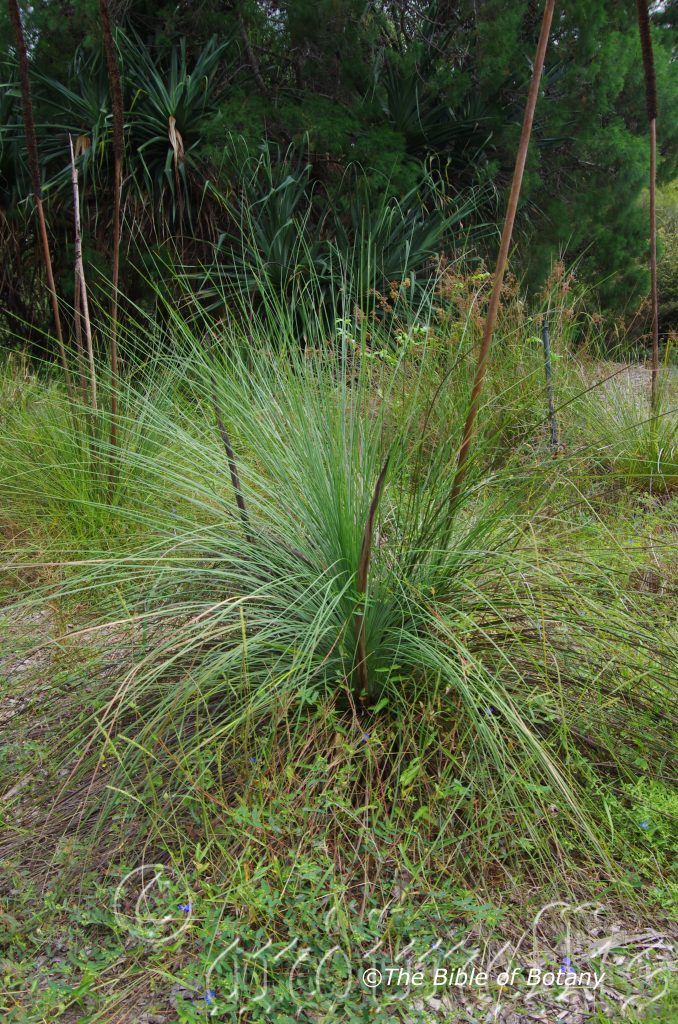
Coffs Harbour Botanic Gardens NSW
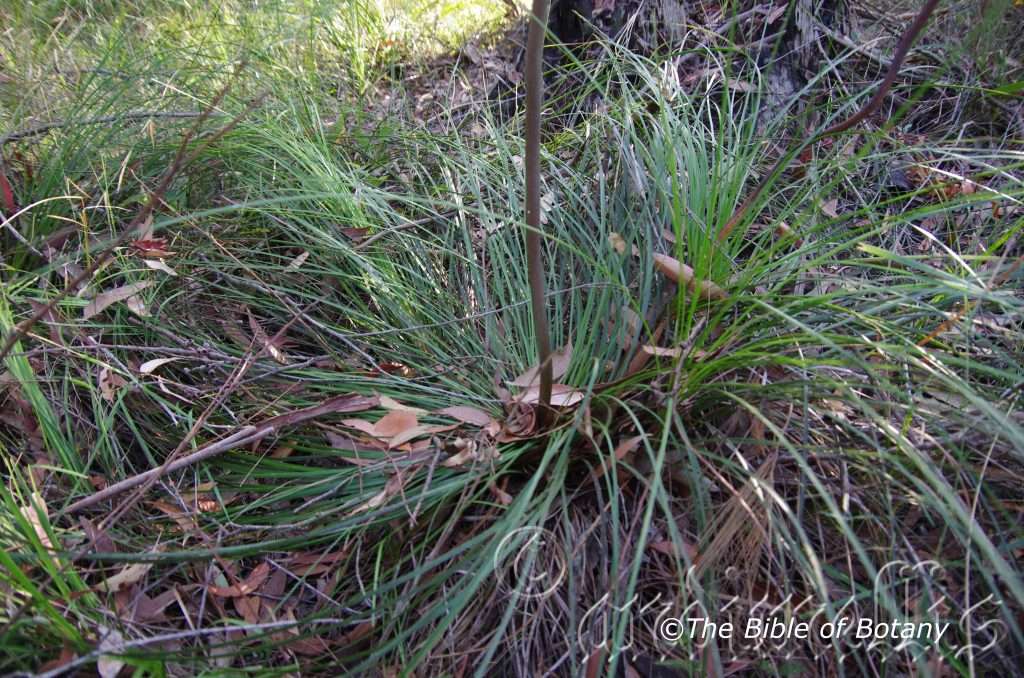
Yuraygir National Park Minnie Water NSW
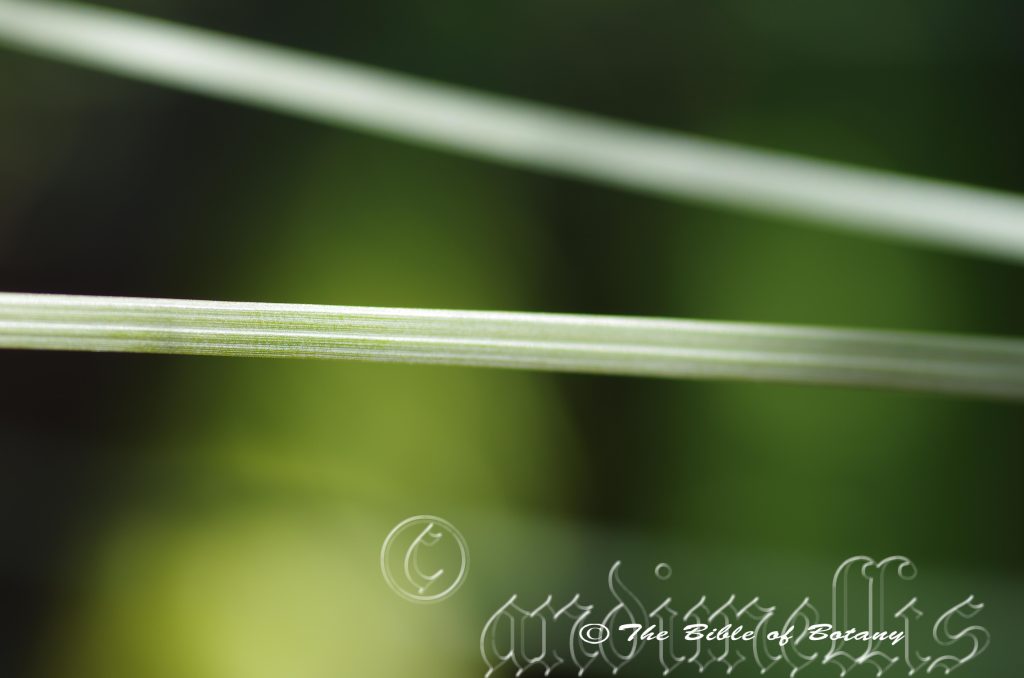
Yuraygir National Park Minnie Water NSW
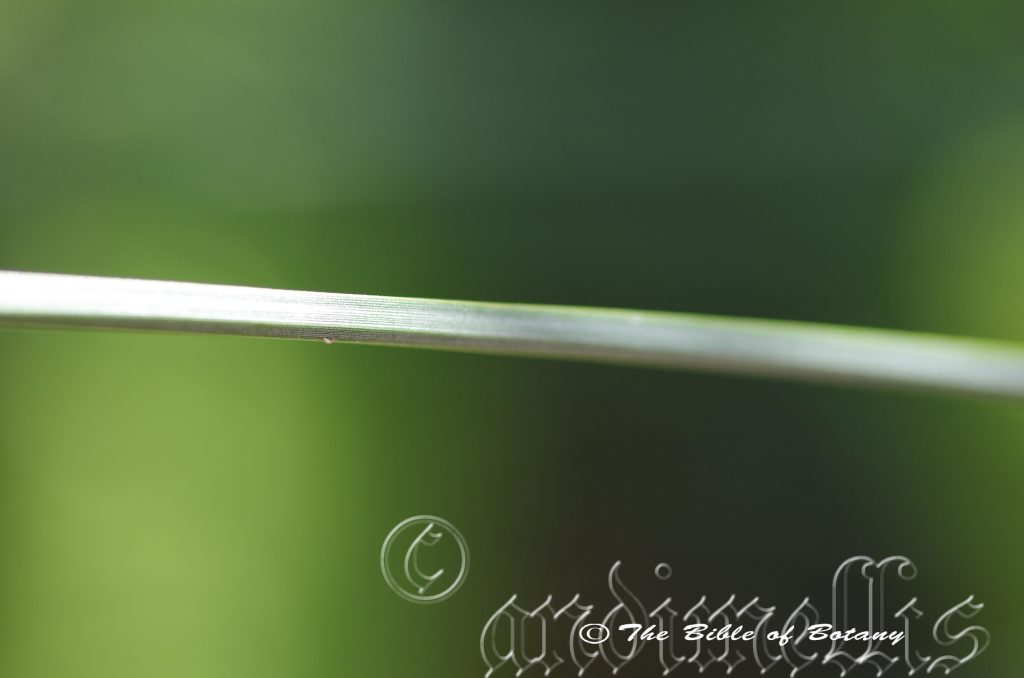
Yuraygir National Park Minnie Water NSW
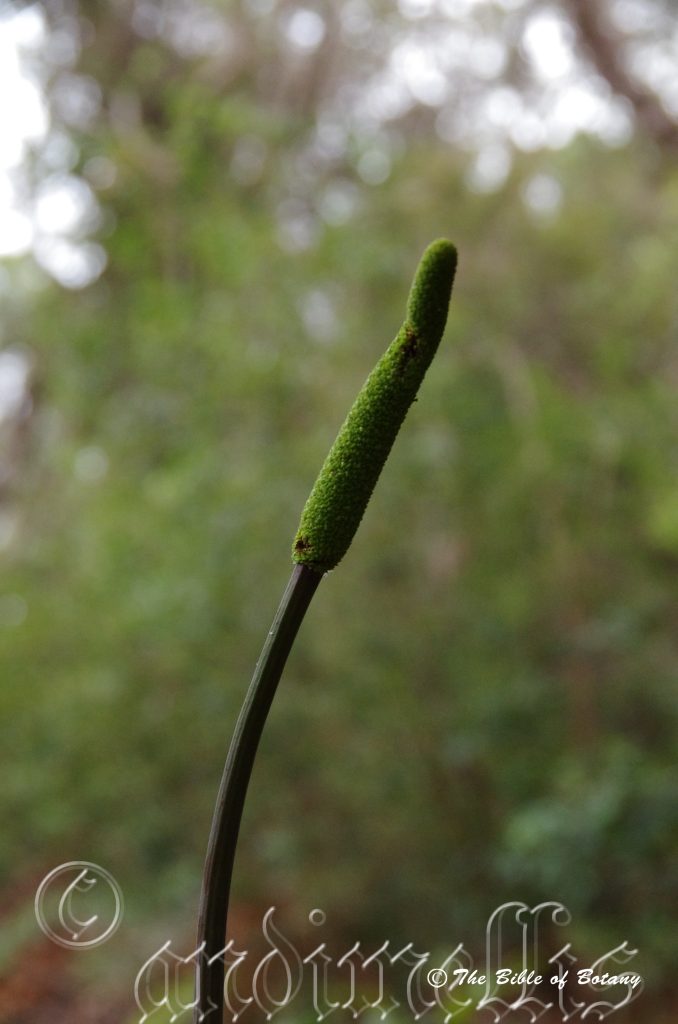
North Laurieton NSW
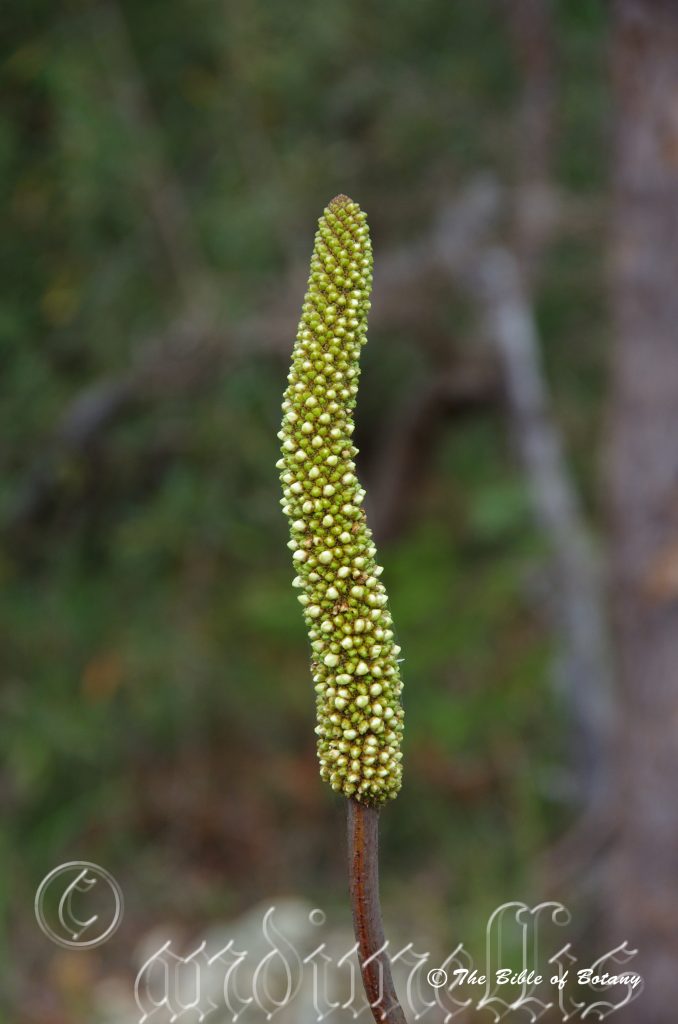
North Laurieton NSW
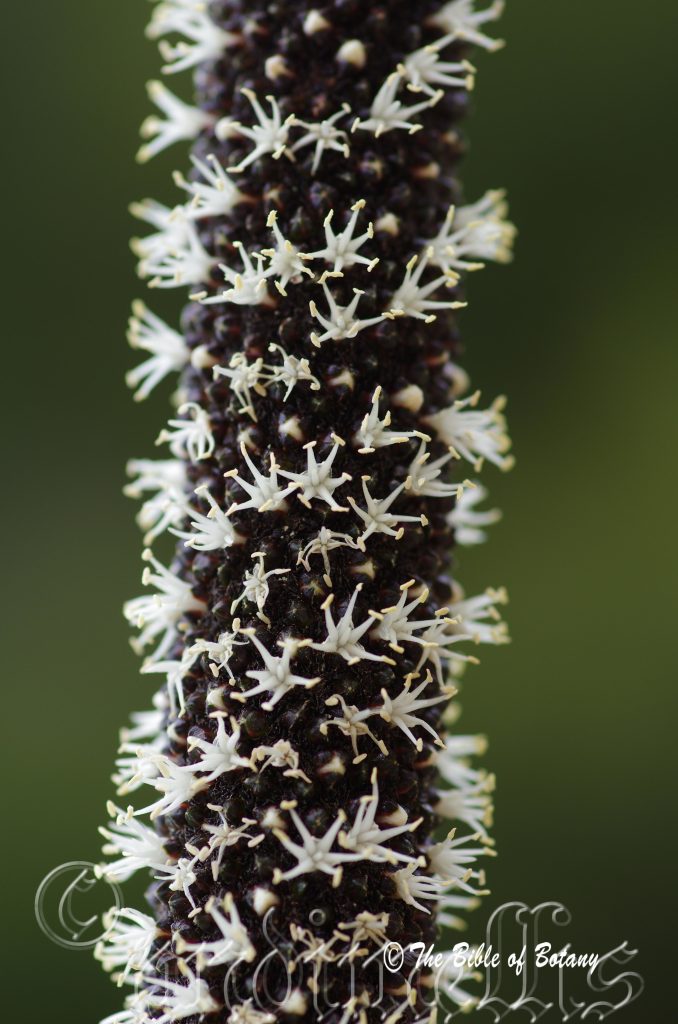
Rosser Botanic gardens Gold Coast Qld.
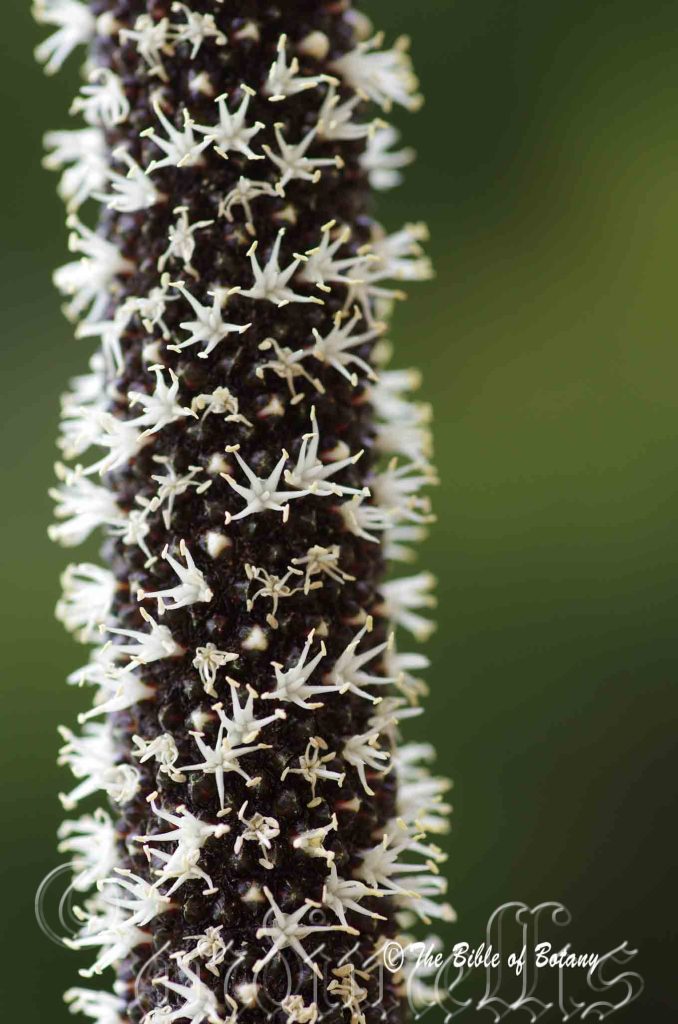
Rosser Botanic gardens Gold Coast Qld.
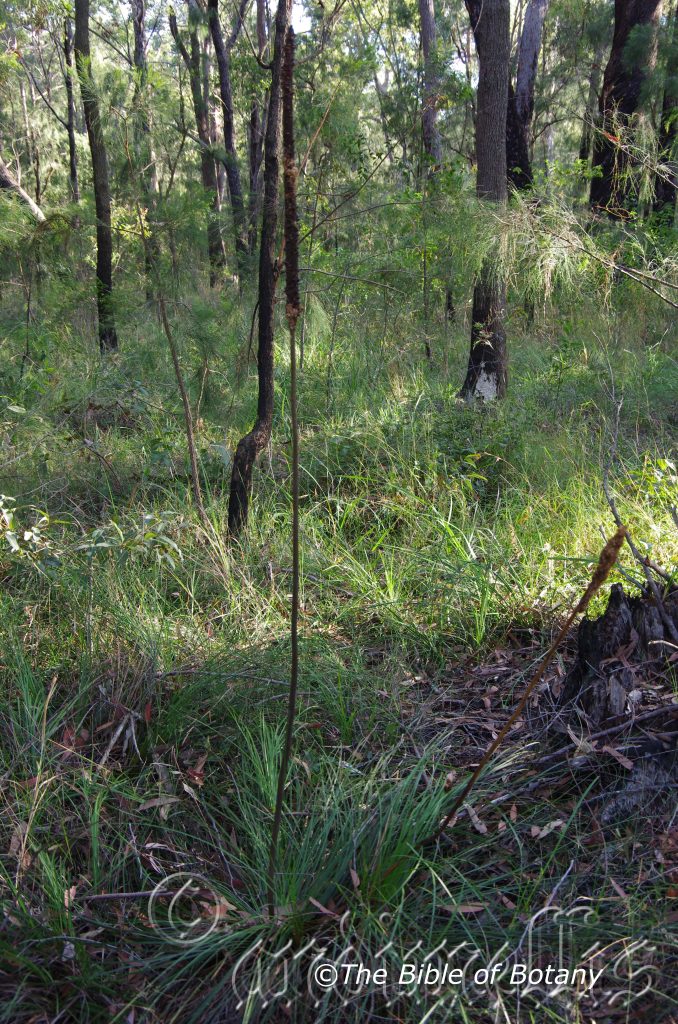
Yuraygir National Park Minnie Water NSW
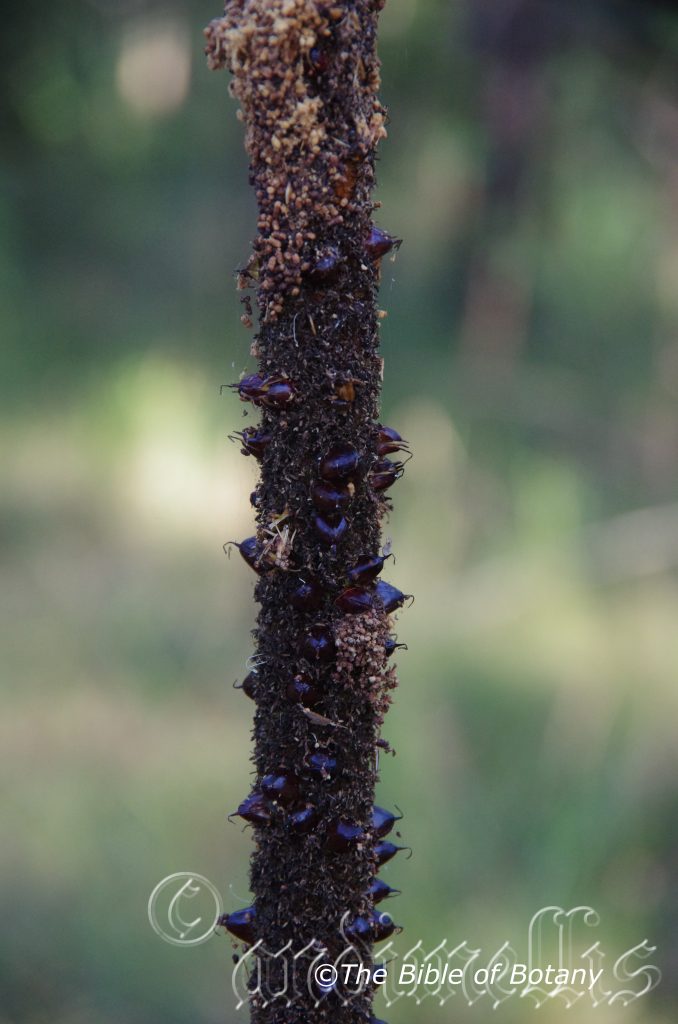
Yuraygir National Park Minnie Water NSW
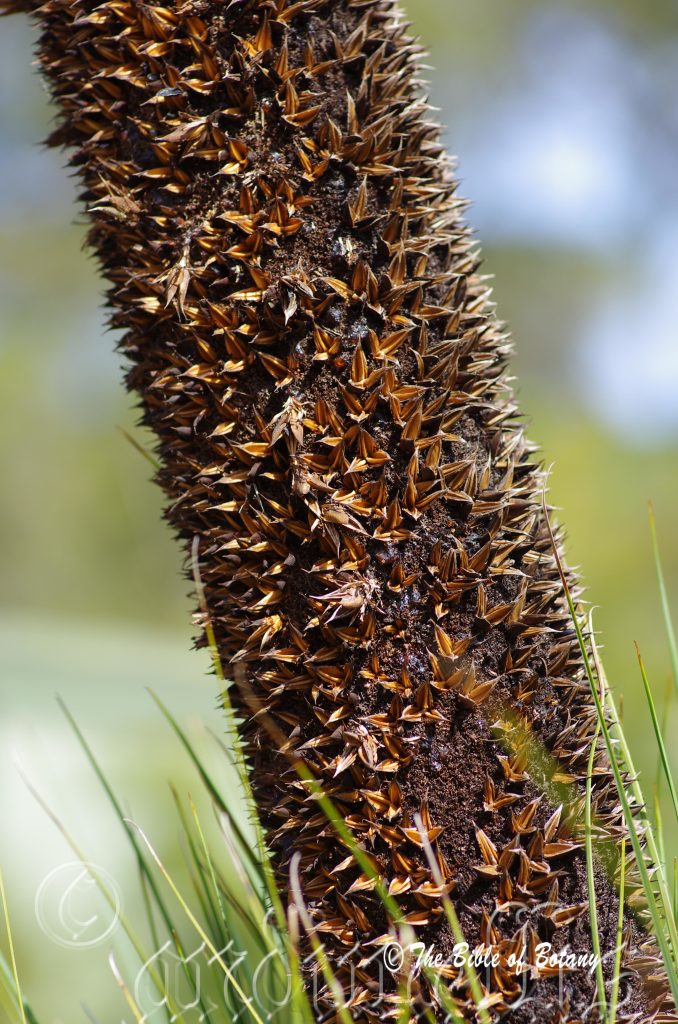
Yuraygir National Park Minnie Water NSW
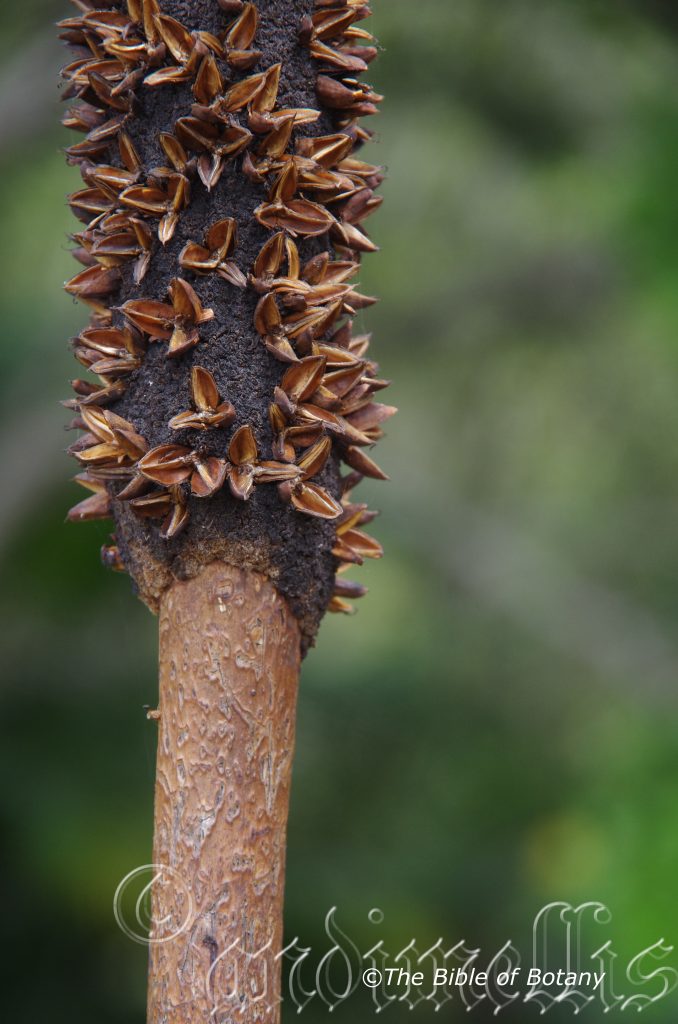
Yuraygir National Park Minnie Water NSW
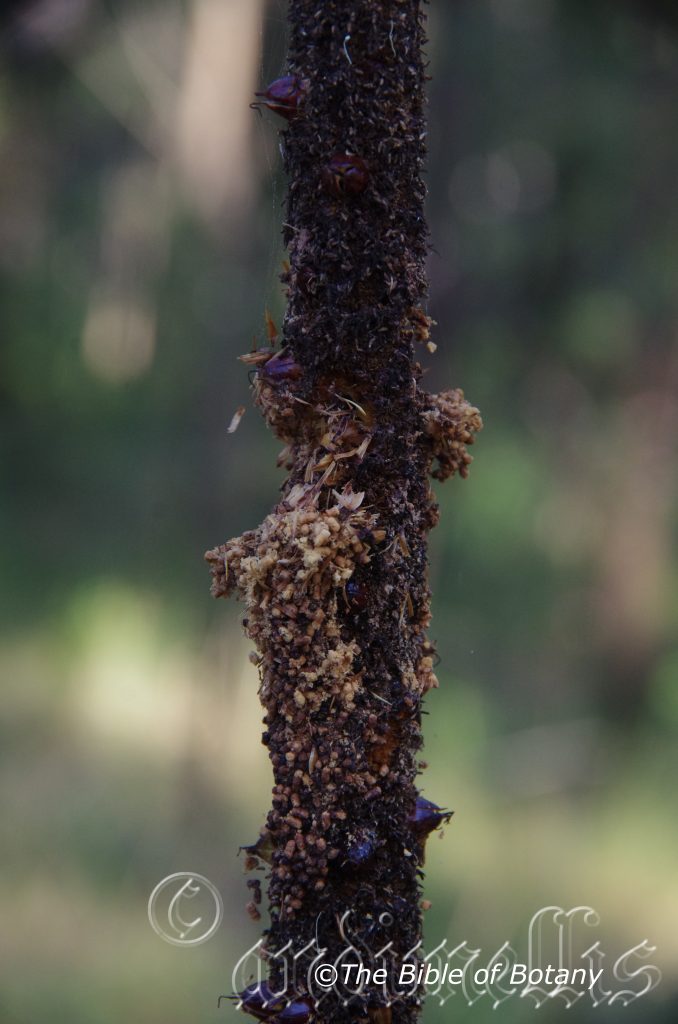
Yuraygir National Park Minnie Water NSW
Xanthorrhoea fulva
Classification:
Unranked: Monocots
Order: Asparagales
Family: Xanthorrhoeaceae
Tribe: Xanthorrhoeoideae
Genus: From Xanthós, which is Ancient Greek for yellow and Rhoea, which is Ancient Greek for flowing or to flow. It refers to the golden-yellow sap, which flows freely from many species and which was used as a glue/resin by local aborigines. This is a spelling error for Xantorrhoea.
Specie: From Fulvidus which is Latin for reddish-yellow or reddish-brown. It refers to the colour of a structure or organ on a plant.
Sub specie:
Common Name:
Distribution:
Xanthorrhoea fulva is found south from the Byfield National Park in central coastal Queensland to Bowen Island in Jervis Bay in central coastal New South Wales. It is mainly found on the coastal plains with the exception of an isolated population near Tenterfield.
https://avh.ala.org.au/occurrences/search?taxa=Xanthorrhoea+fulva#tab_mapView
Habitat Aspect Climate:
Xanthorrhoea fulva prefers light dappled shade to full sun and will be found growing in open woodlands, dry schlerophyll forests, coastal ridges and adjacent to dry or littoral rainforests from near the coast to high in the mountains. The altitude ranges from 5 meters ASL to 850 meters ASL.
The temperatures range from minus 3 degrees in August to 36 degrees in January.
The rainfall ranges from lows of 500mm to 2100mm average per annum.
Soil Requirements:
Xanthorrhoea fulva prefers coarse sands to peaty sandy loams. The soils are usually derived from decomposed granites or accumulated peaty beach sands behind the frontal dunes. The soils pH ranges from 4.55pH to 6pH. It tolerates seasonal waterlogged soils. Non saline soils to moderately saline soils are tolerated.
Height & Spread:
Wild Plants: 2m to 5m by 1m to 3m.
Characteristics:
Xanthorrhoea fulva grows as a trunkless grass tree. The plants branch below the ground surface and appear as 1 to several tufts above the ground.
The tufted, acicular leaves of Xanthorrhoea fulva are depressed to very depressed obtrullate or depressed cuneate in cross section. The leaves measure 400mm to 700mm in length by 2mm to 3.5mm in width and 1mm to 1.5mm in depth. The bases are swollen like petioles that eventually become woody while the apexes are acute. The concolourous laminas are deep blue-green to deep sea-green, semi glossy and glabrous. The leaf margins are entire and arching.
The petioles are rhombic in cross section with wings on the horizontal plains. The petioles are compressed between the leaves and the bases on the trunk measures 8mm to 10mm in length by 1.5mm to 3mm in width. The woody, resinous, orange-fawn bases are tightly appressed along the trunk and measure 20mm to 26mm in length by 5mm to 8mm in width including the 1.2mm to 1.5mm wide papery wings down each side.
The inflorescences of Xanthorrhoea fulva are born on variable length spikes at the end of variable length scapes from the center of the cluster of crown leaves. The blue-green scapes turn deep brown after anthesis is completed and the fruits begin to ripen. The stout scapes measure 20mm to 1400mm in length by 8mm to 20mm in diameter. The inflorescence measures 100mm to 600 in length by 11mm to 30mm in diameter. The obtuse packing bracts are densely covered in pale hirsute hairs. The bracts measure 5mm in length.
The 3 outer tepals have an acute apex with a very short mucronate tip and are densely covered in reddish hirsute hairs. The 3 inner tepals are slightly reflexed with an acute apex and mucronate tip and are glabrous or very sparsely covered in reddish hirsute hairs near the apex.
The 6 exserted stamens of Xanthorrhoea fulva are free for their entire length and measure 4mm to 5mm in length. The flattened filaments taper to the cream oblong anthers.
The white style and stigma are glabrous. The pistil measures 6mm to 8mm in length. The sweetly scented flowers appear from August to October.
Xanthorrhoea fulva’s fruits are trigonous capsules. The rusty-brown capsules are glabrous with an acute apex and measure 2mm to 5mm in length by 4mm to 5mm in width. The single deep brown-black seeds are flattened ellipsoidal and woody.
Confusing Specie:
Xanthorrhoea fulva’s florescence at the end of the scape is 30mm to 50mm of the total length. The scape measures 10mm to 20mm in diameter. The leaves in cross section are irregularly rounded triangular and are blue-green to glaucous.
Xanthorrhoea macronema’s florescence at the end of the scape is about 10mm of the total length. The scape measures 5mm to 10mm in diameter. The leaves in cross section are irregularly rounded depressed cuneate towards the margins and often irregularly concave on the upper surface and are pale green to deep green.
Wildlife:
Xanthorrhoea fulva does not appear to have any predators however the flower spikes are very attractive to many kinds of native insects, especially native bees, nectar feeding birds and insectivorous birds including the larger Yellow Wattle bird Anthochaera paradoxa, Little Wattle Bird Anthochaera chrysoptera, Red Wattle Bird Anthochaera carunculata and Leather head, Philemon corniculatus.
Most smaller honey eaters are attracted to the flowers for the nectar, which includes the Scarlet Honeyeater, Myzomela sanguinolenta and the New Holland Honeyeater, Phylidonyris novaehollandiae.
Cultivation:
Xanthorrhoea fulva is a magnificent specimen plant for small to large gardens where well drained moist sandy soils on flats prevail. In cultivation it grows from 0.5 meters to 2 meters in height by 0.5 meters to 1 meter in diameter when grown in the open.
It grows exceptionally well on lighter soils where deep leaf litter keeps the soil cool and moisture at an even level. It must have full sun or light partial shade to maintain health. If these requirements are met it can cope with temperatures as low as minus 3 degrees and up to 42 degrees. It is drought resistant once established.
It would be best used in a sunny courtyards and foyers, where at least half the day receives full sun and where a large rock, stump, informal frog or fish pond are the only other feature. Next to such features their long acicular leaves emit tremendously powerful scene that never wains in attractiveness or a possession of controlling influence upon all those who pass. I am surprised that it has never been used in commercial entrances and foyers to break the ice and give an intrinsic feeling of success and attention to detail.
It is great in medium to large rockeries as the main feature plant. Here it is best planted groups of 5 or 9 plants to create an open wallum scene. If it is surrounded by slightly taller plants with fine or large foliages that are deep green or pale green then year a round contrast can be created with a strong accent in the center of the bed. Even deep red or orange flowers will not distract from the viewers’ attention from the dominate affect at the center. It gives height, breadth and strength to the bed and this dominance is further accentuated when it is in flower. Its dominance in foliage will stand unchallenged in the plant world.
Propagation:
Seeds: The seeds of Xanthorrhoea fulva can be removed easily from the capsules.
Sow freshly nicked seeds directly into a seed raising mix, keeping them moist not wet. Place the trays in a cool shaded area with 30mm shade cloth in the bush house. When the seedlings are 50mm to 100mm tall, prick them out and plant them into 75mm native tubes using a good organic mix.
As the seedlings roots reach the bottom of the tubes plant them out into their permanent position.
Fertilize using Seaweed, fish emulsion or organic chicken pellets soaked in water and apply the liquid on an alternate basis. Fertilize every 2 months until the plants are well established then on twice annual basis in September or March to maintain better health, vitality and flowering.
Further Comments from Readers:
“Hi reader, it seems you use The Bible of Botany a lot. That’s great as we have great pleasure in bringing it to you! It’s a little awkward for us to ask, but our first aim is to purchase land approximately 1,600 hectares to link several parcels of N.P. into one at The Pinnacles NSW Australia, but we need your help. We’re not salespeople. We’re amateur botanists who have dedicated over 30 years to saving the environment in a practical way. We depend on donations to reach our goal. If you donate just $5, the price of your coffee this Sunday, We can help to keep the planet alive in a real way and continue to bring you regular updates and features on Australian plants all in one Botanical Bible. Any support is greatly appreciated. Thank you.”
In the spirit of reconciliation we acknowledge the Bundjalung, Gumbaynggirr and Yaegl and all aboriginal nations throughout Australia and their connections to land, sea and community. We pay our respect to their Elders past, present and future for the pleasures we have gained.
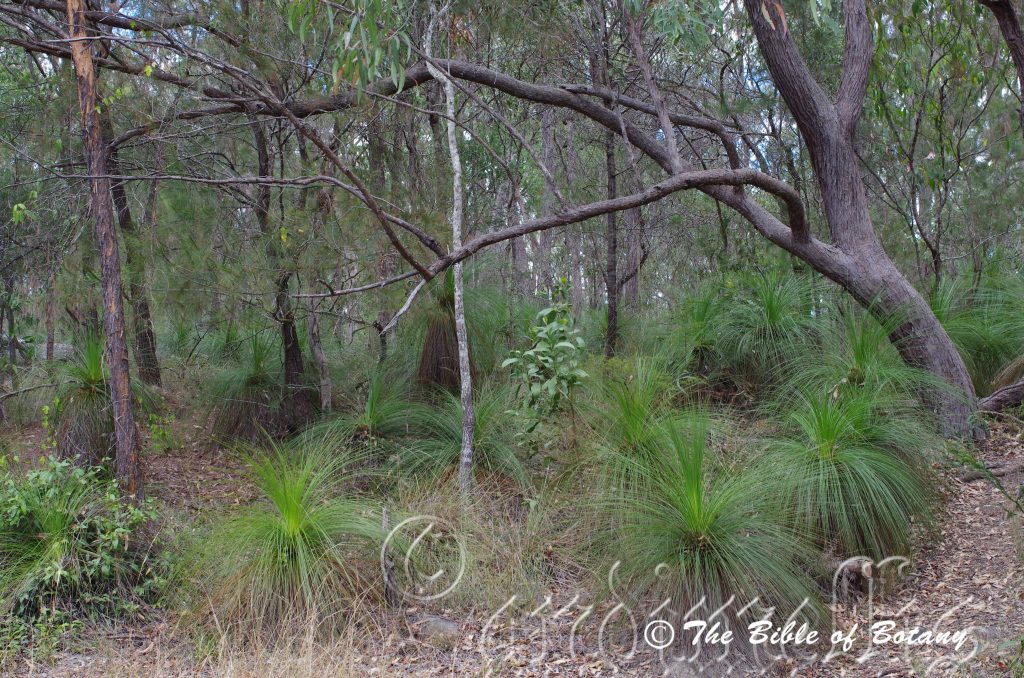
The Pinnacles NSW
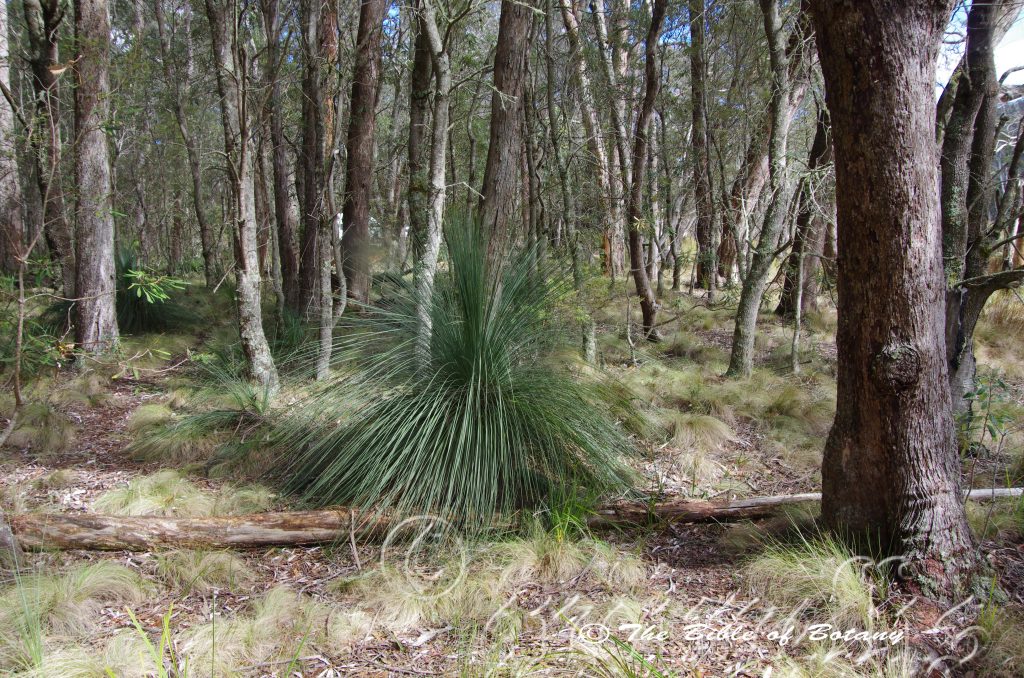
The Pinnacles NSW
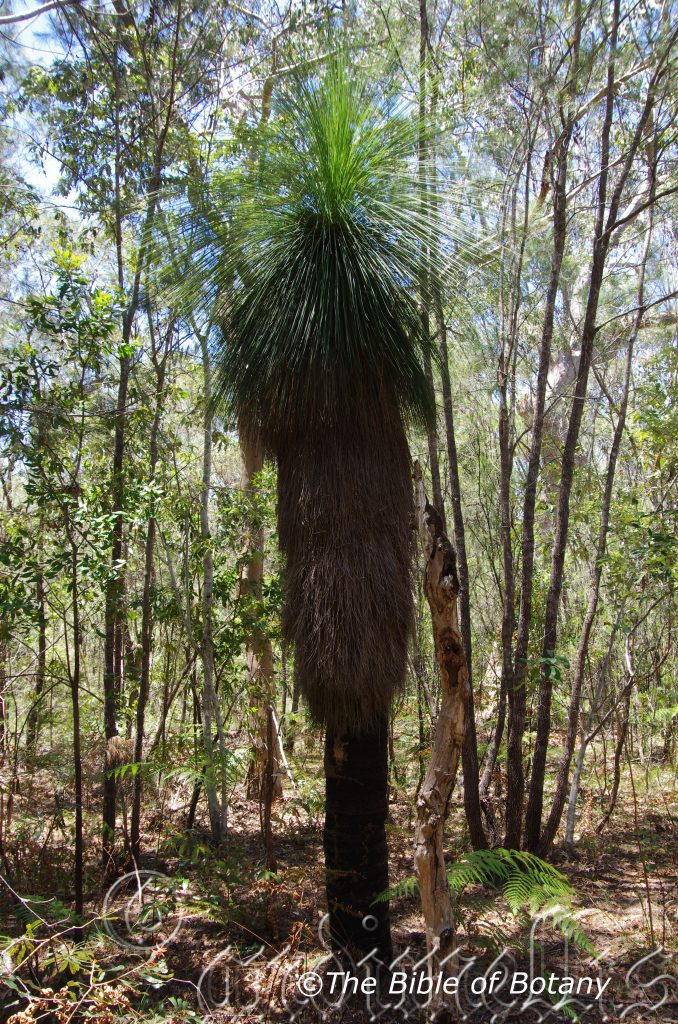
The Pinnacles NSW
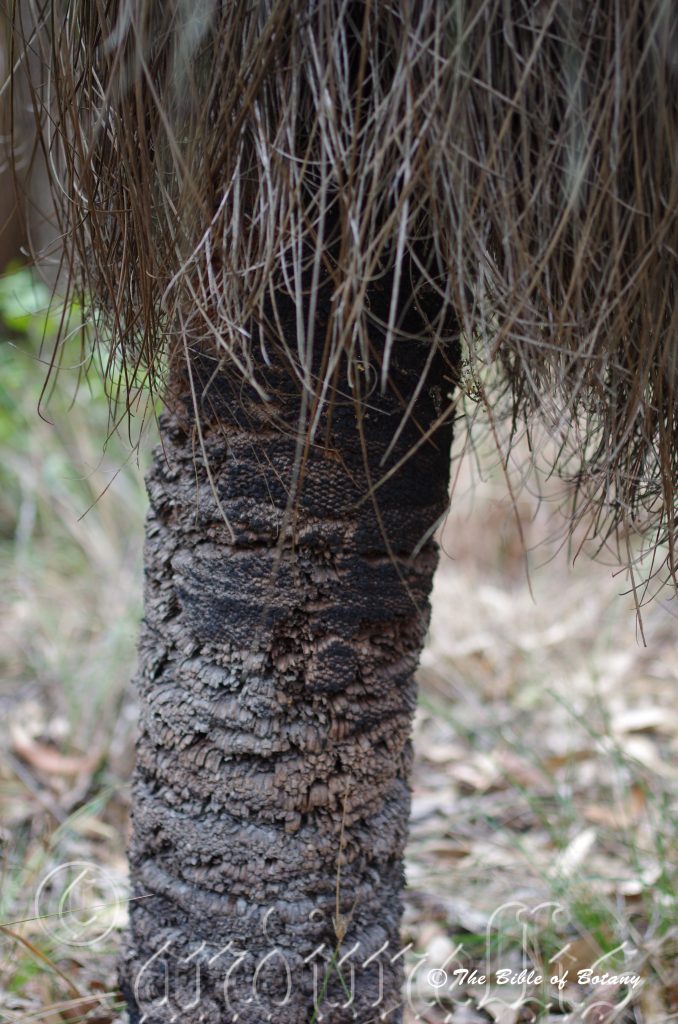
The Pinnacles NSW
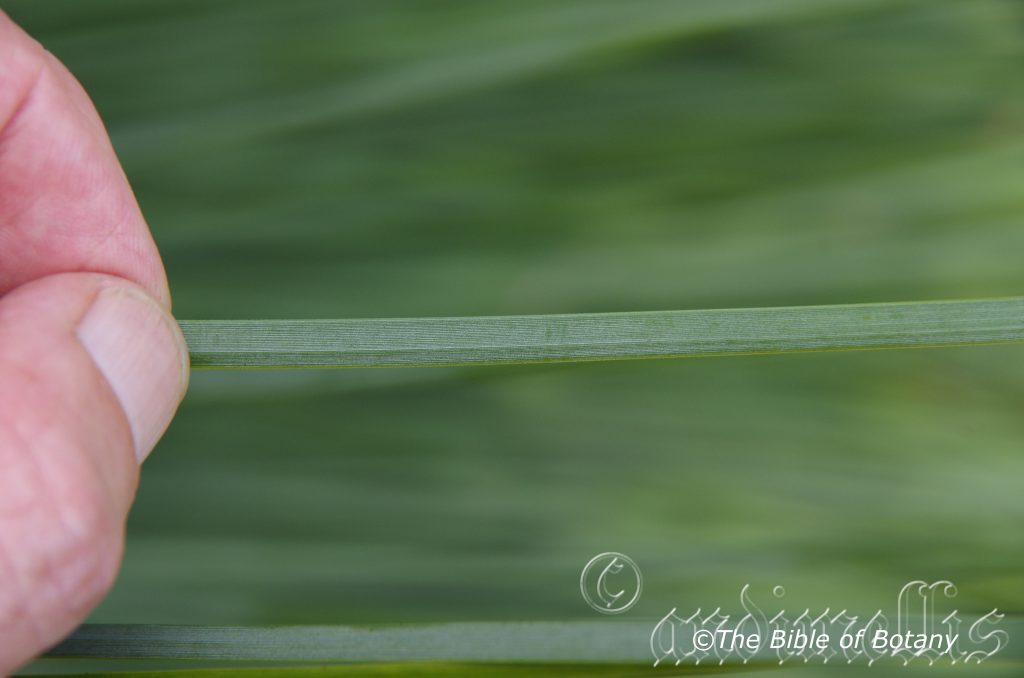
The Pinnacles NSW
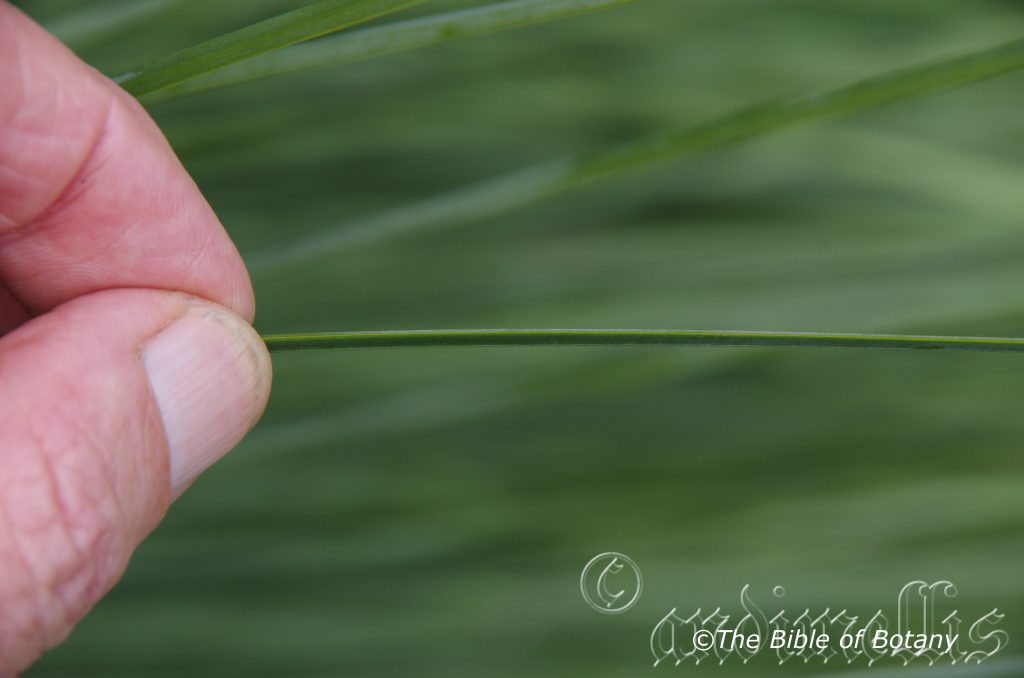
The Pinnacles NSW
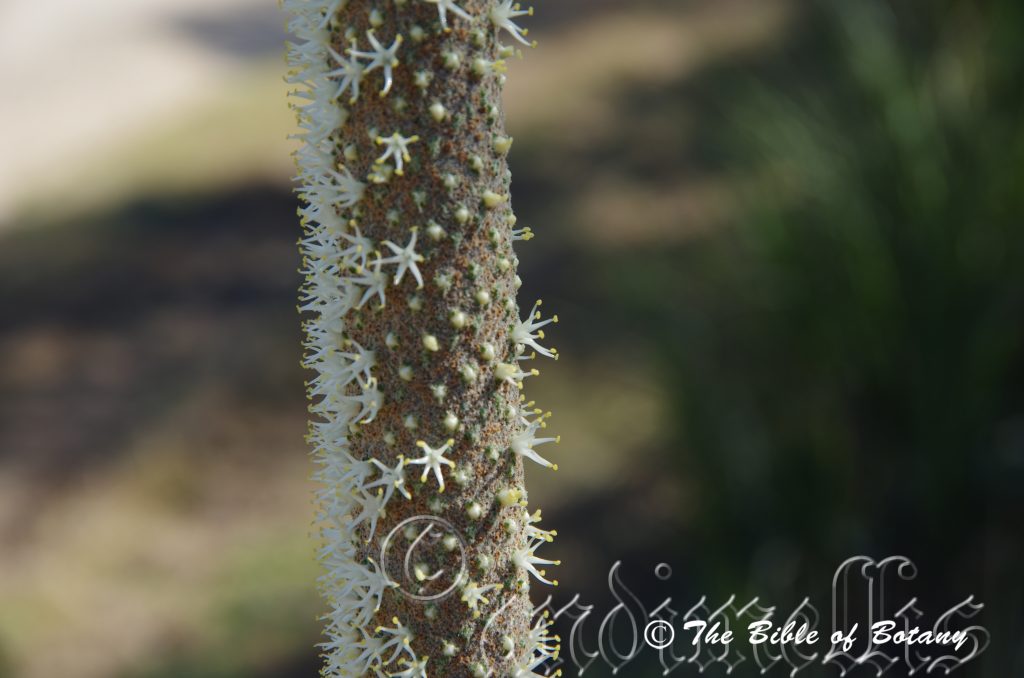
Innes Lake National Park NSW
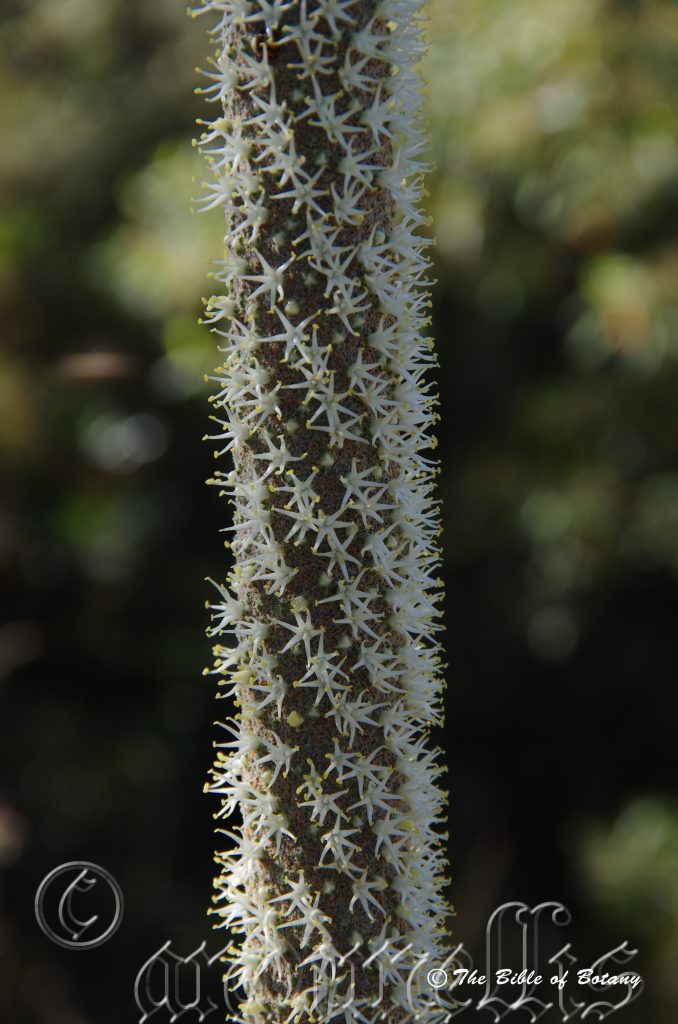
Innes Lake National Park NSW
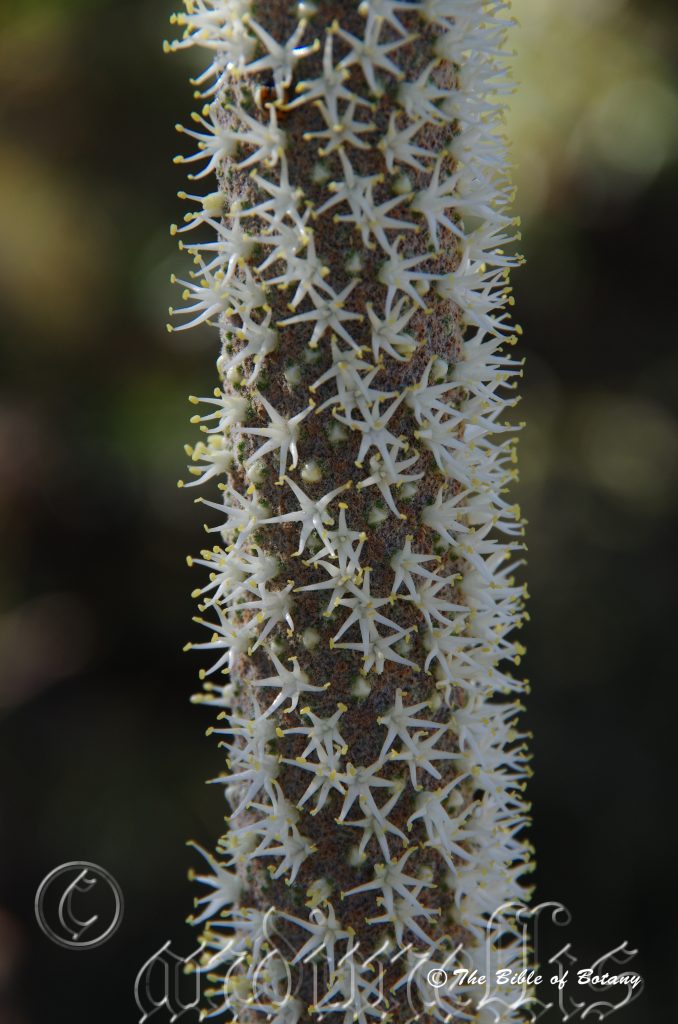
Innes Lake National Park NSW
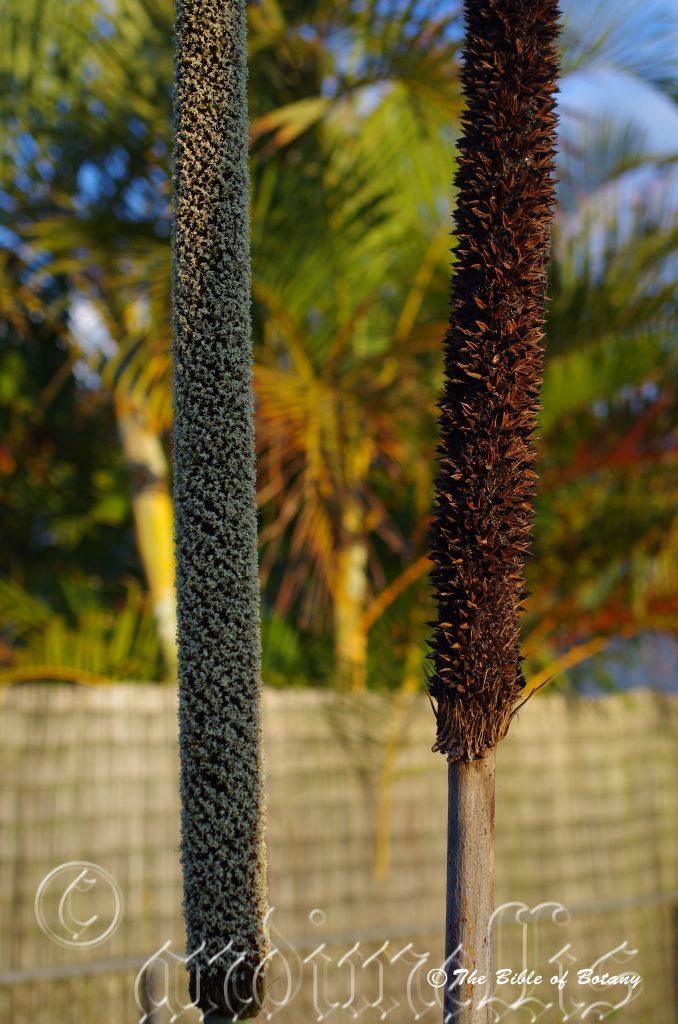
Everton Park Qld.
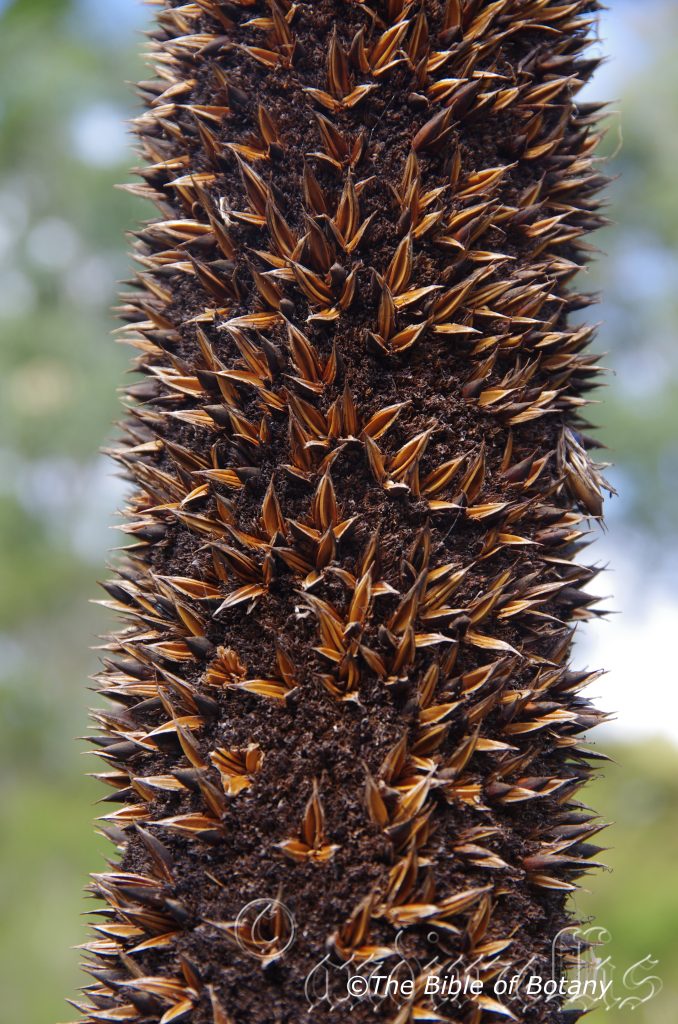
Everton Park Qld.
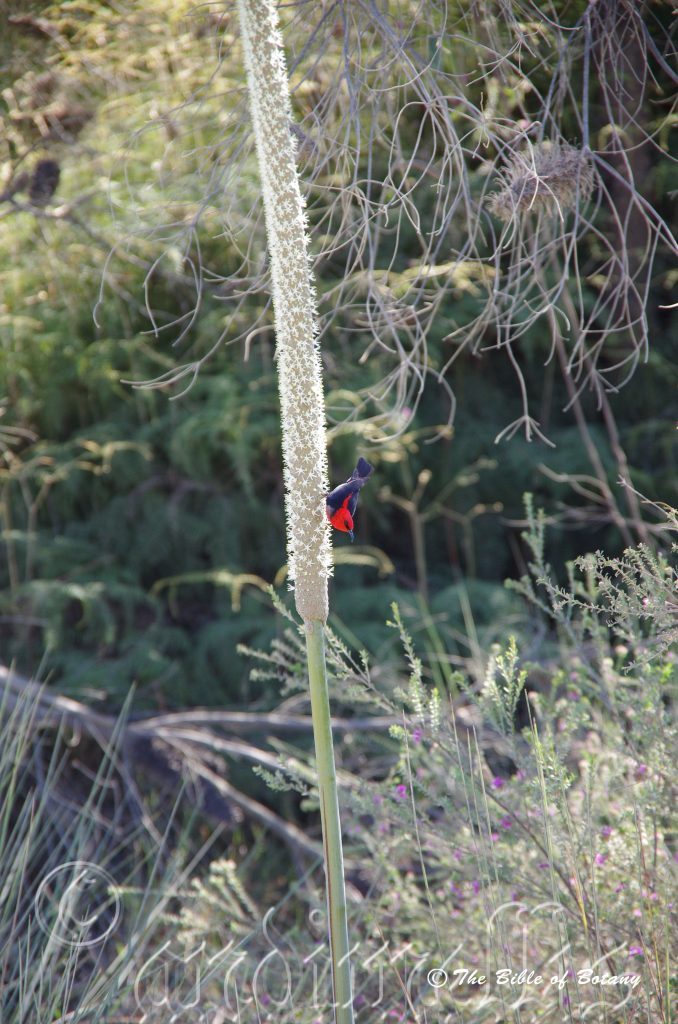
Red Head Honeyeater Myzomela erythrocephala Innes Lake National Park NSW
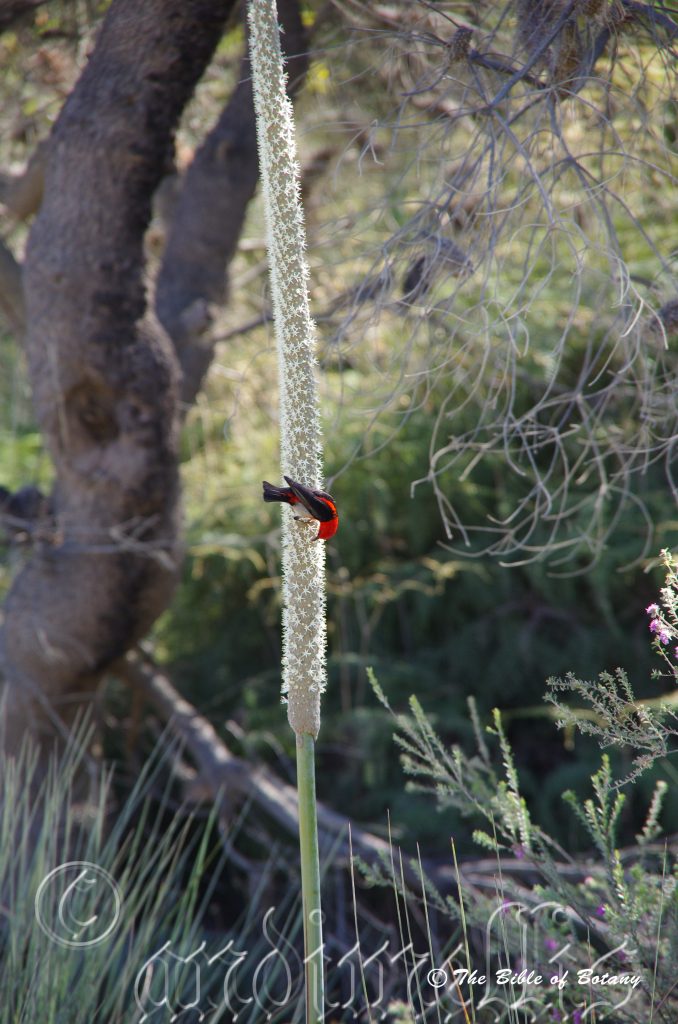
Red Head Honeyeater Myzomela erythrocephala Innes Lake National Park NSW
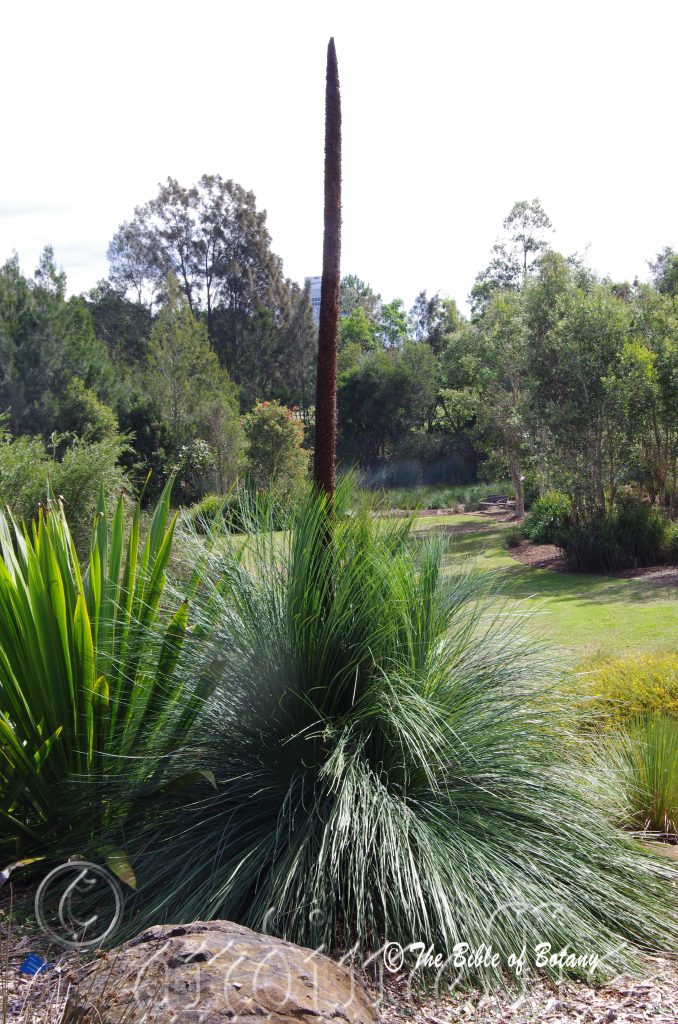
Rosser Botanic Gardens Gold Coast Qld.
Xanthorrhoea glauca
Classification:
Unranked: Monocots
Order: Asparagales
Family: Xanthorrhoeaceae
Tribe: Xanthorrhoeoideae
Genus: From Xanthós, which is Ancient Greek for yellow and Rhoea, which is Ancient Greek for flowing or to flow. It refers to the golden-yellow sap, which flows freely from many species and which was used as a glue/resin by local aborigines. This is a spelling error for Xantorrhoea.
Specie: From Glaucous which is Latin for a filmy blueish or greyish white powdery covering. It refers to the stems leaves or fruits, which have a blueish to greyish powdered layer over the surface.
Sub specie: Xanthorrhoea glauca subsp. angustifolia. From Angusta, which is Latin for narrow and Folium, which is Latin for foliage. It usually refers to leaves or at times the calyx lobes or petals, which are narrower than other species in the genus.
Sub specie: Xanthorrhoea glauca subsp. glauca. From Glaucous which is Latin for a filmy blueish or greyish white powdery covering. It refers to the stems leaves or fruits, which have a blueish to greyish powdered layer over the surface.
Common Name: Blue Grass Tree.
The Aboriginal Gumbaynggirr clan know it as garraan gurr.
Distribution:
Xanthorrhoea glauca subsp.glauca is found south from Charleville in south western Queensland to Whroo Forest in north Victoria. It mainly occurs on and west of the Great Dividing Range with populations to the coast in the Clarence Valley.
Xanthorrhoea glauca subsp. angustifolia is found south of Mount Wheeler in central coastal Queensland to Newcastle in central coastal New South Wales. It mainly occurs on and east of the Great Dividing Range to the coast.
https://avh.ala.org.au/occurrences/search?taxa=Xanthorrhoea+glauca#tab_mapView
Habitat Aspect Climate:
Xanthorrhoea glauca prefers light dappled shade to full sun. It grows in open woodlands, dry schlerophyll forests, coastal ridges and adjacent to dry or littoral rainforests. The altitude ranges from 5 meters ASL to 1150 meters ASL.
The temperatures range from minus 5 degrees in August to 36 degrees in January.
The rainfall ranges from lows of 500mm to 2000mm average per annum.
Soil Requirements:
Xanthorrhoea glauca prefer better quality sandy loams through to medium clays. The soils are usually derived from decomposed, brown basalts, black basalts, metamorphic rocks, including serpentines sandstone or accumulated sands behind the frontal dunes in the case of Xanthorrhoea glauca subsp.glauca while Xanthorrhoea glauca subsp. angustifolia will be found growing on rocky ridges and slopes from decomposed sandstone or accumulated desert sands often with limestone trachyte. The soils pH ranges from 5pH to 8.5pH. It does not tolerate waterlogged soils. Non saline soils to moderately saline soils are tolerated.
Height & Spread:
Wild Plants: 2m to 5m by 1m to 3m.
Characteristics:
Xanthorrhoea glauca grows as a tall grass tree with a straight, mid grey trunk except where fires have blackened been through the bush. The trunks are rough with the layers of rhombic scales which remain after the leaves have been discarded. The trunks measure 140mm to 200mm in diameter and are swollen at the base on very old plants. The branches if present are similar to the main trunk and number 2 to 5.The dead leaves are divaricate but pendulant below the growing crown.
The tufted, acicular leaves of Xanthorrhoea glauca subsp.glauca
measure 650mm to 900mm in length by 1.3mm to 2.8mm in width and 0.9mm to 1.6mm in depth. The leaves are broadly rhombic in cross section to being almost quadrate. The bases are swollen like petioles that eventually become woody while the apexes are acute. The concolourous laminas are deep sea-green to deep glaucous sea-green, semi glossy and glabrous. The leaf margins are entire and arching.
The petioles are rhombic in cross section with wings on the horizontal plains. The petioles are compressed between the leaves and the bases on the trunk measures 8mm to 10mm in length by 1.5mm to 3mm in width. The woody, resinous, orange-fawn bases are tightly compressed along the trunk and measure 20mm to 26mm in length by 5mm to 8mm in width including the 1.2mm to 1.5mm wide papery wings down each side.
The clustered, acicular leaves of Xanthorrhoea glauca subsp. angustifolia measure 650mm to 1000mm in length by 3mm to 4mm in width and 1mm to 2.6mm in depth. The leaves are narrowly rhombic in cross section. The bases are swollen like petioles that eventually become woody while the apexes are acute. The concolourous laminas are deep sea-green to deep grey-green, semi glossy and glabrous. The leaf margins are entire and arching.
The petioles are rhombic in cross section with wings on the horizontal plains. The petioles are compressed between the leaves and the bases on the trunk measures 8mm to 10mm in length by 3mm to 4mm in width. The woody, resinous, orange-fawn bases are tightly compressed along the trunk and measure 20mm to 28mm in length by 6mm to 9mm in width including the 1.2mm to 1.5mm wide papery wings down each side.
The inflorescences of Xanthorrhoea glauca subsp. glauca are born on a long spike at the end of a long scape from the center of the cluster of crown leaves. The grass-green scapes turn deep burgundy-black after the anthesis of the first flowers. They taper very slightly from the base to spike. The scapes measure 450mm to 900mm in length by 27mm to 46mm in diameter. The flowering portion of the spikes measure 1200mm to 2500 in length by 40mm to 60mm in diameter.
The deep rusty–brown lobes of the bracts which are clustered along the full length of the spike are acute or triangular, erect, glabrous, have a few rusty-brown hirtellus hairs near the base while the margins are glabrous. They measure 1.4mm to 1.6mm in length. The 6 tepals are white, turn creamy white after anthesis. The 3 outer tepals are rostrate, triangular to narrowly triangular and measure 2mm to 3mm in length while the rostrum measures 0.5mm in length. The 3 inner tepals are narrowly triangular to linear and measure 5mm to 6mm in length.
The inflorescences of Xanthorrhoea glauca subsp.angustifolia are born on a long spike from the center of the cluster of crown leaves. The grass-green scapes turn deep burgundy-black after the anthesis of the first flowers. They taper very slightly from the base to spike. The scapes measure 500mm to 1000mm in length by 18mm to 40mm in diameter. The flowering portion of the spikes measure 1000mm to 1600 in length by 40mm to 50mm in diameter.
The deep rusty–brown lobes of the cluster bracts are acute, erect, glabrous, have a few rusty-brown hirtellous hairs along the margins and measure 1.4mm to 1.6mm in length. The 6 tepals are white, turn creamy white after anthesis. The 3 outer tepals are rostrate, triangular and measure 2mm to 3mm in length while the rostrum measures 0.5mm in length. The 3 inner tepals are narrowly triangular to linear with a slender proboscis and measure 5mm to 6mm in length.
The 6 exserted stamens of Xanthorrhoea glauca sub sp.glauca’s and Xanthorrhoea glauca subsp. angustifolia’s are free for their entire length and measure 5mm to 7mm in length. The flattened filaments taper to the cream oblong anthers.
The white style and stigma are glabrous while the ovary is pale creamy green. The pistil measures 6mm to 8mm in length. Xanthorrhoea glauca sub sp.glauca’s sweetly scented flowers appear from June to October while Xanthorrhoea glauca subsp. angustifolia’s sweetly scented flowers appear from September to December.
Xanthorrhoea glauca’s fruits are trigonous capsules. The rusty-brown capsules are glabrous with an acute apex and measure 2mm to 5mm in length by 4mm to 5mm in width. The single deep brown-black seeds are flattened ellipsoidal and woody.
Wildlife:
Xanthorrhoea glauca’s do not appear to have any predators however the flower spikes are very attractive to many kinds of native insects, especially native bees, nectar feeding birds and insectivorous birds including the larger Yellow Wattle bird, (Anthochaera paradoxa) Little Wattle Bird, (Anthochaera chrysoptera) Red Wattle Bird (Anthochaera carunculata) and Leather head. (Philemon corniculatus)
Cultivation:
Xanthorrhoea glauca is a magnificent specimen plant for medium to large gardens where well drained soils on slopes prevail. In cultivation it will grow from 4 meters to 5 meters in height by 1.5 meters to 3 meters in diameter when grown in the open.
It grows exceptionally well on lighter soils where deep leaf litter keeps the soil cool and moisture at an even level. It must have full sun If these requirements are met it can cope with temperatures as low as minus 3 degrees and up to 42 degrees. It is drought resistant once established.
Xanthorrhoea glauca would make excellent accent trees in front of low set commercial, industrial sheds and school gardens where it will break up hard rigid architectural lines and give warmth and breadth to a building. In front of high rise buildings it give balance especially where it could be grown in irregular patterns meandering to the entry doors.
Try using it in a sunny courtyard or in a foyer, where at least half the day receives full sun and where a large rock, stump, informal frog or fish pond are the only other feature. Next to such features their long acicular leaves emit tremendously powerful scene that never wains in attractiveness or a possession of controlling influence upon all those who pass. I am surprised that it has never been used in commercial entrances and foyers to break the ice and give an intrinsic feeling of success and attention to detail.
It is great in medium to large rockeries as the main feature plant. Here it is best planted groups of 5 or 9 plants to create an open wallum scene. If it is surrounded by slightly taller plants with fine or large foliages that are deep green or pale green then year a round contrast can be created with a strong accent in the center of the bed. Even deep red or orange flowers will not distract from the viewers’ attention from the dominate affect at the center. It gives height, breadth and strength to the bed and this dominance is further accentuated when it is in flower. Its dominance in foliage will stand unchallenged in the plant world.
Xanthorrhoea glauca make brilliant displays in garden beds when simply planted beneath. Especially where Hibbertia scandens or Scaevola aemulum are used as the ground.
Propagation:
Seeds: Seeds of Xanthorrhoea glauca can be removed easily from the fruits.
Sow freshly treated seeds directly into a seed raising mix, keeping them moist not wet. Do not over water as the seeds will rot off before germination takes place. Place the trays in a cool shaded area with 50mm shade cloth in the bush house. Seeds are often slow to germinate and definately slow to establish themselves.
When the seedlings are 50mm to 100mm tall, prick them out and plant them into 75mm native tubes using a good organic mix.
As the seedlings roots reach the bottom of the tubes plant them out into their permanent position. Do not delay.
Fertilize using Seaweed, fish emulsion or organic chicken pellets soaked in water and apply the liquid on an alternate basis. Fertilize every 2 months until the plants are well established then on twice annual basis in September or March to maintain better health, vitality and flowering.
Further Comments from Readers:
“Hi reader, it seems you use The Bible of Botany a lot. That’s great as we have great pleasure in bringing it to you! It’s a little awkward for us to ask, but our first aim is to purchase land approximately 1,600 hectares to link several parcels of N.P. into one at The Pinnacles NSW Australia, but we need your help. We’re not salespeople. We’re amateur botanists who have dedicated over 30 years to saving the environment in a practical way. We depend on donations to reach our goal. If you donate just $5, the price of your coffee this Sunday, We can help to keep the planet alive in a real way and continue to bring you regular updates and features on Australian plants all in one Botanical Bible. Any support is greatly appreciated. Thank you.”
In the spirit of reconciliation we acknowledge the Bundjalung, Gumbaynggirr and Yaegl and all aboriginal nations throughout Australia and their connections to land, sea and community. We pay our respect to their Elders past, present and future for the pleasures we have gained.
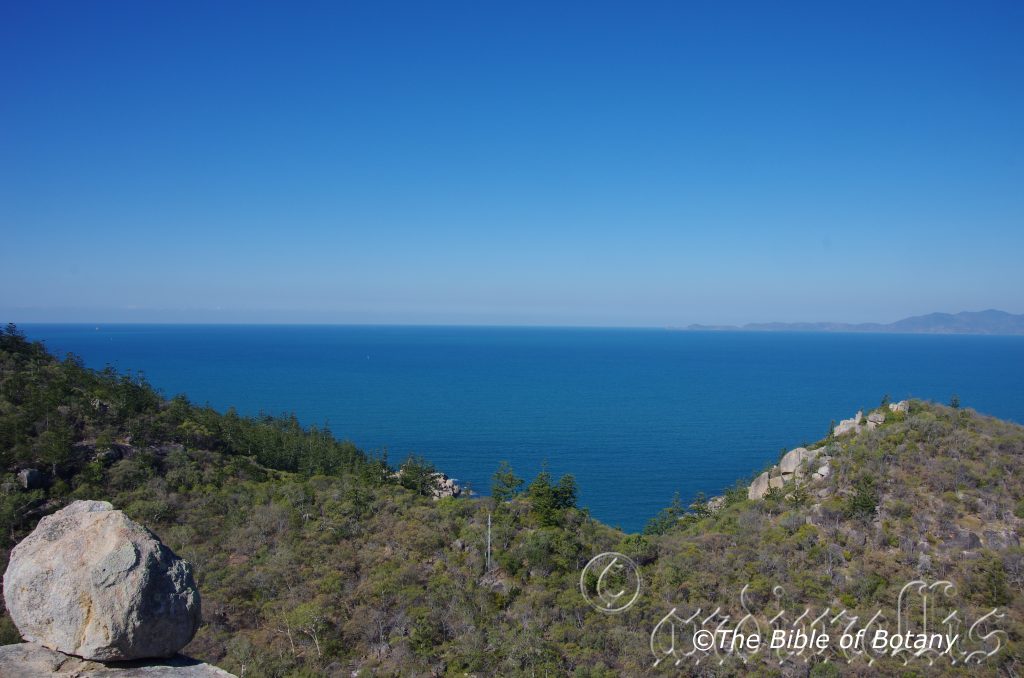
Magnetic Island Qld.
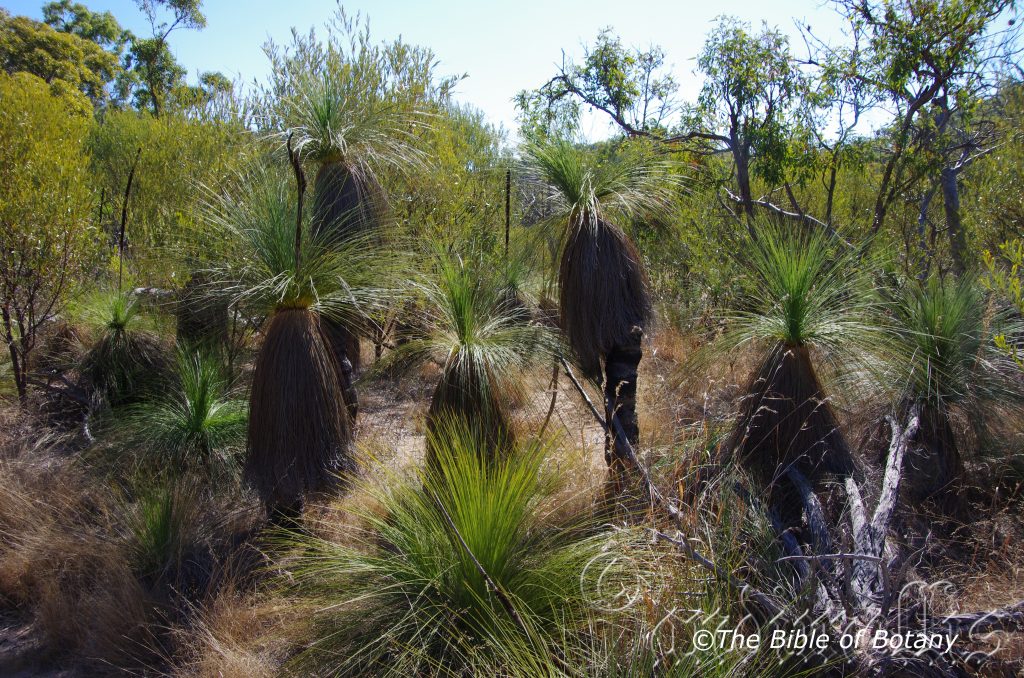
Sherwood Forest Nature Reserve NSW
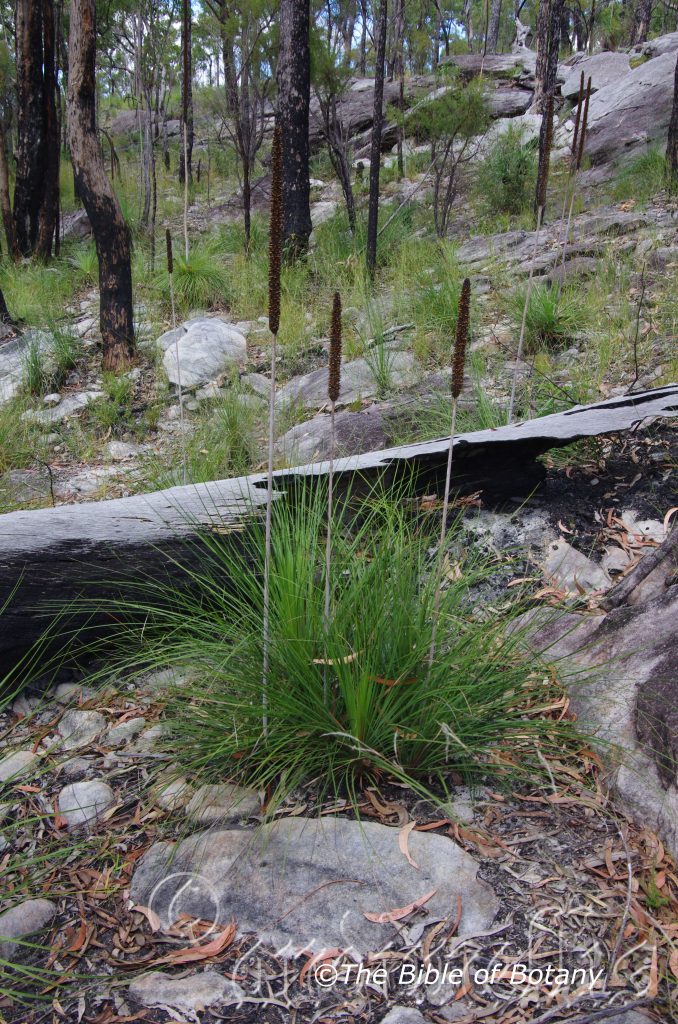
Toohey Forest Qld.
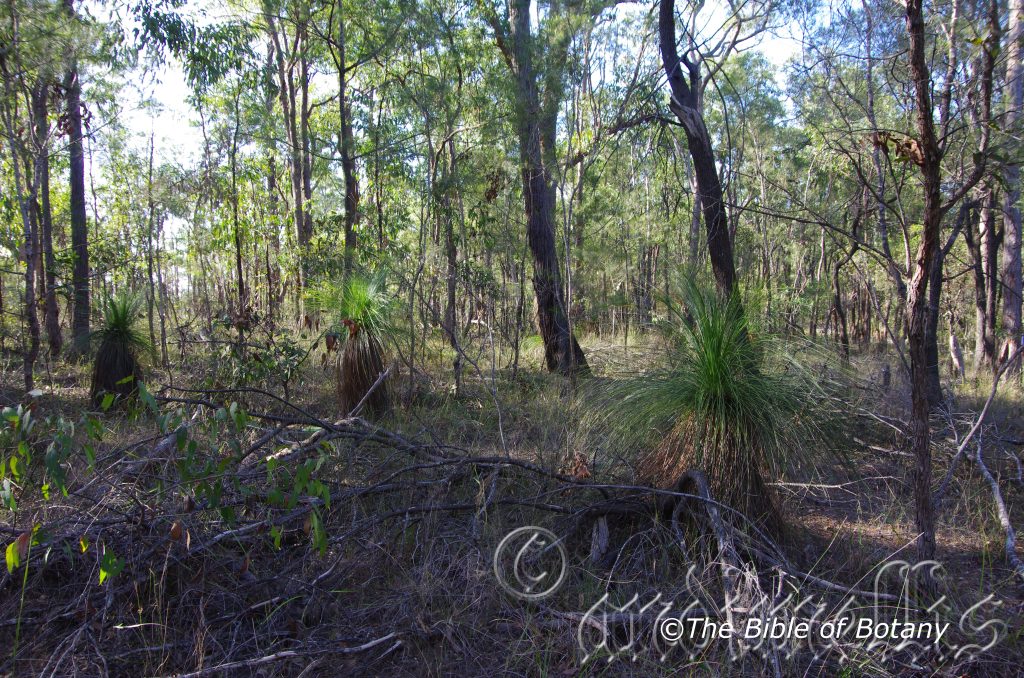
Magnetic Island Qld.
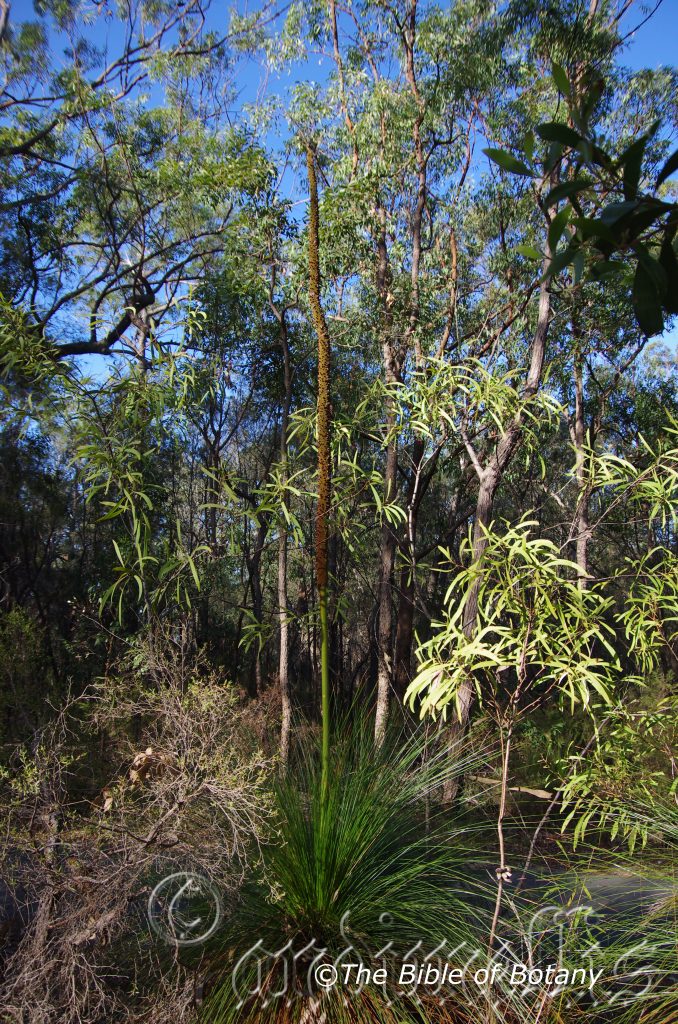
Sherwood Forest Nature Reserve NSW
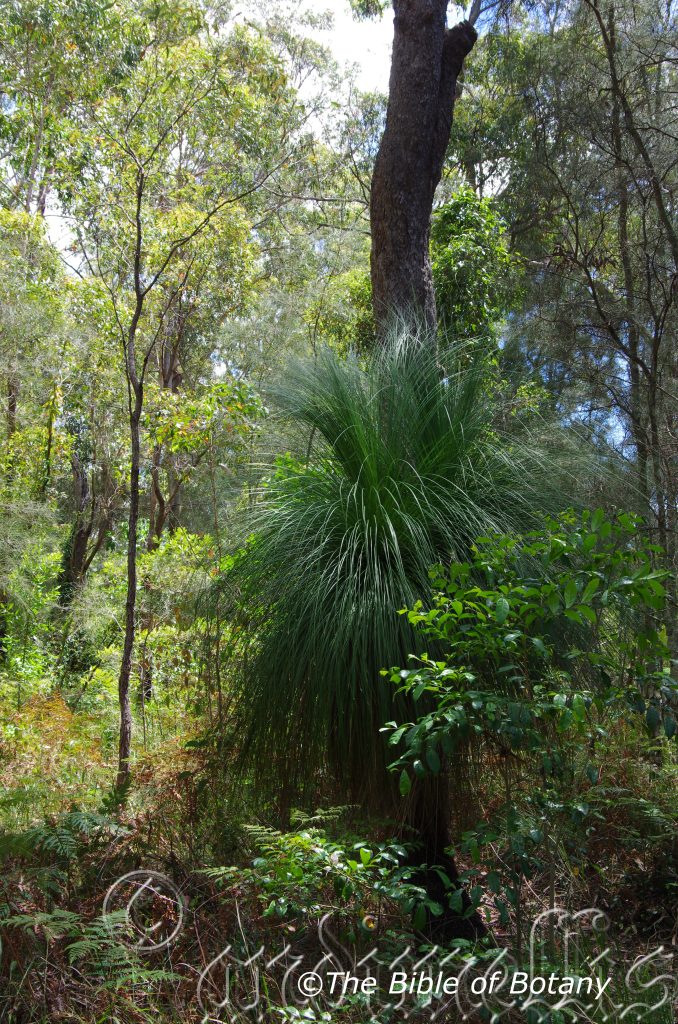
Magnetic Island Qld.
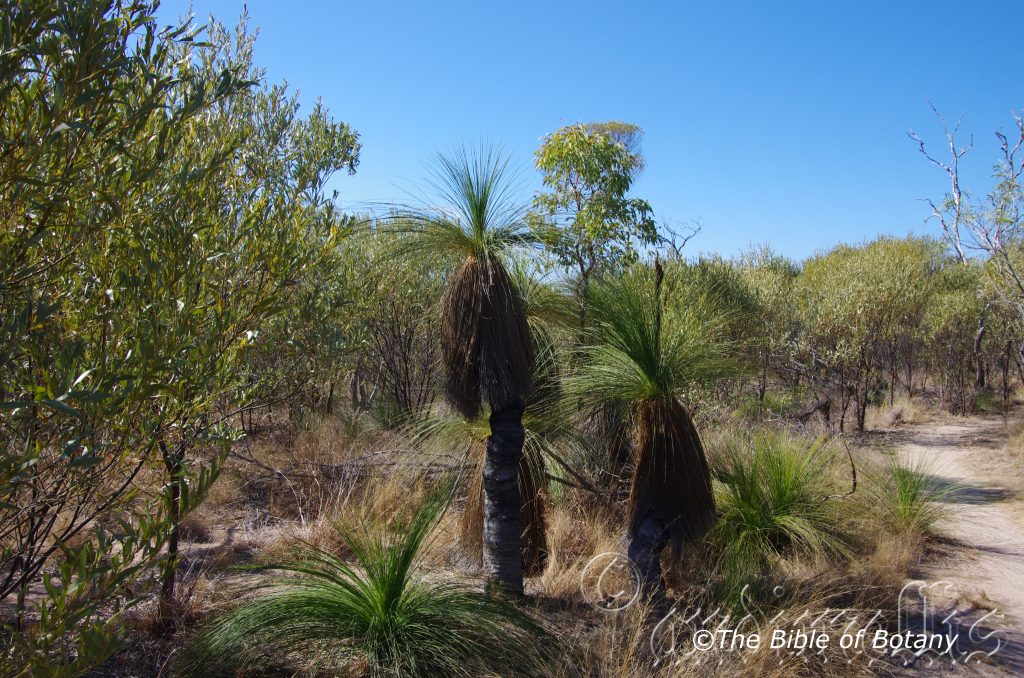
Magnetic Island Qld.
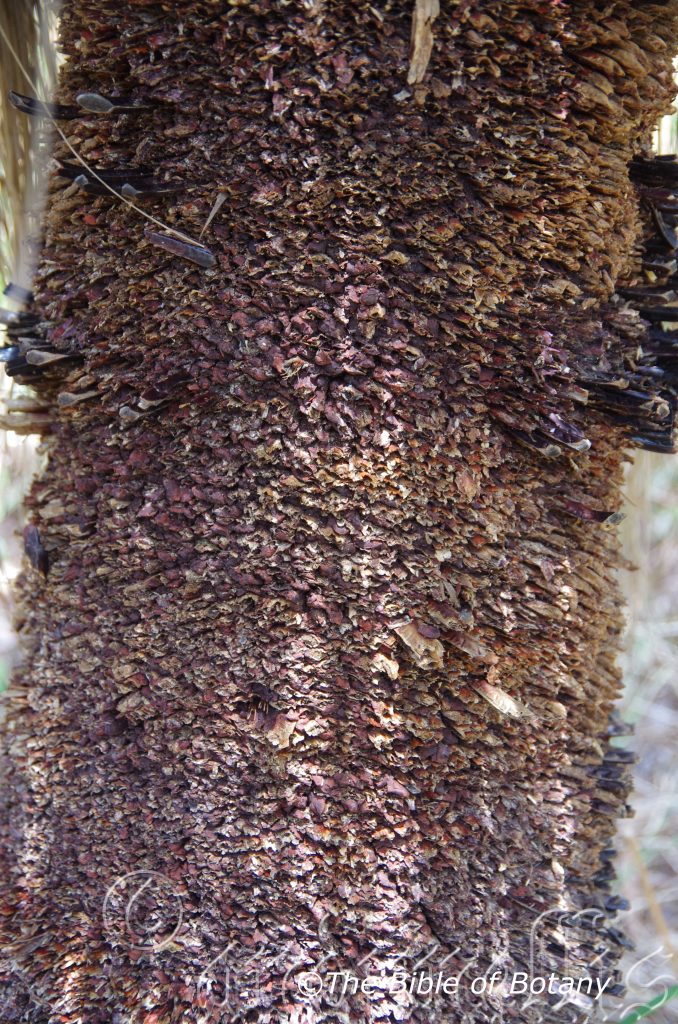
Coffs Harbour Botanic Gardens NSW
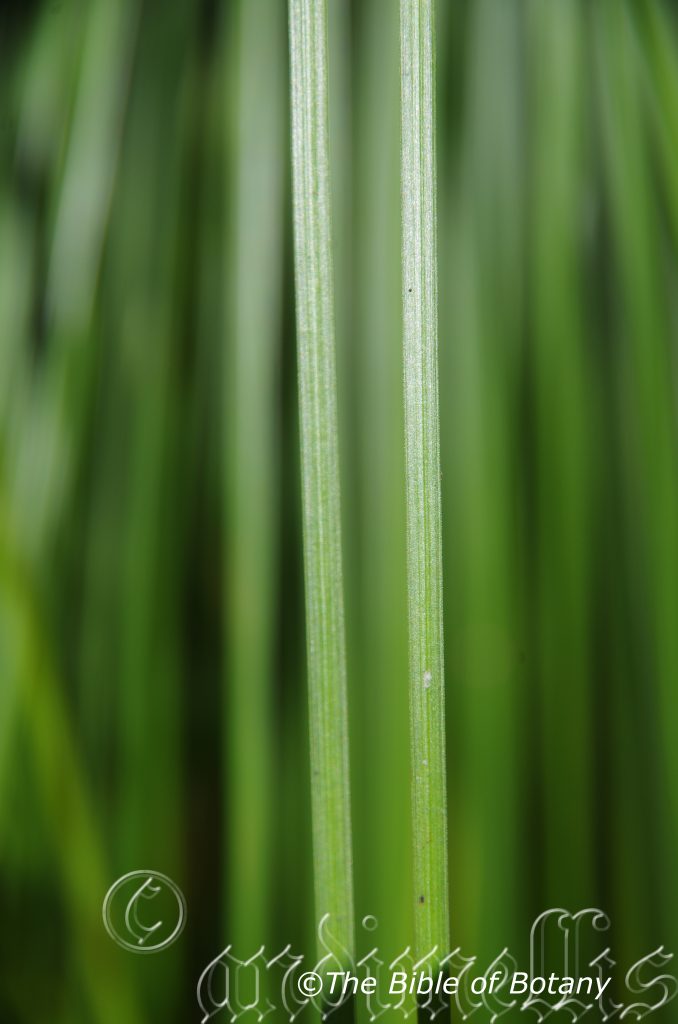
Coffs Harbour Botanic Gardens NSW
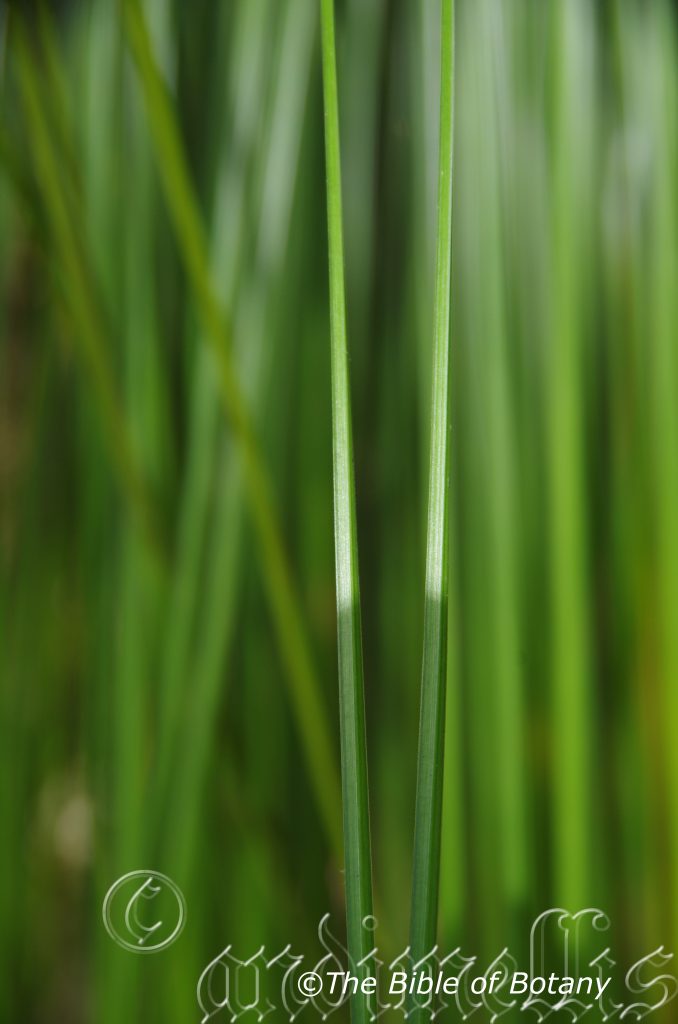
Coffs Harbour Botanic Gardens NSW
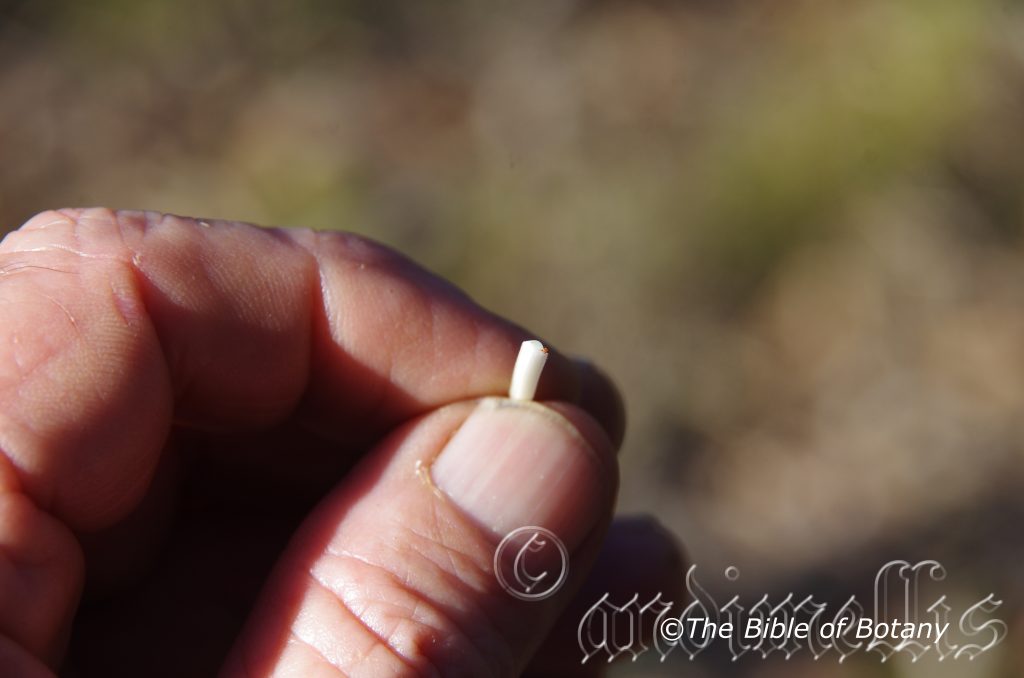
Toohey Forest Qld.
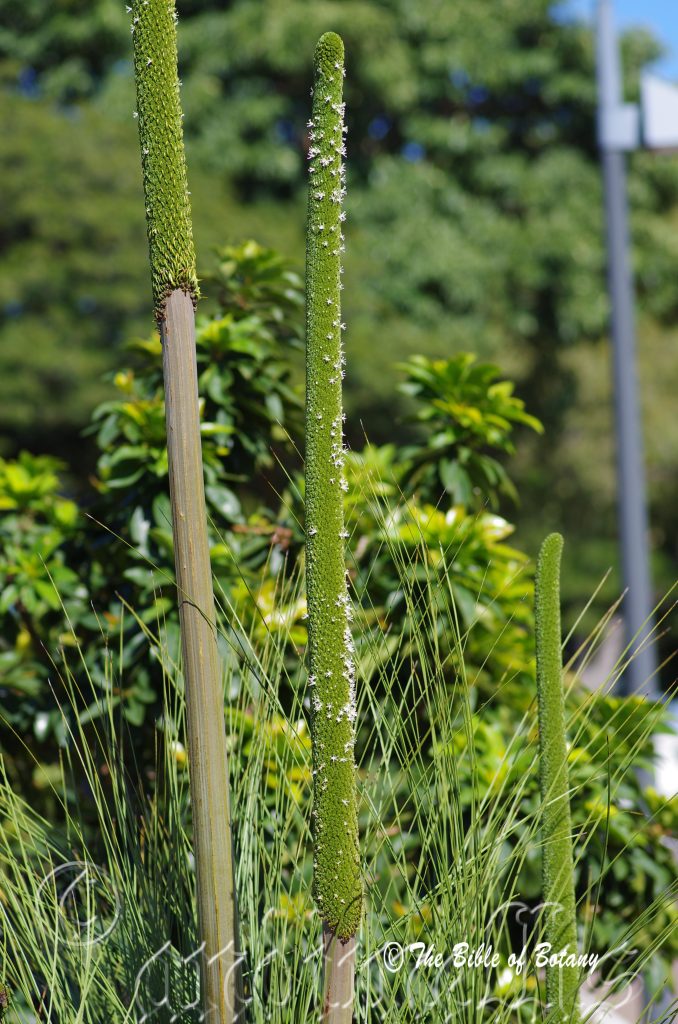
Mount Stuart Qld.
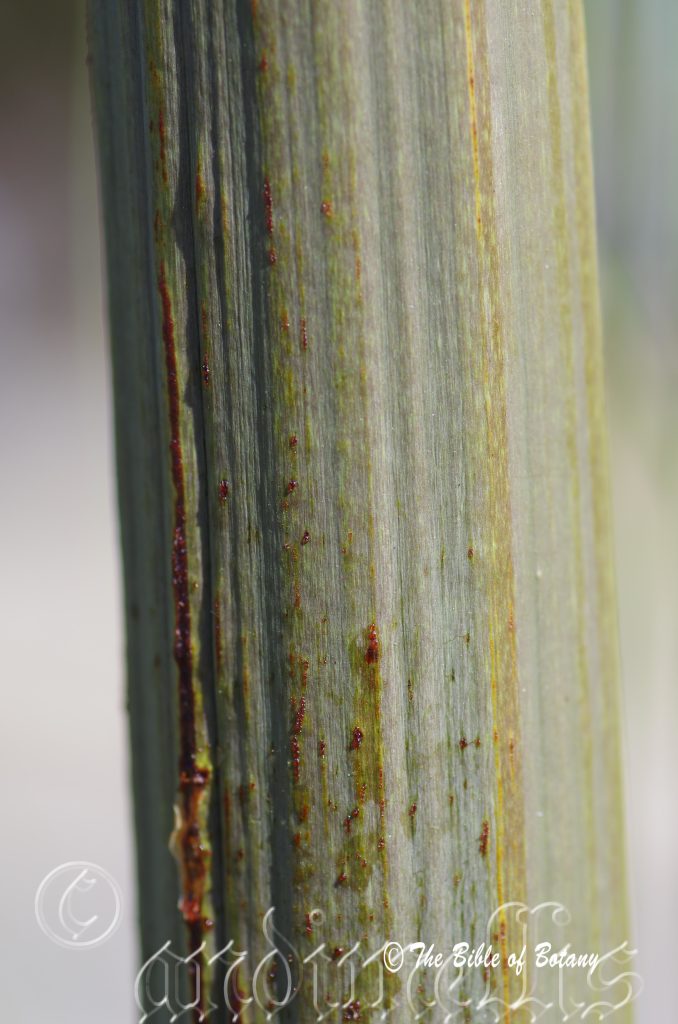
Sherwood Forest Nature Reserve NSW
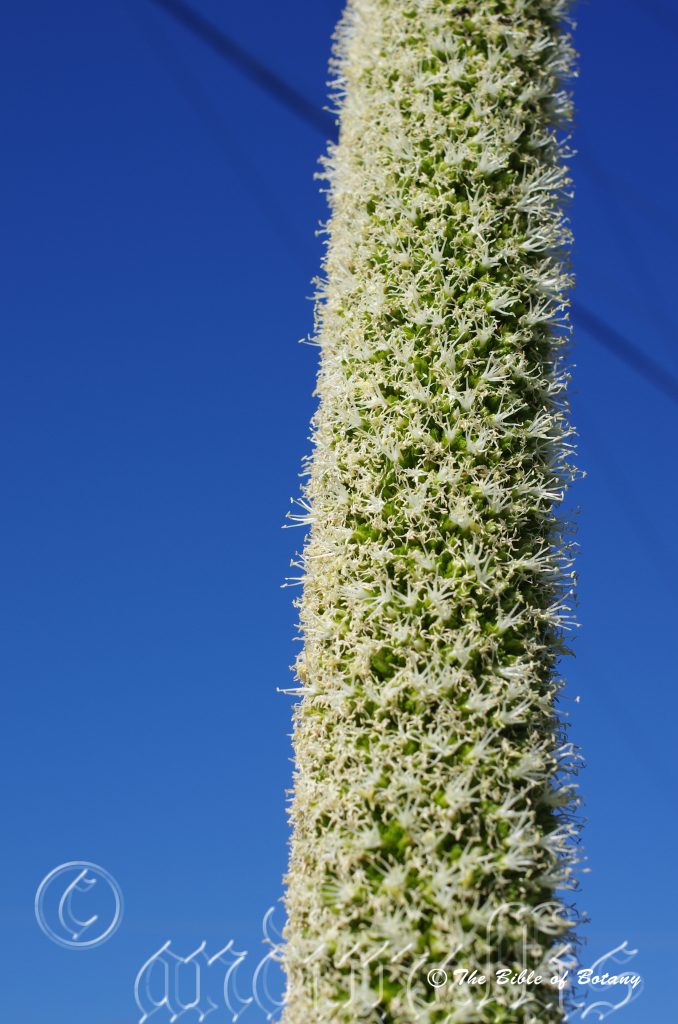
The Grange Qld.
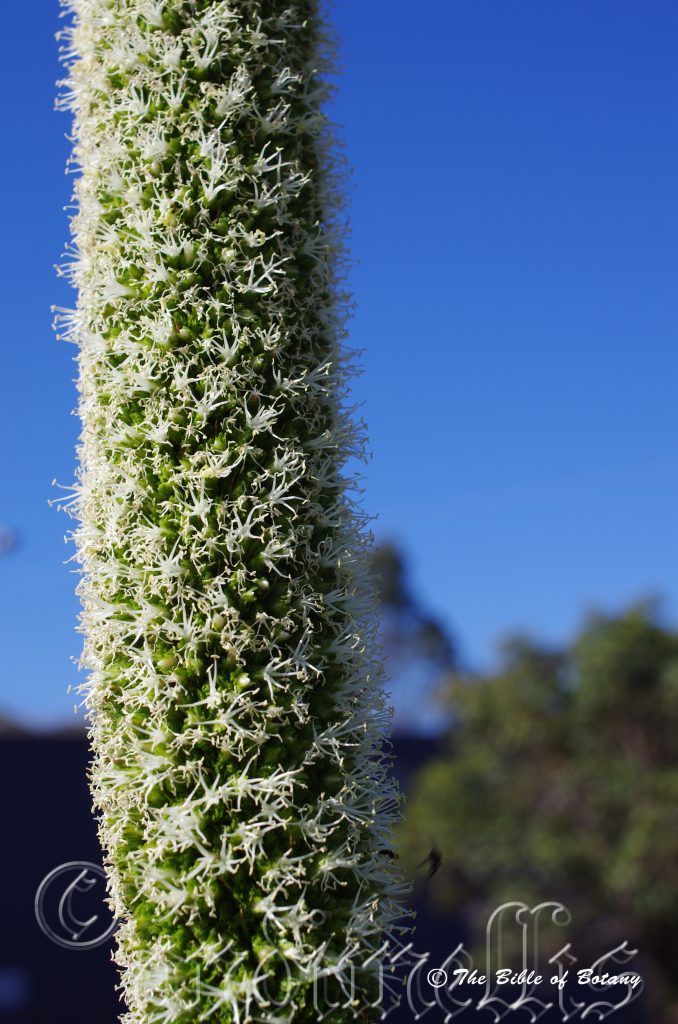
The Grange Qld.
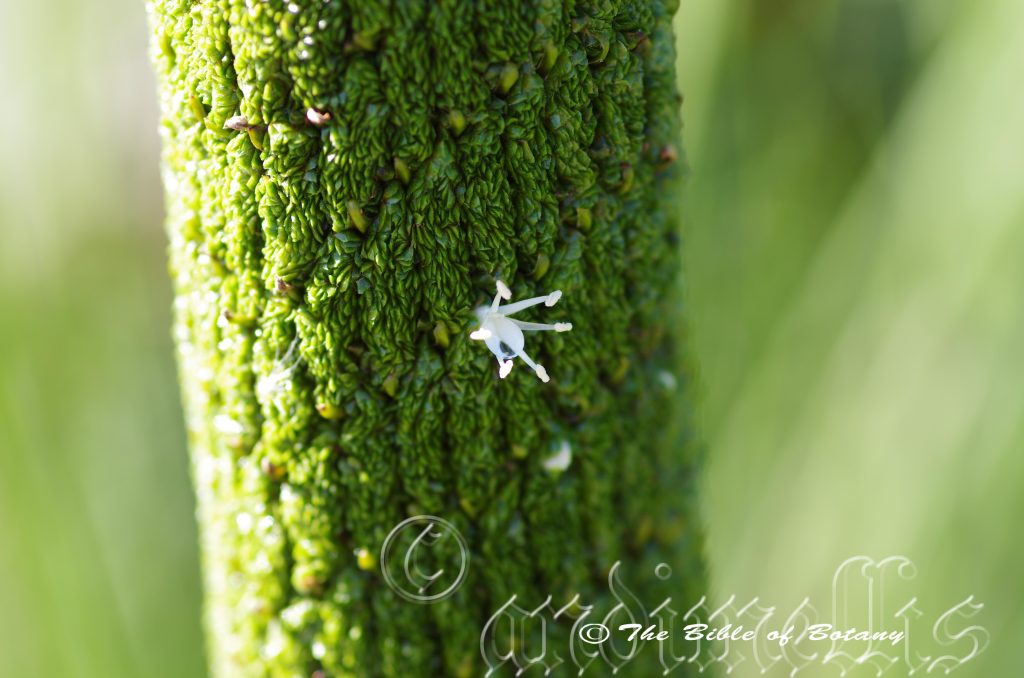
Rosser Botanic Gardens Gold Coast Qld.
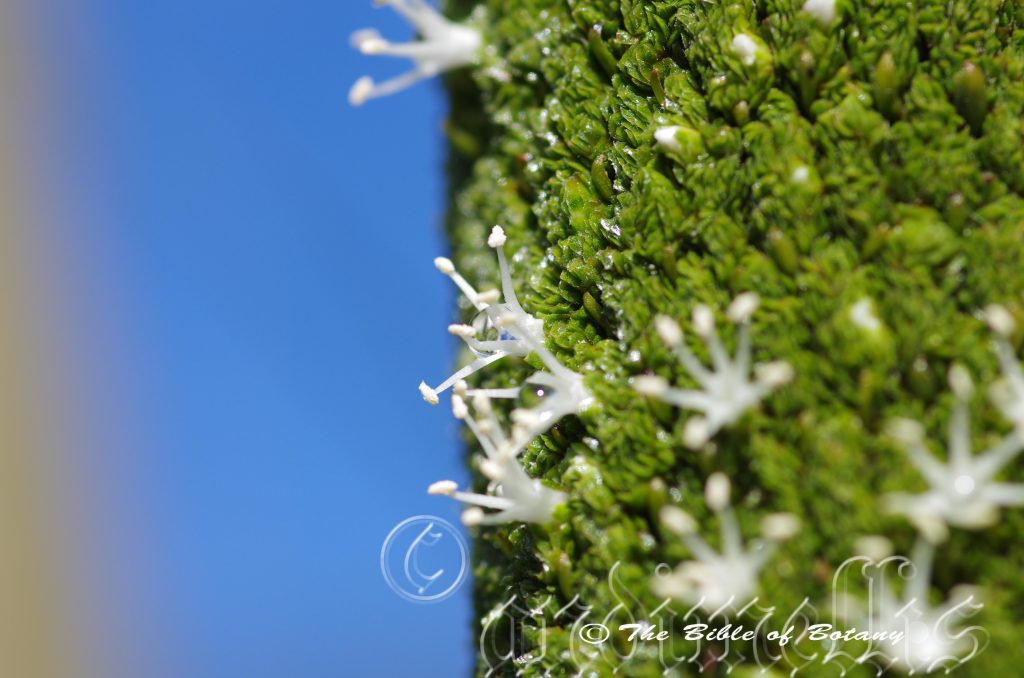
Rosser Botanic Gardens Gold Coast Qld.
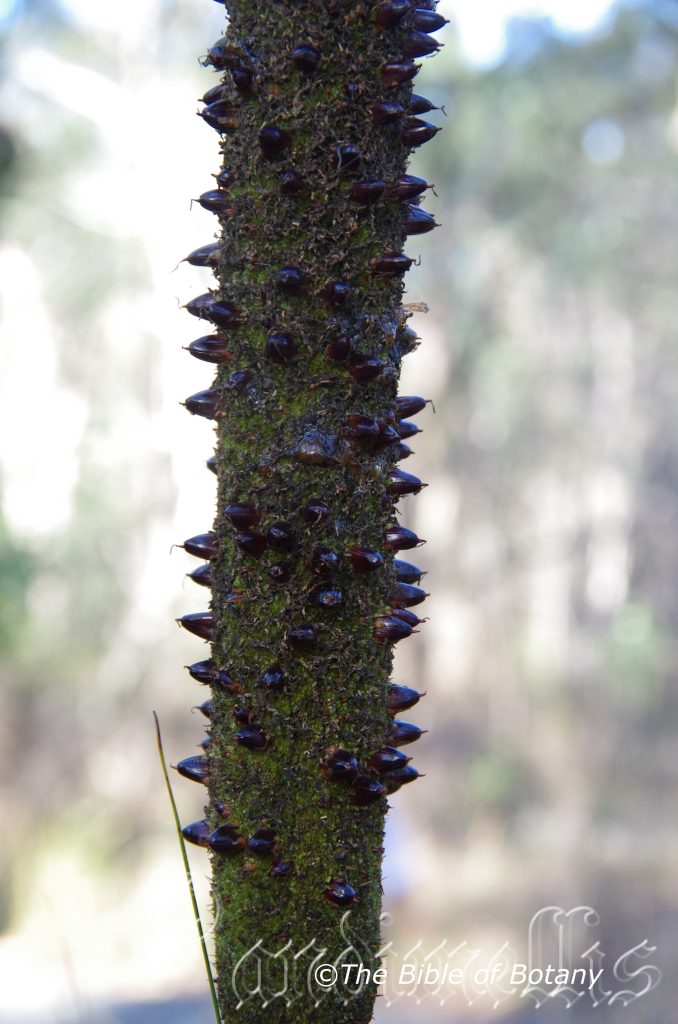
Toohey Forest Qld.
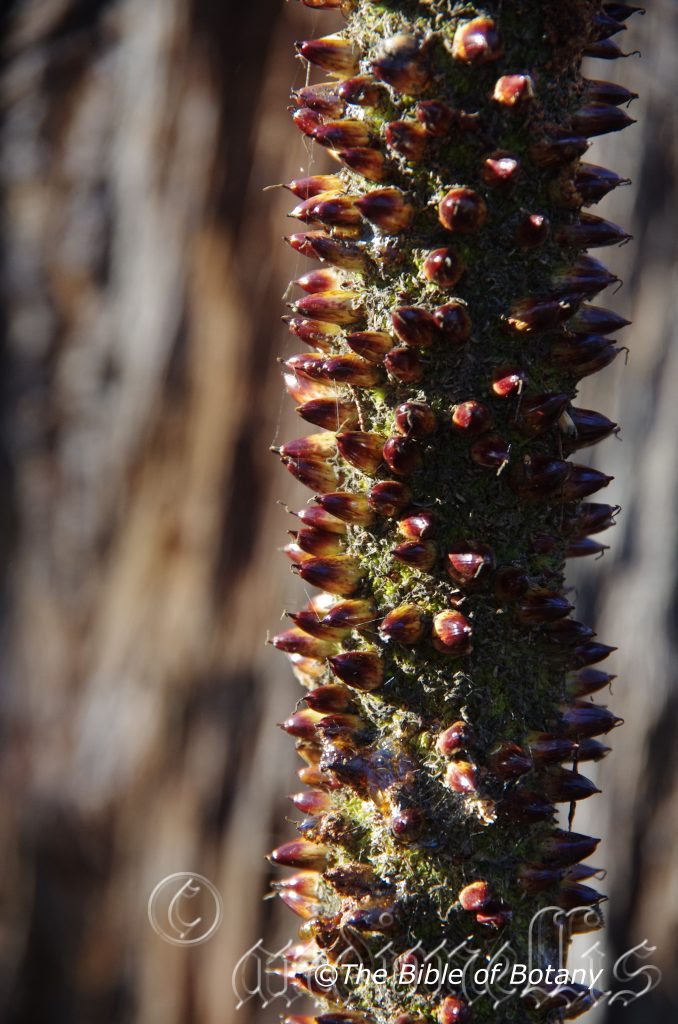
Toohey Forest Qld.
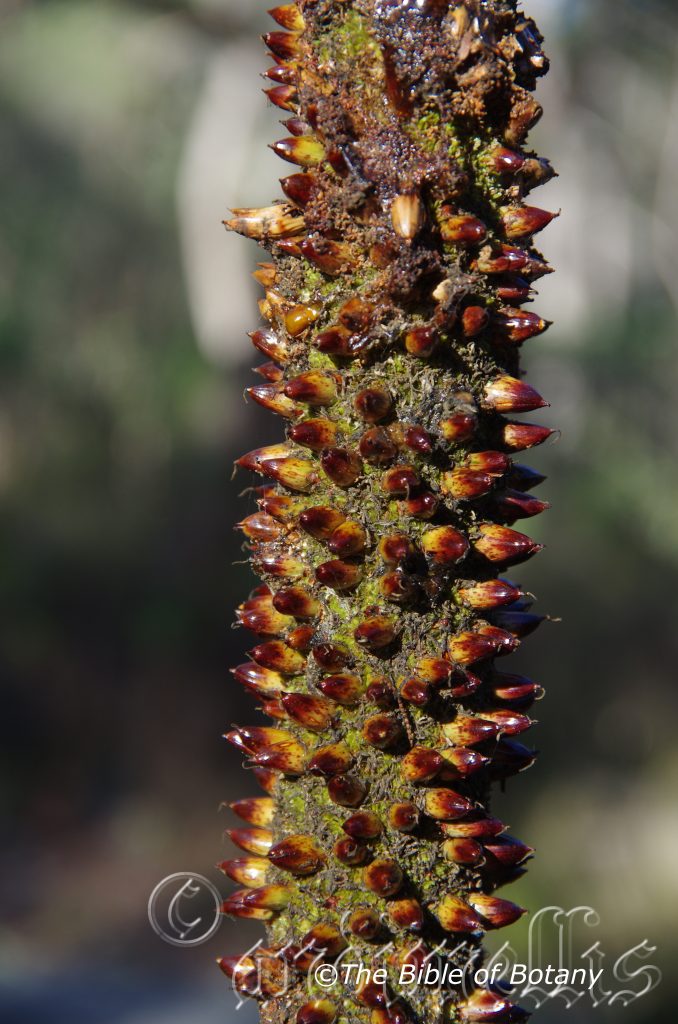
Toohey Forest Qld.
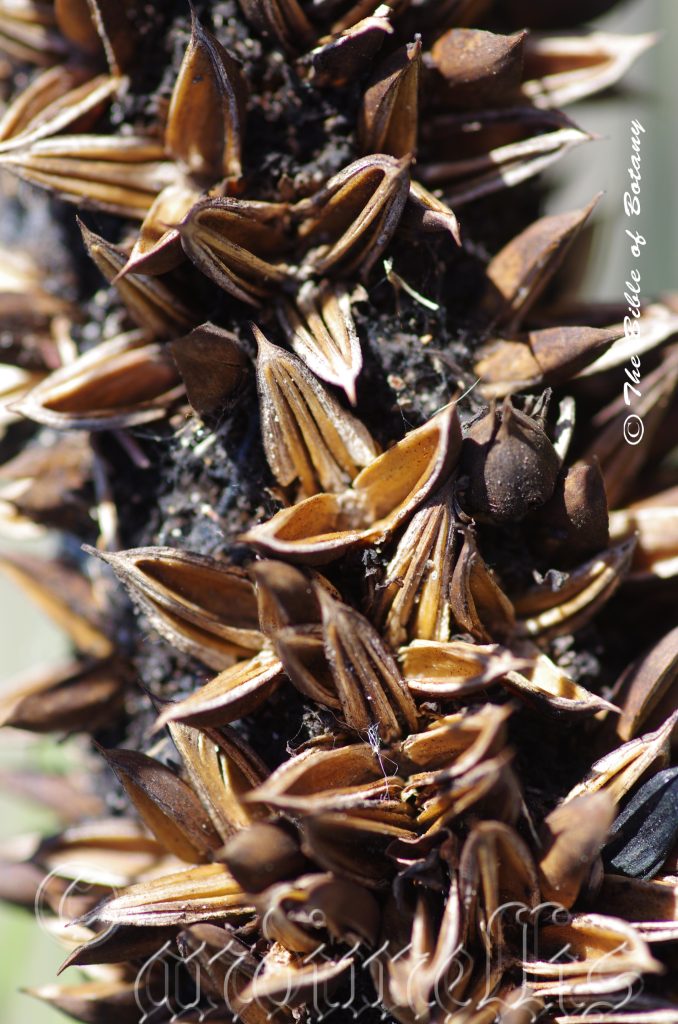
Toohey Forest Qld.
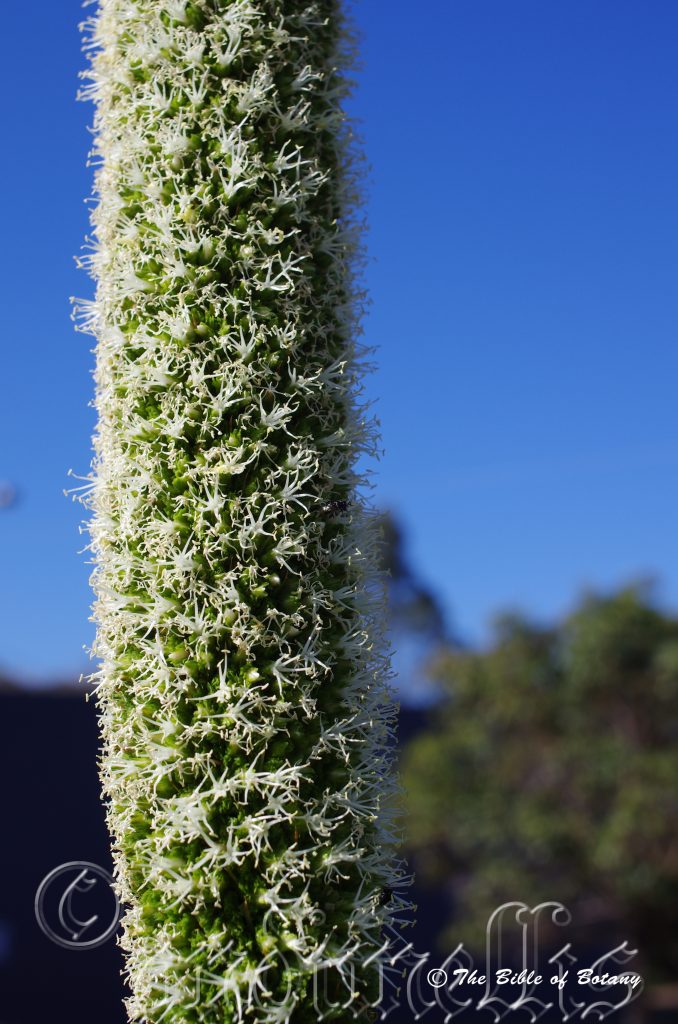
Grange Qld.
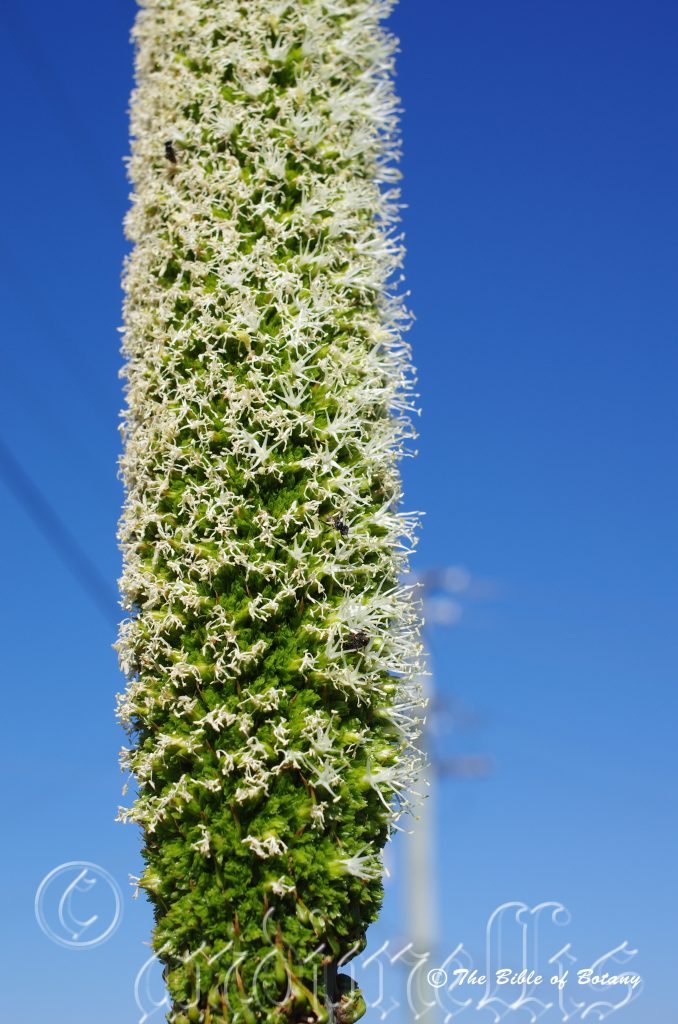
Grange Qld.
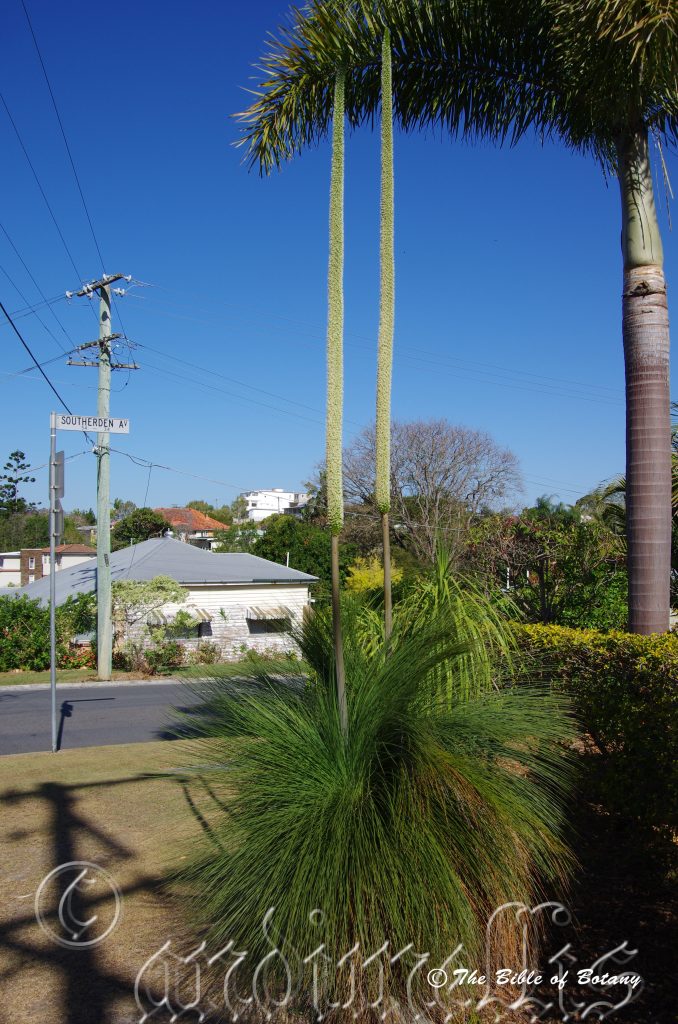
Grange Qld.
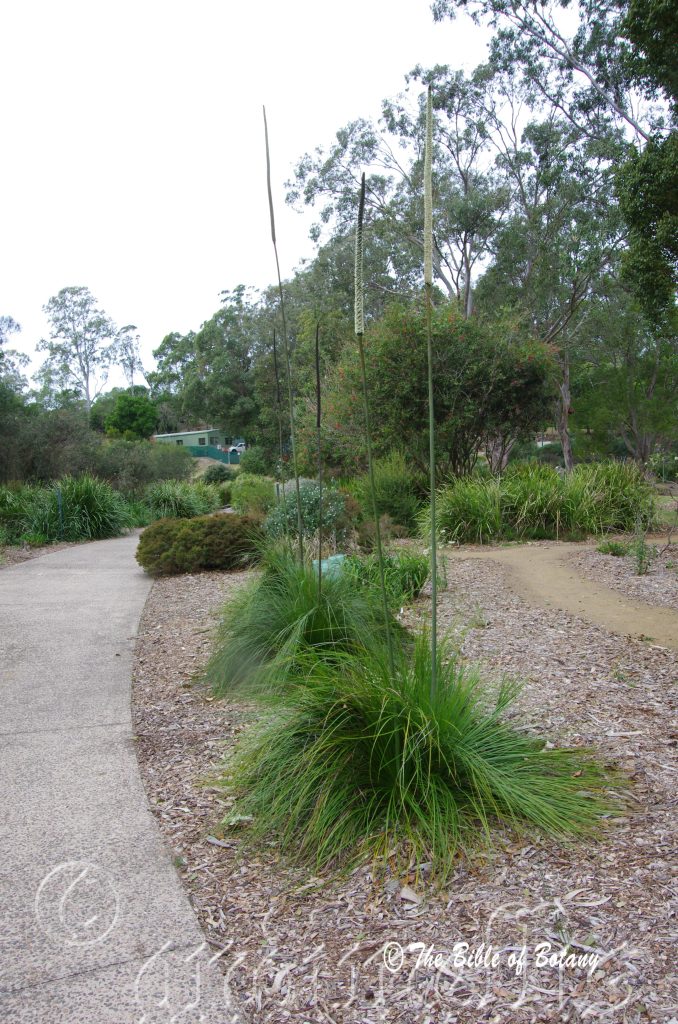
Rosser Botanic Gardens Gold Coast Qld.
Xanthorrhoea johnsonii
Classification:
Unranked: Monocots
Order: Asparagales
Family: Xanthorrhoeaceae
Tribe: Xanthorrhoeoideae
Genus: From Xanthós, which is Ancient Greek for yellow and Rhoea, which is Ancient Greek for flowing or to flow. It refers to the golden-yellow sap, which flows freely from many species and which was used as a glue/resin by local aborigines. This is a spelling error for Xantorrhoea.
Specie: Is named in honour of Johnson but which Johnson cannot be substantiated.
Sub specie:
Common Name: Giant Grass Tree.
The Aboriginal Gumbaynggirr clan know it as garraan.gurr.
Distribution:
Xanthorrhoea johnsonii is found south from the Iron Range National Park in far northern Queensland to Singleton in central coastal New South Wales. It is found on the Western Slopes on and east of the Great Dividing Range to the coast.
https://avh.ala.org.au/occurrences/search?taxa=Xanthorrhoea+johnsonii#tab_mapView
Habitat Aspect Climate:
Xanthorrhoea johnsonii prefers light dappled shade to full sun. It grows in open woodlands, dry schlerophyll forests adjacent to dry rainforests and littoral rainforests, behind the frontal dunes to ridge tops high in the mountains. The altitude ranges from 5 meters ASL to 1150 meters ASL.
The temperatures range from minus 5 degrees in August to 36 degrees in January.
The rainfall ranges from lows of 350mm to 3200mm average per annum.
Soil Requirements:
Xanthorrhoea johnsonii prefers skeletal to shallow sandy loams to medium clays. The soils are usually derived from decomposed, better quality brown basalts, black basalts, metamorphic rocks, including serpentines or accumulated peaty beach sands. The soils pH ranges from 4.5pH to 7.5pH. It does not tolerate waterlogged soils. Non saline soils to moderately saline soils are tolerated.
Height & Spread:
Wild Plants: 0.2m to 5m by 1m to 3m.
Characteristics:
Xanthorrhoea johnsonii grows as a tall, straight grass tree. The trunk is mid grey except where fires have blackened the trunk. The trunks are rough with the layers of rhombic scales which remain after the leaves have been discarded. The trunks measure 140mm to 200mm in diameter and are swollen at the base on very old plants. The branches if present are similar to the main trunk and number 2 or very rarely 3.The plants are so variable their maybe more than one sub specie or separate specie involved. The dead leaves are strongly decurve below the growing crown.
The tufted, acicular leaves of Xanthorrhoea johnsonii measure 470mm to 1200mm in length by 1mm to 2.5mm in width and 0.8mm to 1.8mm in depth. The leaves are narrowly rhombic in cross section. The bases are swollen like petioles that eventually become woody while the apexes are acute. The concolourous laminas are deep sea-green to deep grass-green, semi glossy and glabrous. The leaf margins are entire and arching.
The petioles are rhombic in cross section with wings on the horizontal plains. The petioles are compressed between the leaves and the bases on the trunk.
The inflorescences of Xanthorrhoea johnsonii are born on a long spike at the end of a long scape from the center of the cluster of crown leaves. The grass-green scapes turn deep brown almost black between the anthesis of the first flowers and last flowers opening. It taper very slightly from the base to spike. The scapes measure 750mm to 1900mm in length by 7mm to 20mm in diameter. The flowering portion of the spikes measure 750mm to 1900 in length by 20mm to 40mm in diameter.
The deep green, triangular lobes of the bracts which are clustered along the full length of the spike are acute to narrowly triangular, erect, sub glabrous to covered in rusty-brown hirsute hairs. They measure 6.5mm to 10mm in length.
The 6 tepals are white, turn creamy white after anthesis. The 3 outer tepals are acute without a beak. The 3 inner tepals are narrowly triangular, erect to recurved and without a beak.
The 6 stamens are free for their entire length and measure 5mm to 7mm in length. The flattened filaments taper to the cream oblong anthers.
The white style and stigma are glabrous while the ovary is pale creamy green. The pistil measures 4mm to 5mm in length. Xanthorrhoea johnsonii’s sweetly scented flowers appear from April through to December especially after fire.
Xanthorrhoea johnsonii’s fruits are trigonous capsules. The rusty-brown capsules are glabrous with an acute apex and measure 2mm to 5mm in length by 4mm to 5mm in width. The single deep brown-black seeds are flattened ellipsoidal and woody.
Wildlife:
Xanthorrhoea johnsonii does not appear to have any predators however the flower spikes are very attractive to many kinds of native insects, especially native bees, nectar feeding birds and insectivorous birds including the larger Yellow Wattle bird Anthochaera paradoxa, Little Wattle Bird Anthochaera chrysoptera, Red Wattle Bird Anthochaera carunculata and Leather head, Philemon corniculatus.
Cultivation:
Xanthorrhoea johnsonii is a magnificent specimen plant for medium to large gardens where well drained soils on slopes prevail. In cultivation it will grow from 4 meters to 5 meters in height by 1.5 meters to 3 meters in diameter when grown in the open.
It grows exceptionally well on lighter soils where deep leaf litter keeps the soil cool and moisture at an even level. It must have full sun If these requirements are met it can cope with temperatures as low as minus 3 degrees and up to 42 degrees. It is drought resistant once established.
Xanthorrhoea johnsonii would make excellent accent plants in front of low set commercial, industrial sheds and school gardens where it will break up hard rigid architectural lines and give warmth and breadth to a building. In front of high rise buildings it will give balance especially where it could be grown in irregular patterns meandering to the entry doors.
Try using it in a sunny court yard and foyer areas where at least half the day receives full sun and where a large rock, stump, informal frog or fish pond are the only other feature. Next to such features their long acicular leaves emit tremendously powerful scene that never wains in attractiveness or a possession of controlling influence upon all those who pass. I am surprised that it has never been used in commercial entrances and foyers to break the ice and give an intrinsic feeling of success and attention to detail.
It is great in medium to large rockeries as the main feature plant. Here it is best planted groups of 5 or 9 plants to create an open wallum scene. If it is surrounded by slightly taller plants with fine or large foliages that are deep green or pale green then year a round contrast can be created with a strong accent in the center of the bed. Even deep red or orange flowers will not distract from the viewers’ attention from the dominate affect at the center. It gives height, breadth and strength to the bed and this dominance is further accentuated when it is in flower. Its dominance in foliage will stand unchallenged in the plant world.
Xanthorrhoea johnsonii make brilliant displays in garden beds when simply planted beneath. Especially where Hibbertia scandens or Scaevola aemulum are used as the ground.
Propagation:
Seeds: Seeds of Xanthorrhoea johnsonii can be removed easily from the fruits.
Sow freshly treated seeds directly into a seed raising mix, keeping them moist not wet. Do not over water as the seeds will rot off before germination takes place. Place the trays in a cool shaded area with 50mm shade cloth in the bush house. When the seedlings are 50mm to 100mm tall, prick them out and plant them into 75mm native tubes using a good organic mix. Seeds are often slow and erratic to germinate and definately slow to establish themselves, so patience is required.
As the seedlings roots reach the bottom of the tubes plant them out into their permanent position. Do not delay.
Fertilize using Seaweed, fish emulsion or organic chicken pellets soaked in water and apply the liquid on an alternate basis. Fertilize every 2 months until the plants are well established then on twice annual basis in September or March to maintain better health, vitality and flowering.
Further Comments from Readers:
“Hi reader, it seems you use The Bible of Botany a lot. That’s great as we have great pleasure in bringing it to you! It’s a little awkward for us to ask, but our first aim is to purchase land approximately 1,600 hectares to link several parcels of N.P. into one at The Pinnacles NSW Australia, but we need your help. We’re not salespeople. We’re amateur botanists who have dedicated over 30 years to saving the environment in a practical way. We depend on donations to reach our goal. If you donate just $5, the price of your coffee this Sunday, We can help to keep the planet alive in a real way and continue to bring you regular updates and features on Australian plants all in one Botanical Bible. Any support is greatly appreciated. Thank you.”
In the spirit of reconciliation we acknowledge the Bundjalung, Gumbaynggirr and Yaegl and all aboriginal nations throughout Australia and their connections to land, sea and community. We pay our respect to their Elders past, present and future for the pleasures we have gained.
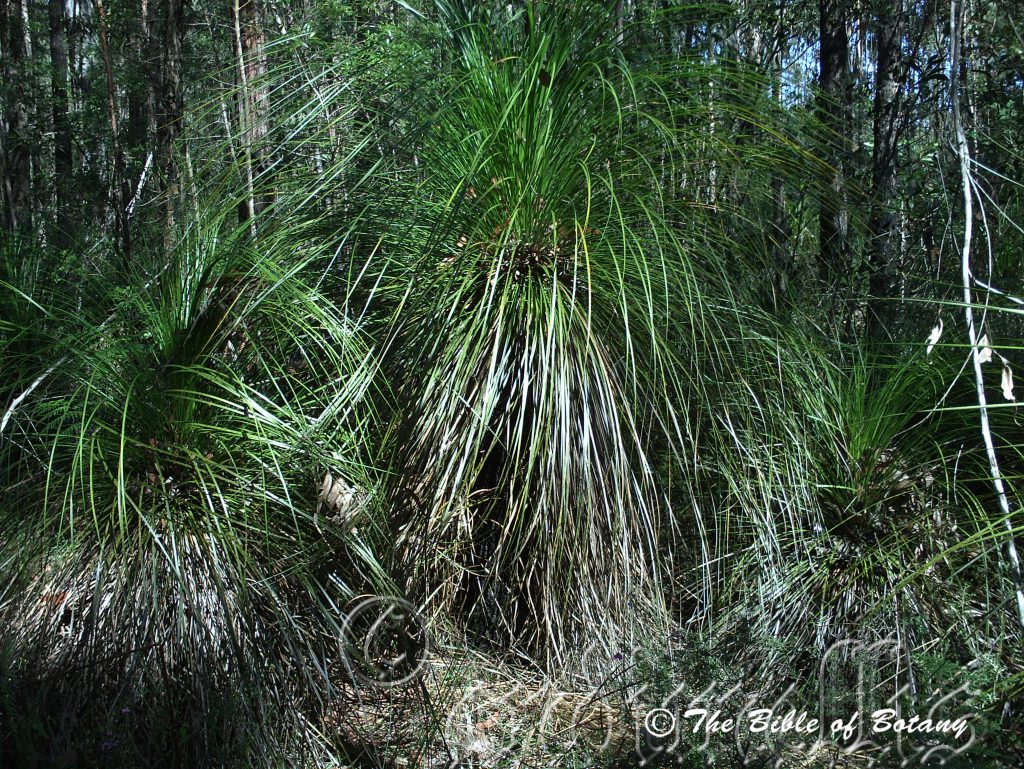
Author’s Garden The Pinnacles NSW
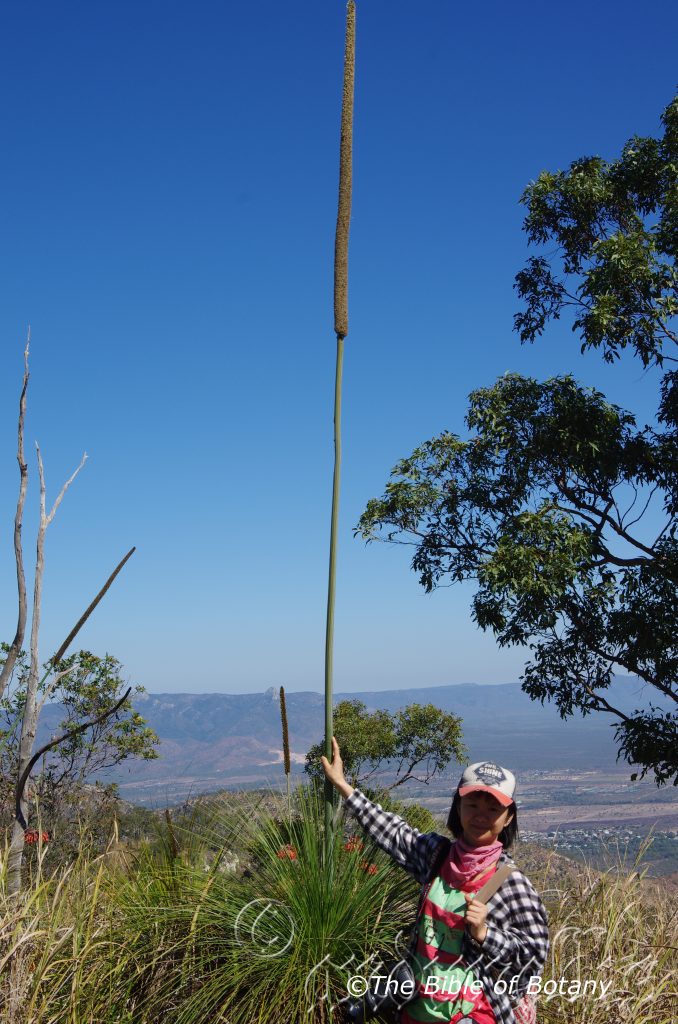
Castle Hill Townsville Qld.
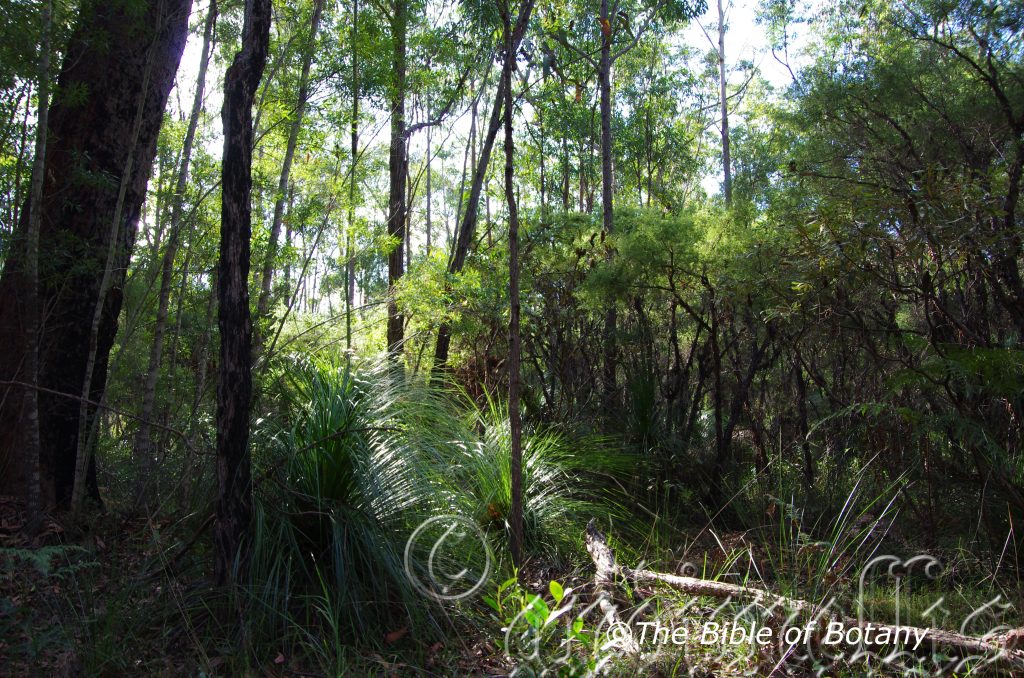
Author’s Garden The Pinnacles NSW
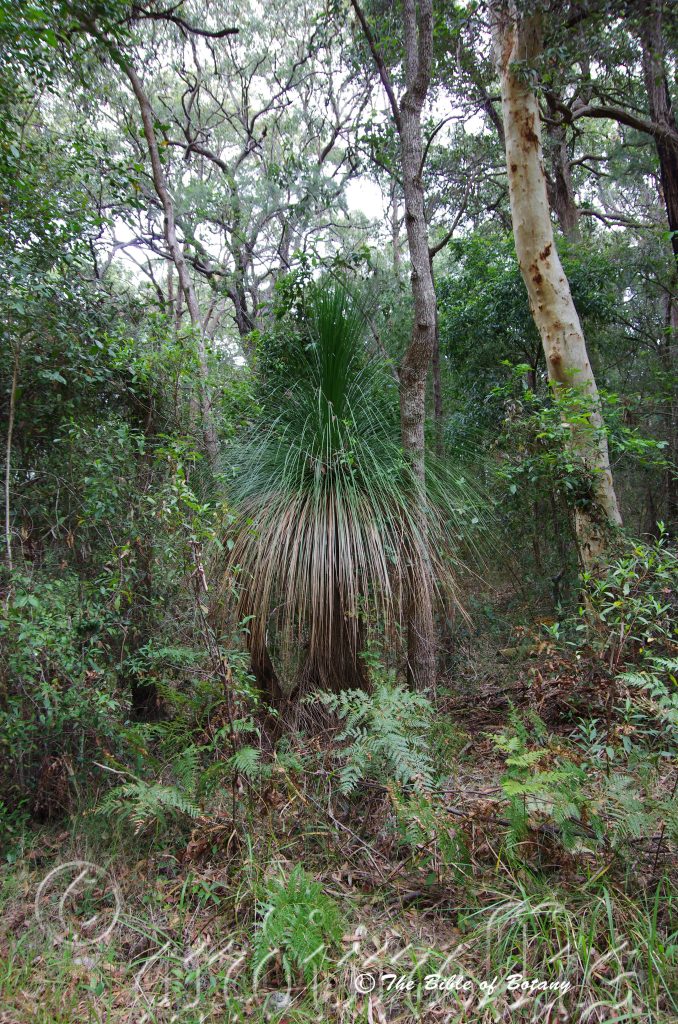
Lake Innes National Park NSW
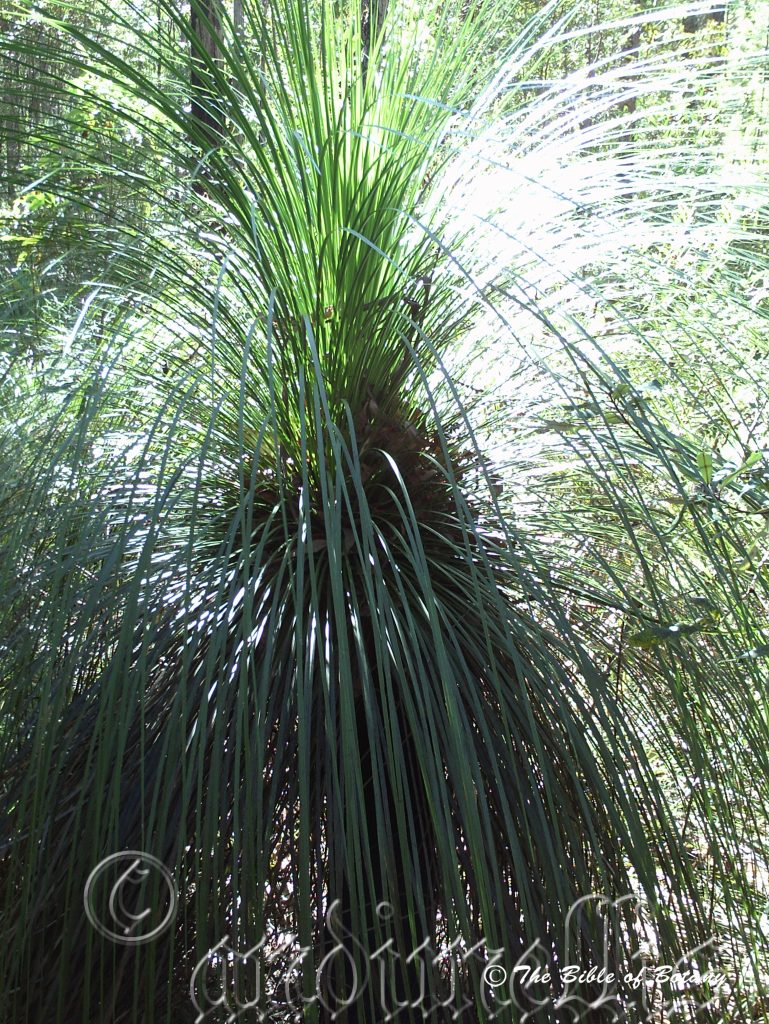
Author’s Garden The Pinnacles NSW
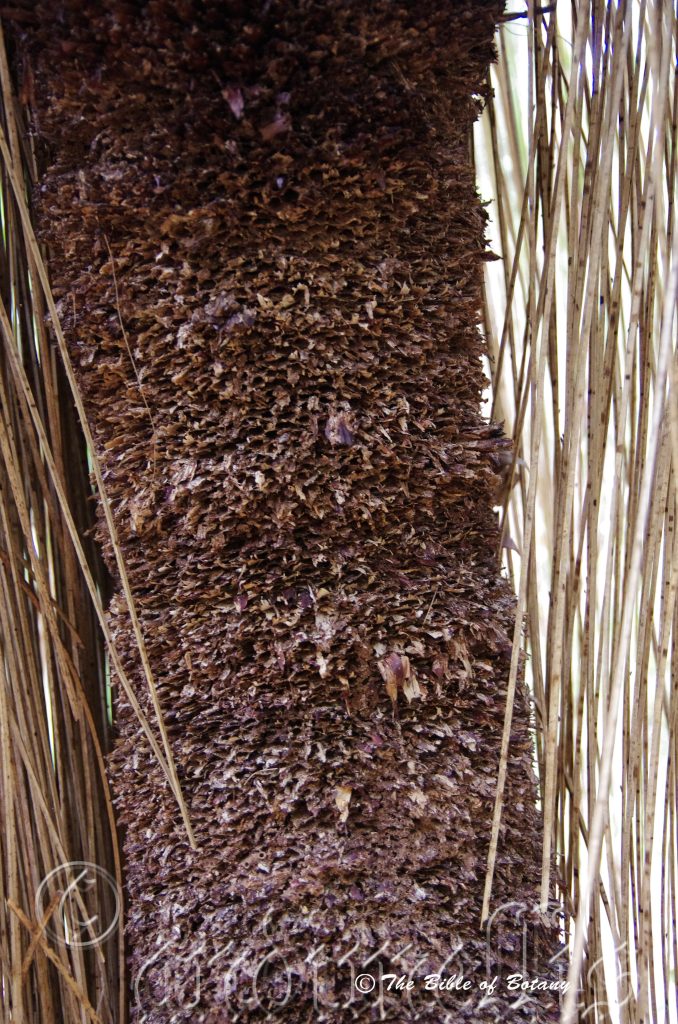
Lake Innes National Park NSW
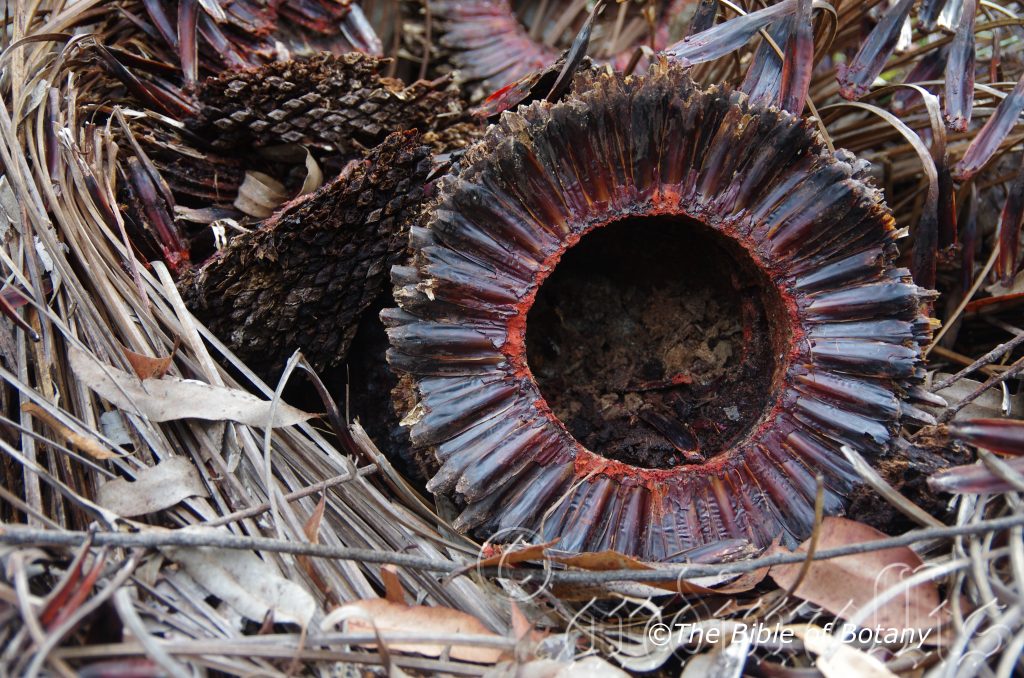
Author’s Garden The Pinnacles NSW
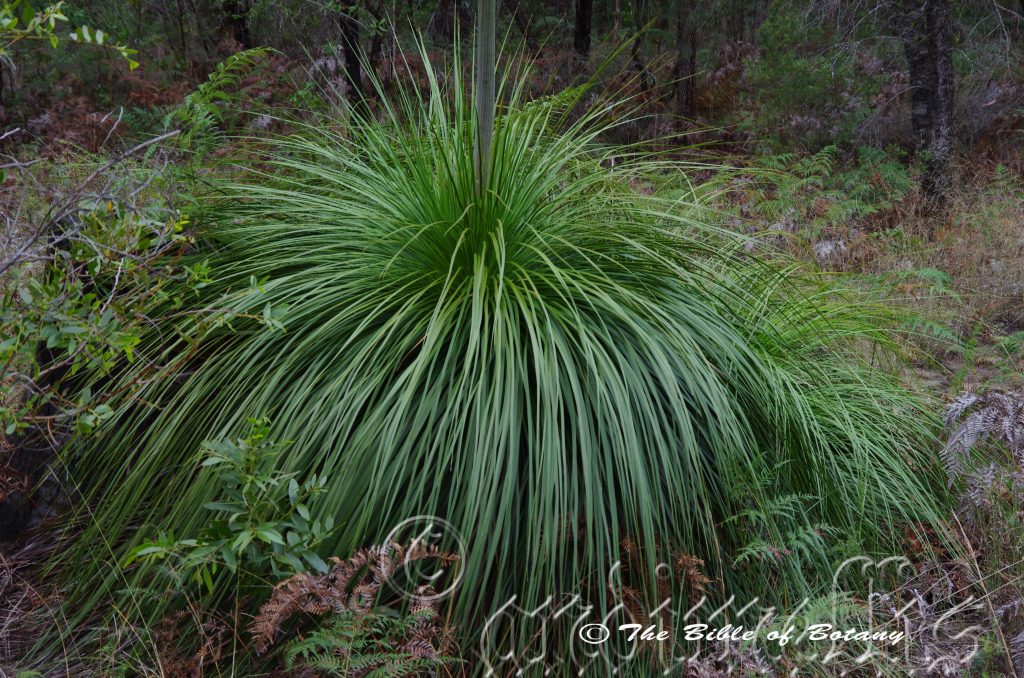
Author’s Garden The Pinnacles NSW
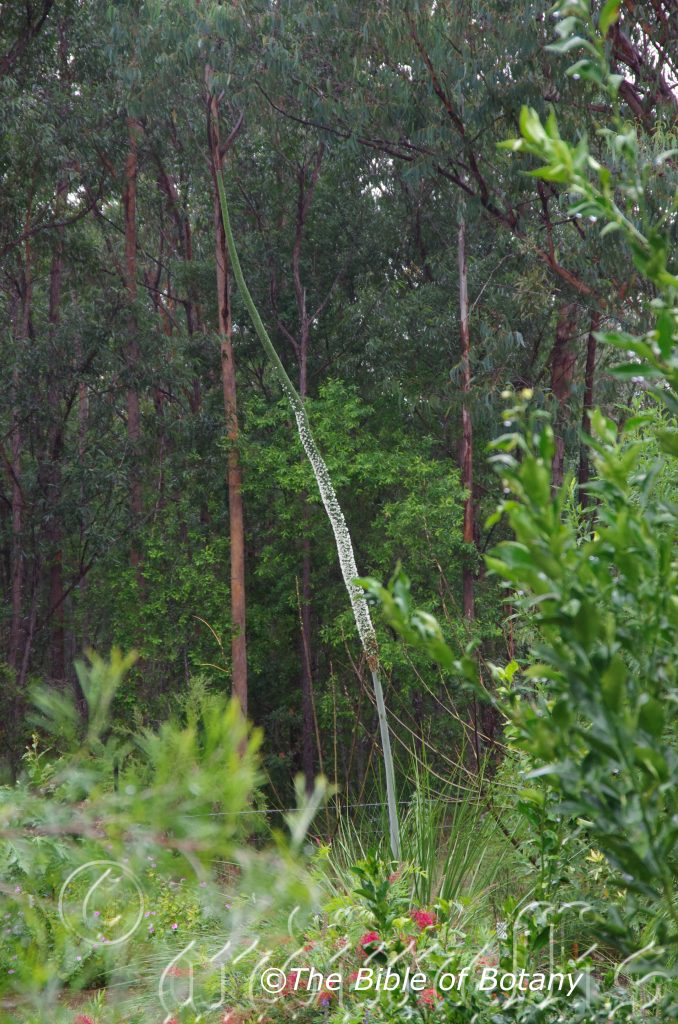
Author’s Garden The Pinnacles NSW
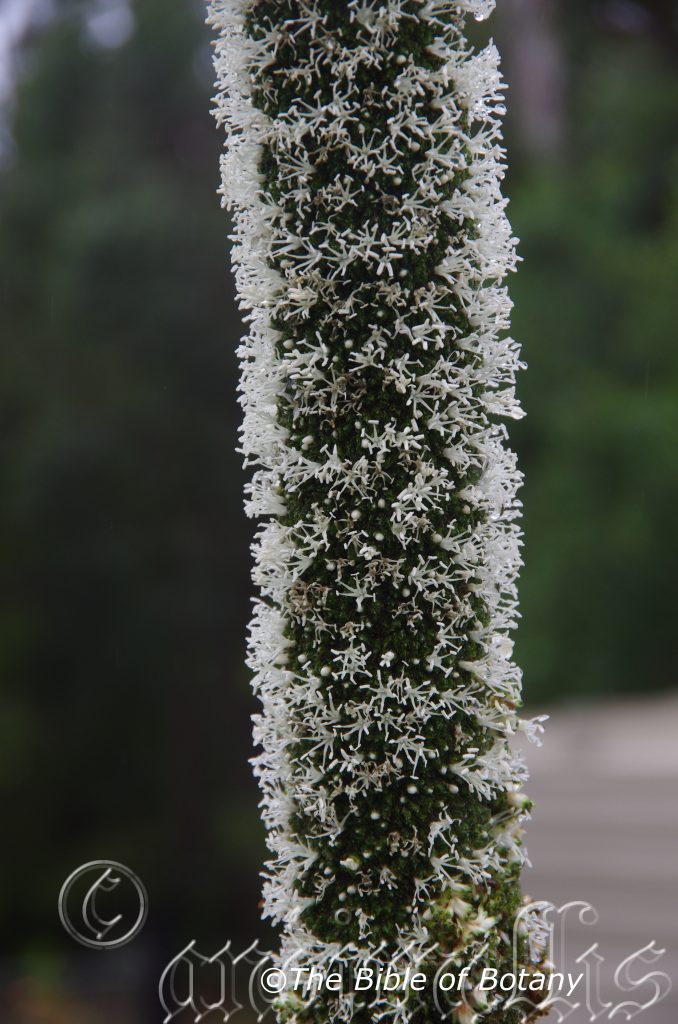
Author’s Garden The Pinnacles NSW
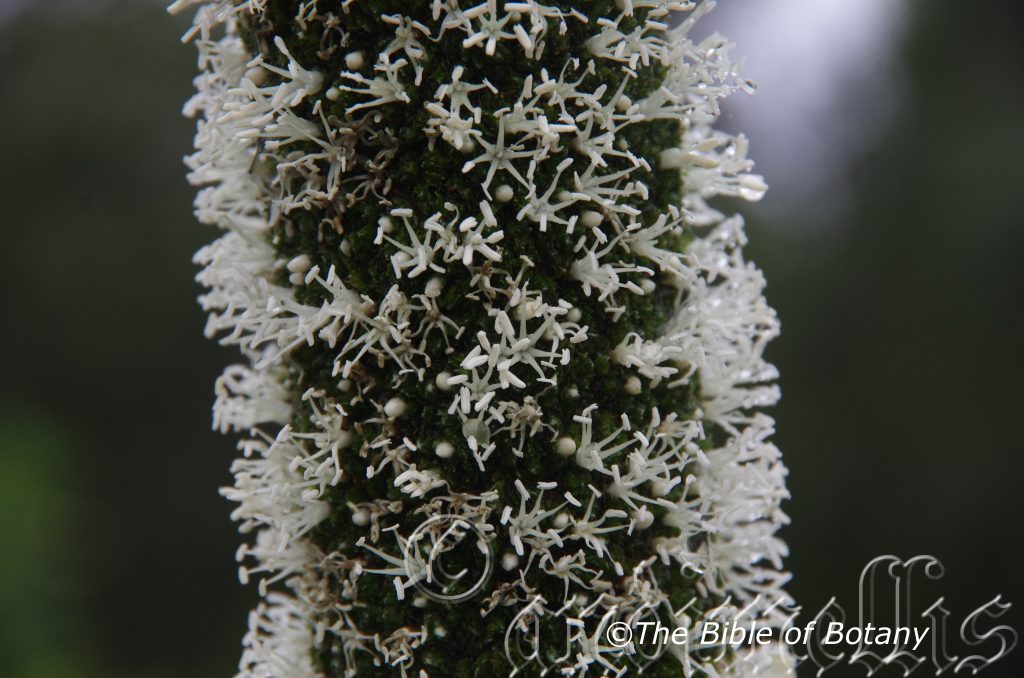
Author’s Garden The Pinnacles NSW
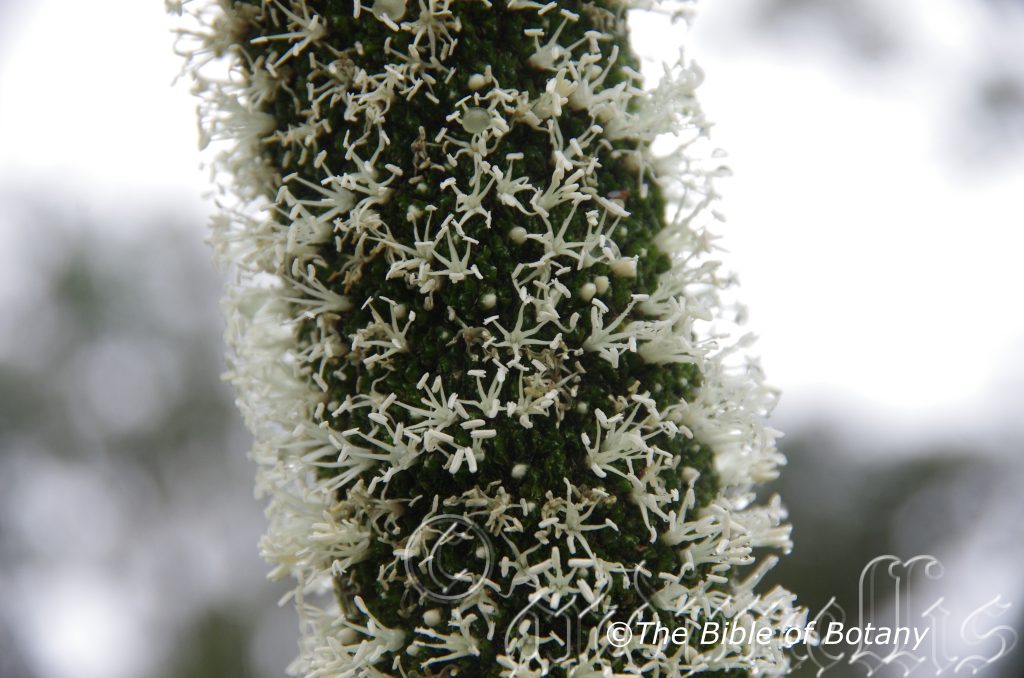
Author’s Garden The Pinnacles NSW
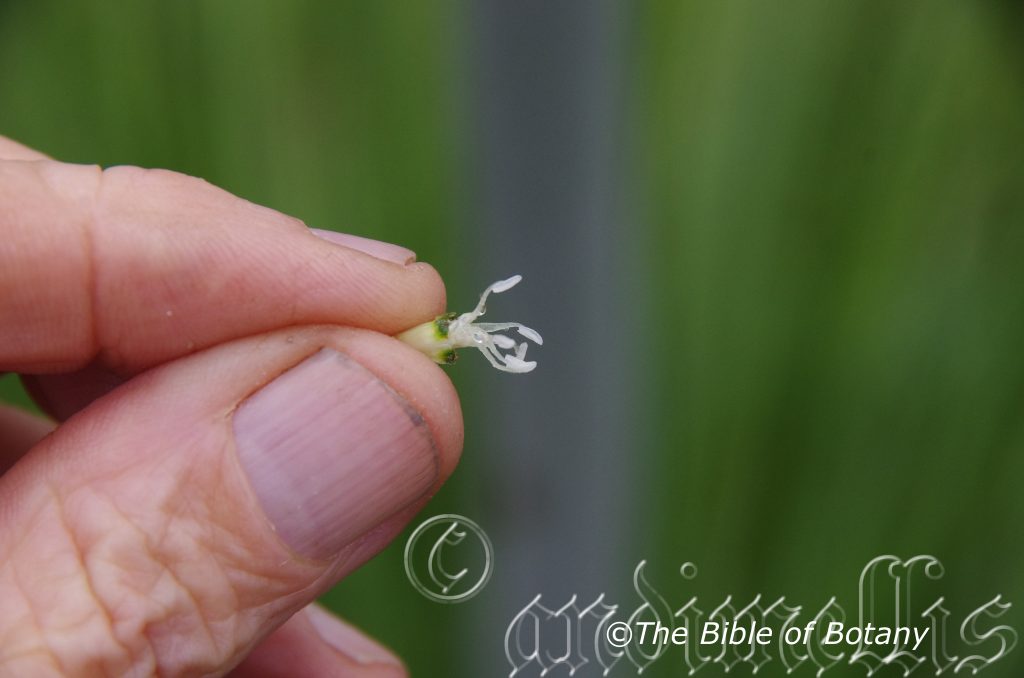
Author’s Garden The Pinnacles NSW
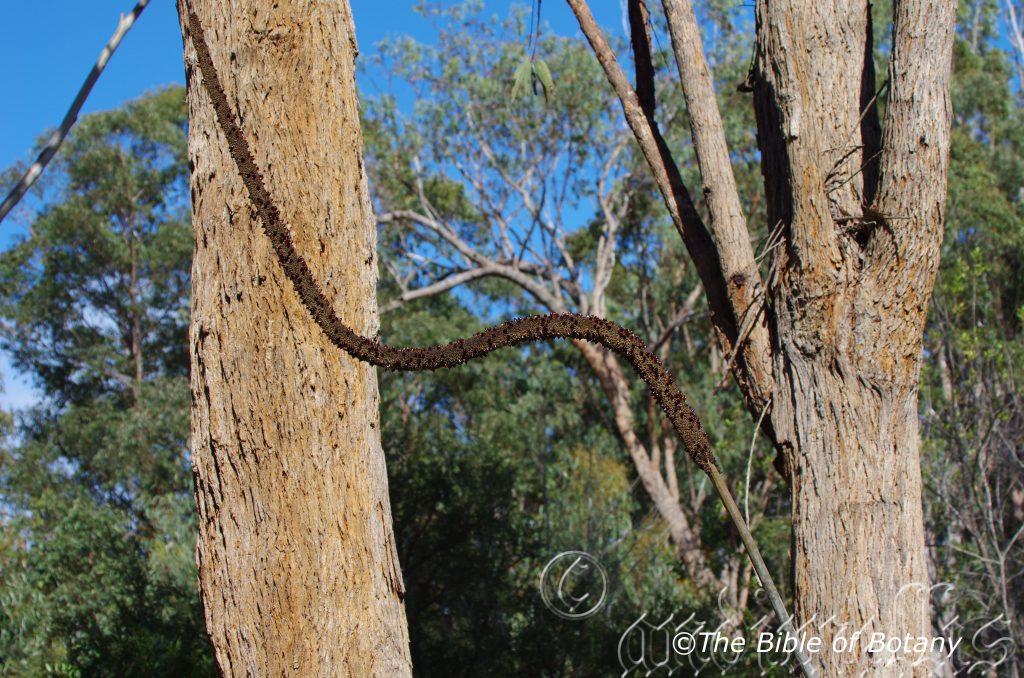
The Pinnacles NSW
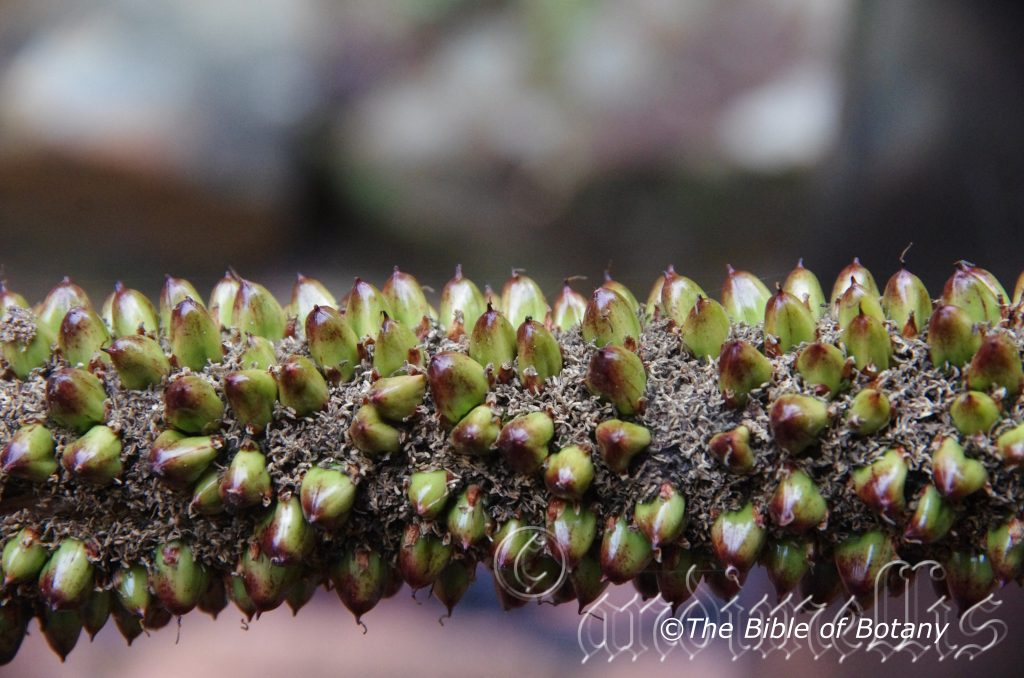
Author’s Garden The Pinnacles NSW
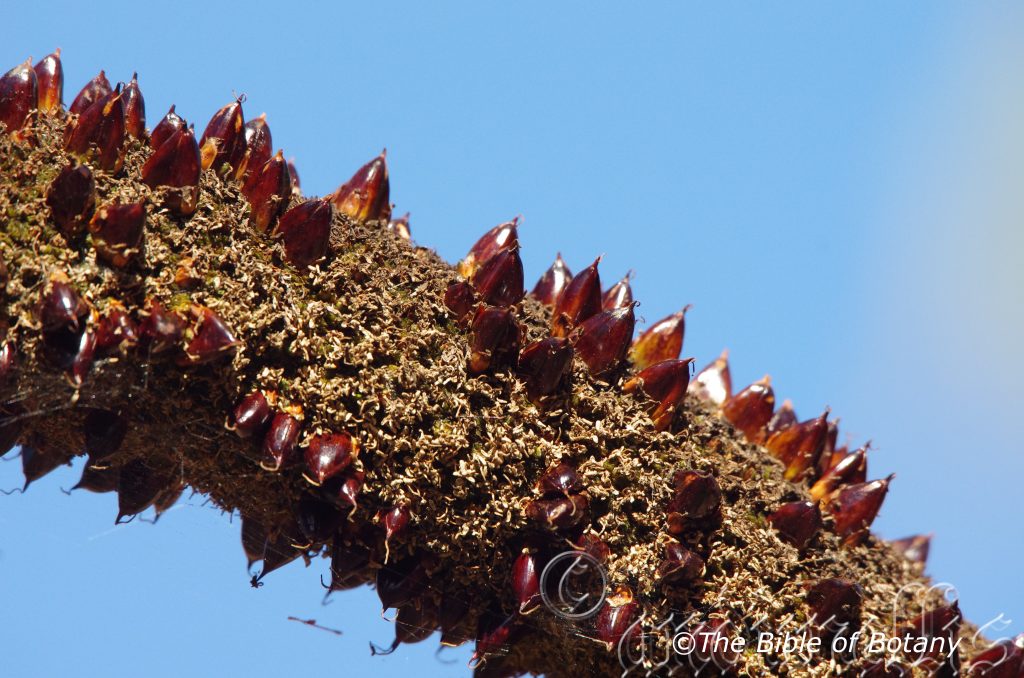
Author’s Garden The Pinnacles NSW
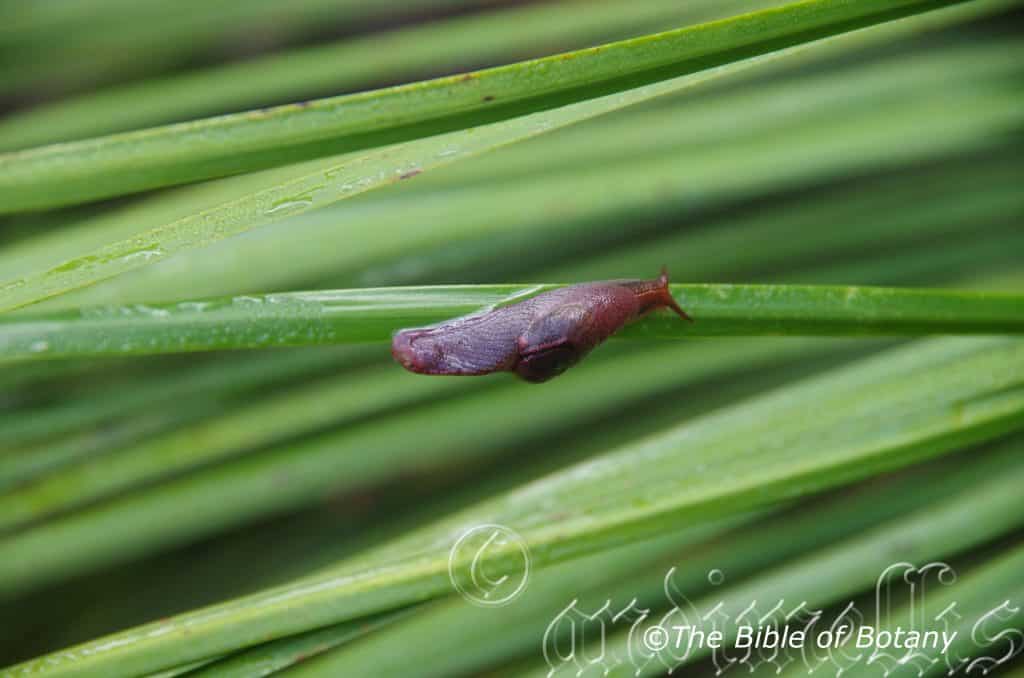
native slug, Fastosarion sp. Author’s Garden The Pinnacles NSW
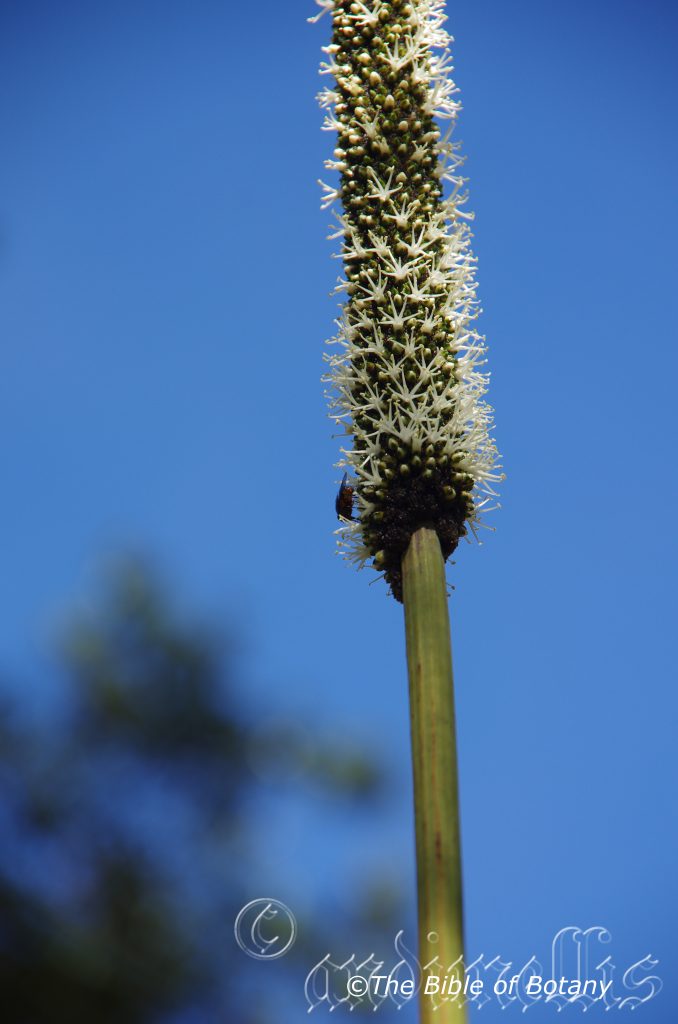
Paluma National park Qld.
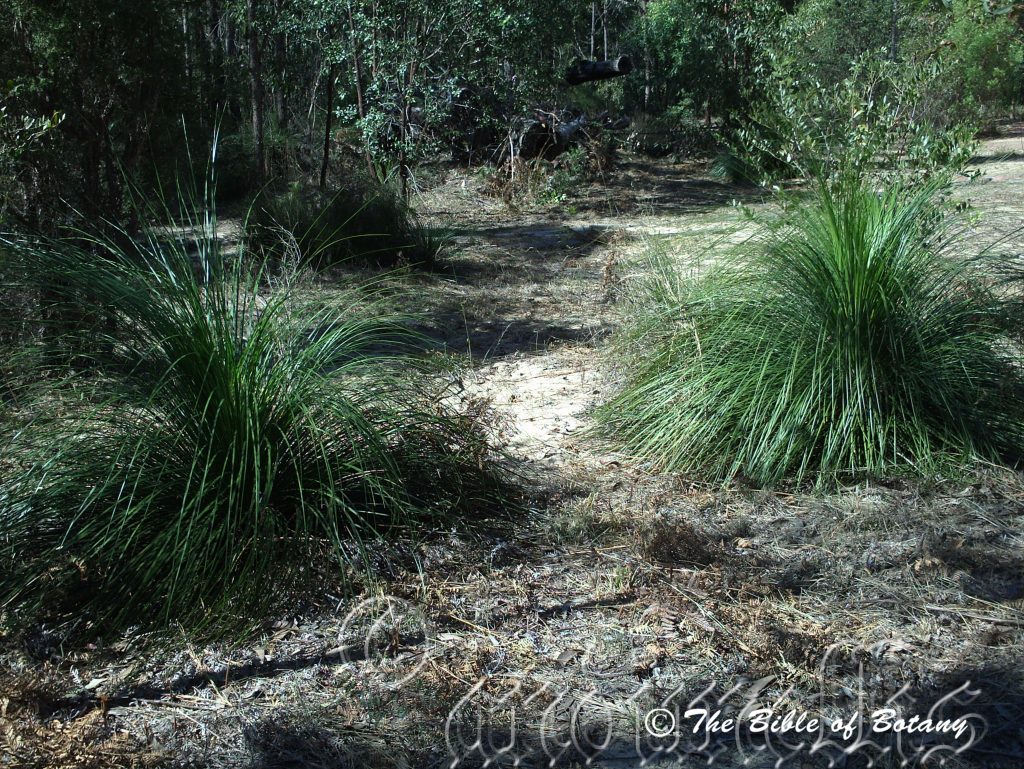
Author’s Garden The Pinnacles NSW
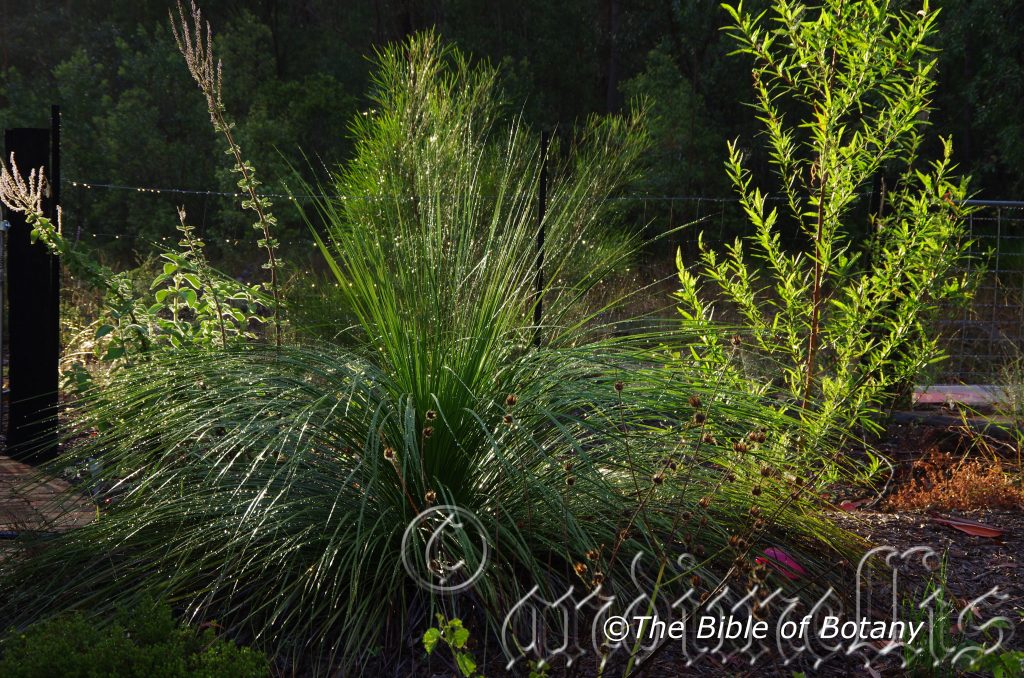
Author’s Garden The Pinnacles NSW
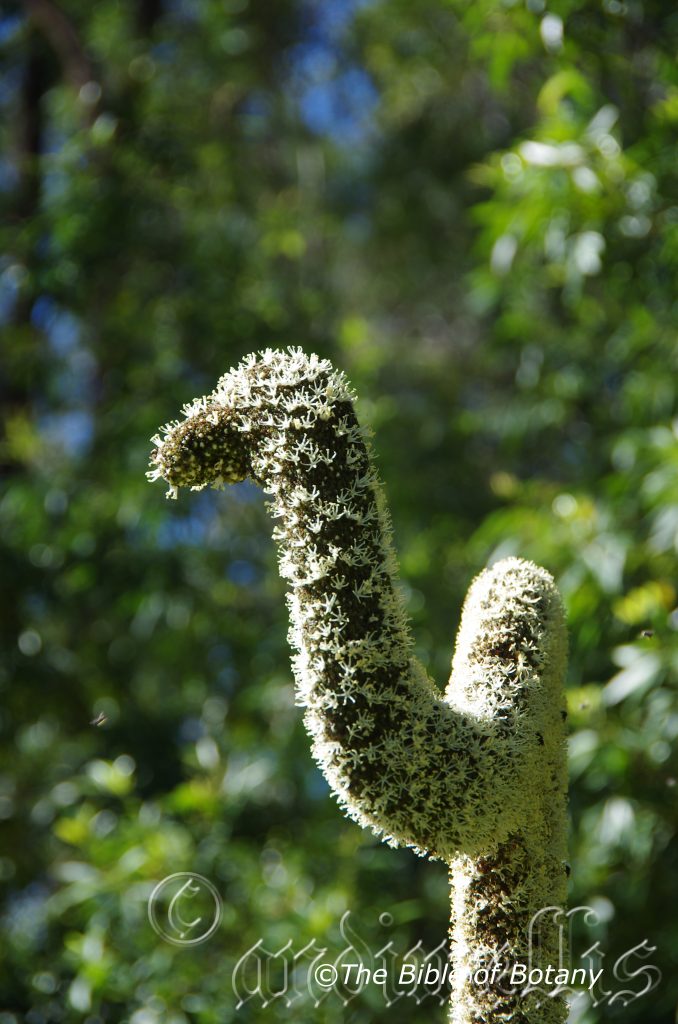
And I thought Eremophila species were known as Emu bushes. The Pinnacles NSW
Xanthorrhoea latifolia
Classification:
Unranked: Monocots
Order: Asparagales
Family: Xanthorrhoeaceae
Tribe: Xanthorrhoeoideae
Genus: From Xanthós, which is Ancient Greek for yellow and Rhoea, which is Ancient Greek for flowing or to flow. It refers to the golden-yellow sap, which flows freely from many species and which was used as a glue/resin by local aborigines. This is a spelling error for Xantorrhoea.
Specie: From Latus, which is Latin for broad and Folium, which is Latin for foliage. It refers to leaves, which are very broad or very broad when compared to other species in the genus. It refers to the leaves being very broad.
Sub specie: Xanthorrhoea latifolia subsp. latifolia. From Latus, which is Latin for broad and Folium, which is Latin for foliage. It refers to leaves, which are very broad or much broader when compared to other species in the genus.
Sub specie: Xanthorrhoea latifolia subsp. maxima. From Maximus, which is Latin for the most or greatest amount. It refers to structures or organs, which represent the largest, best or a plant being the greatest in the genus.
Common Name: Wide Leaf Grass Tree or broad leaf grasstree.
The Aboriginal Gumbaynggirr clan know it as Garraan.gurr.
Distribution:
Xanthorrhoea latifolia subsp. latifolia is found south from Caribou in far northern Queensland to Lake Macquarie in central coastal New South Wales. It mainly occurs on and east of the Great Dividing Range.
Xanthorrhoea latifolia subsp. maxima is found in a few disjunct populations south from near Caloundra in south eastern Queensland to Minyon Falls Lookout in far north eastern New South Wales. It is found on the Great Dividing Range.
https://avh.ala.org.au/occurrences/search?taxa=Xanthorrhoea+latifolia#tab_mapView
Soil Requirements:
Xanthorrhoea latifolia prefers light dappled shade to full sun. It grows in open woodlands, dry schlerophyll forests, adjacent to well-developed rainforests, dry rainforests or littoral rainforests on slopes, ridges along streams or river courses. The altitude ranges from 5 meters ASL to 1150 meters ASL.
The temperatures range from minus 3 degrees in August to 36 degrees in January.
The rainfall ranges from lows of 800mm to 2000mm average per annum.
Soil Requirements:
Xanthorrhoea latifolia prefers skeletal to deep sandy loams to light gritty clays. The soils are usually derived from decomposed, better quality brown basalts, black basalts, metamorphic rocks, including serpentines, granite, sandstone or accumulated peaty beach sands. The soils pH ranges from 4.5pH to 7.5pH. It does not tolerate waterlogged soils. Non saline soils to moderately saline soils are tolerated.
Height & Spread:
Wild Plants: 0.1m to 3.6m by 1m to 3m.
Characteristics:
The trunk of Xanthorrhoea latifolia is tall, straight, mid grey except where fires have blackened the trunk. The trunks are rough with the layers of rhombic scales which remain after the leaves have been discarded. The trunks measure 120mm to 180mm in diameter on very old plants. The branches when present number 2 to 4.The green leaves are from erect to hanging vertically down. The dead leaves are strongly pendulant and hang vertically down below the live leaves below.
The tufted, acicular leaves of Xanthorrhoea latifolia subsp. latifolia
measure 700mm to 1100mm in length by 2.4mm to 5.7mm in width and 0.7mm to 1.7mm in depth. The leaves are narrowly rhombic in cross section to being almost flat. The bases are swollen like petioles that eventually become woody while the apexes are acute. The concolourous laminas are deep, bright grass-green to bright sea-green, semi glossy and glabrous.
The petioles are rhombic in cross section with wings on the horizontal plains. The petioles are compressed between the leaves and the bases on the trunk.
The tufted, acicular leaves of Xanthorrhoea latifolia subsp. maxima
measure 600mm to 1000mm in length by 4.2mm to 10mm in width and 1mm to 3.5mm in depth. The leaves are narrowly rhombic in cross section. The bases are swollen like petioles that eventually become woody while the apexes are acute. The concolourous laminas are deep, bright sea-green to bright grey-green, semi glossy and glabrous. The leaf margins are entire and arching.
The petioles are rhombic in cross section with wings on the horizontal plains. The petioles are compressed between the leaves and the bases on the trunk.
The inflorescences of Xanthorrhoea latifolia subsp. latifolia are born on a long spike at the end of a long scape from the center of the tuft crown leaves. The grass-green scapes turn deep burgundy-black between the anthesis of the first flowers and the last flowers opening. They taper very slightly from the base to spike. The scapes measure 1000mm to 2100mm in length by 12mm to 16mm in diameter. The flowering portion of the spikes measure 600mm to 1800 in length by 35mm to 42mm in diameter.
The inflorescences of Xanthorrhoea latifolia subsp. maxima are born on a long spike from the center of the cluster of crown leaves. The grass-green scapes turn deep burgundy-black after the anthesis of the first flowers. They taper very slightly from the base to spike. The scapes measure 700mm to 2100mm in length by 12mm to 18mm in diameter. The flowering portion of the spikes measure 450mm to 600mm in length by 28mm to 35mm in diameter.
The 3 outer tepals are broad acute to acute with short beak and central outer ridge. The outer tepals are slightly covered in reddish hirsute hairs. The 3 recurved inner tepals are acute with a proboscis. The inner tepals are glabrous and are covered in reddish hirsute hairs near the apex.
The 6 exserted stamens of Xanthorrhoea latifolia are free for their entire length and measure 5mm to 7mm in length. The flattened filaments taper to the cream oblong anthers.
The white style and stigma are glabrous while the ovary is pale creamy green. The pistil measures 4mm to 6mm in length. The sweetly scented flowers appear from March to October.
Xanthorrhoea latifolia’s fruits are trigonous capsules. The rusty-brown capsules are glabrous with an acute apex and measure 2mm to 5mm in length by 4mm to 5mm in width. The single deep brown-black seeds are flattened ellipsoidal and woody.
Wildlife:
Xanthorrhoea latifolia’s do not appear to have any predators however the flower spikes are very attractive to many kinds of native insects, especially native bees, nectar feeding birds and insectivorous birds including the larger Yellow Wattle bird, (Anthochaera paradoxa) Little Wattle Bird, (Anthochaera chrysoptera) Red Wattle Bird (Anthochaera carunculata) and Leather head. (Philemon corniculatus) Striated Thornbills (Acanthiza lineata) have been seen dropping out of trees and chasing insects from the flower heads when the more aggressive larger birds are not around.
Cultivation:
Xanthorrhoea latifolia is a magnificent specimen plant for medium to large gardens where well drained soils on slopes or flats prevail on sandy or gravelly soils. This grass tree is the bushiest and most spectacular however it is the most problem some in establishing in areas and on soils where it originate from. In cultivation it will eventually grow from 3 meters to 3.5 meters in height by 1.5 meters to 2.5 meters in diameter when grown in the open.
It grows exceptionally well on lighter soils where deep leaf litter keeps the soil cool and some moisture retention is available. It must have full sun. If these requirements are met it can cope with temperatures as low as minus 3 degrees and up to 42 degrees. It is drought resistant once established and is the fastest growing of the Xanthorrhoea specie.
Xanthorrhoea johnsonii would make excellent accent trees in front of low set commercial, industrial sheds and school gardens where it will break up hard rigid architectural lines and give warmth and breadth to a building. In front of high rise buildings it give balance especially where it could be grown in irregular patterns meandering to the entry doors.
Try using it in hot, sunny courtyards or foyers, where at least half the day receives full sun and where a large rock, stump, informal frog or fish pond are the only other feature. Next to such features their long acicular leaves emit tremendously powerful scene that never wains in attractiveness or a possession of controlling influence upon all those who pass. I am surprised that it has never been used in commercial entrances and foyers to break the ice and give an intrinsic feeling of success and attention to detail.
It is great in medium to large rockeries as the main feature plant. Here it is best planted groups of 5 or 9 plants to create an open wallum scene. If it is surrounded by slightly taller plants with fine or large foliages that are deep green or pale green then year a round contrast can be created with a strong accent in the center of the bed. Even deep red or orange flowers will not distract from the viewers’ attention from the dominate affect at the center. The give height, breadth and strength to the bed and this dominance are further accentuated when it is in flower. Its dominance in foliage will stand unchallenged in the plant world.
Propagation:
Seeds: Seeds of Xanthorrhoea latifolia can be removed easily from the fruits.
Sow freshly treated seeds directly into a seed raising mix, keeping them moist not wet. Do not over water as the seeds will rot off before germination takes place. Place the trays in a cool shaded area with 50mm shade cloth in the bush house. Seeds are often slow to germinate and definately slow to establish themselves, so some patience is required.
When the seedlings are 50mm to 100mm tall, prick them out and plant them into 75mm native tubes using a good organic mix.
As the seedlings roots reach the bottom of the tubes plant them out into their permanent position. Do not delay.
Fertilize using Seaweed, fish emulsion or organic chicken pellets soaked in water and apply the liquid on an alternate basis. Fertilize every 2 months until the plants are well established then on twice annual basis in September or March to maintain better health, vitality and flowering.
Further Comments from Readers:
“Hi reader, it seems you use The Bible of Botany a lot. That’s great as we have great pleasure in bringing it to you! It’s a little awkward for us to ask, but our first aim is to purchase land approximately 1,600 hectares to link several parcels of N.P. into one at The Pinnacles NSW Australia, but we need your help. We’re not salespeople. We’re amateur botanists who have dedicated over 30 years to saving the environment in a practical way. We depend on donations to reach our goal. If you donate just $5, the price of your coffee this Sunday, We can help to keep the planet alive in a real way and continue to bring you regular updates and features on Australian plants all in one Botanical Bible. Any support is greatly appreciated. Thank you.”
In the spirit of reconciliation we acknowledge the Bundjalung, Gumbaynggirr and Yaegl and all aboriginal nations throughout Australia and their connections to land, sea and community. We pay our respect to their Elders past, present and future for the pleasures we have gained.
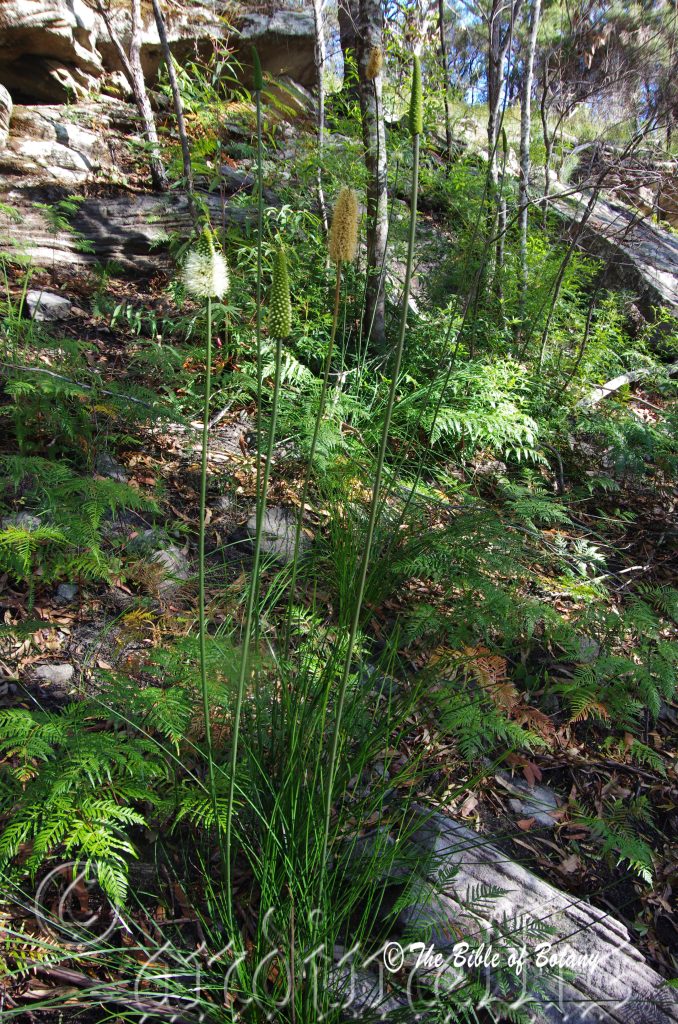
Pyriformis Floral Reserve Woolgoolga – Nana Glen NSW
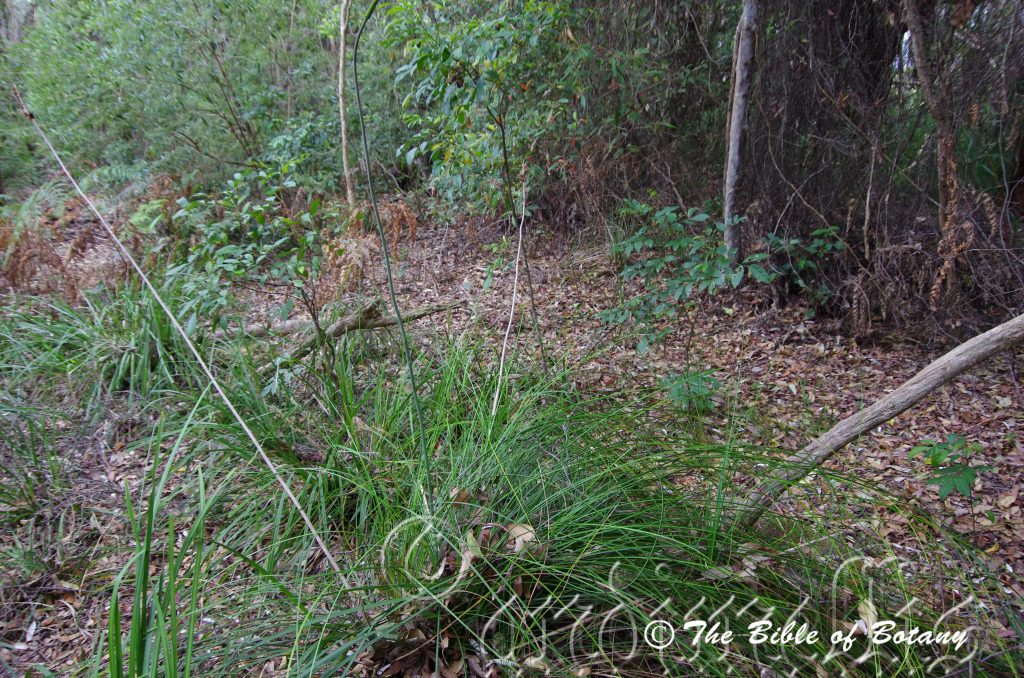
Lake Innes National Park NSW
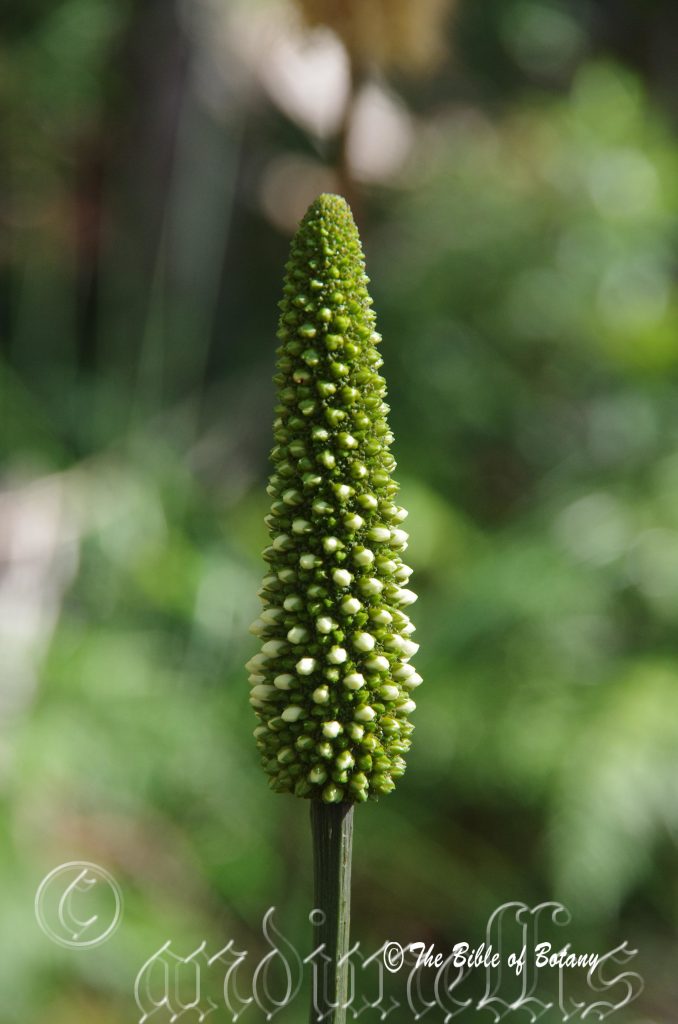
Pyriformis Floral Reserve Woolgoolga – Nana Glen NSW
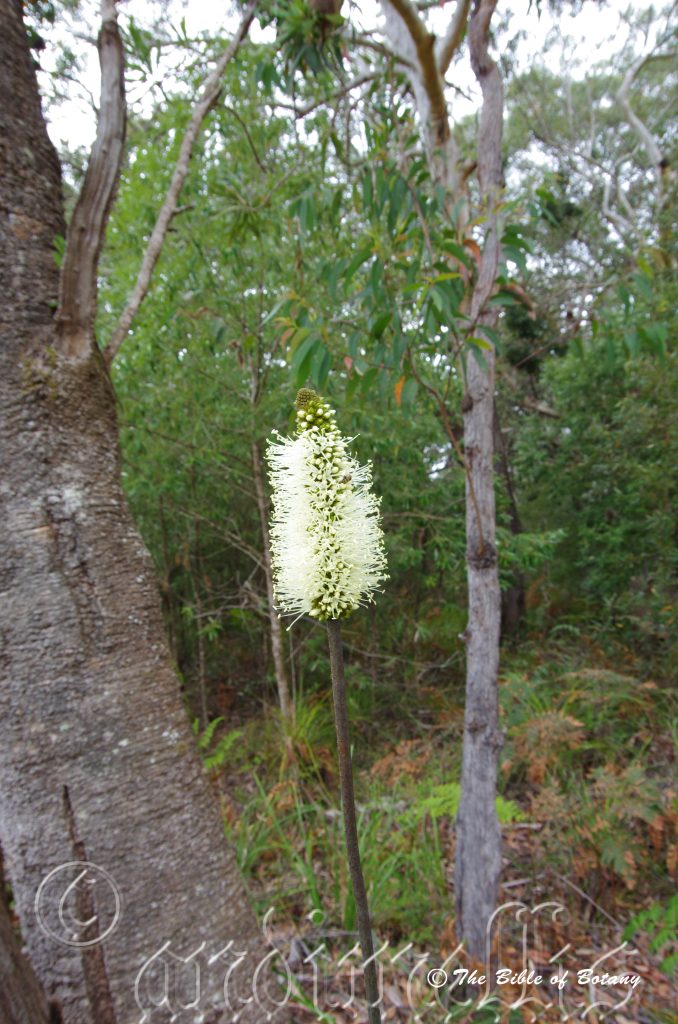
Lake Innes National Park NSW
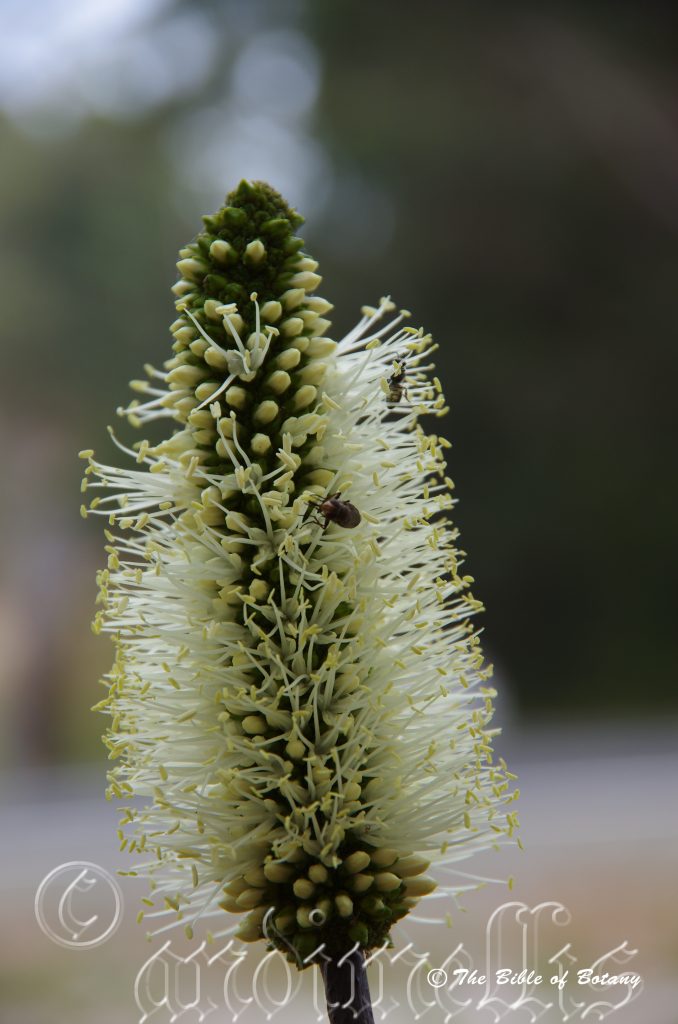
Lake Innes National Park NSW
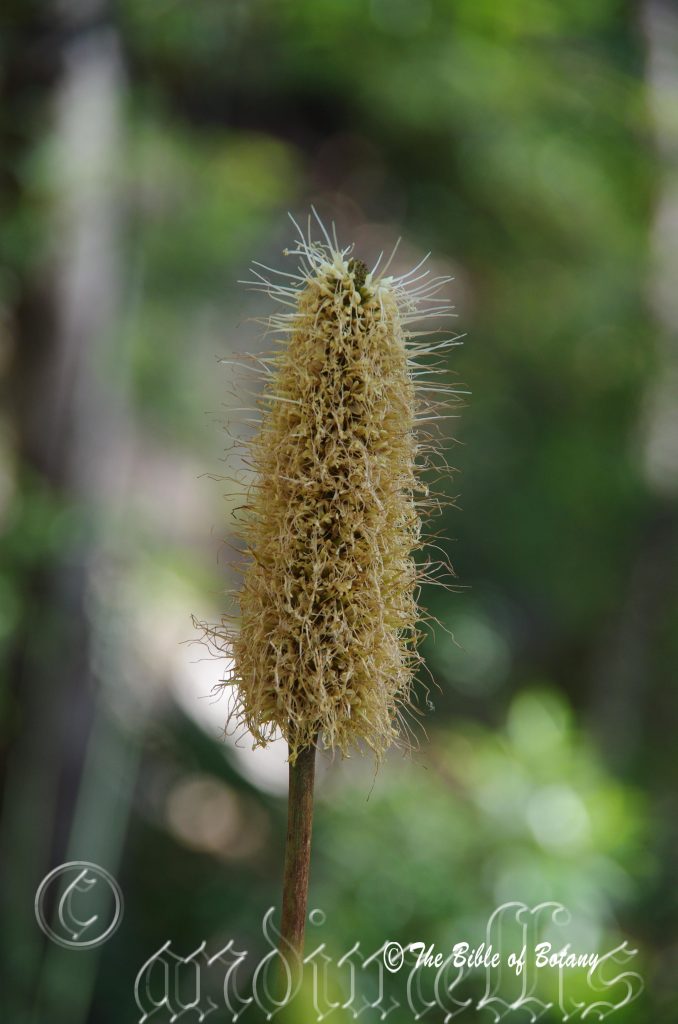
Pyriformis Floral Reserve Woolgoolga – Nana Glen NSW
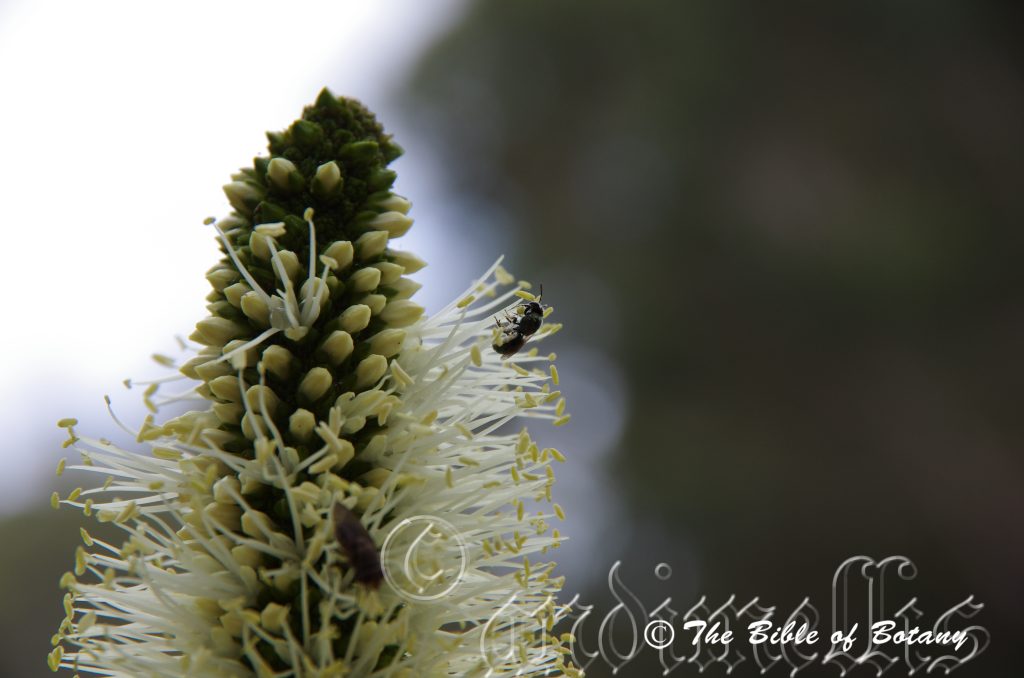
Lake Innes National Park NSW
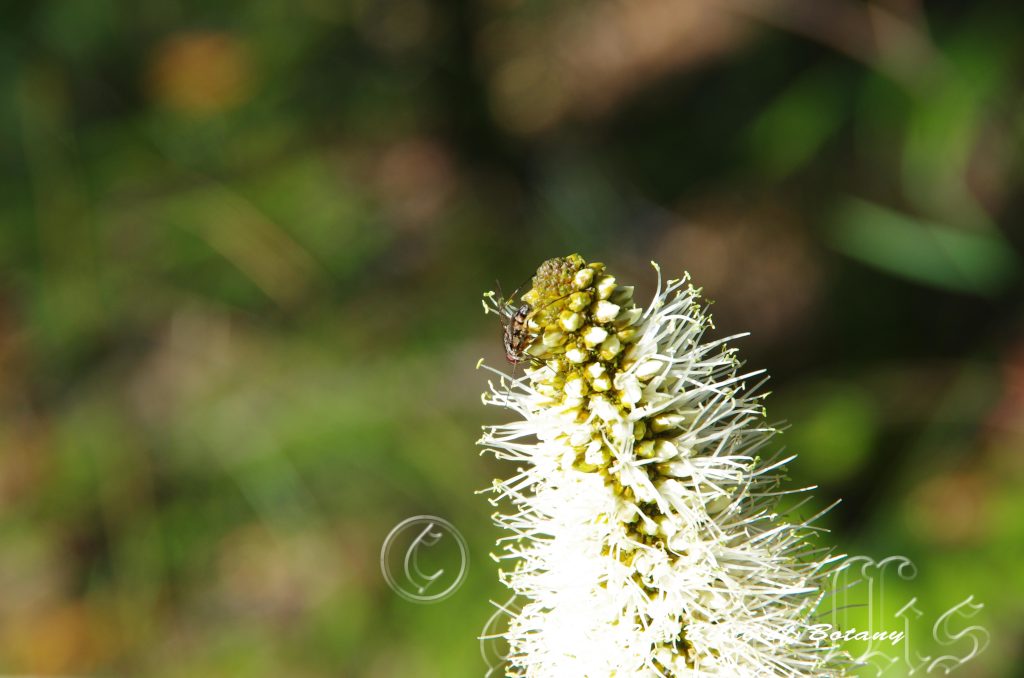
Tetragonula carbonaria Lake Innes National Park NSW
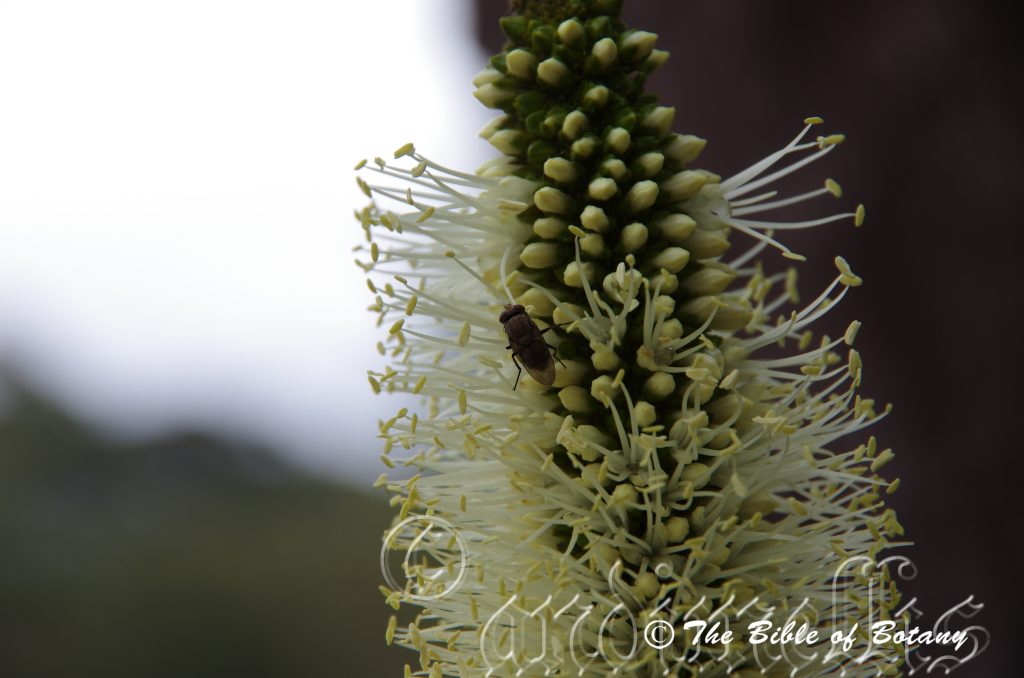
Unknown pollen Fly Lake Innes National Park NSW
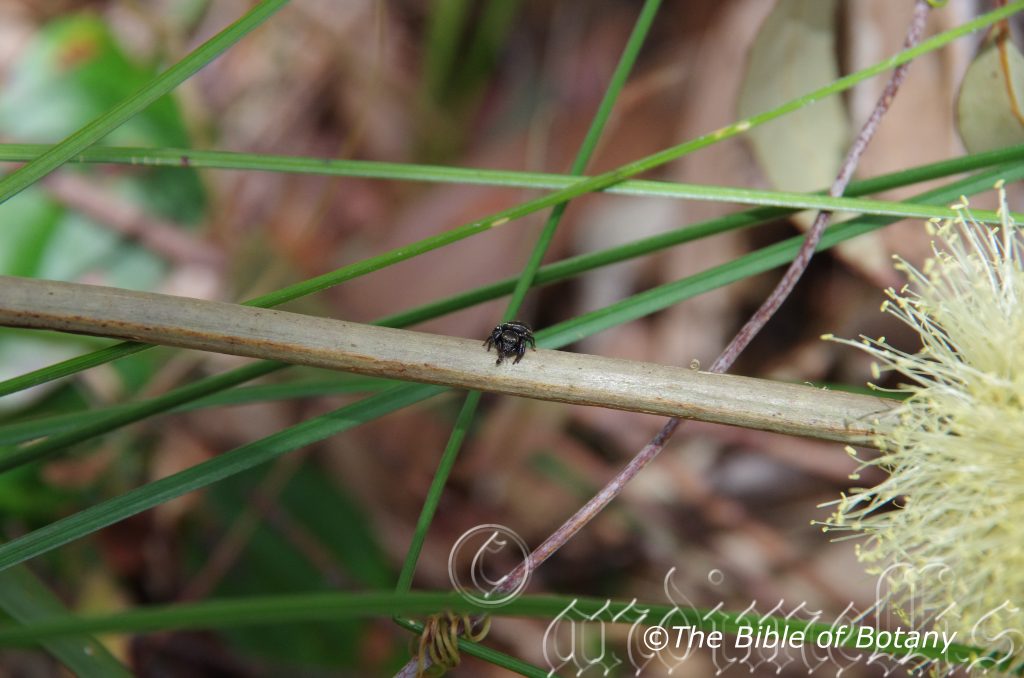
Unknown Spider North Coast Botanic Gardens Coffs Harbour NSW
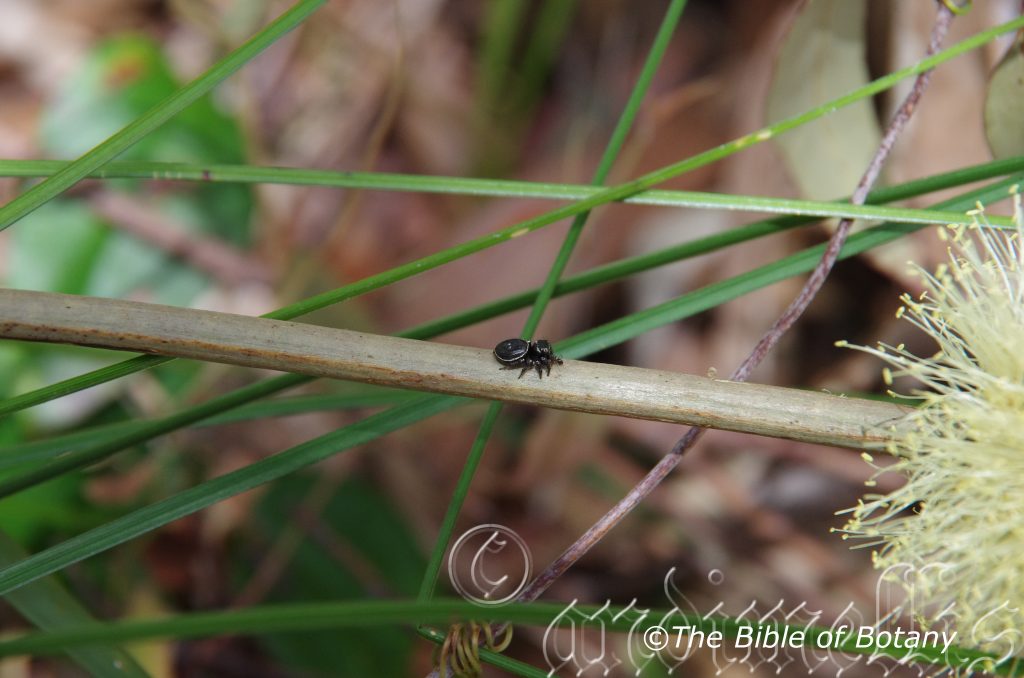
Unknown Spider North Coast Botanic Gardens Coffs Harbour NSW
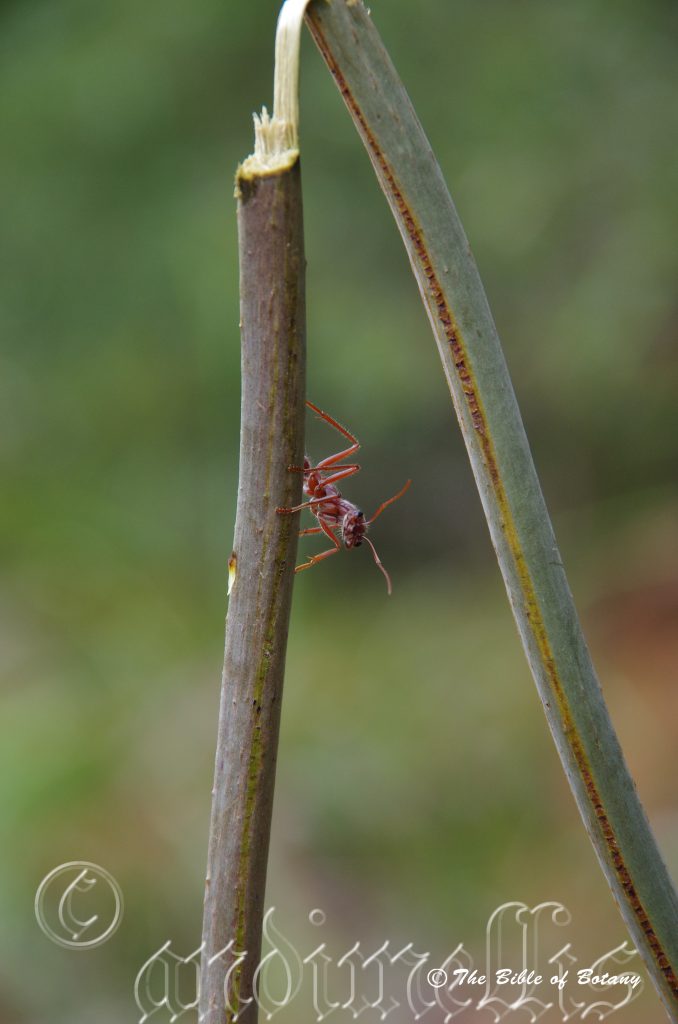
Xanthorrhoea macronema
Classification:
Unranked: Monocots
Order: Asparagales
Family: Xanthorrhoeaceae
Tribe: Xanthorrhoeoideae
Genus: From Xanthós, which is Ancient Greek for yellow and Rhoea, which is Ancient Greek for flowing or to flow. It refers to the golden-yellow sap, which flows freely from many species and which was used as a glue/resin by local aborigines. This is a spelling error for Xantorrhoea.
Specie: From Makros, which is Ancient Greek for large and Nêma, which is Ancient Greek or Nēma, which is Latin for a thread. It refers to plants, which have very long structures or organs like the flowering spikes.
Sub specie:
Common Name:
Distribution:
Xanthorrhoea macronema is found south from Fraser Island to in southern coastal Queensland to near Hellensburg in central coastal New South Wales.
https://avh.ala.org.au/occurrences/search?taxa=Xanthorrhoea+macronema#tab_mapView
Habitat Aspect:
Xanthorrhoea macronema prefers light dappled shade to full sun. It grows moist, open woodlands, moist schlerophyll forests or open woodland heaths behind the coastal frontal dunes. The altitude ranges from 5 meters ASL to 250 meters ASL.
The temperatures range from minus 1 degree in August to 36 degrees in January.
The rainfall ranges from lows of 800mm to 2000mm average per annum.
Soil Requirements:
Xanthorrhoea macronema prefers coarse sands to light fatty gritty clays. The soils are usually derived from decomposed sandstones or accumulated peaty beach sands. The soils pH ranges from 4.5pH to 6.5pH. It does not tolerate waterlogged soils. Non saline soils to moderately saline soils are tolerated.
Height & Spread:
Wild Plants: 0.2m to 0.5m by 1m to 3m.
Characteristics:
Xanthorrhoea macronema grows as a trunkless grass tree. The plants branch below the ground surface and appear as 1 to several tufts above the ground.
The tufted, acicular leaves of Xanthorrhoea macronema measure 400mm to 600mm in length by 2.5mm to 3.5mm in width and 1.2mm to 1.8mm in depth. The leaves in cross section are irregularly rounded depressed cuneate towards the margins and often irregularly concave on the upper surface. The bases are swollen like petioles that eventually become woody while the apexes are acute. The concolourous laminas are pale green to deep green semi glossy and glabrous. The leaf margins are entire and arching.
The inflorescences of Xanthorrhoea macronema are born on a long spike at the end of a long scape from the center of the cluster of crown leaves. The deep grey-green to deep green scapes turn brown after anthesis of the last flowers and the ripening of the seeds. They taper very slightly from the base to spike. The scapes measure 1000mm to 1600mm in length by 5mm to 10mm in diameter. The flowering portion of the spikes measure 50mm to 130 in length by 15mm to 20mm in diameter.
The deep green, triangular lobes of the bracts which are clustered along the full length of the spike are acute to narrowly triangular, erect, sub glabrous to covered in rusty-brown hirsute hairs. They measure 6.5mm to 10mm in length.
The outer tepals are pale greenish tinged and marked reddish-brown and turn brown after anthesis. The 3 glabrous outer tepals are obtuse to acute without a beak. The 3 inner erect tepals are pastel green narrow triangular are cupuliform, obtuse at the apex and are without a beak.
The 6 stamens are free for their entire length and measure 5mm to 9mm in length. The filiform filaments taper to the creamy-yellow oblong versatile anthers.
The white style and stigma are glabrous while the ovary is pale creamy green. The pistil measures 4mm to 6mm in length. Xanthorrhoea johnsonii’s sweetly scented flowers appear from July to January especially after fire.
Xanthorrhoea macronema’s fruits are trigonous capsules. The olive-green capsules are glabrous with an acute apex and turn dull brown when ripe. The capsules measure 4mm to 5mm in length by 4mm to 5mm in width. The single deep brown-black seed is trigonous woody nut.
Confusing Specie:
Xanthorrhoea macronema’s florescence at the end of the scape is about 10mm of the total length. The scape measures 5mm to 10mm in diameter. The leaves in cross section are irregularly rounded depressed cuneate towards the margins and often irregularly concave on the upper surface and are pale green to deep green.
Xanthorrhoea fulva’s florescence at the end of the scape is 30mm to 50mm of the total length. The scape measures 10mm to 20mm in diameter. The leaves in cross section are irregularly rounded triangular and are blue-green or glaucous.
Wildlife:
Xanthorrhoea macronema’s do not appear to have any predators however the flower spikes are very attractive to many kinds of native insects, especially native bees, nectar feeding birds and insectivorous birds including the larger Yellow Wattle bird, (Anthochaera paradoxa) Little Wattle Bird, (Anthochaera chrysoptera) Red Wattle Bird (Anthochaera carunculata) and Leather head (Philemon corniculatus).
Most smaller honey eaters are attracted to the flowers which includes the Scarlet Honey Eater (Myzomela sanguinolenta) and the New Holland Honeyeater (Phylidonyris novaehollandiae).
Cultivation:
Xanthorrhoea macronema is a magnificent specimen plant for medium to large gardens where well drained soils on slopes or flats prevail on sandy or gravelly soils. This grass tree is the bushiest and most spectacular however it is the most problem some in establishing in areas and on soils where it originate from. In cultivation it will eventually grow from 1 meter to 1.8 meters in height by 0.8 meters to 1 meter in diameter when grown in the open.
It grows exceptionally well on lighter soils where deep leaf litter keeps the soil cool and some moisture retention is available. It must have full sun. If these requirements are met it can cope with temperatures as low as minus 3 degrees and up to 42 degrees. It is drought resistant once established and is the fastest growing of the Xanthorrhoea specie.
Try using it in a sunny court yard and foyer areas where at least half the day receives full sun and where a large rock, stump, informal frog or fish pond are the only other feature. Next to such features their long acicular leaves emit tremendously powerful scene that never wains in attractiveness or a possession of controlling influence upon all those who pass. I am surprised that it has never been used in commercial entrances and foyers to break the ice and give an intrinsic feeling of success and attention to detail.
It is great in medium to large rockeries as the main feature plant. Here it is best planted groups of 5 or 9 plants to create an open wallum scene. If it is surrounded by slightly taller plants with fine or large foliages that are deep green or pale green then year a round contrast can be created with a strong accent in the center of the bed. Even deep red or orange flowers will not distract from the viewers’ attention from the dominate affect at the center. It gives height, breadth and strength to the bed and this dominance is further accentuated when it is in flower. Its dominance in foliage will stand unchallenged in the plant world.
Xanthorrhoea macronema make brilliant displays in garden beds when simply planted beneath. Especially where Hibbertia scandens or Scaevola aemulum are used as the ground.
Propagation:
Seeds: The seeds of Xanthorrhoea macronema can be removed easily from the fruits.
Sow freshly treated seeds directly into a seed raising mix, keeping them moist not wet. Do not over water as the seeds will rot off before germination takes place. Place the trays in a cool shaded area with 50mm shade cloth in the bush house. The seeds are slow and erratic in germination so have patience in growing it.
When the seedlings are 50mm to 100mm tall, prick them out and plant them into 75mm native tubes using a good organic mix.
As the seedlings roots reach the bottom of the tubes plant them out into their permanent position. Do not delay.
Fertilize using Seaweed, fish emulsion or organic chicken pellets soaked in water and apply the liquid on an alternate basis. Fertilize every 2 months until the plants are well established then on twice annual basis in September or March to maintain better health, vitality and flowering.
Further Comments from Readers:
“Hi reader, it seems you use The Bible of Botany a lot. That’s great as we have great pleasure in bringing it to you! It’s a little awkward for us to ask, but our first aim is to purchase land approximately 1,600 hectares to link several parcels of N.P. into one at The Pinnacles NSW Australia, but we need your help. We’re not salespeople. We’re amateur botanists who have dedicated over 30 years to saving the environment in a practical way. We depend on donations to reach our goal. If you donate just $5, the price of your coffee this Sunday, We can help to keep the planet alive in a real way and continue to bring you regular updates and features on Australian plants all in one Botanical Bible. Any support is greatly appreciated. Thank you.”
In the spirit of reconciliation we acknowledge the Bundjalung, Gumbaynggirr and Yaegl and all aboriginal nations throughout Australia and their connections to land, sea and community. We pay our respect to their Elders past, present and future for the pleasures we have gained.
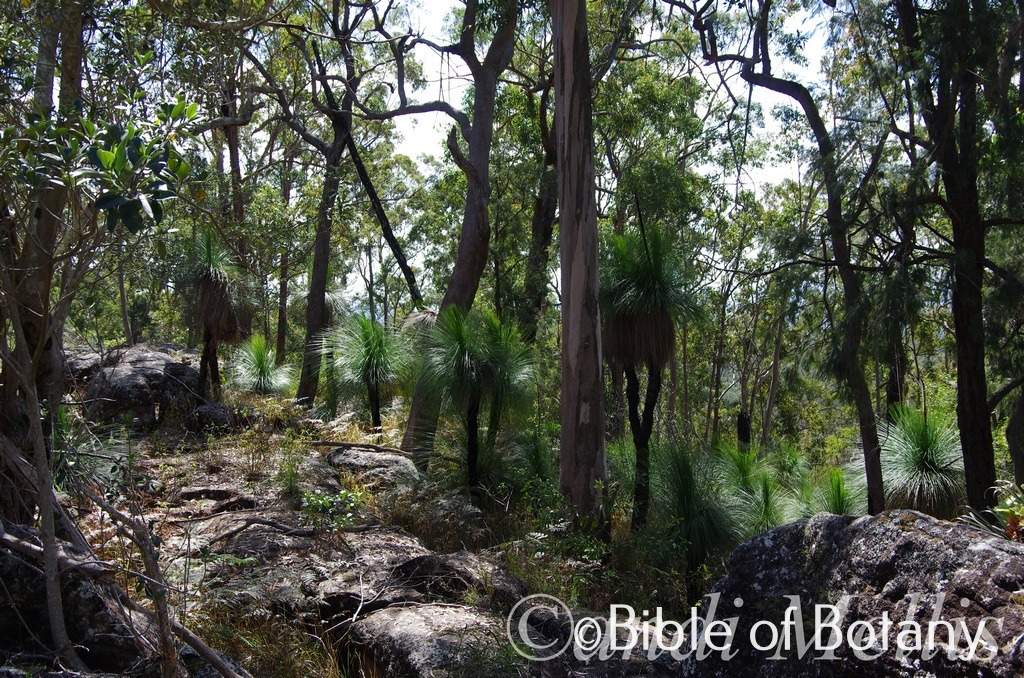
Xanthorrhoea malacophylla Ramournie National Park NSW
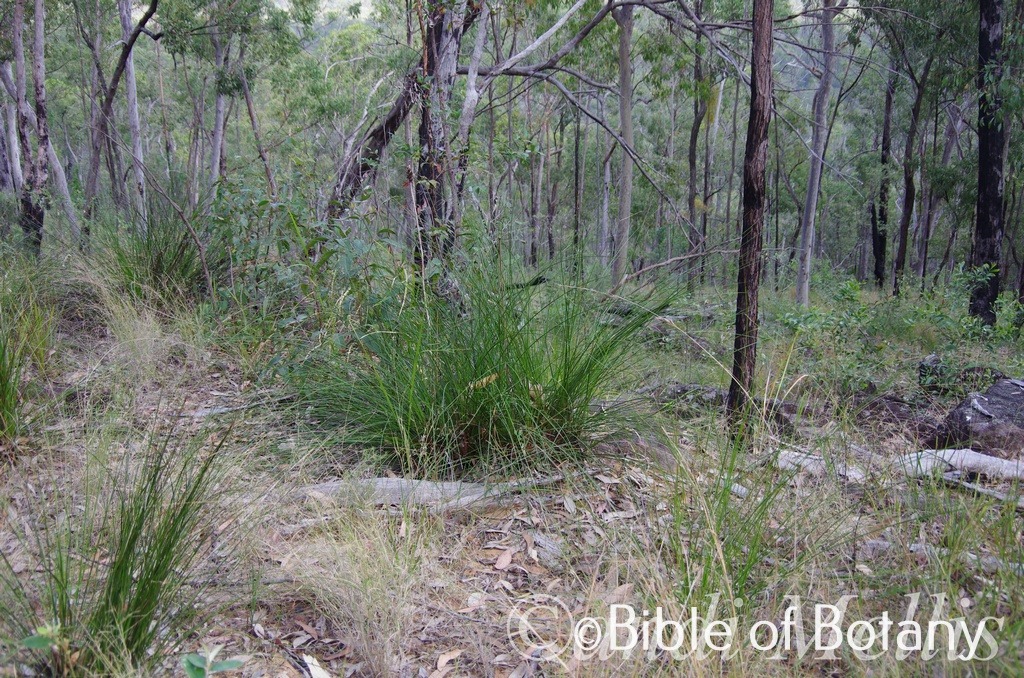
Xanthorrhoea malacophylla Ramournie National Park NSW
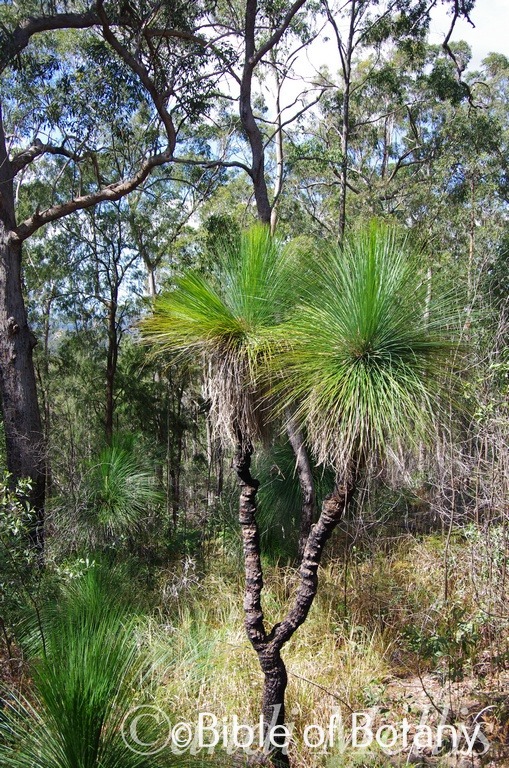
Xanthorrhoea malacophylla Ramournie National Park NSW
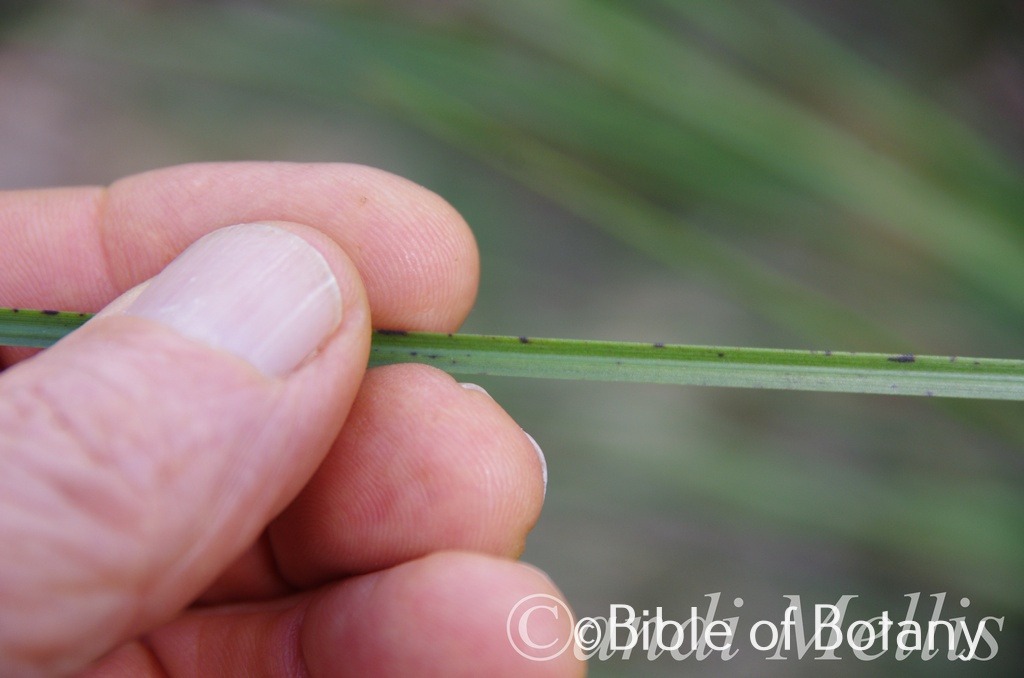
Xanthorrhoea malacophylla Ramournie National Park NSW
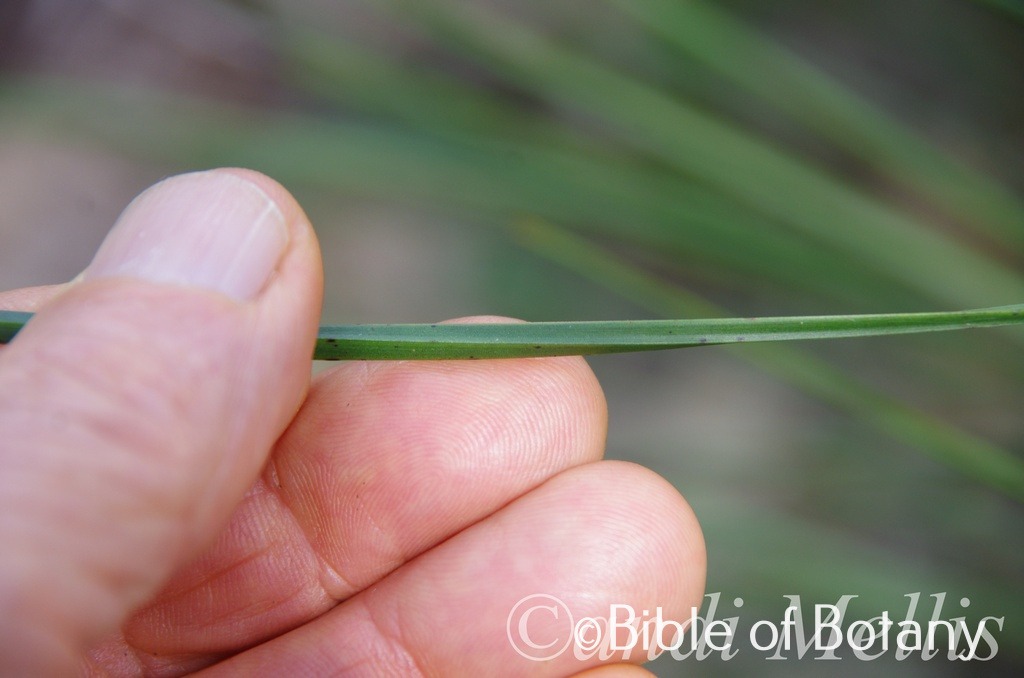
Xanthorrhoea malacophylla Ramournie National Park NSW

Xanthorrhoea malacophylla Ramournie National Park NSW
Xanthorrhoea malacophylla
Classification:
Unranked: Monocots
Order: Asparagales
Family: Xanthorrhoeaceae
Tribe: Xanthorrhoeoideae
Genus: From Xanthós, which is Ancient Greek for yellow and Rhoea, which is Ancient Greek for flowing or to flow. It refers to the golden-yellow sap, which flows freely from many species and which was used as a glue/resin by local aborigines. This is a spelling error for Xantorrhoea.
Specie: From Malakos, which is Ancient Greek for soft or softening and Phullon/Phýllon, which is Ancient Greek for a leaf. It refers to leaves, which look or feel softer than other species in the genus.
Sub specie:
Common Name:
Distribution:
Xanthorrhoea malacophylla is found south from Grevillea near Wyong in far north eastern New South Wales. It is found on the Great Dividing Range.
https://avh.ala.org.au/occurrences/search?taxa=Xanthorrhoea+malacophylla#tab_mapView
Habitat Aspect Climate:
Xanthorrhoea malacophylla prefers light dappled shade to full sun. It usually grows in moist sclerophyll forests, adjacent to dry rainforests, moist well developed rainforests or rarely in moist spots in dry schlerophyll forests. It is found on rocky ridges and steeper rockier slopes. The altitude ranges from 50 meters ASL to 750 meters ASL.
The temperatures range from minus 1 degree in August to 36 degrees in January.
The rainfall ranges from lows of 800mm to 2100mm average per annum.
Soil Requirements:
Xanthorrhoea malacophylla prefer better quality loams to medium clays. The soils are usually derived from decomposed, brown basalts, black basalts, metamorphic rocks, heavier types of granite and shale. The soils pH ranges from 5pH to 6.5PH. It does not tolerate waterlogged soils. Non saline soils to moderately saline soils are tolerated.
Height & Spread:
Wild Plants: 2m to 6.5m by 2m to 2.5m.
Characteristics:
Xanthorrhoea malacophylla grows as a tall grass tree. It develops a long, sturdy, deep grey trunk usually branches 2 to 5 times but plants have been known to branch twice this number.
The tufted, narrow linear leaves of Xanthorrhoea malacophylla are transverse-rhombic to depressed obtrullate in cross section. The leaves measure 800mm to 1000mm in length by 2.5mm to 7mm in width and 1.3mm to 2.4mm in thickness. The bases are swollen like petioles that are persistent and eventually become woody while the apexes are acute. The concolourous laminas are deep green, green semi glossy and glabrous. The leaf margins are entire and arching.
The inflorescences of Xanthorrhoea malacophylla are born on a long spike at the end of a long scape from the center of the cluster of crown leaves. The deep grey-green to deep green scapes turn brown after anthesis of the last flowers and the ripening of the seeds. They taper very slightly from the base to spike. The scapes measure 1300mm to 1800mm in length by 20mm to 30mm in diameter while the inflorescence measure 1100mm to 1800 in length by 30mm to 50mm in diameter.
The deep reddish triangular lobes of the cluster bracts are found along the full length of the inflorescence and are acute to narrow triangular, divaricate, and are very sparsely to sparsely covered in rusty-brown hirsute hairs. They measure 5mm to 10mm in length. The packing bracts are acute, and are very sparsely to sparsely covered in rusty-brown hirsute hairs.
The outer tepals are acute to triangular, with a short beak and without a proboscis. The outer tepals are pale yellowish-green tinged and marked reddish-brown and turn brown after anthesis. It is glabrous to sub glabrous. The inner tepals are recurved without a proboscis and are glabrous except for a few reddish hirsute hairs near the apex.
The 6 stamens are free for their entire length and measure 5mm to 8mm in length. The filaments taper to the creamy-yellow oblong versatile anthers.
The white style and stigma are glabrous while the ovary is pale creamy green. The pistil measures 4mm to 6mm in length. The sweetly scented flowers appear from May to September and are more prolific following a fire.
Xanthorrhoea malacophylla’s fruits are trigonous capsules. The olive-green capsules are glabrous with an acute apex and turn glossy brown when ripe. The capsules measure 4mm to 7mm in length by 4mm to 5mm in width. The single deep brown-black seed is a flattened trigonous woody nut.
Wildlife:
Xanthorrhoea malacophylla’s do not appear to have any predators however the flower spikes are very attractive to many kinds of native insects, especially native bees, nectar feeding birds and insectivorous birds including the larger Yellow Wattle bird, (Anthochaera paradoxa) Little Wattle Bird, (Anthochaera chrysoptera) Red Wattle Bird (Anthochaera carunculata) and Leather head. (Philemon corniculatus)
Most smaller Honeyeaters are attracted to the flowers for the nectar which includes the Brown Honeyeater (Melithreptus brevirostris)
Xanthorrhoea malacophylla make brilliant displays in garden beds when simply planted beneath. Especially where Hibbertia scandens or Scaevola aemulum are used as the ground.
Cultivation:
Xanthorrhoea malacophylla is a magnificent large specimen grass tree for medium to large gardens where well drained soils on slopes or ridges prevail on sandy or gravelly soils. This grass tree is one of the bushiest and most spectacular however it is the most problem some in establishing in areas and on soils even where it originated from. In cultivation it eventually grows from 5 meter to 6 meters in height by 1.8 meters to 2.5 meter in diameter when grown in the open.
It grows exceptionally well on lighter soils where deep leaf litter keeps the soil cool and some moisture retention is available. It must have full sun for most of the day. If these requirements are met it can cope with temperatures as low as minus 3 degrees and up to 42 degrees. It is drought resistant once established and is one of the fastest growing Xanthorrhoea specie.
Xanthorrhoea malacophylla would make an excellent accent plant in front of low set commercial, industrial sheds and school gardens where it will break up hard rigid architectural lines and give warmth, breadth and add plenty of interest to a building.
Try using it in a sunny courtyard or foyer areas where at least half the day receives full sun and where a large rock, stump, informal frog or fish pond are the only other feature. Next to such features their long acicular leaves emit tremendously powerful scene that never wains in attractiveness or a possession of controlling influence upon all those who pass. I am surprised that it has never been used in commercial entrances and foyers to break the ice and give an intrinsic feeling of success and attention to detail.
It is great in large rockeries as the main feature plant. Here it is best planted groups of 5 or 9 plants to create an open wallum scene. If it is surrounded by slightly taller plants with fine or large foliages that are deep green or pale green then year a round contrast can be created with a strong accent in the center of the bed. Even deep red or orange flowers will not distract from the viewers’ attention from the dominate affect at the center. It gives height, breadth and strength to the bed and this dominance is further accentuated when it is in flower. Its dominance in foliage will stand unchallenged in the plant world.
Propagation:
Seeds: The seeds of Xanthorrhoea malacophylla can be removed easily from the fruits.
Sow freshly treated seeds directly into a seed raising mix, keeping them moist not wet. Do not over water as the seeds will rot off before germination takes place. Place the trays in a cool shaded area with 50mm shade cloth in the bush house. Seeds are often slow to germinate and definately slow to establish themselves, so have a little patience when growing.
When the seedlings are 50mm to 100mm tall, prick them out and plant them into 75mm native tubes using a good organic mix.
As the seedlings roots reach the bottom of the tubes plant them out into their permanent position. Do not delay.
Fertilize using Seaweed, fish emulsion or organic chicken pellets soaked in water and apply the liquid on an alternate basis. Fertilize every 2 months until the plants are well established then on twice annual basis in September or March to maintain better health, vitality and flowering.
Further Comments from Readers:
“Hi reader, it seems you use The Bible of Botany a lot. That’s great as we have great pleasure in bringing it to you! It’s a little awkward for us to ask, but our first aim is to purchase land approximately 1,600 hectares to link several parcels of N.P. into one at The Pinnacles NSW Australia, but we need your help. We’re not salespeople. We’re amateur botanists who have dedicated over 30 years to saving the environment in a practical way. We depend on donations to reach our goal. If you donate just $5, the price of your coffee this Sunday, We can help to keep the planet alive in a real way and continue to bring you regular updates and features on Australian plants all in one Botanical Bible. Any support is greatly appreciated. Thank you.”
In the spirit of reconciliation we acknowledge the Bundjalung, Gumbaynggirr and Yaegl and all aboriginal nations throughout Australia and their connections to land, sea and community. We pay our respect to their Elders past, present and future for the pleasures we have gained.
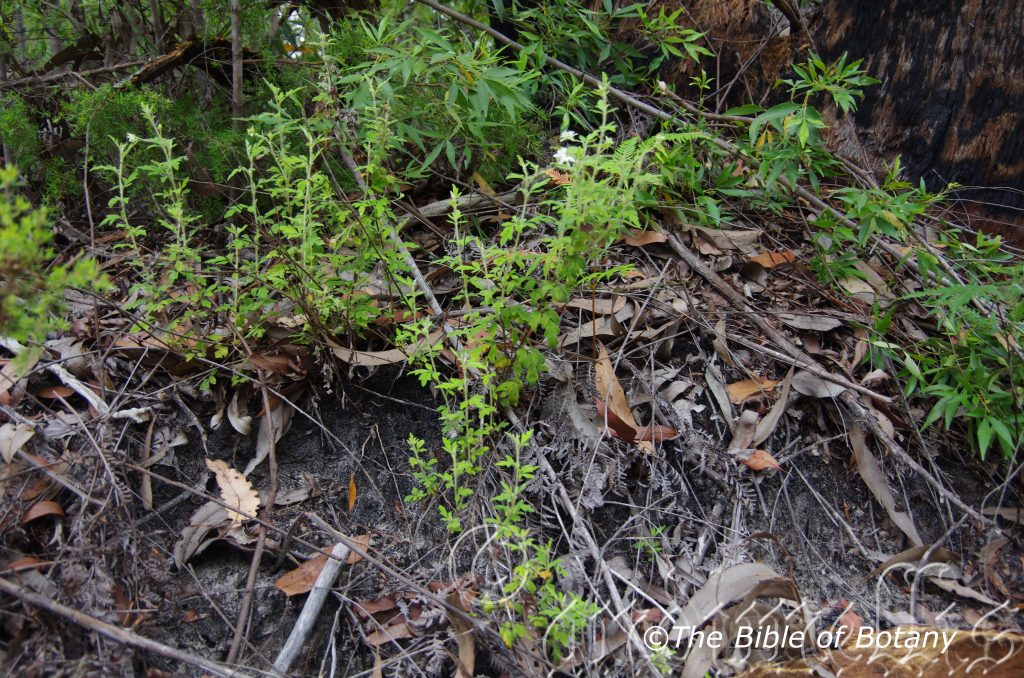
Fortis Creek National Park NSW
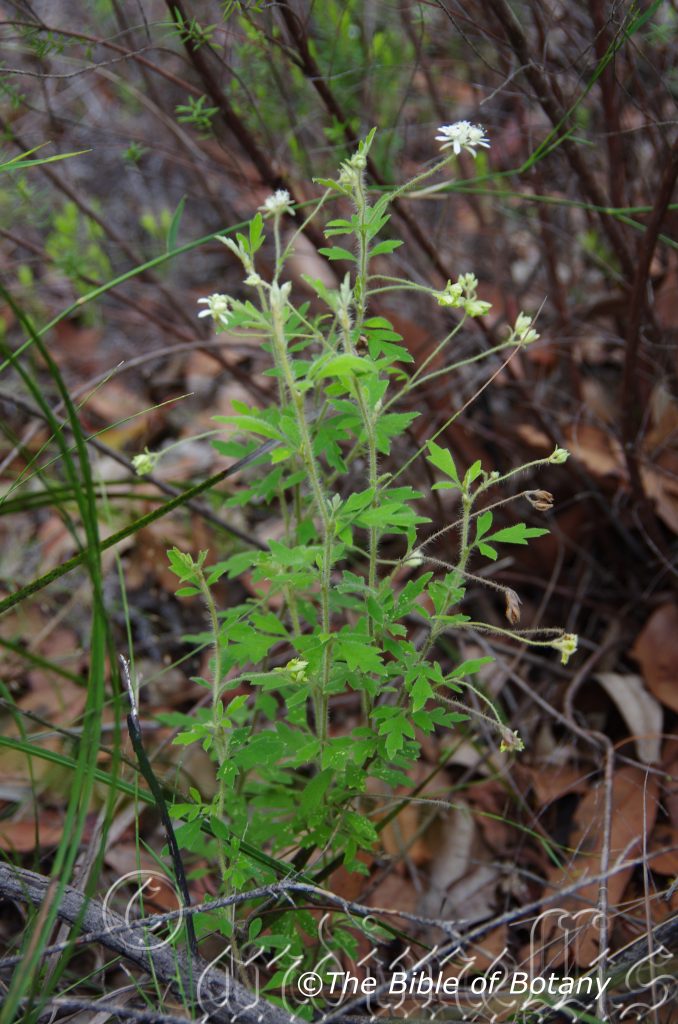
Fortis Creek National Park NSW
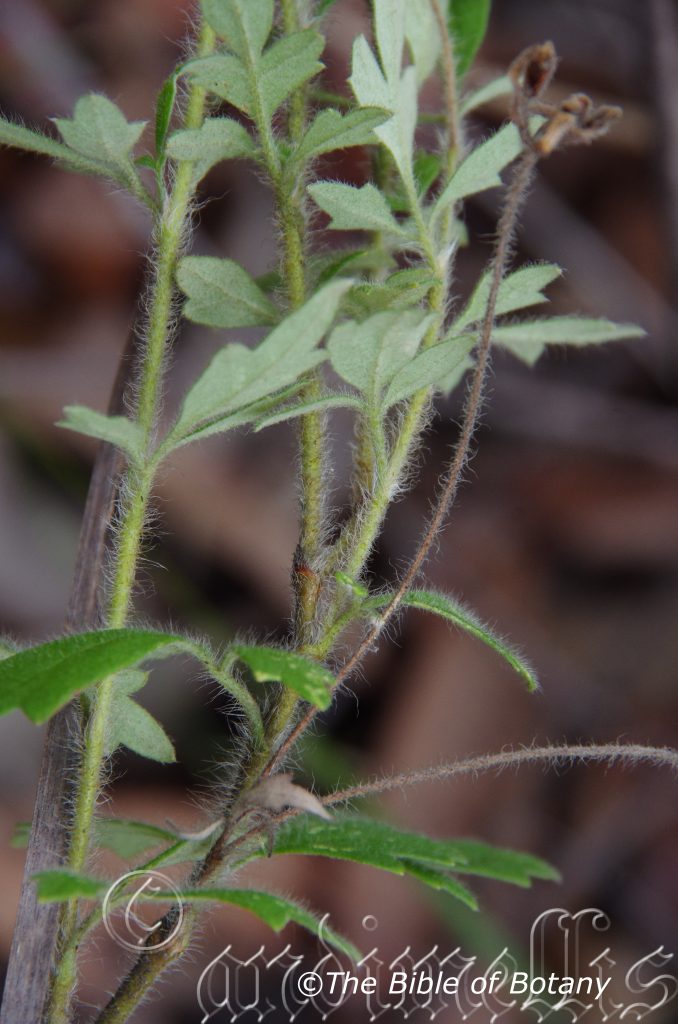
Fortis Creek National Park NSW
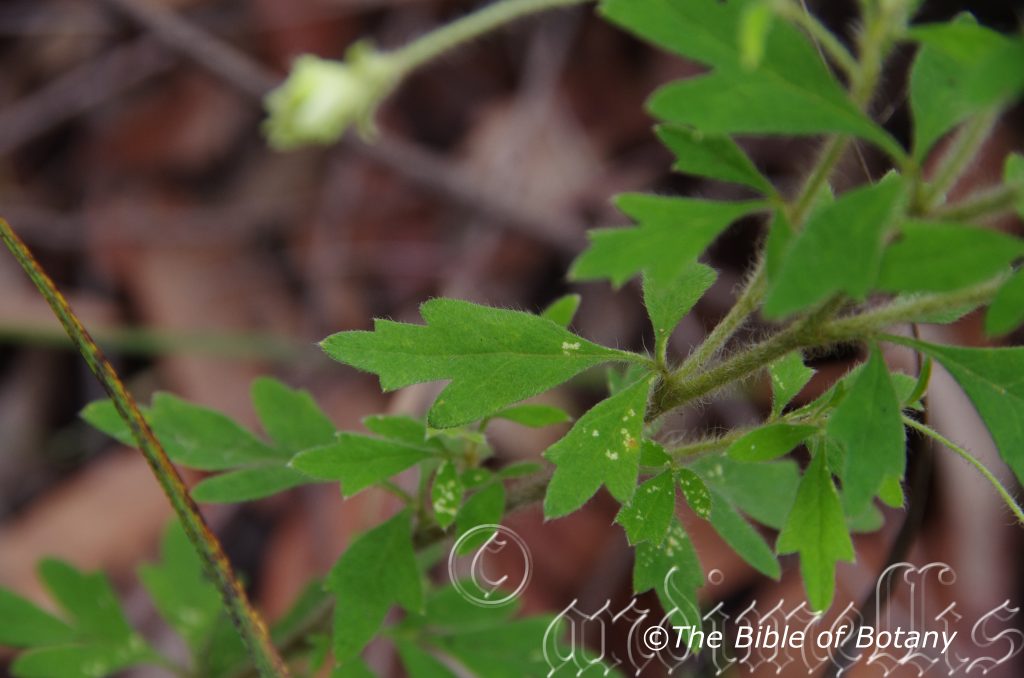
Fortis Creek National Park NSW
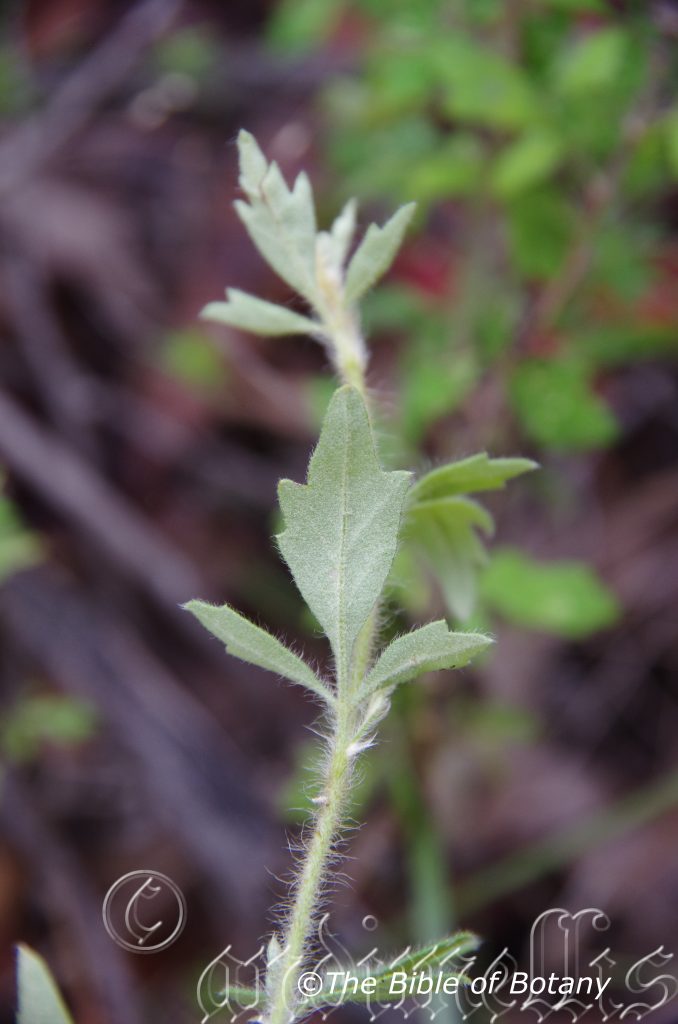
Fortis Creek National Park NSW
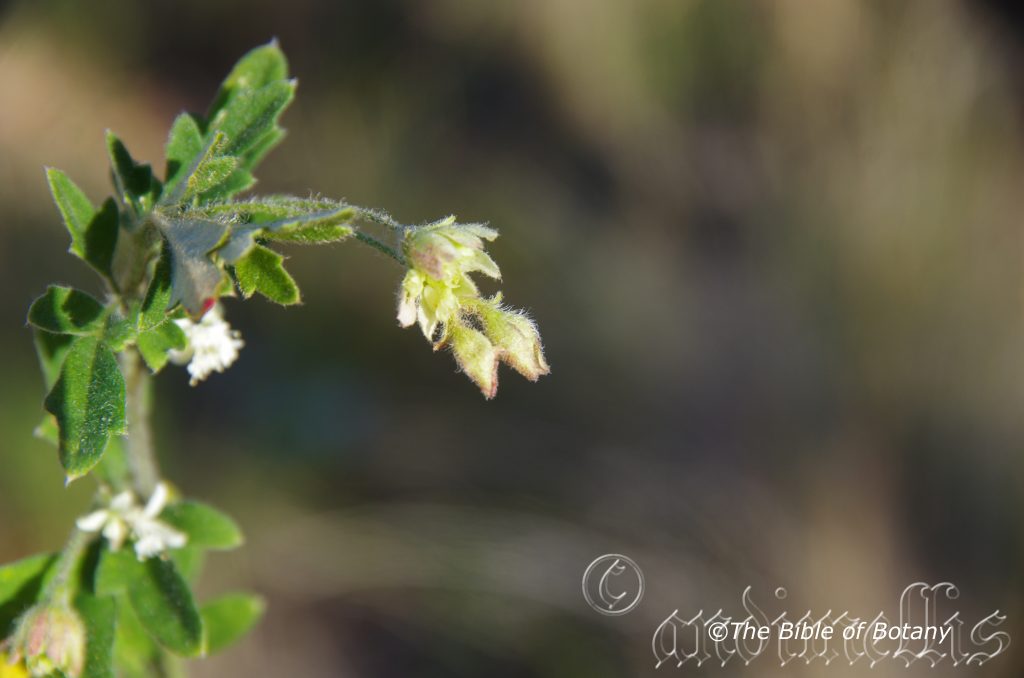
Fortis Creek National Park NSW
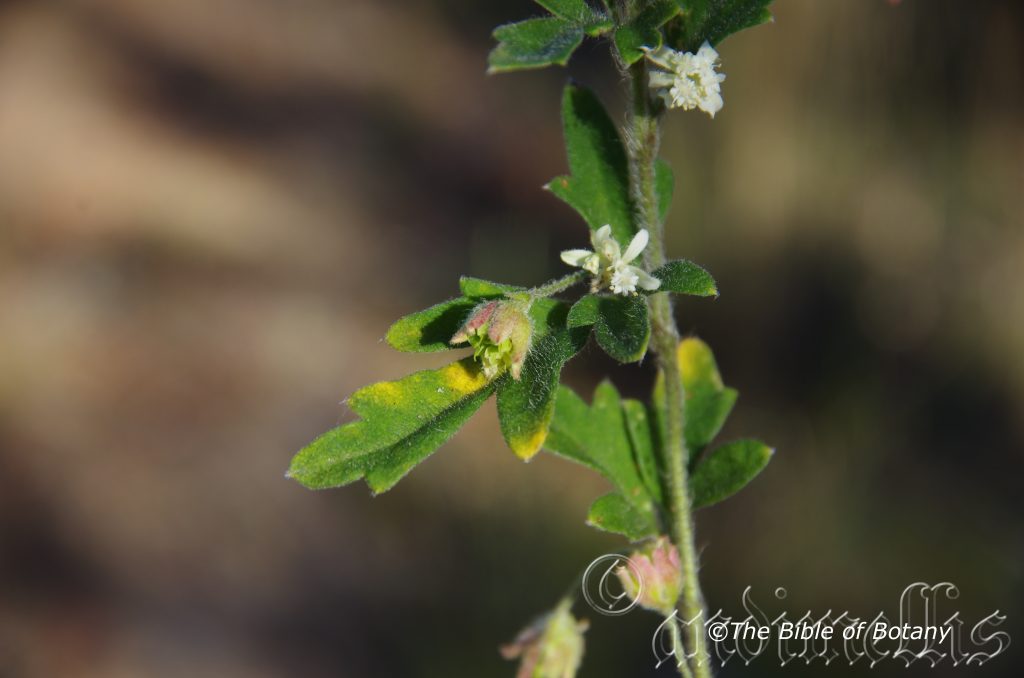
Fortis Creek National Park NSW
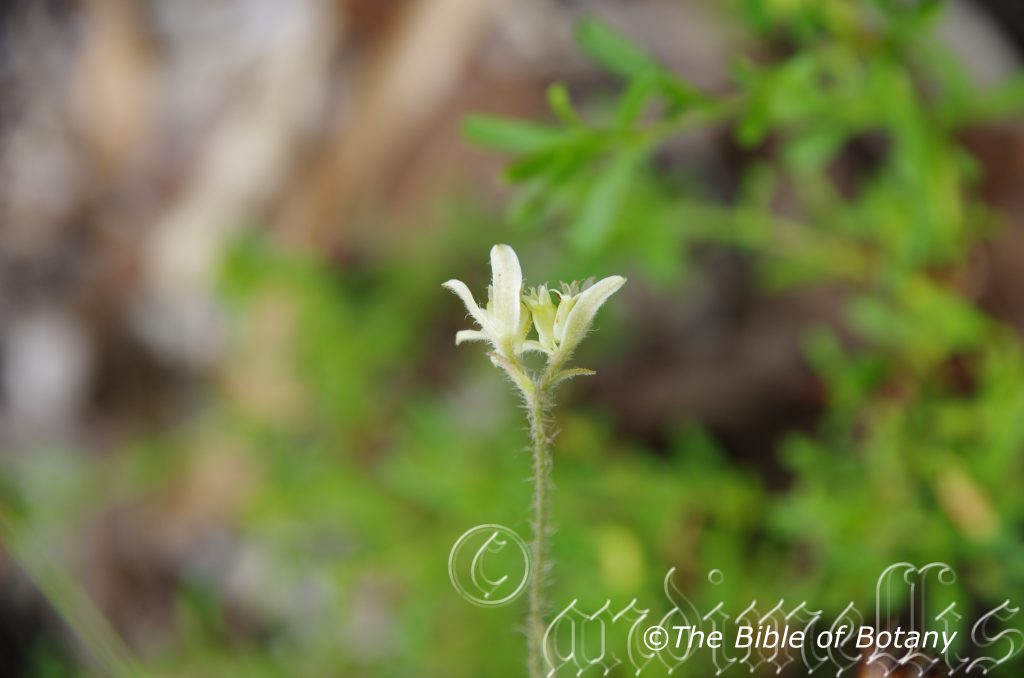
Fortis Creek National Park NSW
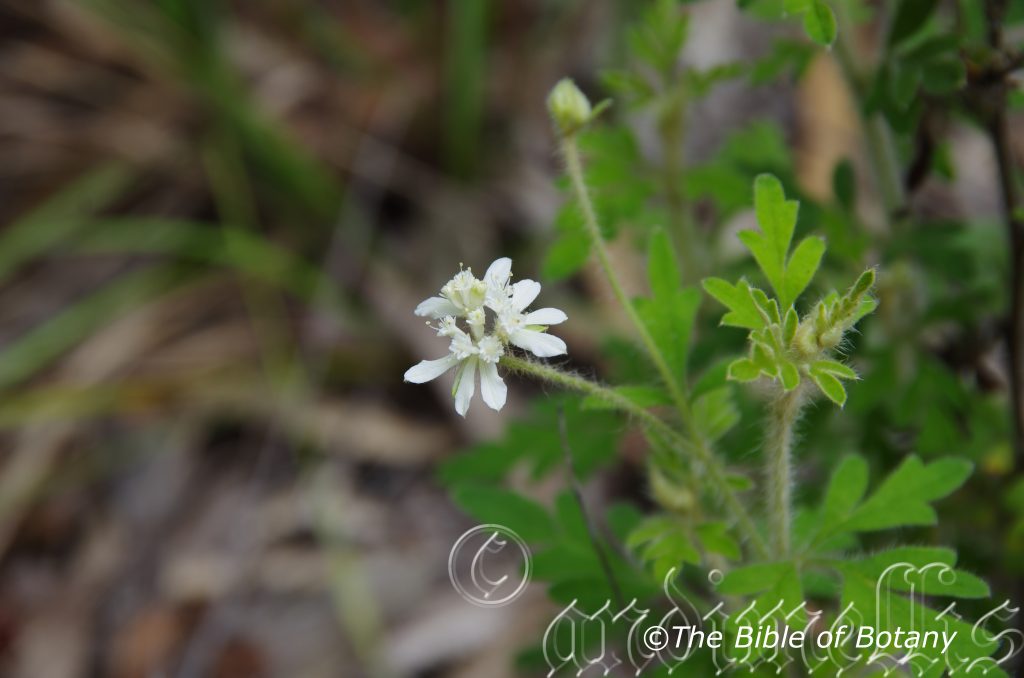
Fortis Creek National Park NSW
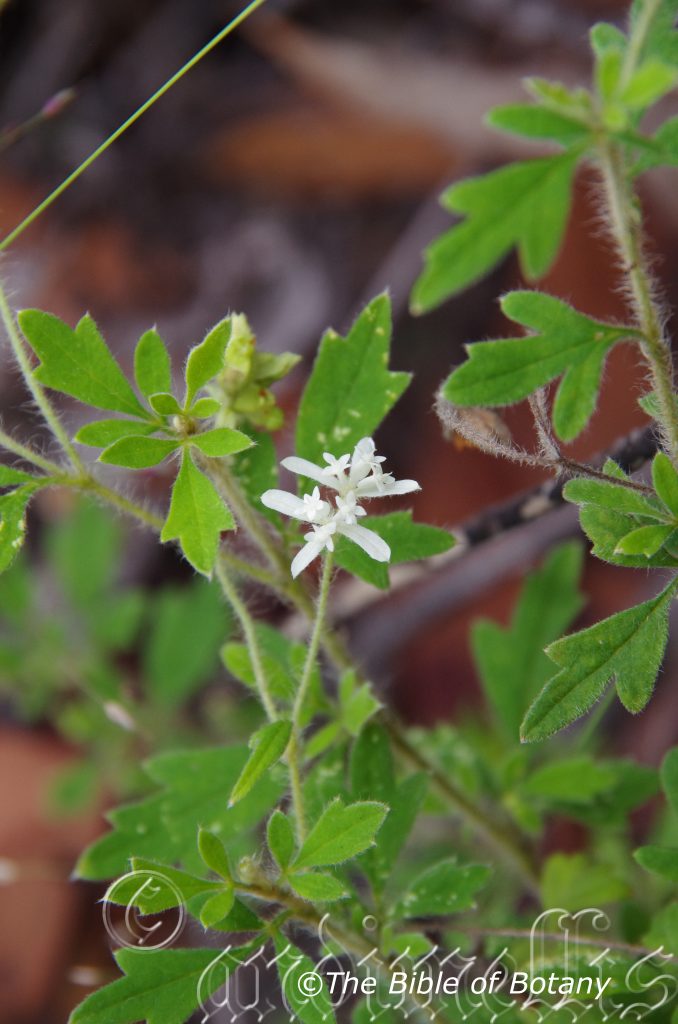
Fortis Creek National Park NSW
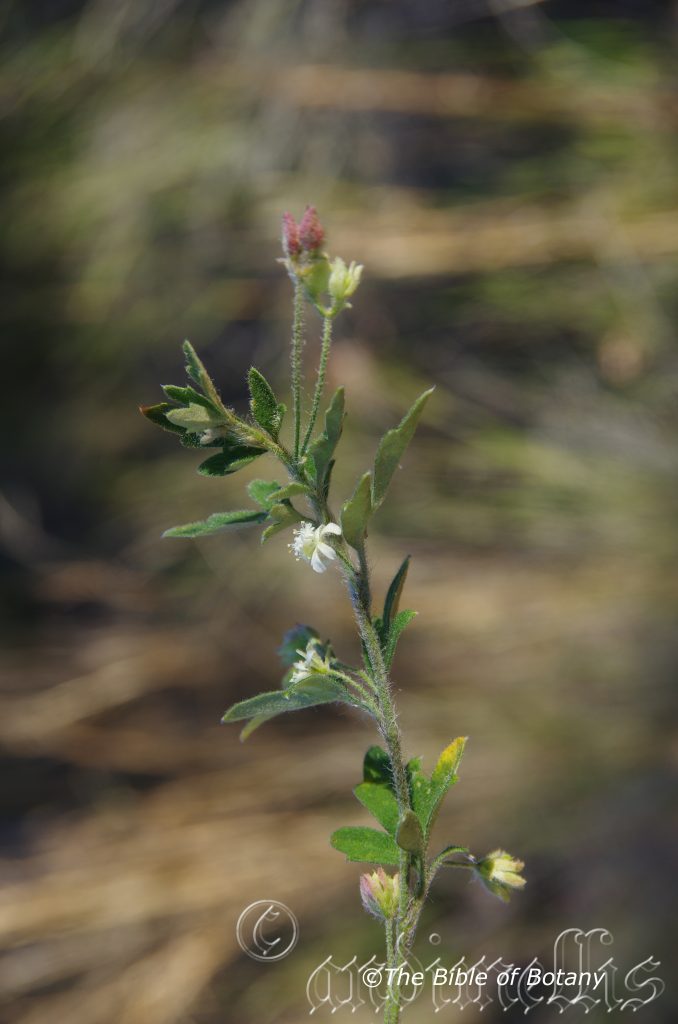
Fortis Creek National Park NSW
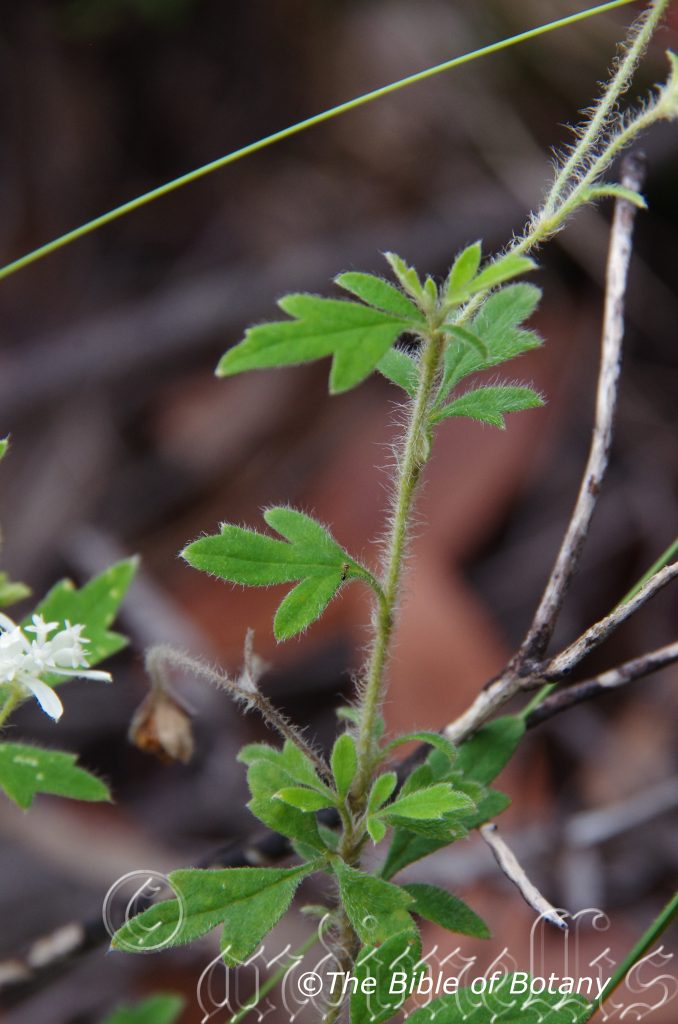
Fortis Creek National Park NSW
Xanthosia pilosa
Classification:
Unranked: Eudicots
Class: Asterids
Order: Apiales
Family: Apiaceae
Subfamily: Mackinlayoideae
Genus: From Xanthós, which is Ancient Greek for yellow. It refers to flowers, which are yellow in many of the earlier species discovered.
Specie: From Pilōsum, which is Latin for short, soft, wavy hairs. It refers to organs, which are covered in soft wavy hairs.
Sub specie:
Common Name: Woolly Xanthosia.
Distribution:
Xanthosia pilosa is found south from Marlborough and Charleville in southern Queensland to the Mount Black Flora and Fauna Reserve in northern central Victoria and across to the Snowy River near the coast.
https://avh.ala.org.au/occurrences/search?taxa=Xanthosia+pilosa#tab_mapView
Habitat Aspect Climate:
Xanthosia pilosa prefers light dappled shade to full sun. It grows in sclerophyll forests, heaths or in open riparian zones. The altitude ranges from 5 meters ASL to 1400 meters ASL.
The temperatures range from minus 3 degrees in August to 40 degrees in January.
The rainfall ranges from lows of 500mm to 800mm average per annum.
Soil Requirements:
Xanthosia pilosa prefers rocky sands, gravelly light fatty clays to rocky fatty clays. The soils are usually derived from partially decomposed granites or at times partially decomposed sandstones. The soils pH ranges from 5pH to 6pH. It does not tolerate waterlogged soils. Non saline soils to moderately saline soils are tolerated.
Height & Spread:
Wild Plants: 0.3m to 0.7m by 0.5m to 1m.
Characteristics:
Xanthosia pilose grows as a moderately erect bushy shrub. The stems are usually moderately covered in white pilose hairs or at times are glabrous.
The opposite leaves of Xanthosia pilosa vary greatly in size and shape even on the same plant and on the same stem. The leaves are simple or trifoliate with the apical lobe being the longest. The elliptic to broad ovate leaves measure 4mm to 55mm in length by 5mm to 55mm in width. The petiole is moderately to densely covered in white pilose hairs and measures 2mm to 8mm in length. The bases are cuneate to tapering attenuate while the apexes including those on the lobes are acute, broad acute, obtuse or truncate. The discolourous laminas are mid green to mid grey-green, and moderately to densely covered in white pilose hairs or at times are glabrous on the upper laminas while the lower laminas are off white or brownish and densely covered in off white or brownish tomentose hairs. The laminas are slightly convex on the upper surface and decurve gently downwards near the apex. The margins are entire or are usually 3 to 7 lobed. The mid vein and main laterals are slightly prominent on the lower laminas.
The inflorescences of Xanthosia pilosa are compound umbels born from the leaf axils. There are 2 to 20 individual flowers on the umbel. The mid green peduncules are moderately to densely covered in long white pilose hairs and measure 0mm to 50mm in length. The yellow-green petaloid bracteoles turn reddish-cream after anthesis and are sparsely covered in long, white pilose hairs. The strongly veined, linear to elliptic or ovate bracteoles measure 3mm to 10mm in length. The cream to creamy-yellow ovate sepals measure 1mm to 1.6mm in length while the pastel creamy-green to creamy-yellow petals measure 1mm to 1.4mm in length.
The pastel creamy-green to creamy yellow Stylopodium are covered in white hirsute hairs. The flowers appear from September to March and often extend into winter when favourable warm conditions extend beyond March near the coast.
Xanthosia pilosa’s fruits are 7 to 9 ribbed mericarps. The mericarps measure 2mm to 3mm in length by 2mm to 3mm in diameter. The green mericarps turn straw coloured when ripe.
Wildlife:
Xanthosia pilosa’s wildlife is unknown to the author.
Cultivation:
Xanthosia pilosa very unusual plants for most semi-arid gardens with dry summer Mediterranean type climates. In cultivation it grows from 0.4 meters to 0.5 meters in height by 0.5 meters to 0.6 meters in diameter when grown in the open on better quality organic soils.
It grows exceptionally well on lighter soils where deep leaf litter keeps the soil cool and moisture at an even level. If these requirements are met it can cope with temperatures as low as minus 4 degrees and up to 40 degrees. It is moderately drought resistant with in its normal zones.
Add to the above, if it is given an adequate supply of water and a little native fertilizer on a regular basis the plants should respond with good flowering and fruit over a long period.
Xanthosia pilosa would make an interesting contribution to a dry or moist heath garden. Here it can be used as the shorter growing plant scattered throughout the heath scene. When you design a flat heath garden which Xanthosia pilosa is well suited don’t use contours to display the plants as heath lands are almost always flat or have a slight rise. Plants must be planted close together but give them room to grow to their full potential of half a meter without crowding. Use short heath loving plants so you can see over the tallest ones with the exception of one or two plants at the most. These will be feature plants. The idea is to achieve a feeling of expansive flatness. This can be achieved with using the Xanthosia pilosa’s variable green leaves to great affect and having them contrast with finer pale green or soft grey to glaucous coloured foliages. Use a lot of procumbent plants like dwarf Verticordia specie or Hibbertia specie for colour. Mix them with other smaller shrubs so none of them dominate the scene but blend in to give a mosaic of foliage colours that you oversee. Here I immediately think of Actinotis helianthi or Grevillea thelemanniana for two great contrasting foliages.
Xanthosia pilosa would also make a good contribution to a sandy or rocky terrain rock garden. Here it can be used as fill in plants, scattered throughout the boulders. When you use them in area that is strewn with large boulders do not over crowd the scene as the boulders are a formidable part of the scene. Xanthosia pilosa is well suited to such conditions so use contours to display the plants boulder country are almost always rising and falling in contour and have sharp rises. Plants must be planted sparingly with short annuals between to give vibrant colour. The idea is to achieve a feeling of expansive harshness. This can be achieved with using Xanthosia pilosa’s unusual flowers contrasting strongly against blue foliages and pink flowers. If large deep green leaf plants are wanted try using them as prostrate plants to give more height to Xanthosia pilosa.
Propagation:
Seeds: The seeds of Xanthosia pilosa can be removed easily from the fruits. Sow fresh seeds directly into a seed raising mix, keeping them moist not wet. Do not over water as the seeds will rot off before germination takes place. Place the trays in a cool shaded area with 50mm shade cloth in the bush house. When the seedlings are 20mm to 25mm tall, prick them out and plant them into 50mm native tubes using a good organic mix.
As the seedlings roots reach the bottom of the tubes plant them out into their permanent position. Do not delay.
Cuttings: Fortunately Xanthosia pilosa cuttings are relatively easy to strike. Use 80mm to 150mm long semi hardwood cuttings from the present season’s growth. Take them in warmer months of the year. Remove half the leaves from the bottom section being careful not to tear the bark.
1 Prepare the cutting mix by adding two thirds sharp clean river sand, one third peat or one third perlite. These ingredients must be sterilized,
2 Select good material from non diseased plants,
3 Select semi green stems for cuttings,
4 Place the cutting on a flat, hard surface, and make a clean cut down one side of the cutting at the base for 10mm with a sharp sterile knife or razor blade. – This scarification of the node will increase the chances of roots emerging from this spot. Now remove all but one or two the leaves, leaving the apex leaves in tact. If the leaves are very large in proportion to the stem, cut off the apical halves.
5 Fill a saucer with water, and place a little medium strength rooting hormone into another container like a milk bottle top. Dip the node end of the cutting into the water and then into the rooting hormone. Tap off any excess hormone,
6 Use a small dipple stick or old pencil to poke a hole into the soilless potting mix. Ensure the hole is slightly larger than the stem diameter and be careful not to wipe the rooting hormone off the cuttings base. Place 2 to 4 cuttings in each of the 50mm native tubes,
7 I like to place the tubes in bucket with holes drilled in the bottom to allow excess water to drain out. A plastic bag that fits over the bucket is ideal to help maintain temperature and moisture. Place in a semi shaded, warm position like under 50mm shade cloth.
8 When the cuttings have struck, open the bag to allow air circulation for a few days to a week,
9 Once hardened off remove the cuttings from the bag and allow to further hardening for a few more days to a week,
10 Transplant into a good potting mix to grow on.
Fertilize using seaweed, fish emulsion or organic chicken pellets soaked in water on an alternate basis. Fertilize every two months until the plants are established then twice annually in early September or March to maintain health, vitality and better flowering.
Further Comments from Readers:
“Hi reader, it seems you use The Bible of Botany a lot. That’s great as we have great pleasure in bringing it to you! It’s a little awkward for us to ask, but our first aim is to purchase land approximately 1,600 hectares to link several parcels of N.P. into one at The Pinnacles NSW Australia, but we need your help. We’re not salespeople. We’re amateur botanists who have dedicated over 30 years to saving the environment in a practical way. We depend on donations to reach our goal. If you donate just $5, the price of your coffee this Sunday, We can help to keep the planet alive in a real way and continue to bring you regular updates and features on Australian plants all in one Botanical Bible. Any support is greatly appreciated. Thank you.”
In the spirit of reconciliation we acknowledge the Bundjalung, Gumbaynggirr and Yaegl and all aboriginal nations throughout Australia and their connections to land, sea and community. We pay our respect to their Elders past, present and future for the pleasures we have gained.
Xanthosia tomentosa
Classification:
Unranked: Eudicots
Class: Asterids
Order: Apiales
Family: Apiaceae
Subfamily: Mackinlayoideae
Genus: From Xanthós, which is Ancient Greek for yellow. It refers to flowers, which are yellow in many of the earlier species discovered.
Specie: From Tōmentōsa, which is Latin for to be covered in long down. It refers to hairs, which are long, soft and wavy or matted.
Sub specie:
Common Name: Grey Leaf Southern Cross.
Distribution:
Xanthosia tomentosa is restricted to a small area bounded by Jurien Bay, Carnamah and Moora between Perth and Geraldton in far west Western Australia.
https://avh.ala.org.au/occurrences/search?taxa=Xanthosia+tomentosa#tab_mapView
Habitat Aspect Climate:
Xanthosia tomentosa prefers light dappled shade to full sun and will be found growing in open woodlands, plains, gentle slopes or dry heaths. The altitude ranges from 5 meters ASL to 1150 meters ASL.
The temperatures range from minus 3 degrees in August to 36 degrees in January.
The rainfall ranges from lows of 500mm to 800mm average per annum.
Soil Requirements:
Xanthosia tomentosa prefers stony lateritic to gravelly lateritic sandy loams. The soils are usually derived from decomposed sandstone. The soils pH ranges from 4.5pH to 5.5pH. It does not tolerate waterlogged soils. Non saline soils to very saline soils are tolerated.
Height & Spread:
Wild Plants: 0.3m to 0.8m by 0.6m to 2m.
Characteristics:
Xanthosia tomentosa grows as an erect bushy to an open shrub. The stems are usually moderately covered in white tomentose hairs.
The alternate, disjunct, clustered, broadly ovate to elliptical leaves of Xanthosia tomentosa measure 10mm to 55mm in length by 10mm to 55mm in width. The petiole measures 2mm to 8mm in length. The bases are broad cuneate to tapering attenuate while the apexes are obtuse or bluntly acuminate. The discolourous laminas are pale grey to pale grey-green, and covered in white tomentose hairs on the upper lamina while the lower laminas are paler. The leaf margins are broadly and shallowly lobed while the laminas recurve from the mid vein to the margins. The mid vein and main laterals are slightly prominent on the lower laminas.
The inflorescences of Xanthosia tomentosa are born on a compound umbel from the leaf axils. There are 30 to 40 individual flowers on the umbel which occur on 4 separate rays and a central sessile ray. The pastel creamy-yellow peduncules, rachis and pedicels are glabrous or sparsely covered in white tomentose hairs. The peduncules measure 40mm to 50mm while the rachises measure 5mm to 9mm in length. The filiform or broadly flattened pedicels measure 2mm to 5mm in length while the broad petioles measure 1.5mm to 2mm in width and 0.4mm in depth. The 4 white petaloid bracts at the base of each rachis are divaricate and are sparsely covered in white tomentose and ciliate hairs. The bracts measure 4mm to 6mm in length by 5mm to 7mm in width. There are 3 white petaloid bracteoles at the base of the clustered pedicels. The bracteoles are divaricate and are glabrous to very sparsely covered in white tomentose and ciliate hairs. The central ovate bracteoles have an acuminate apex while the margins are undulating. The central bracteole measures 9mm to 11mm in length by 4mm to 5mm in width. The 2 lateral strongly asymmetrical almost hemi-orbicular bracteoles have an acuminate apex while the margins are entire. The lateral bracteoles measure 10mm to 12mm in length by 5mm to 7mm in width.
The cream to creamy-yellow acute sepals measure 1mm to 1.6mm in length while the pastel creamy-green to creamy-yellow petals measure 1mm to 1.4mm in length.
The pastel creamy-green to creamy yellow Stylopodium are covered in white hirsute hairs. The white style and stigma are glabrous while the ovary is cream. The flowers appear from September to December.
Xanthosia tomentosa’s fruits are 2 to 3 ribbed mericarps. The mericarps measure 2mm to 3mm in length by 2mm to 3mm in diameter. The green mericarps turn straw coloured when ripe.
Wildlife:
Xanthosia tomentosa’s do not appear to have any predators. The wildlife is unknown to the author.
Cultivation:
Xanthosia tomentosa is a very unusual small shrub for most semi-arid gardens with dry summer Mediterranean type climates or on dry, hot, sandy soils. In cultivation it will grow from 0.4 meters to 0.6 meter in height by 0.8 meters to 1 meter in diameter when grown in the open on good quality organic soils.
It grows exceptionally well on lighter soils where deep leaf litter keeps the soil cool and moisture at an even level. If these requirements are met tit will cope with temperatures as low as minus 1 degree and up to 40 plus degrees. It is moderately drought resistant once established.
Add to the above, if it is given an adequate supply of water and a little native fertilizer on a regular basis the plants will respond with good flowering and fruit over a long period.
Xanthosia tomentosa would make an interesting contribution to a dry or moist heath garden. Here it can be used as the shorter growing plant scattered throughout the heath scene. When you design a flat heath garden which Xanthosia tomentosa is well suited don’t use contours to display the plants as heath lands are almost always flat or have a slight rise. Plants must be planted close together but give them room to grow to their full potential of half a meter without crowding. Use short heath loving plants so you can see over the tallest ones with the exception of one or two plants at the most. These will be feature plants. The idea is to achieve a feeling of expansive flatness. This can be achieved with using the Xanthosia tomentosa’s variable green leaves to great affect and having them contrast with finer pale green or soft grey to glaucous coloured foliages. Use a lot of procumbent plants like dwarf Verticordia specie or Hibbertia specie for colour. Mix them with other smaller shrubs so none of them dominate the scene but blend in to give a mosaic of foliage colours that you oversee. Here I immediately think of Actinotis helianthi or Grevillea thelemanniana for two great contrasting foliages.
Xanthosia tomentosa would also make a good contribution to a sandy or rocky terrain rock garden. Here it can be used as fill in plants, scattered throughout the boulders. When you use them in area that is strewn with large boulders do not over crowd the scene as the boulders are a formidable part of the scene. Xanthosia pilosa is well suited to such conditions so use contours to display the plants boulder country are almost always rising and falling in contour and have sharp rises. Plants must be planted sparingly with short annuals between to give vibrant colour. The idea is to achieve a feeling of expansive harshness. This can be achieved with using Xanthosia tomentosa’s very unusual flowers are a very strong contrast against blue foliages and pink flowers. If large deep green leaf plants are wanted try using them as prostrate plants to give more height to Xanthosia pilosa.
Propagation:
Seeds: Seeds of Xanthosia tomentosa can be removed easily from the fruits.
Sow freshly treated seeds directly into a seed raising mix, keeping them moist not wet. Do not over water as the seeds will rot off before germination takes place. Place the trays in a cool shaded area with 50mm shade cloth in the bush house. When the seedlings are 20 to 25 mm tall, prick them out and plant them into 50mm native tubes using a good organic mix.
As the seedlings roots reach the bottom of the tubes plant them out into their permanent position. Do not delay.
Cuttings: Fortunately Xanthosia tomentosa cuttings are relatively easy to strike. Use 80mm to 150mm long semi hardwood cuttings from the present season’s growth. Take them in warmer months of the year. Remove half the leaves from the bottom section being careful not to tear the bark.
1 Prepare the cutting mix by adding two thirds sharp clean river sand, one third peat or one third perlite. These ingredients must be sterilized,
2 Select good material from non diseased plants,
3 Select semi green stems for cuttings,
4 Place the cutting on a flat, hard surface, and make a clean cut down one side of the cutting at the base for 10mm with a sharp sterile knife or razor blade. – This scarification of the node will increase the chances of roots emerging from this spot. Now remove all but one or two the leaves, leaving the apex leaves in tact. If the leaves are very large in proportion to the stem, cut off the apical halves.
5 Fill a saucer with water, and place a little medium strength rooting hormone into another container like a milk bottle top. Dip the node end of the cutting into the water and then into the rooting hormone. Tap off any excess hormone,
6 Use a small dipple stick or old pencil to poke a hole into the soilless potting mix. Ensure the hole is slightly larger than the stem diameter and be careful not to wipe the rooting hormone off the cuttings base. Place 2 to 4 cuttings in each of the 50mm native tubes,
7 I like to place the tubes in bucket with holes drilled in the bottom to allow excess water to drain out. A plastic bag that fits over the bucket is ideal to help maintain temperature and moisture. Place in a semi shaded, warm position like under 50mm shade cloth.
8 When the cuttings have struck, open the bag to allow air circulation for a few days to a week,
9 Once hardened off remove the cuttings from the bag and allow to further hardening for a few more days to a week,
10 Transplant into a good potting mix to grow on.
Fertilize using seaweed, fish emulsion or organic chicken pellets soaked in water on an alternate basis. Fertilize every two months until the plants are established then twice annually in early September or March to maintain health, vitality and better flowering.
Further Comments from Readers:
“Hi reader, it seems you use The Bible of Botany a lot. That’s great as we have great pleasure in bringing it to you! It’s a little awkward for us to ask, but our first aim is to purchase land approximately 1,600 hectares to link several parcels of N.P. into one at The Pinnacles NSW Australia, but we need your help. We’re not salespeople. We’re amateur botanists who have dedicated over 30 years to saving the environment in a practical way. We depend on donations to reach our goal. If you donate just $5, the price of your coffee this Sunday, We can help to keep the planet alive in a real way and continue to bring you regular updates and features on Australian plants all in one Botanical Bible. Any support is greatly appreciated. Thank you.”
In the spirit of reconciliation we acknowledge the Bundjalung, Gumbaynggirr and Yaegl and all aboriginal nations throughout Australia and their connections to land, sea and community. We pay our respect to their Elders past, present and future for the pleasures we have gained.
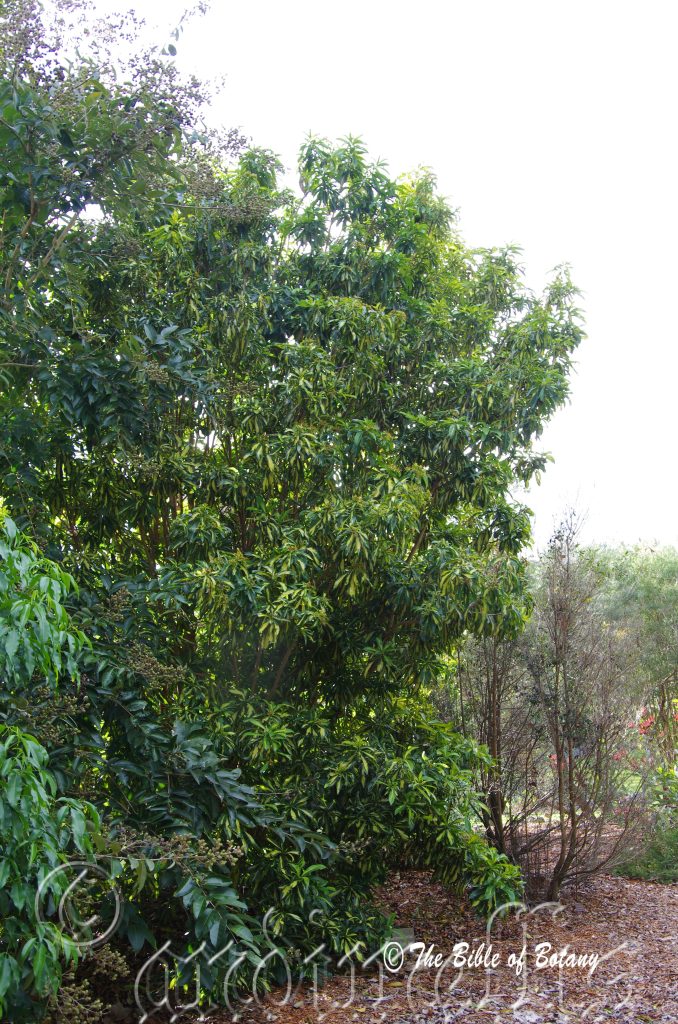
Ross River at The Willows Qld.
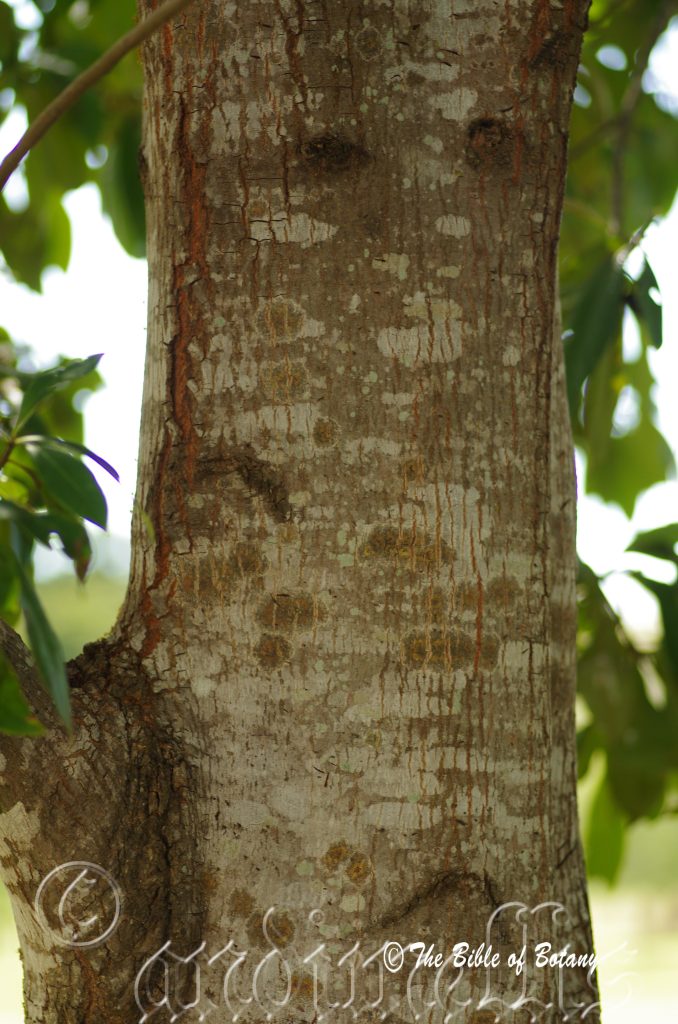
Anderson Gardens Qld.
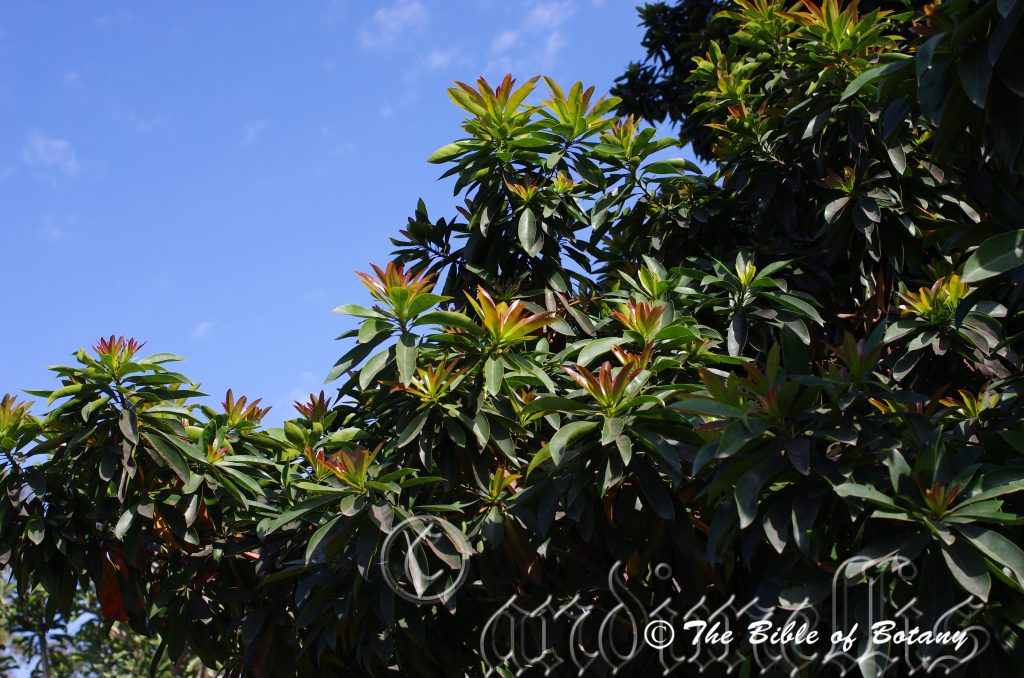
Mount Cootha Botanic Gardens Qld.
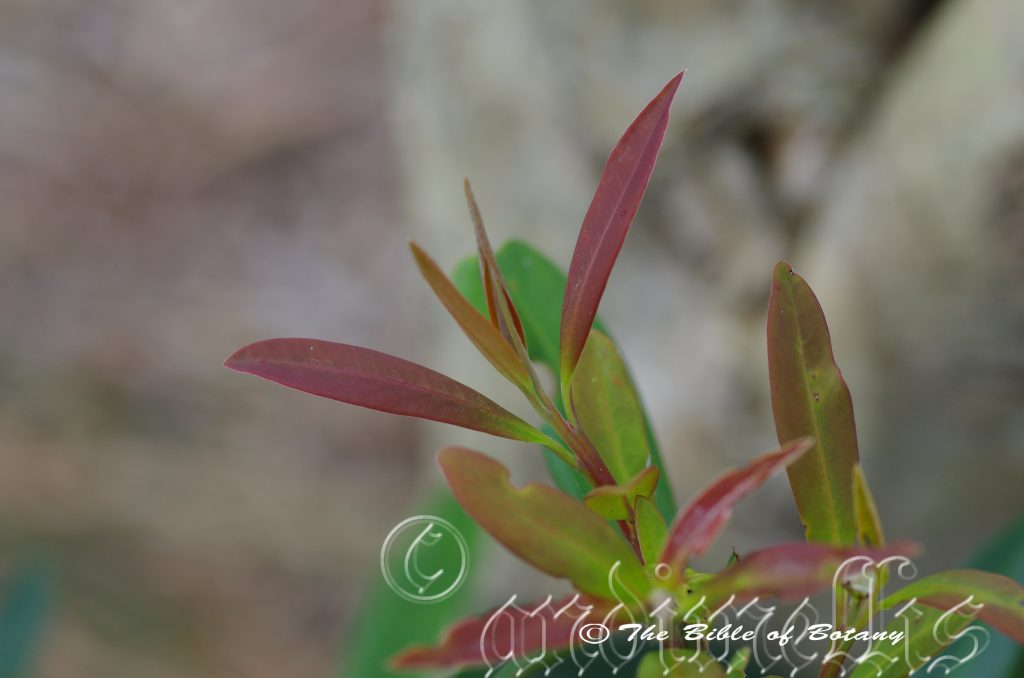
Anderson Gardens Qld.
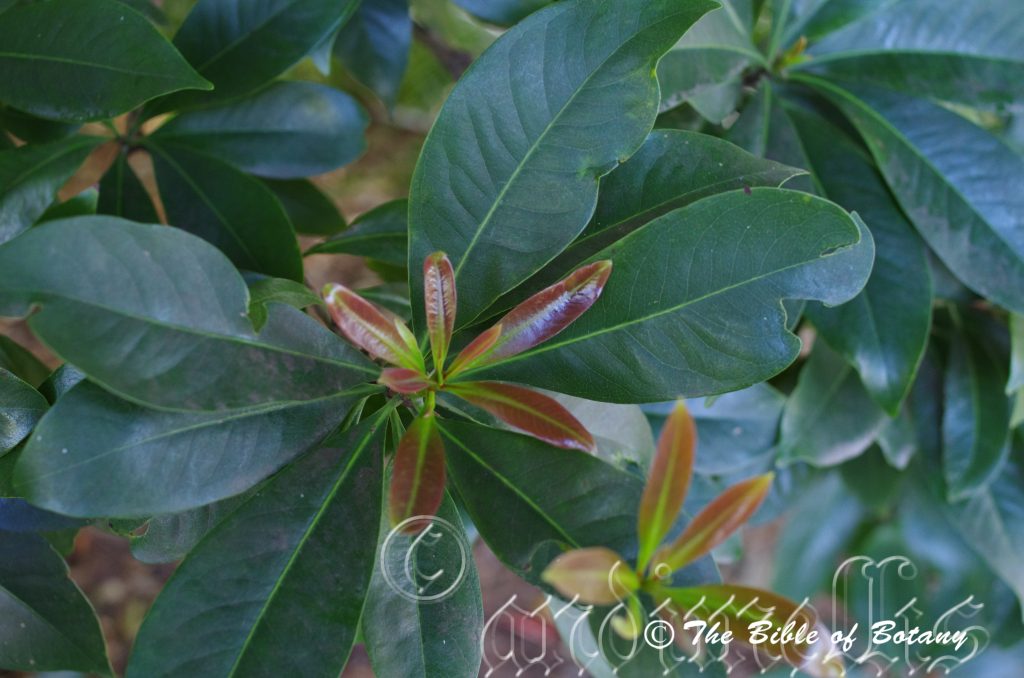
Mount Cootha Botanic Gardens Qld.
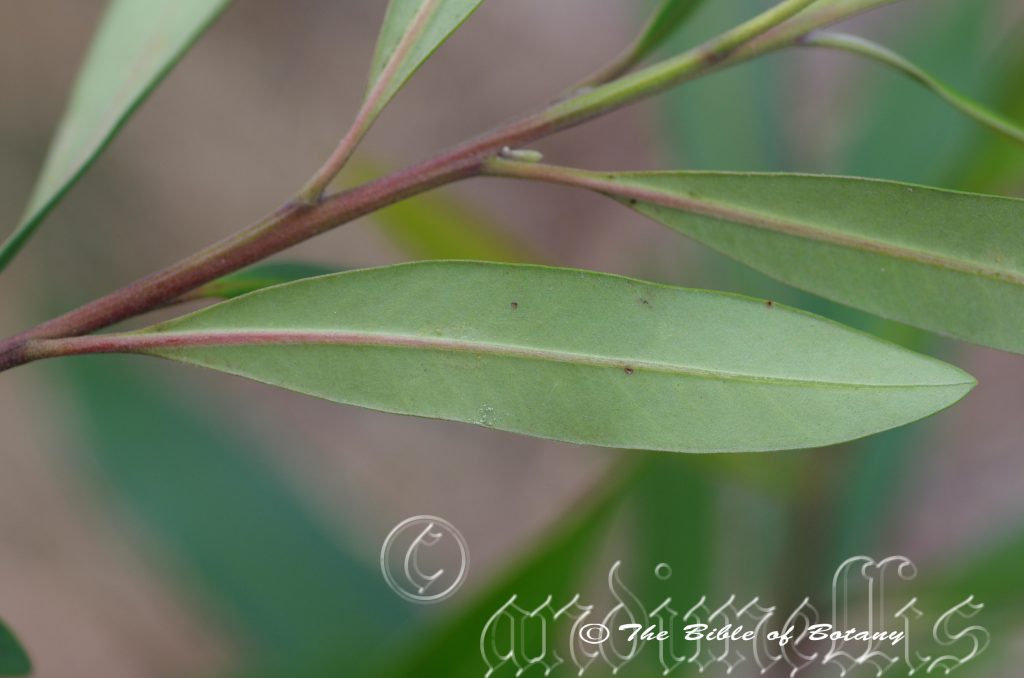
Ross River at The Willows Qld.
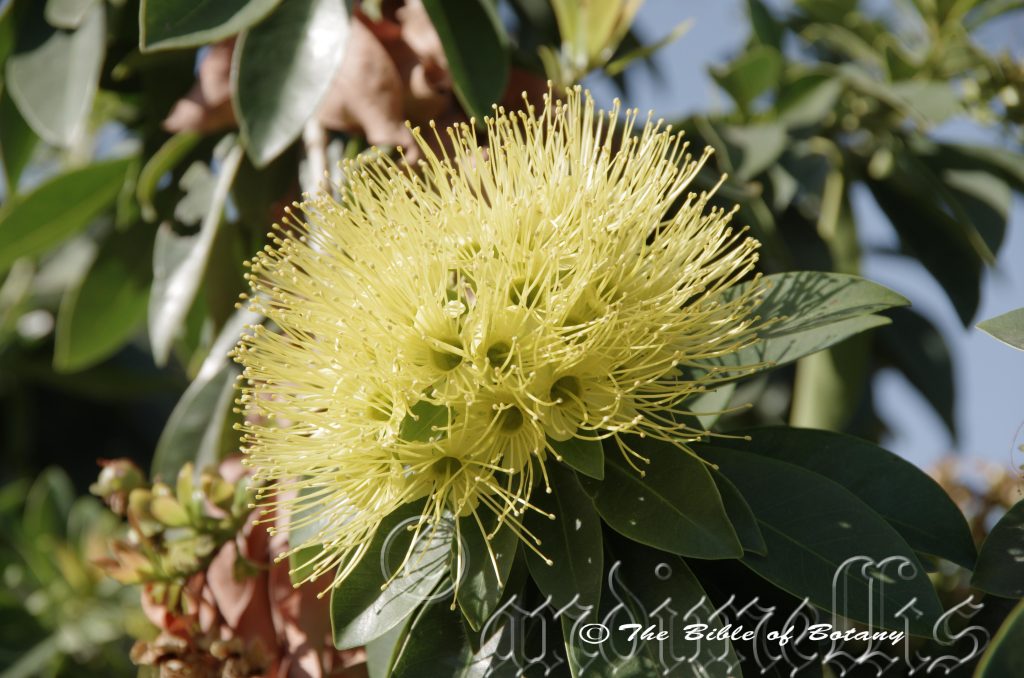
Ross River at The Willows Qld.
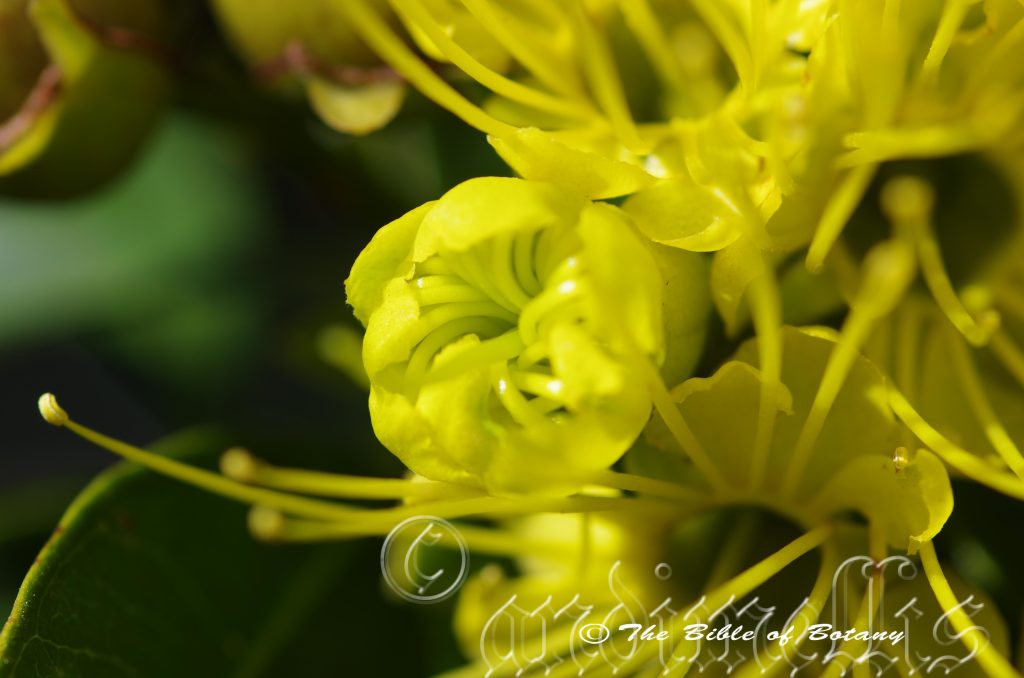
Ross River at The Willows Qld.
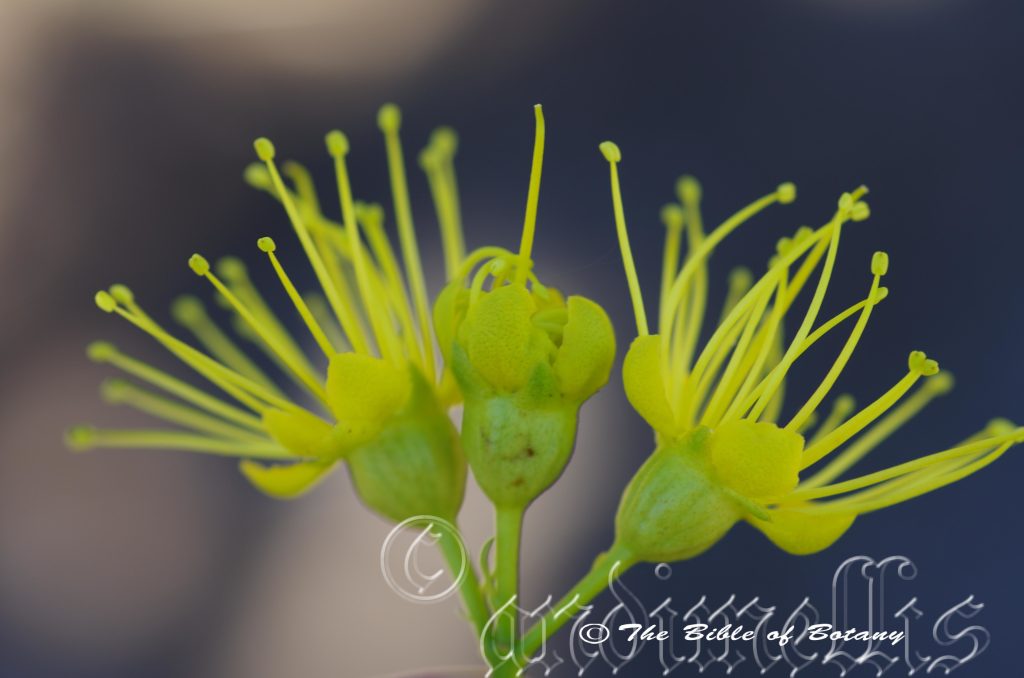
Ross River at The Willows Qld.
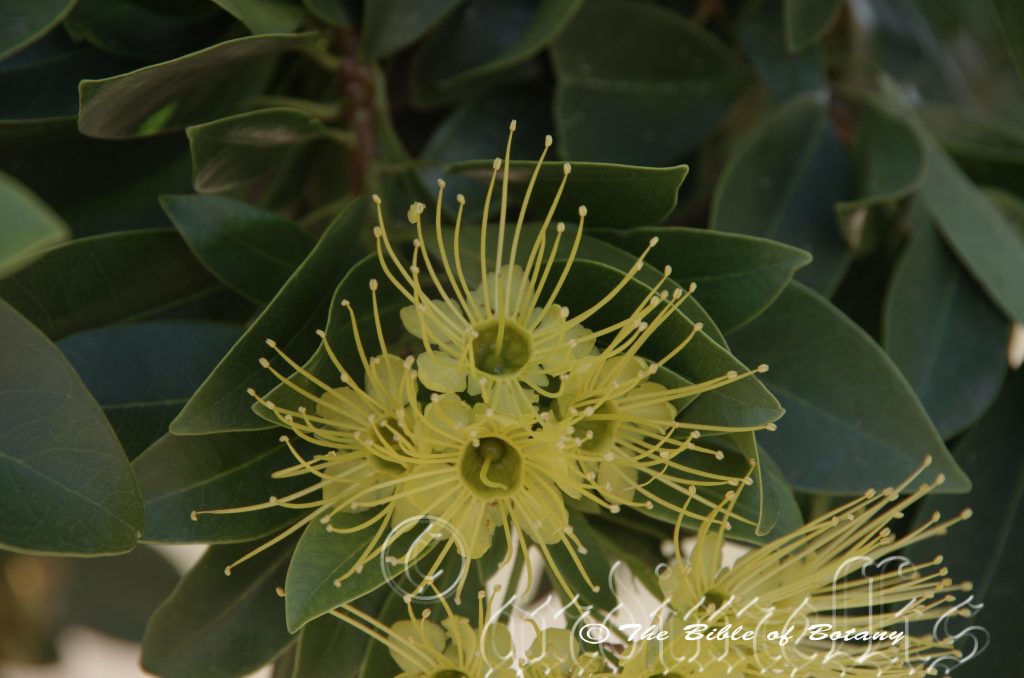
Ross River at The Willows Qld.
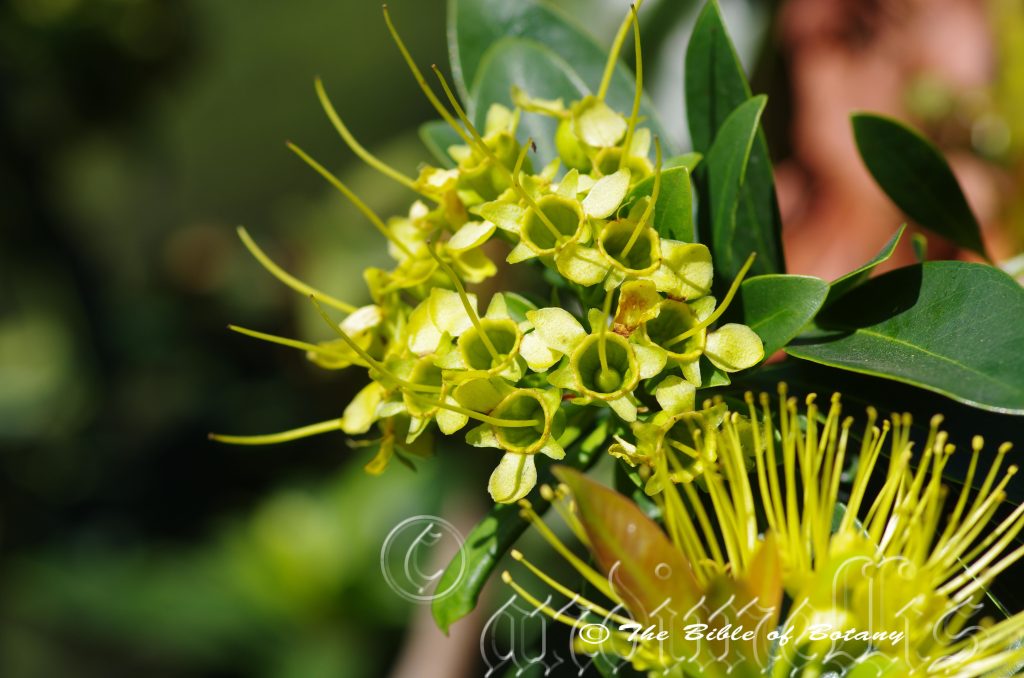
Ross River at The Willows Qld.
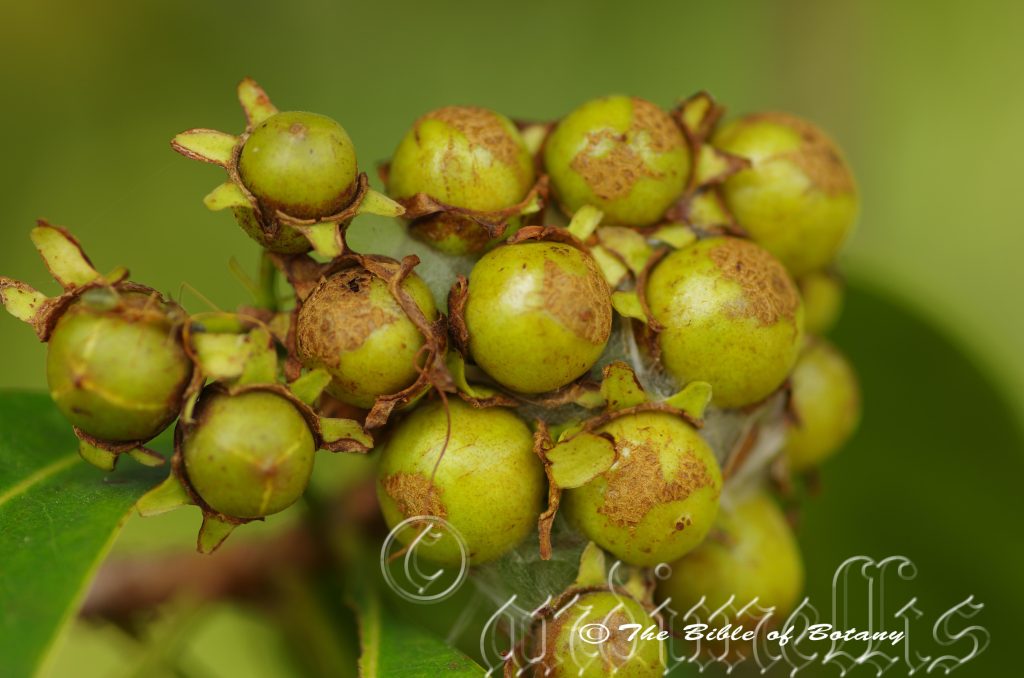
Anderson Gardens townsville Qld.
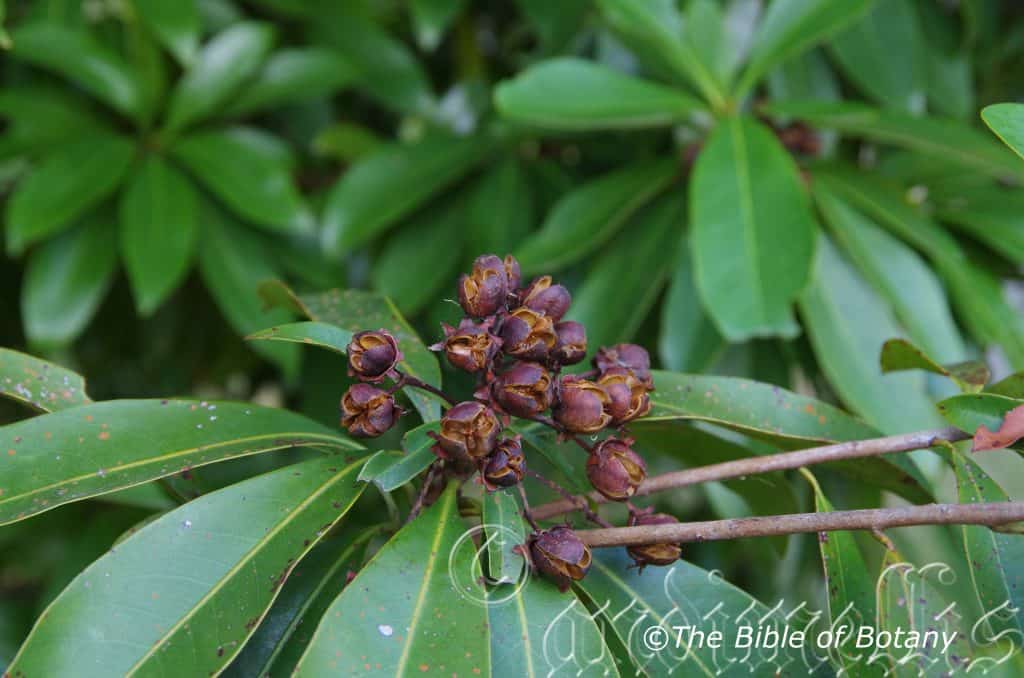
Coffs Harbour Botanic Gardens NSW
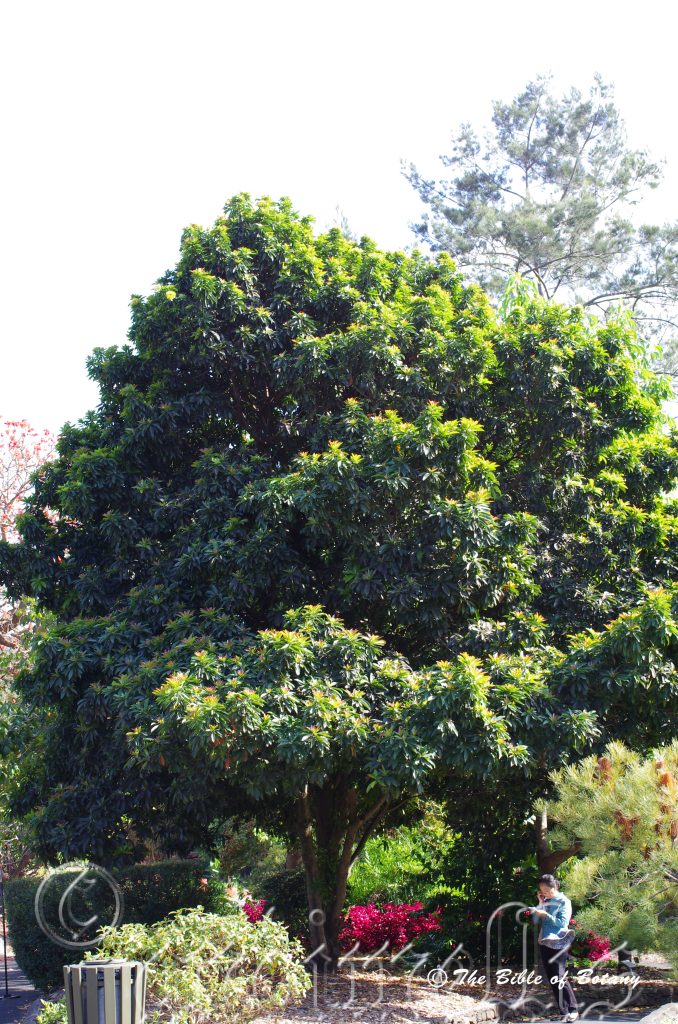
Mount Cootha Botanic Gardens Qld.

Ross River The Willows Qld.
Xanthostemon chrysanthus
Floral Emblem of Cairns & Bundaberg
Classification:
Unranked: Eudicots
Unranked: Rosids
Order: Myrtales
Family: Myrtaceae
Subfamily: Myrtoideae
Tribe: Xanthostemoneae
Genus: From Xanthós, which is Ancient Greek for yellow and Stḗmōn, which is Ancient Greek or Stāmen, which is Latin for the male reproductive organs of the filaments and anthers as a single identity. It refers to the flower’s stamens, which are brilliant yellow to pale yellow.
Specie: From Khrū́seos, which is Ancient Greek or Chrȳseum, which is Latin for a golden colour and ántha/ánthos, which are Ancient Greek for the male reproductive organs on the flower or the flower. It refers to the colour of the flowers which are a rich golden yellow.
Sub specie:
Common Name: Golden Penda.
Distribution:
Xanthostemon chrysanthus is restricted to 4 disjunct populations in far north Queensland south from the Lockhart National Park to Ingham in the south. There is also an outlying population south of Normanton near Wondoola.
https://avh.ala.org.au/occurrences/search?taxa=Xanthostemon+chrysanthus#tab_mapView
Habitat Aspect Climate:
Xanthostemon chrysanthus prefers light dappled shade to full sun. It grows in open woodlands, lowland rainforests to mountain rainforests. It is mainly found along creeks, streams and rivers or moist gallery forests. The altitude ranges from 10 meters ASL to 600 meters ASL.
The temperatures range from 7 degrees in August to 36 degrees in January.
The rainfall ranges from lows of 750mm to 3200mm average per annum.
Soil Requirements:
Xanthostemon chrysanthus prefer light clays to heavy clays or heavy silts. The soils are usually derived from decomposed brown basalts, black basalts or alluvial deposits. The soils pH ranges from 4.5pH to 6.5pH. It tolerates waterlogged soils often growing in fast flowing streams and creeks where it may be submerged for extended periods during periods of flood. Non saline soils to moderately saline soils are tolerated.
Height & Spread:
Wild Plants: 12m to 22m by 5m to 8m.
Characteristics:
Xanthostemon chrysanthus grows as a medium tree with a straight often multiple trunks when growing in a forest or crooked when growing in a riverine situation in the creek bed. The pale greyish-brown trunks are scabrous and often blotched with lichens and mosses. The branches are pale greyish-brown or at times reddish-brown and only turn green when the new shoots emerge. The branchlets are scabrous.
The alternate, narrowly ovate to narrowly elliptical leaves of Xanthostemon chrysanthus measure 100mm to 150mm in length by 30mm to 45mm in width. The oblique base is broad cuneate to cuneate while the apex is obtuse, acuminate to acute. The concolourous laminas are deep sea-green, semi glossy and glabrous. The new growth is deep red-brown and glossy. The leaf margins are entire while the laminas are flat to recurve slightly from the mid vein to the margins. The mid vein is slightly prominent on both laminas near the base and prominent below near the apex. The petiole measures 1.5mm to 3mm in length.
The inflorescences of Xanthostemon chrysanthus are born on terminal corymbs. The green peduncles, rachises and pedicels are glabrous. The peduncles measure 4mm to 6mm in length while the rachises measure 9mm to 18mm in length and the pedicels 6mm to 10mm in length. The lemon-green hypanthium is glabrous and measures5mm to 6mm in length by 5.5mm to 6.5mm in diameter. The 5 lemon-green lobes are divaricate, triangular to narrowly triangular, glabrous with one much larger than the others. The lobes are covered in minute, red to orange oil glands. They measure 2mm to 3mm in length with the longer lobe measuring 3.6mm to 5mm in length. The bright yellow petals are cordate to broadly spathulate and measure 7mm to 8mm in length measure 8mm to 9mm in width. The petals are covered in minute, red to orange oil glands.
The 20 exserted stamens are joined at the base to form a ring around the edge of the hypanthia but are free for their entire length. The filaments measure 26mm to 35mm in length. The filaments are bright yellow while the dorsifixed anthers are bright yellow turning brown before the rest of the flower dies. The oblong anthers measure 1.4mm to 1.6mm in length.
The bright yellow style and stigma are glabrous. The ovary is lemon-green to bright lime-green or rarely deep green and is surrounded by the hypanthia on the sides and lower surface leaving the apex free. The glabrous ovary measures 3.5mm to 5mm in diameter. The pistil measures 40mm to 45mm in length. Xanthostemon chrysanthus’s flowers appear from December to late January.
The fruits of Xanthorrhoea latifolia are globose to depressed globular capsules. The capsules are glabrous and measure 11mm to 14mm in length by 12mm to 15mm in diameter. The green capsules turn deep pale red-brown when ripe. The calyx lobes are persistent at the base of the ripe fruit. The brown seeds are flattened ellipsoidal, chaff like and measure 3mm to 4mm in length.
Wildlife:
Xanthostemon chrysanthus’s does not appear to have any predators and attract every type of nectar feeding bird in their range as well as many different nectar feeding butterflies, bees, native flies and wasps. This in return attracts insectivorous birds to the garden.
Cultivation:
Xanthostemon chrysanthus is a magnificent densely foliaged small tree that should be grown in association with other rainforest specie or as a shade tree in parks and gardens in frost free areas. It offers quick growth, and good shade in cultivation where it grows from 8 meters to 12 meters in height by 8 meters to 10 meters in diameter when grown in the open or taller and narrower if grown closer together as a rainforest tree.
It grows exceptionally well on heavier soils where deep leaf litter keeps the soil cool and moisture at an even level. Add to the above, if it is given an adequate supply of water and a little native fertilizer on a regular basis the plants will cope with temperatures as low as minus 2 degrees and up to 42 degrees. It is moderately drought resistant once established.
It is ideal at the edge of a rain forest where the beauty of their flowers and broad spread can be fully appreciated or deep in the center of the rainforest where they will carpet the floor of the forest in a yellow carpet.
There is a variegated leaf form in the markets which is quite attractive but once the trees get above head height any advantage gained by the variegation will be lost.
It often reaches its full potential in just 12 to 15 years and flower from the third or fourth year from seed.
This tree could be used as a bonsai plant as the trees grow with naturally gnarled trunks along creek beds and should be easy to work.
Propagation:
Seeds: The seeds of Xanthostemon chrysanthus can be removed easily from the fruits by placing the ripe gum nuts into paper bags for a week.
Sow freshly treated seeds directly into a seed raising mix, keeping them moist not wet. Do not over water as the seeds will rot off before germination takes place. Place the trays in a cool shaded area with 50mm shade cloth in the bush house.
When the seedlings are 20mm to 25mm tall, prick them out and plant them into 50mm native tubes using a good organic mix.
As the seedlings roots reach the bottom of the tubes plant them out into their permanent position. Do not delay.
Fertilize using Seaweed, fish emulsion or organic chicken pellets soaked in water and apply the liquid on an alternate basis. Fertilize every 2 months until the plants are well established then on an annual basis in September or March to maintain good health, vigour and better flowering.
Further Comments from Readers:
“Hi reader, it seems you use The Bible of Botany a lot. That’s great as we have great pleasure in bringing it to you! It’s a little awkward for us to ask, but our first aim is to purchase land approximately 1,600 hectares to link several parcels of N.P. into one at The Pinnacles NSW Australia, but we need your help. We’re not salespeople. We’re amateur botanists who have dedicated over 30 years to saving the environment in a practical way. We depend on donations to reach our goal. If you donate just $5, the price of your coffee this Sunday, We can help to keep the planet alive in a real way and continue to bring you regular updates and features on Australian plants all in one Botanical Bible. Any support is greatly appreciated. Thank you.”
In the spirit of reconciliation we acknowledge the Bundjalung, Gumbaynggirr and Yaegl and all aboriginal nations throughout Australia and their connections to land, sea and community. We pay our respect to their Elders past, present and future for the pleasures we have gained.
Xanthostemon paradoxus
Classification:
Unranked: Eudicots
Unranked: Rosids
Order: Myrtales
Family: Myrtaceae
Subfamily: Myrtoideae
Tribe: Xanthostemoneae
Genus: From Xanthós, which is Ancient Greek for yellow and Stḗmōn, which is Ancient Greek or Stāmen, which is Latin for the male reproductive organs of the filaments and anthers as a single identity. It refers to the flower’s stamens, which are brilliant yellow to pale yellow.
Specie: From Pará, which is a Greek prefix which is usually attached to a descriptive verb and stands for to be close to, near, side by side or beside and Doxos, which is Ancient Greek for unbelievable. It refers to flowers, which are compared to other plants in semi-arid habitats are exquisitely beautiful.
Sub specie:
Common Name: Red Penda.
Distribution:
Xanthostemon paradoxus is found in 3 disjunct populations east from the Kimberley Coast and Kimberley Range to the Ord River in far north east Western Australia.
The Northern Territory populations are found north east from the Victoria River National Park and the Gregory River National Park to south east of Nhulunbuy and along the Roper River with an isolated population adjacent to Lake Woods north of the Three Ways.
In the east it is found south on the tip of Cape York Peninsula in far north Queensland.
https://avh.ala.org.au/occurrences/search?taxa=Xanthostemon+paradoxus#tab_mapView
Habitat Aspect Climate:
Xanthostemon paradoxus prefers light dappled shade to full sun. It grows in open woodlands, schlerophyll forests, and vine forests on undulating plains, ridges and rocky outcrops. The altitude ranges from 10 meters ASL to 260 meters ASL.
The temperatures range from 5 degrees in August to 42 degrees in January.
The rainfall ranges from lows of 900mm to 3200mm average per annum.
Soil Requirements:
Xanthostemon paradoxus prefers gravelly sandy loams, stony, light fatty clays among rocks or boulders and often grows as a rheophytic. The soils are usually derived from partially decomposed to decomposed sandstones or mudstones. The soils pH ranges from 5pH to 6pH. It does not tolerate waterlogged soils. Non saline soils to moderately saline soils are tolerated.
Height & Spread:
Wild Plants:3m to 12m by 2m to 6m.
Characteristics:
Xanthostemon paradoxus grows as a small tree with straight trunk when grown on deep fertile soils or twisted or gnarled on skeletal poorer soils. The deep red-brown to black flaky bark is often in tessellated patches. The branches are pale grey to pale pink-grey, flaky, glaucous and only becoming green near the apex where the new growth occurs.
The broadly lanceolate, oblong-elliptical to elliptical leaves of Xanthostemon paradoxus are clustered near the apex of the branches and measure 50mm to 160mm in length by 30mm to 60mm in width. The base is broad cuneate to tapering attenuate while the apex is obtuse, acute to acuminate. The discolourous laminas are deep blue-green to sea-green, dull to semi glossy and glabrous on the upper lamina while the lower lamina is paler and dull. The leaf margins are entire and slightly undulating to flat. The laminas are flat to moderately recurved from the mid vein to the margins and decurve slightly from the mid-point to the apex. The mid vein and main laterals are prominent on the lower laminas and are distinctly visible from the upper laminas. The pale yellow-green to paler green petioles are grooved on the upper surface, thick and measures 12mm to 18mm in length.
The inflorescences of Xanthostemon chrysanthus are born on terminal corymbs or from the upper leaf axils. The yellow-green to yellow-olive peduncles, rachises and pedicels are sparsely covered in white puberulent hairs. The peduncles measure 8mm to 12mm in length while the rachises measure 8mm to 12mm in length and the pedicels 4mm to 6mm in length. The olive-yellow hypanthia are covered in white puberulent hairs externally and minute orange oil glands externally and are glabrous internally. The lobes measure 2mm to 2.5mm in length by 5mm to 6mm in diameter. The bright yellow to orange-yellow petals are orbicular and measure 4mm to 5mm in length measure by 4.5mm to 5.5mm in width. The petals are covered in minute, yellow to yellow-orange oil glands.
The 20 exserted stamens are spread at the base to form a ring around the edge of the hypanthia but are free for their entire length. The filaments measure 7mm to 10mm in length. The filaments are bright yellow to orange-yellow while the dorsifixed anthers are oblong, yellow to orange-yellow turning brown before the rest of the flower dies. The oblong anthers measure 1.4mm to 1.6mm in length.
The bright yellow style and stigma are glabrous. The ovary is lime-green and is surrounded by the hypanthia on the sides, lower surface and partially covers the apex. The glabrous ovary measures 1.8mm to 2mm in diameter. The pistil measures 20mm to 26mm in length. Xanthostemon paradoxus’s flowers appear from May through to September.
The fruits of Xanthostemon paradoxus are globose to depressed globose capsules. The capsules are glabrous and measure 10mm to 12mm in length by 10mm to 12mm in diameter. The green capsules turn brown when ripe. The calyx lobes are persistent on the ripe fruit. The seeds are flattened ellipsoidal and measure 2mm to 4mm in diameter
Wildlife:
Xanthostemon paradoxus’s do not appear to have any predators and attract every type of nectar feeding bird in their range as well as many different nectar feeding butterflies, bees, native flies and wasps. This in return attracts insectivorous birds to the garden.
Cultivation:
Xanthostemon paradoxus is a magnificent small tree that should be grown in association with other monsoonal, semi-arid trees or as a shade tree in parks and gardens in semi-arid areas. It also offers quick growth, and good shade. In cultivation it grows from 5 meters to 6 meters in height by 4 meters to 5 meters in diameter when grown in the open but can be pruned to make a large shrub. It is thriving around Junction Hill near Grafton as a street tree.
It grows exceptionally well on all types of soils where deep leaf litter keeps the soil cool and moisture at an even level. Add to the above, if it is given an adequate supply of water and a little native fertilizer on a regular basis the plants will cope with temperatures as low as 2 degrees and up to 44 degrees. It is moderately drought resistant once established but perform better where the soils retain some moisture.
Two, three or four trees planted back from a bend will become a very strong focal point when in flower gain a lot of attention whether you are coming or going because of the fresh clean look of the foliage even in the driest of times. They can be pruned if a large shrub is required beneath small other small Eucalyptus trees. It responds well to pruning recovering quickly and often increasing the number of flowers in the following season but this should be started from an early age. Place them in the midground with large leaf, or fine leaf ground covers and very small shrubs or annuals in front. To the rear, use large leaf taller like Eucalyptus miniata, Eucalyptus houseana, Eucalyptus pellita or Corymbia ptycocarpa to create a dwarf forest with plenty of shade. Plants with white, pink, orange, red or purple flowers can be used in both the foreground to give depth and variety. Smaller plants with finer foliages in pale green or blue grey foliages will also compliment the scene in the fore ground during periods when there are few flowers in the garden.
Xanthostemon chrysanthus’s bark contrasts beautifully with Eucalyptus miniata, Corymbia ptycocarpa or the other trees mentioned above. Use Corymbia ptycocarpa; below, where there are septic trenches or drainage channels so that it can gain access to a consistent supply of water.
It often reaches its full potential in just 12 to 15 years and flower from the third or fourth year from seed.
This tree could be used as a bonsai plant as the trees grow with naturally gnarled trunks along sandy ephemeral creek beds and should be easy to work.
Propagation:
Seeds: Seeds of Xanthostemon chrysanthus can be removed easily from the fruits by placing the ripe gum nuts into paper bags for a week.
Sow freshly treated seeds directly into a seed raising mix, keeping them moist not wet. Do not over water as the seeds will rot off before germination takes place. Place the trays in a cool shaded area with 50mm shade cloth in the bush house. When the seedlings are 20mm to 25mm tall, prick them out and plant them into 50mm native tubes using a good organic mix.
As the seedlings roots reach the bottom of the tubes plant them out into their permanent position. Do not delay.
Fertilize using Seaweed, fish emulsion or organic chicken pellets soaked in water and apply the liquid on an alternate basis. Fertilize every 2 months until the plants are well established then on an annual basis in September or March to maintain good health, vigour and better flowering.
Further Comments from Readers:
“Hi reader, it seems you use The Bible of Botany a lot. That’s great as we have great pleasure in bringing it to you! It’s a little awkward for us to ask, but our first aim is to purchase land approximately 1,600 hectares to link several parcels of N.P. into one at The Pinnacles NSW Australia, but we need your help. We’re not salespeople. We’re amateur botanists who have dedicated over 30 years to saving the environment in a practical way. We depend on donations to reach our goal. If you donate just $5, the price of your coffee this Sunday, We can help to keep the planet alive in a real way and continue to bring you regular updates and features on Australian plants all in one Botanical Bible. Any support is greatly appreciated. Thank you.”
In the spirit of reconciliation we acknowledge the Bundjalung, Gumbaynggirr and Yaegl and all aboriginal nations throughout Australia and their connections to land, sea and community. We pay our respect to their Elders past, present and future for the pleasures we have gained.
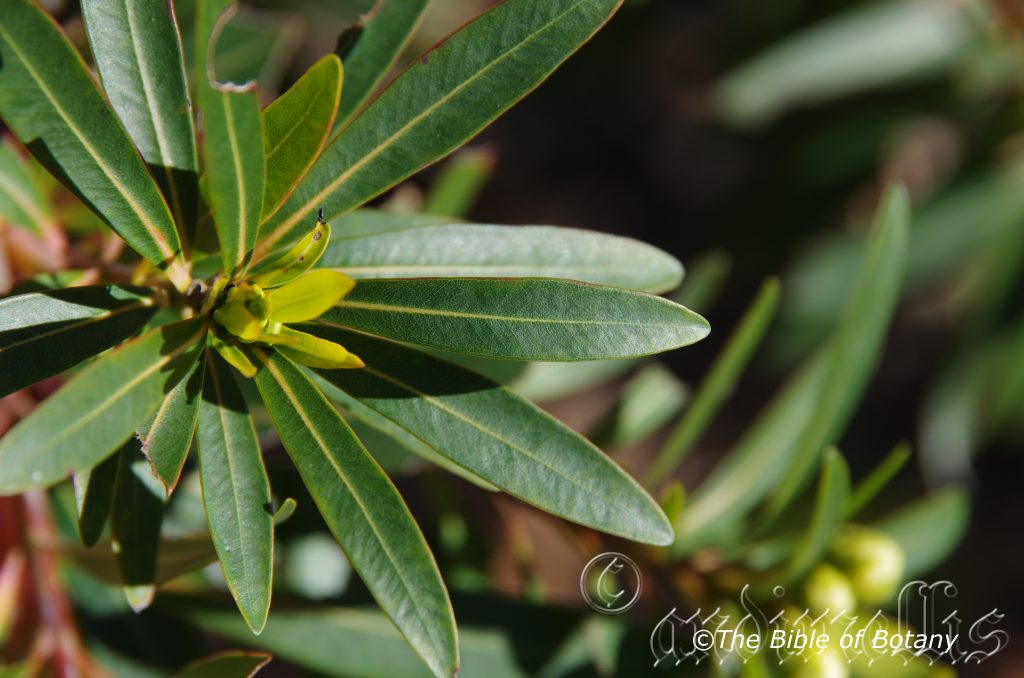
Ross River The Willows Qld.
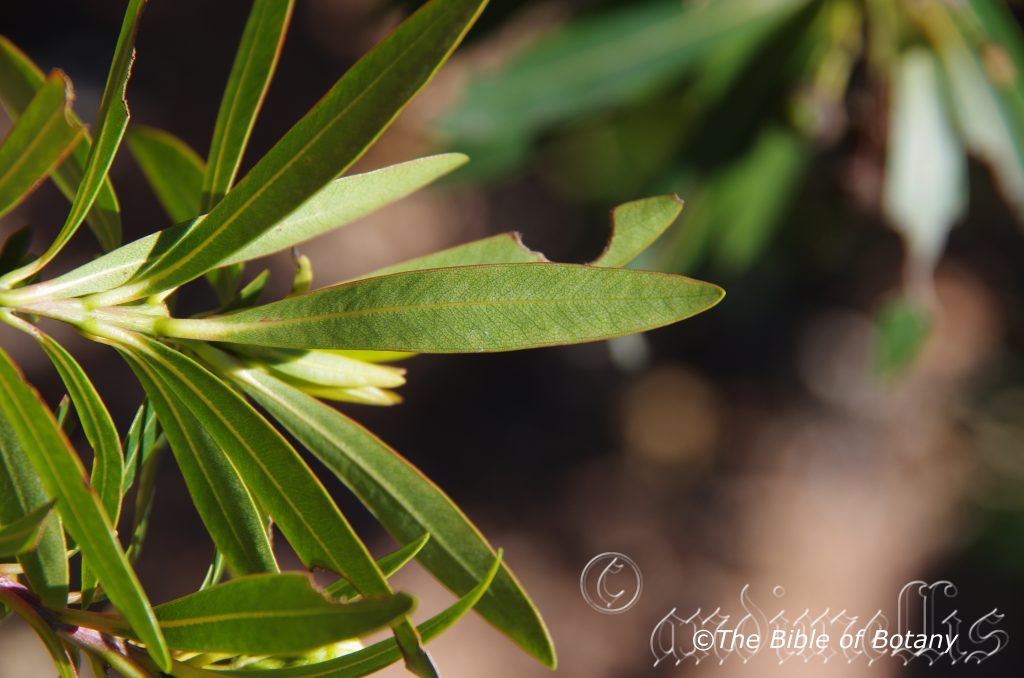
Ross River The Willows Qld.
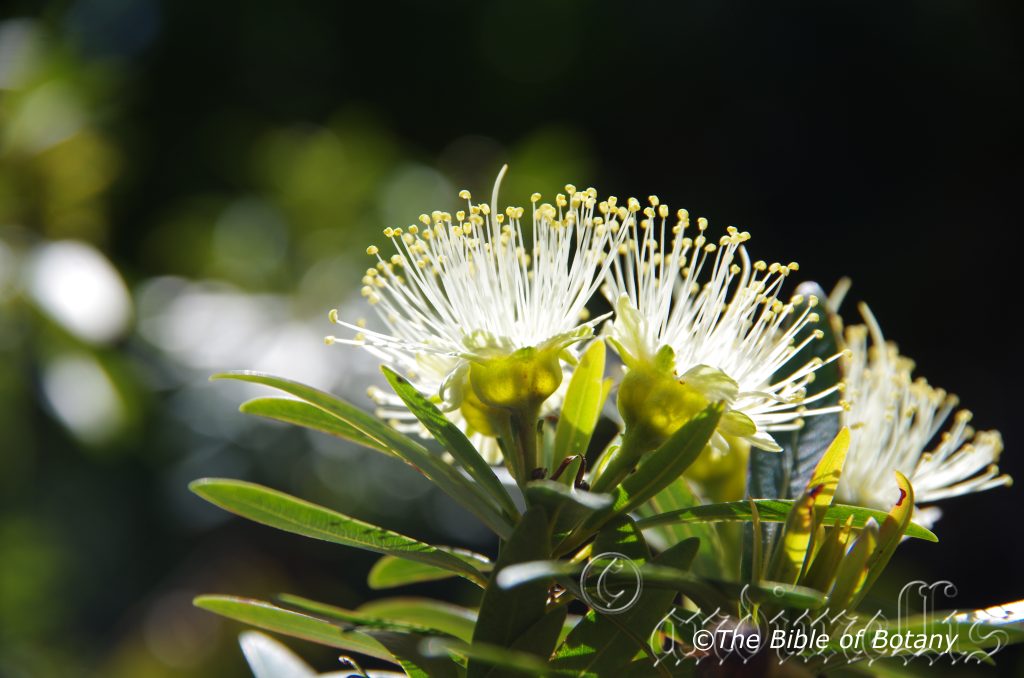
Ross River The Willows Qld.
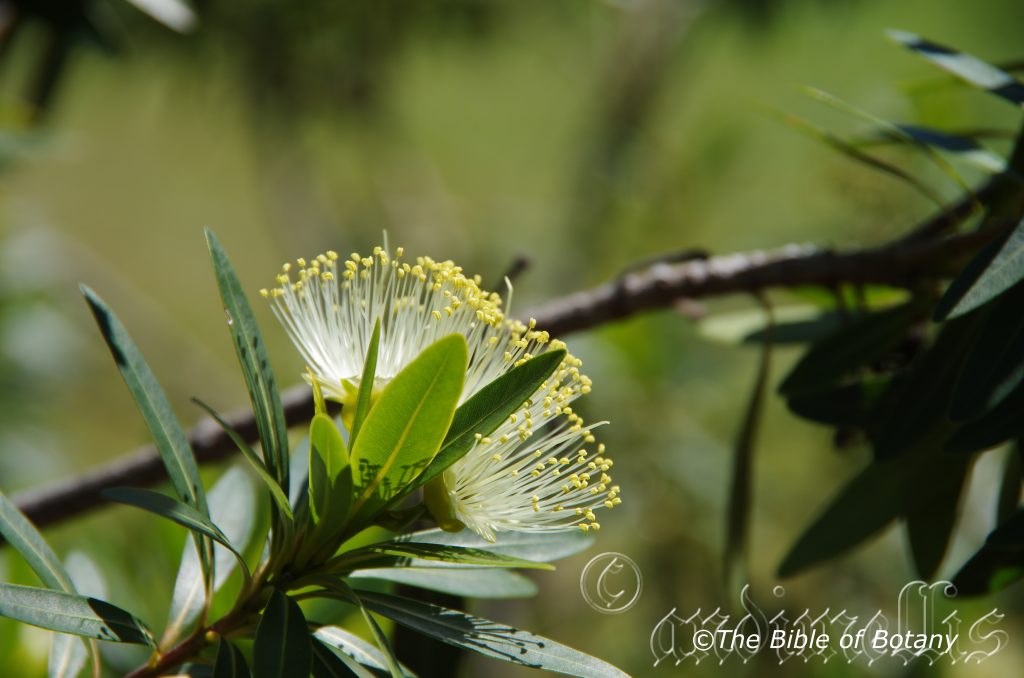
Ross River The Willows Qld.
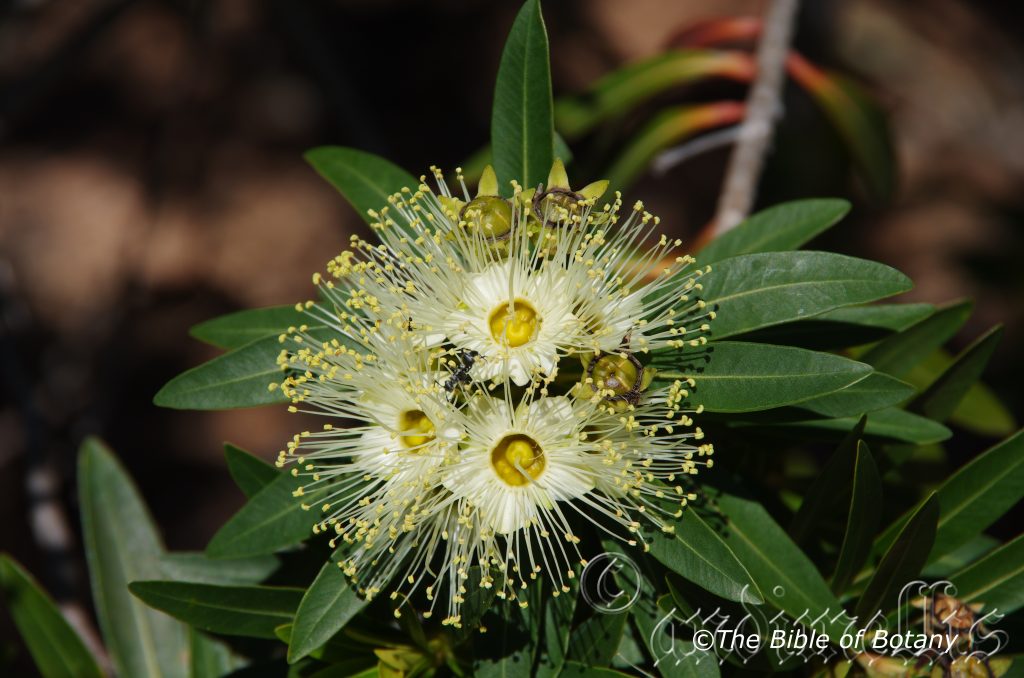
Ross River The Willows Qld.
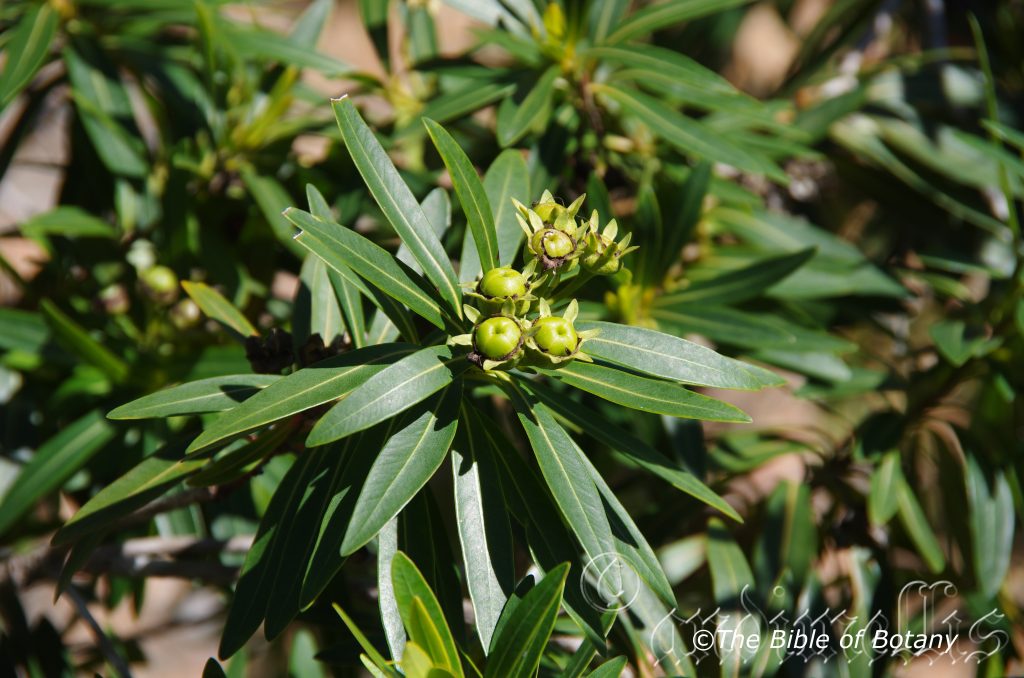
Ross River The Willows Qld.
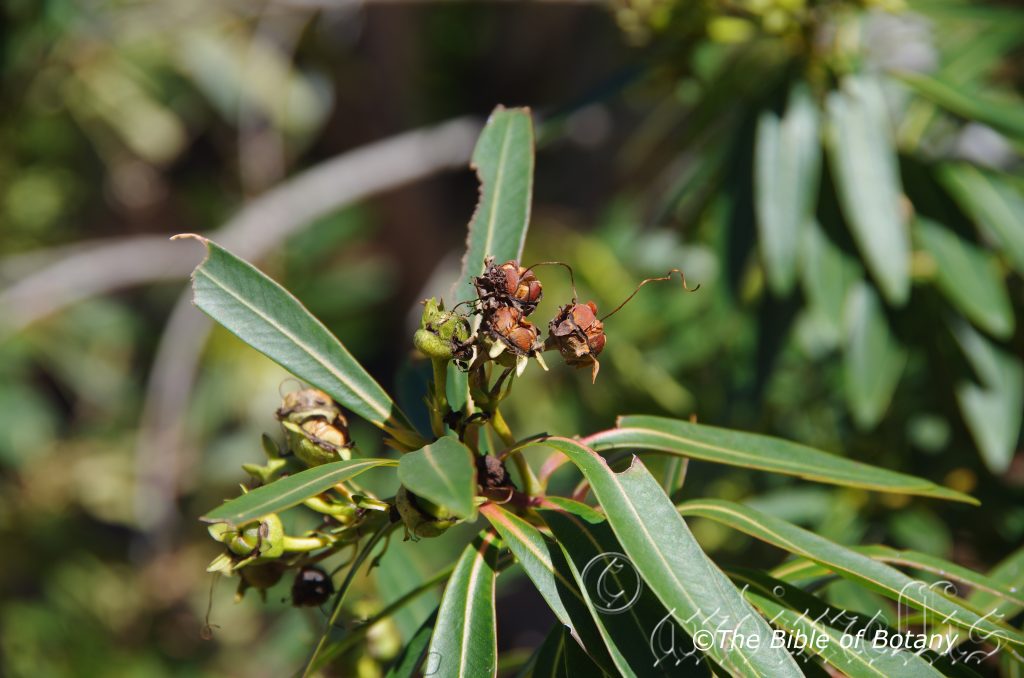
Ross River The Willows Qld.
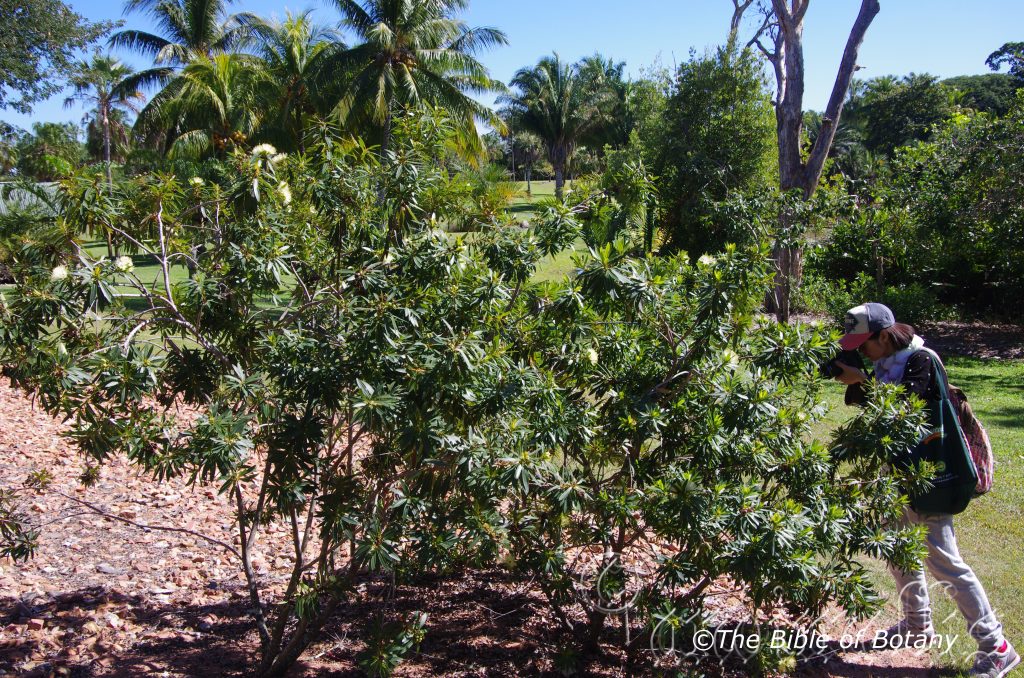
Anderson Gardens Townsville Qld.
Xanthostemon verticillatus
Classification:
Unranked: Eudicots
Unranked: Rosids
Order: Myrtales
Family: Myrtaceae
Subfamily: Myrtoideae
Tribe: Xanthostemoneae
Genus: From Xanthós, which is Ancient Greek for yellow and Stḗmōn, which is Ancient Greek or Stāmen, which is Latin for the male reproductive organs of the filaments and anthers as a single identity. It refers to the flower’s stamens, which are brilliant yellow to pale yellow.
Specie: From Verticillātus, which is Latin for to have whirls. It refers to organs or structures, which occur in whirls, here it refers to the leaves.
Sub specie:
Common Name:
Distribution:
Xanthostemon verticillatus is found in a restricted to two areas in far north coastal Queensland along the Daintree River and the Bloomfield River.
https://avh.ala.org.au/occurrences/search?taxa=Xanthostemon+verticillatus#tab_mapView
Habitat Aspect Climate:
Xanthostemon verticillatus prefers light dappled shade to full shade. It grows in well-developed riparian rainforests. The altitude ranges from 50 meters ASL to 165 meters ASL.
The temperatures range from 10 degrees in August to 36 degrees in January.
The rainfall ranges from lows of 2500mm to 3000mm average per annum.
Soil Requirements:
Xanthostemon verticillatus prefers to grow amongst river boulders in riparian zones often in the creeks. The soils are usually derived from granite. The soils pH ranges from 6.5pH to 7pH. It tolerates waterlogged soils for many months of the year. Non saline soils to mildly saline soils are tolerated.
Height & Spread:
Wild Plants: 3m to 5m by 2m to 4m.
Characteristics:
Xanthostemon verticillatus grows as a small tree with a crooked, gnarled trunk, or more commonly a medium shrub with multiple branching from near the base. The pale grey, glabrous to somewhat scabrous trunk has depressions, where flakes of the bark have been shed. The stems are mid greenish brown and glabrous.
The narrow elliptical leaves of Xanthostemon verticillatus appear in whorls of 3 to 5 and measure 50mm to 65mm in length by 10mm to 15mm in width. The terete, glabrous pale yellow petioles measure 4mm to 5mm in length. The bases taper to the petiole while the apex is obtuse-acute to narrow obtuse. The discolourous laminas are deep green to dull and glabrous on the upper lamina, while the lower laminas are paler and moderately to densely covered in small oil dots. The laminas are flat, while the margins are entire. The yellish-orange to yellowish-green mid vein is prominent on both laminas, while the lateral veins form loops close to the margins. The glabrous new growth is bright yellowish green often tinged reddish especially on the margins. The old leaves turn red prior to falling.
The inflorescences of Xanthostemon verticillatus are born on terminal clusters or loose cymes. The yellowish-green peduncles and pedicels are glabrous. The peduncles measure 6mm to 8mm in length while the pedicels 6mm to 10mm in length.
The pale deep yellow hypanthium are glabrous while the calyx tube (hypanthium) measures 5mm to 6mm in length by 10mm to 12mm in diameter. The lobes are glabrous externally and sparsely covered in white, pubescent internally. The broadly triangular lobes measure 3mm to 4mm in length. The 10 variable in shape petals are sparsely covered in short pubescent hairs and measure 6mm to 8mm in length. The linear staminode glands are sparsely covered in white pubescent hairs and measure 3mm in length at the base.
The 10 groups of 4 or 5 white to cream staminal filaments are glabrous and measure 20mm to 38mm in length and form a ring around the hypanthium. The filaments are inserted into an orifice at the base of the basifixed anthers. The cream to pascal yellow, arched anthers dehisce longitudinally and measure 1mm to 1.5mm in length.
The deep yellow, glabrous ovary is superior on the calyx’s hypanthium. The ovary measures 4mm to 4.5mm in diameter. The placentas are peltate, while the white, style measures 28mm to 35mm in length and tapers to the stigma. Xanthostemon verticillatus’s flowers appear from September to November.
The fruits of Xanthostemon verticillatus are globose to somewhat obovoidal capsules. The glabrous capsules measure 6mm to 9mm in length by 7mm to 11mm in diameter excluding the persistent calyx at the base. The green rugose capsules turn pale rusty-brown externally and internally when ripe. The style is persistent. The brown, flat ovate seeds measure 2.5mm to 3.5mm in diameter.
Wildlife:
Xanthostemon verticillatus’s wildlife many different nectar feeding butterflies, native bees including Tetragonula carbonaria and the Blue banded bee Amegilla cingulata, native flies and wasps. This in return attracts insectivorous birds to the garden.
The leaves are host to the Australian Pink Scale Ceroplastes rubens, White Fly Bemisia tabaci and various thrips probably including Thrips imagines.
Cultivation:
Xanthostemon verticillatus is a magnificent small tree that can be grown in association with other littoral rainforest specie or as a shade tree in parks and gardens. It offers quick growth, and reasonable shade. In cultivation it grows from 3 meters to 5 meters in height by 3 meters to 5 meters in diameter when grown in the open.
It grows exceptionally well on accumulated beach sands where deep leaf litter keeps the soil cool and moisture at an even level. Add to the above, if it is given a little additional water and a little native fertilizer on a regular basis the plants will cope with temperatures as low as 5 degrees and up to 42 degrees. It is not drought resistant and will drop leaves when stressed even once established. The trees prefer to have their roots down into a water table or have a good moisture supply.
It is ideal at the edge of a littoral rain forest where the beauty of their flowers and columular growth can be fully appreciated amidst a heath land setting of smaller plants where it will carpet the plants in red on an annual basis. The shrubs are so spectacular it would be worthwhile persevering with as far south as Coffs Harbour or Port Macquarie if the gardens are frost free and have deep accumulated beach sands.
Place it in the mid ground with large leaf, or fine leaf ground covers and very small shrubs or annuals in front. To the rear, use large leaf taller trees like Eucalyptus miniata, Eucalyptus houseana, Eucalyptus pellita or Corymbia ptycocarpa to create a dwarf forest with plenty of shade. Plants with white, pink, lilac or purple flowers can be used in both the foreground. Smaller plants with finer foliages in pale green or blue grey foliages will also compliment the scene in the fore ground during periods when there are few flowers in the garden.
Xanthostemon verticillatus’s bark contrasts beautifully with Eucalyptus miniata, Corymbia ptycocarpa or the other small trees when grown as a tree. Use Corymbia ptycocarpa where there may be septic trenches or drainage channels so that it both can gain access to a consistent supply of water.
This shrub could be used as a bonsai plant as grows in some very difficult conditions take on some weird shapes.
Propagation:
Seeds: Seeds of Xanthostemon verticillatus can be removed easily from the fruits.
Sow freshly treated seeds directly into a seed raising mix, keeping them moist not wet. Do not over water as the seeds will rot off before germination takes place. Place the trays in a cool shaded area with 50mm shade cloth in the bush house. When the seedlings are 20mm to 25mm tall, prick them out and plant them into 50mm native tubes using a good organic mix.
As the seedlings roots reach the bottom of the tubes plant them out into their permanent position. Do not delay.
Fertilize using Seaweed, fish emulsion or organic chicken pellets soaked in water and apply the liquid on an alternate basis. Fertilize every 2 months until the plants are well established then on an annual basis in September or March to maintain good health, vigour and better flowering.
Further Comments from Readers:
“Hi reader, it seems you use The Bible of Botany a lot. That’s great as we have great pleasure in bringing it to you! It’s a little awkward for us to ask, but our first aim is to purchase land approximately 1,600 hectares to link several parcels of N.P. into one at The Pinnacles NSW Australia, but we need your help. We’re not salespeople. We’re amateur botanists who have dedicated over 30 years to saving the environment in a practical way. We depend on donations to reach our goal. If you donate just $5, the price of your coffee this Sunday, We can help to keep the planet alive in a real way and continue to bring you regular updates and features on Australian plants all in one Botanical Bible. Any support is greatly appreciated. Thank you.”
In the spirit of reconciliation we acknowledge the Bundjalung, Gumbaynggirr and Yaegl and all aboriginal nations throughout Australia and their connections to land, sea and community. We pay our respect to their Elders past, present and future for the pleasures we have gained.
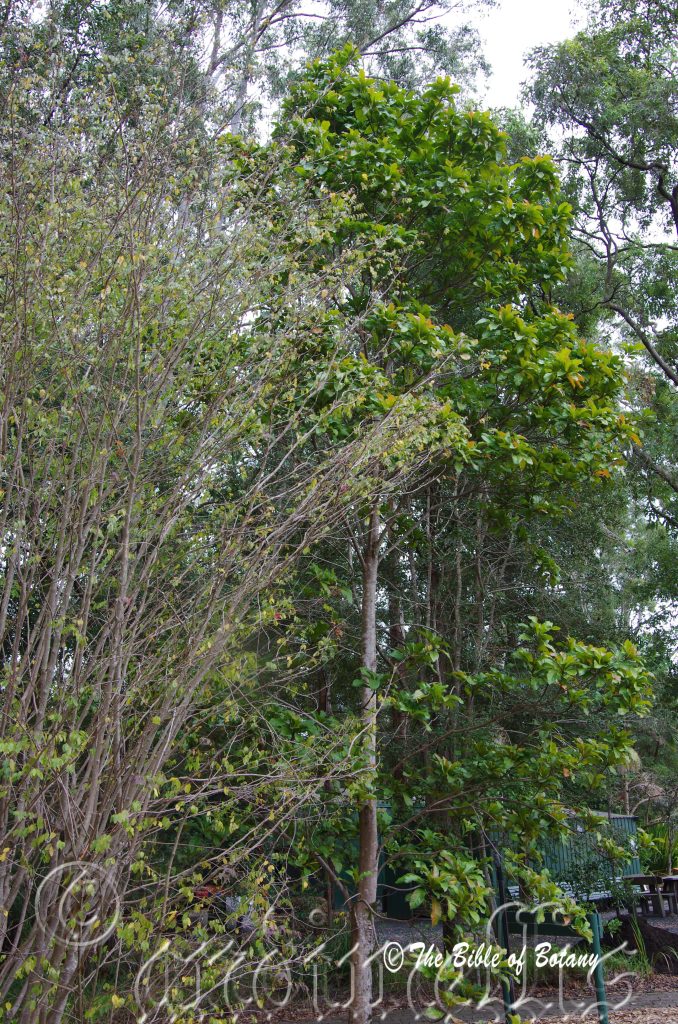
NCBG Coffs Harbour NSW
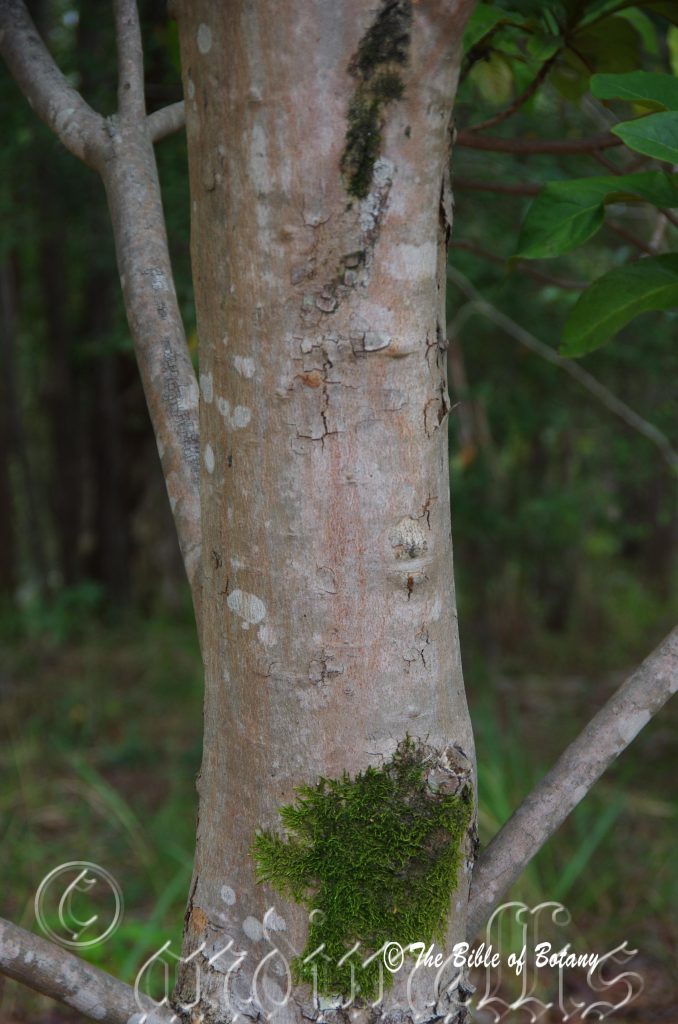
NCBG Coffs Harbour NSW
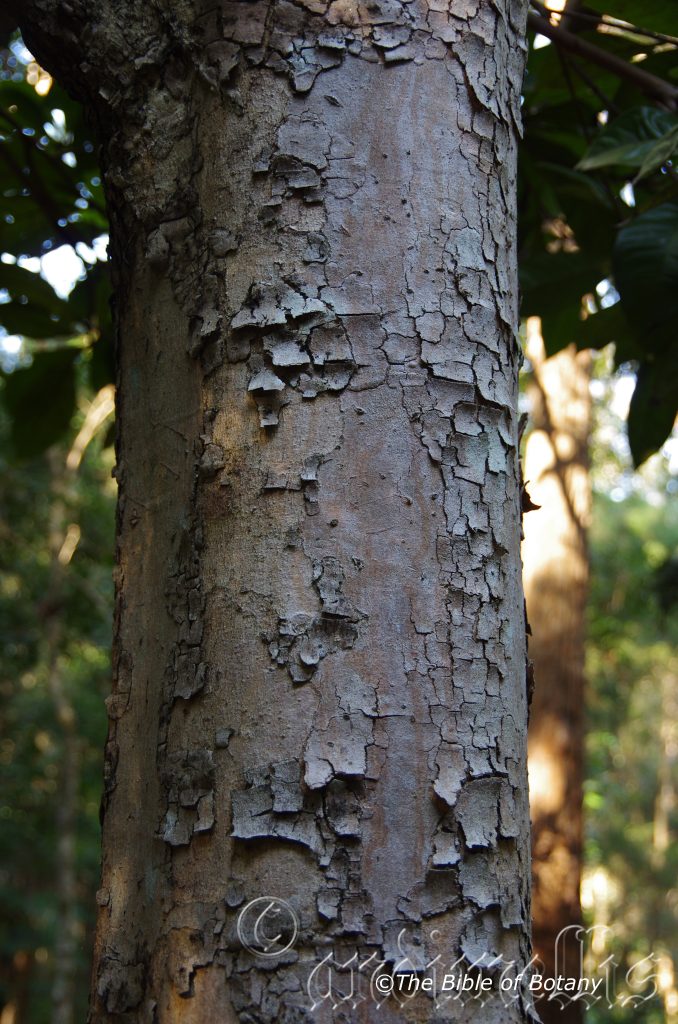
NCBG Coffs Harbour NSW
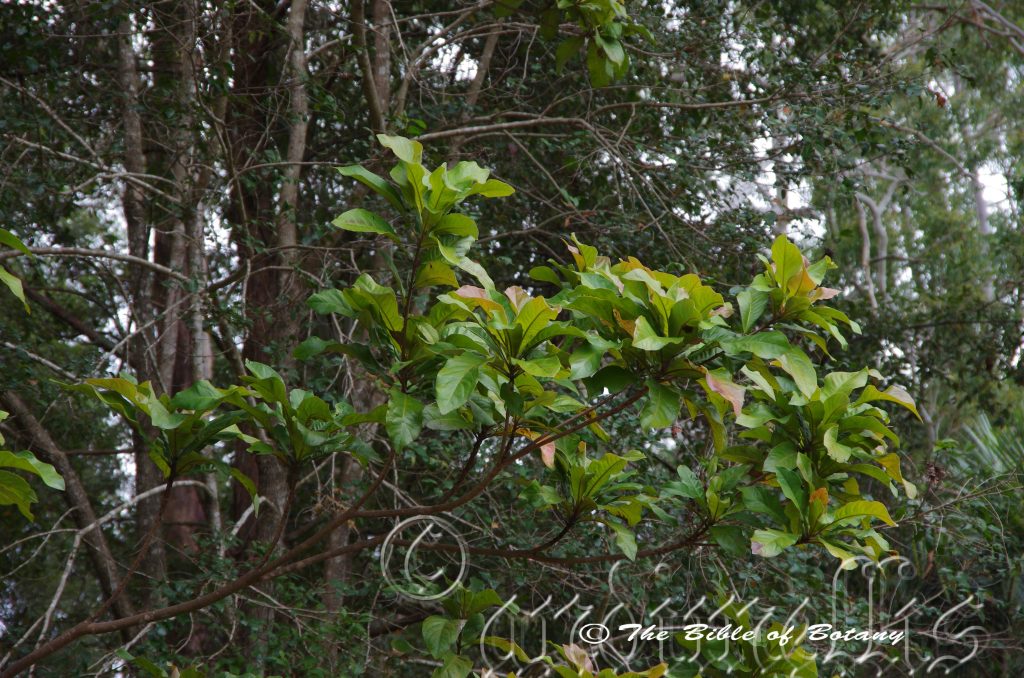
NCBG Coffs Harbour NSW
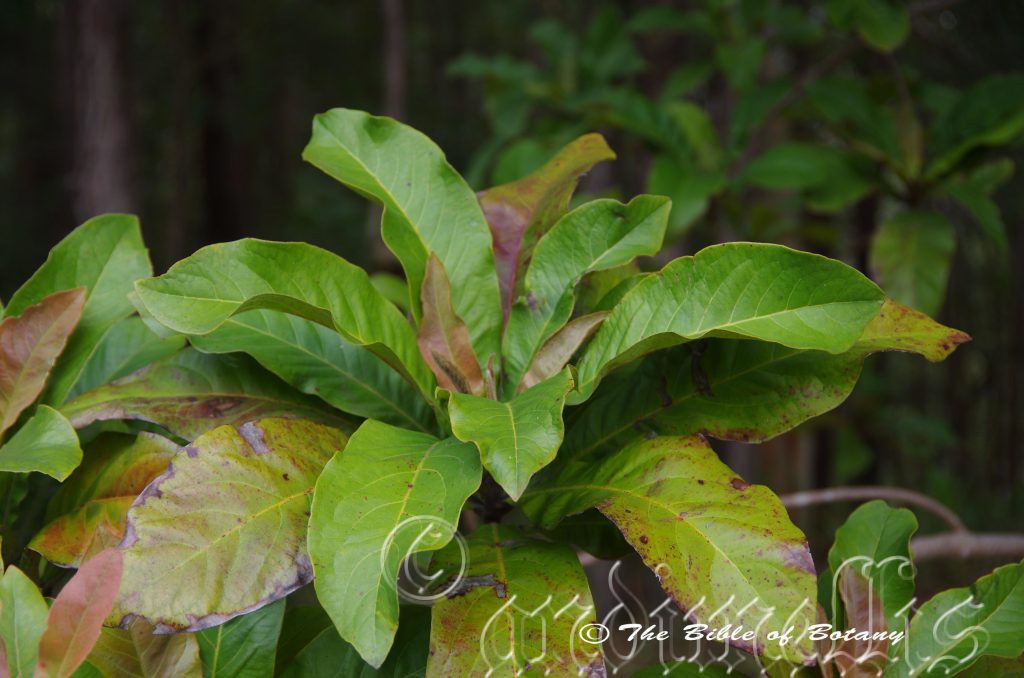
NCBG Coffs Harbour NSW
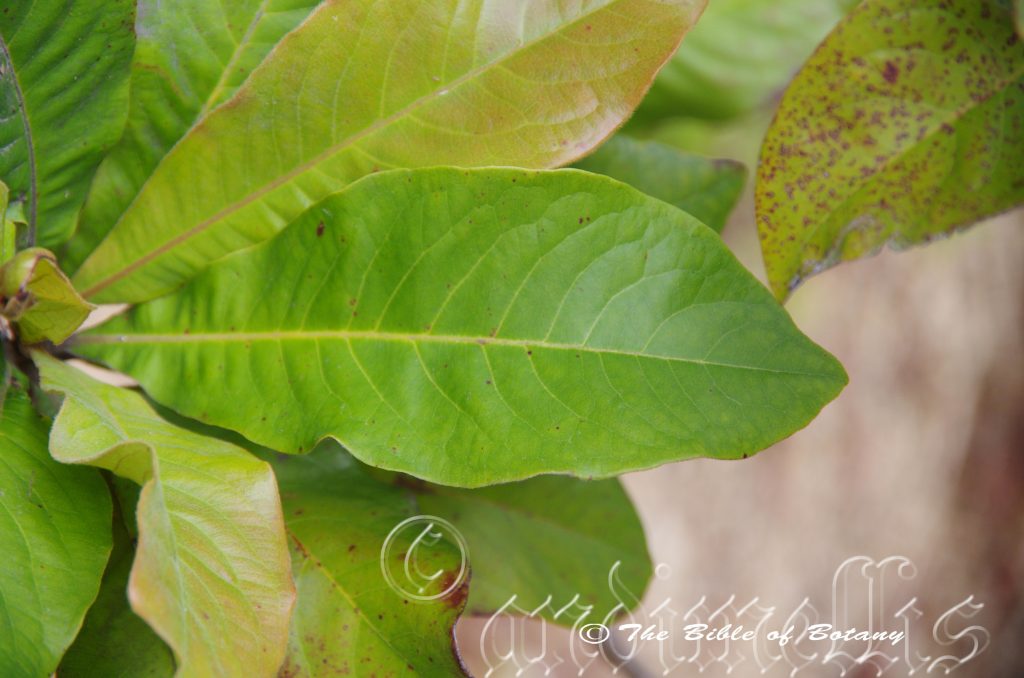
NCBG Coffs Harbour NSW
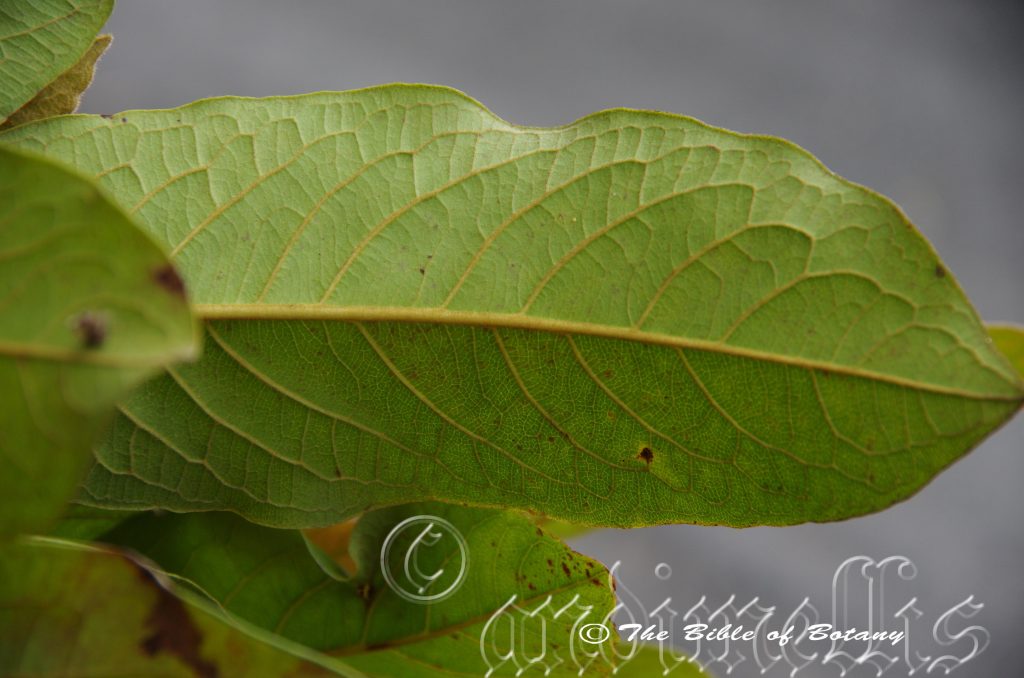
NCBG Coffs Harbour NSW
Xanthostemon whitei
Classification:
Unranked: Eudicots
Unranked: Rosids
Order: Myrtales
Family: Myrtaceae
Subfamily: Myrtoideae
Tribe: Xanthostemoneae
Genus: From Xanthós, which is Ancient Greek for yellow and Stḗmōn, which is Ancient Greek or Stāmen, which is Latin for the male reproductive organs of the filaments and anthers as a single identity. It refers to the flower’s stamens, which are brilliant yellow to pale yellow.
Specie: Is probably named in honour of Cyril Tennison White; 1890-1950, who was a Queensland botanist for 35 years.
Sub specie:
Common Name: Atherton Penda or Red Penda.
Distribution:
Xanthostemon whitei is restricted to a small area in far north Queensland from Cooktown to Innisfail.
https://avh.ala.org.au/occurrences/search?taxa=Xanthostemon+whitei#tab_mapView
Habitat Aspect Climate:
Xanthostemon whitei prefers light dappled shade to full sun. It grows in well-developed rainforests east of the Great Dividing Range. The altitude ranges from 10 meters ASL to 1150 meters ASL.
The temperatures range from 5 degrees in August to 36 degrees in January.
The rainfall ranges from lows of 1750mm to 3200mm average per annum.
Soil Requirements:
Xanthostemon whitei prefers light clays to medium clays. The soils are usually derived from decomposed brown basalts or black basalts. The soils pH ranges from 5pH to 7pH. It does not tolerate waterlogged soils. Non saline soils to moderately saline soils are tolerated.
Height & Spread:
Wild Plants: 33m to 45m by 12m to 16m.
Characteristics:
Xanthostemon whitei grows as a tall, straight tree with deep grey to grey-brown, scabrous bark with depressions where flakes of the bark have been shed. The branchlets are rusty red and turn soft velvety brown where the new growth occurs. The branchlets are densely covered in rusty brown pulverulent hairs.
The alternate, oblong to broadly lanceolate leaves of Xanthostemon whitei measure 70mm to 160mm in length by 30mm to 55mm in width. The bases are tapering cuneate while the apexes are broadly acuminate. The discolourous laminas are deep grass-green, dull to glossy and glabrous on the upper lamina while the lower lamina is paler and dull. The new growth is deep maroon red. The leaf margins are entire and slightly undulating. The laminas recurve slightly from the mid vein to the margins and decurve strongly as they approach the apex. The laminas are slightly convex between the lateral veins. The mid vein is prominent and the 24 to 44 main lateral veins are slightly prominent on the lower laminas and are distinctly visible from the upper laminas. The petiole measures 5mm to 10mm in length.
The inflorescences of Xanthostemon whitei are born on terminal corymbs. The yellow-green to yellow-olive peduncles, rachises and pedicels are covered in rusty puberulent hairs. The peduncles measure 10mm to 20mm in length while the rachises measure 12mm to 24mm in length and the pedicels 4mm to 6.5mm in length.
The olive-yellow hypanthia and lobes are covered in rusty puberulent hairs externally and are glabrous internally. The hypanthia measure 5mm to 6mm in length by 8mm to 9mm in diameter while the lobes measure 4mm to 5mm in length. The bright yellow to orange-yellow petals orbicular petals are covered in rusty–red pulverulent hairs especially near the base and measure 4.5mm to 5.5mm in length by 4.5mm to 5.5mm in diameter.
The 20 exserted stamens are spread at the base to form a ring around the edge of the hypanthia but are free for their entire length. The filaments measure 15mm to 20mm in length. The filaments are bright yellow to orange-yellow while the dorsifixed anthers are ovoidal, yellow to orange-yellow turning brown before the rest of the flower dies. The anthers measure 1.8mm to 2mm in length by 1.4mm in width.
The bright yellow style and stigma are glabrous. The ovary is lime-green and is surrounded by the hypanthia on the sides, lower surface leaving the apex free and open. The glabrous ovary measures 2.5mm to 3mm in diameter. The pistil measures 25mm to 30mm in length. Xanthostemon whitei’s flowers appear from May through to September.
The fruits of Xanthostemon whitei are globose to obovoidal capsules. The capsules are glabrous and covered in white film and measure 10mm to 12mm in length by 10mm to 12mm in diameter. The green capsules turn pale chocolate brown externally and internally often with a white or cream section between the 2 layers when ripe. The green calyx lobes are persistent on the ripe fruit at the base. The pale chocolate brown ovate seeds are flattened and irregular in shape and measure 4mm to 4.5mm in length. The fruit ripen from September to November.
Wildlife:
Xanthostemon whitei’s do not appear to have any predators and attract every type of nectar feeding bird in their range as well as many different nectar feeding butterflies, bees, native flies and wasps. This in return attracts insectivorous birds to the garden.
Cultivation:
Xanthostemon whitei is a magnificent large tree that should only be grown in association with other rainforest trees or as a shade tree in parks and medium to larger gardens. It offers quick growth, and good shade in cultivation. It grows from 25 meters to 35 meters in height by 15 meters to 20 meters in diameter when grown in the open and taller and narrower if grown in a rainforest situation.
It grows exceptionally well on all types of soils where deep leaf litter keeps the soil cool and moisture at an even level. Add to the above, if it is given an adequate supply of water and a little native fertilizer on a regular basis the plants will cope with temperatures as low as 2 degrees and up to 44 degrees. It is moderately drought resistant once established but perform better where the soils retain some moisture.
Two, three or four planted back from a bend will become a very strong focal point when in flower gain a lot of attention whether you are coming or going because of the fresh clean look of the foliage during the initial years of establishment. Place them in the mid ground with large leaf, or fine leaf trees in front. Their trunks contrast beautifully with other large trees like Eucalyptus grandis, Eucalyptus maculata, Eucalyptus microcorys or Corymbia torelliana to create a forest with plenty of shade or spaced to make a delightful park setting. Plants with white, pink, orange, red or purple flowers can be used in both the foreground and background.
It often reaches its full potential in just 12 to 15 years and flower from the sixth or seventh year from seed.
This tree could be used as a bonsai plant despite having a straight stout bole. The trees grown as a bonsai will naturally form a straight stout bole in the pen. (盆景 penjing.) Literally means “basin view” which refers to a scenic view in a saucer or pot. In Japanese it is pronounced bonsai however the original art of bonsai/penjing started in Ancient China, where it was illegal for peasants to grow plants bigger or better than their masters..
Propagation:
Seeds: Seeds of Xanthostemon whitei can be removed easily from the fruits.
Sow freshly treated seeds directly into a seed raising mix, keeping them moist not wet. Do not over water as the seeds will rot off before germination takes place. Place the trays in a cool shaded area with 50mm shade cloth in the bush house. When the seedlings are 20mm to 25mm tall, prick them out and plant them into 50mm native tubes using a good organic mix.
As the seedlings roots reach the bottom of the tubes plant them out into their permanent position. Do not delay.
Fertilize using Seaweed, fish emulsion or organic chicken pellets soaked in water and apply the liquid on an alternate basis. Fertilize every 2 months until the plants are well established then on an annual basis in September or March to maintain good health, vigour and better flowering.
Further Comments from Readers:
“Hi reader, it seems you use The Bible of Botany a lot. That’s great as we have great pleasure in bringing it to you! It’s a little awkward for us to ask, but our first aim is to purchase land approximately 1,600 hectares to link several parcels of N.P. into one at The Pinnacles NSW Australia, but we need your help. We’re not salespeople. We’re amateur botanists who have dedicated over 30 years to saving the environment in a practical way. We depend on donations to reach our goal. If you donate just $5, the price of your coffee this Sunday, We can help to keep the planet alive in a real way and continue to bring you regular updates and features on Australian plants all in one Botanical Bible. Any support is greatly appreciated. Thank you.”
In the spirit of reconciliation we acknowledge the Bundjalung, Gumbaynggirr and Yaegl and all aboriginal nations throughout Australia and their connections to land, sea and community. We pay our respect to their Elders past, present and future for the pleasures we have gained.
Xanthostemon youngii
Classification:
Unranked: Eudicots
Unranked: Rosids
Order: Myrtales
Family: Myrtaceae
Subfamily: Myrtoideae
Tribe: Xanthostemoneae
Genus: From Xanthós, which is Ancient Greek for yellow and Stḗmōn, which is Ancient Greek or Stāmen, which is Latin for the male reproductive organs of the filaments and anthers as a single identity. It refers to the flower’s stamens, which are brilliant yellow to pale yellow.
Specie: Is named in honour of Young but which Gould cannot be substantiated.
Sub specie:
Common Name: Crimson Penda or Red Penda.
Distribution:
Xanthostemon youngii is found in a restricted area in far north Queensland south from the Iron Range national Park to Coen. It is found along the coastal strip.
https://avh.ala.org.au/occurrences/search?taxa=Xanthostemon+youngii#tab_mapView
Habitat Aspect Climate:
Xanthostemon youngii prefers light dappled shade to full sun. It grows in well-developed littoral rainforests, tropical monsoonal rainforests along the coast and estuaries. The altitude ranges from 2 meters ASL to 35 meters ASL.
The temperatures range from 10 degrees in August to 36 degrees in January.
The rainfall ranges from lows of 1750mm to 2250mm average per annum.
Soil Requirements:
Xanthostemon youngii prefers deep, course sands, fine sands to deep course, gritty medium clays. The soils are usually derived from granites, basalts or accumulated beach sands. The soils pH ranges from 4.5pH to 7pH. It does not tolerate waterlogged soils. Non saline soils to very saline soils are tolerated.
Height & Spread:
Wild Plants: 8m to 12m by 3m to 5m.
Characteristics:
Xanthostemon youngii grows as a small tree with a crooked, gnarled, pale grey to almost white, glabrous to scabrous trunk with depressions where flakes of the bark have been shed. The branchlets are white to pale grey. The new twigs and buds are green and covered in pale fawn sericeous hairs.
The alternate, ovate to oblong-ovate leaves of Xanthostemon youngii measure 35mm to 70mm in length by 15mm to 35mm in width. The glabrous petiole measures 5mm to 10mm in length. The bases are cuneate while the apex is obtuse-acute, tapering obtuse. The discolourous laminas are grass-green to sea-green, dull and glabrous on the upper lamina while the lower laminas are slightly paler. The laminas are flat to slightly recurve gently upwards from the mid vein to the margins and decurve downwards near the apexes. The leaf margins are entire. The mid vein is prominent on both laminas. The lateral veins usually form loops inside the margin. There are usually 1 to 4 oil dots on most reticulations. The new growth is bright maroon-red and glabrous.
The inflorescences of Xanthostemon youngii are born on terminal cymes. The deep green peduncles and pedicels are glabrous or sparsely covered in puberulent hairs. The peduncles measure 2mm to 4mm in length while the pedicels 8mm to 12mm in length.
The pale yellow-green hypanthium and pale green and glabrous while the pale green to pale red lobes are covered in rusty puberulent hairs externally and are glabrous internally. The hypanthia are divided into 5 distinct saccate chambers and measure 4mm to 5mm in length by 12mm to 15mm in diameter. The nectariferous lobes are broad triangular and measure 3mm to 4mm in length by 5mm to 6mm in width at the base.
The pale orange-red to deep scarlet-red petals are narrowly oblanceolate to broadly spathulate, covered in rusty–red pulverulent hairs especially near the base and measure 9mm to 11mm in length by 5mm to 7mm in diameter.
The 20 exserted stamens spread out at the base to form a ring around the edge of the hypanthia but are free for their entire length. The filaments are covered in rusty-red puberulent hairs near the base and measure 20mm to 25mm in length. The filaments are pale red to deep, bright scarlet-red while the basifixed anthers are ovoidal, pale red to deep scarlet-red turning brown before the rest of the flower dies. The anthers pollen is white. The anthers measure 1.8mm to 2mm in length by 1.4mm in width.
The bright scarlet-red pistils are covered in pulverulent hairs near the base and are glabrous for the remainder. The ovaries are pale red to deep scarlet-red and protrude above the hypanthium. The ovaries are covered in white hirsute hairs and measures 5mm to 5.5mm in diameter. The pistil measures 17mm to 20mm in length. Xanthostemon youngii’s flowers appear from May through to September.
The fruits of Xanthostemon youngii are globose to obovoidal capsules. The capsules are glabrous and measure 13mm to 17mm in length by 13mm to 17mm in diameter. The green capsules turn pale chocolate brown externally and internally when ripe. The green calyx lobes are persistent on the ripe fruit at the base. The pale chocolate brown ovate seeds are flattened and irregular in shape and measure 4.5mm to 5.5mm in length.
Wildlife:
Xanthostemon youngii’s do not appear to have any predators and attract every type of nectar feeding bird in their range as well as many different nectar feeding butterflies, bees, native flies and wasps. This in return attracts insectivorous birds to the garden.
It is extremely prone to Myrtle Rust Austropuccinia psidii disease that has spread rapidly throughout the east coast of Australia.
Cultivation:
Xanthostemon youngii is a magnificent small tree that can be grown in association with other littoral rainforest specie or as a shade tree in parks and gardens. It offers quick growth, and reasonable shade. In cultivation it grows from 7 meters to 10 meters in height by 3 meters to 5 meters in diameter when grown in the open.
It grows exceptionally well on accumulated beach sands where deep leaf litter keeps the soil cool and moisture at an even level. Add to the above, if it is given a little extra of water and a little native fertilizer on a regular basis the plants will cope with temperatures as low as 5 degrees and up to 42 degrees. It is moderately drought resistant once established but are very difficult to establish on soils other than pure sand. The trees often have their roots down into a water table controlled by the tides and tidal surges.
It is ideal at the edge of a littoral rain forest where the beauty of their flowers and columular growth can be fully appreciated amidst a heath land setting of smaller plants where it will carpet the plants in red on an annual basis. The trees are so spectacular it would be worthwhile persevering with as far south as Coffs Harbour or Port Macquarie if the gardens are frost free and have deep accumulated beach sands.
Two, three or four planted back from a bend or scattered in a large garden or 1 or 2 plants planted on a raised bed, in a traffic island of other feature will become a very strong focal point when in flower. It will gain a lot of attention whether you are coming or going because of the fresh clean look of the foliage during the initial years of establishment. Place them in the mid ground with large leaf, or fine leaf trees in front.
Place it in the mid ground with large leaf, or fine leaf ground covers and very small shrubs or annuals in front. To the rear, use large leaf taller trees like Eucalyptus miniata, Eucalyptus houseana, Eucalyptus pellita or Corymbia ptycocarpa to create a dwarf forest with plenty of shade. Plants with white, pink, lilac or purple flowers can be used in both the foreground. Smaller plants with finer foliages in pale green or blue grey foliages will also compliment the scene in the fore ground during periods when there are few flowers in the garden.
Xanthostemon chrysanthus’s bark contrasts beautifully with Eucalyptus miniata, Corymbia ptycocarpa or the other trees mentioned above. Use Corymbia ptycocarpa where there may be septic trenches or drainage channels so that it can gain access to a consistent supply of water.
This tree could be used a s bonsai plant as I have seen some trees in the forest that have grown in some very difficult conditions take on some weird shapes.
Propagation:
Seeds: Seeds of Xanthostemon youngii can be removed easily from the fruits.
Sow freshly treated seeds directly into a seed raising mix, keeping them moist not wet. Do not over water as the seeds will rot off before germination takes place. Place the trays in a cool shaded area with 50mm shade cloth in the bush house. When the seedlings are 20mm to 25mm tall, prick them out and plant them into 50mm native tubes using a good organic mix.
As the seedlings roots reach the bottom of the tubes plant them out into their permanent position. Do not delay.
Fertilize using Seaweed, fish emulsion or organic chicken pellets soaked in water and apply the liquid on an alternate basis. Fertilize every 2 months until the plants are well established then on an annual basis in September or March to maintain good health, vigour and better flowering.
Further Comments from Readers:
“Hi reader, it seems you use The Bible of Botany a lot. That’s great as we have great pleasure in bringing it to you! It’s a little awkward for us to ask, but our first aim is to purchase land approximately 1,600 hectares to link several parcels of N.P. into one at The Pinnacles NSW Australia, but we need your help. We’re not salespeople. We’re amateur botanists who have dedicated over 30 years to saving the environment in a practical way. We depend on donations to reach our goal. If you donate just $5, the price of your coffee this Sunday, We can help to keep the planet alive in a real way and continue to bring you regular updates and features on Australian plants all in one Botanical Bible. Any support is greatly appreciated. Thank you.”
In the spirit of reconciliation we acknowledge the Bundjalung, Gumbaynggirr and Yaegl and all aboriginal nations throughout Australia and their connections to land, sea and community. We pay our respect to their Elders past, present and future for the pleasures we have gained.
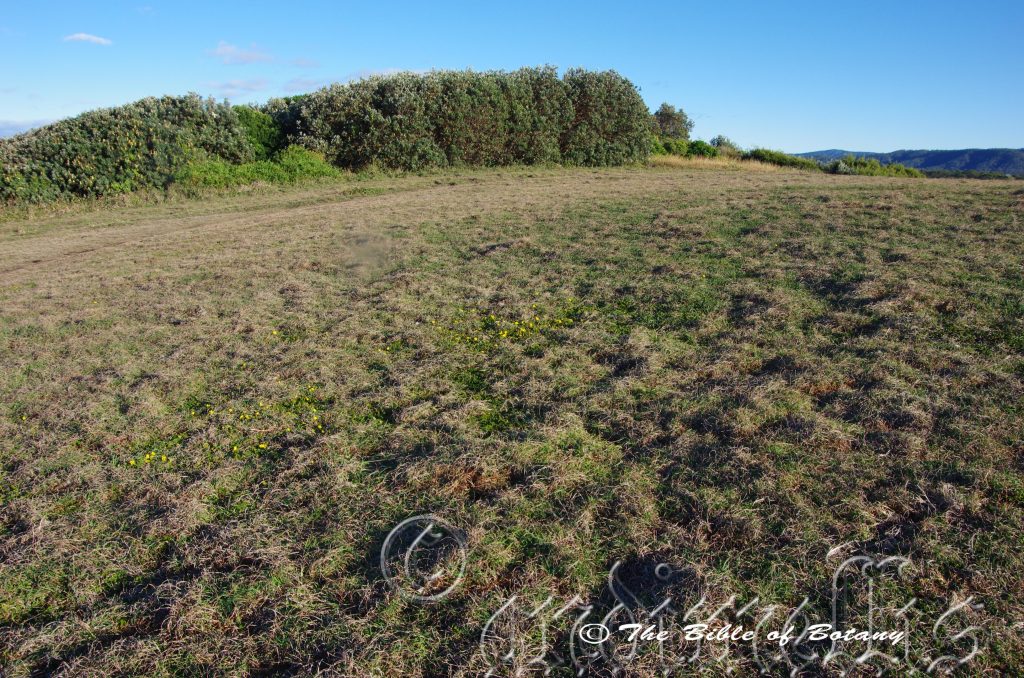
Moonee Headland NSW
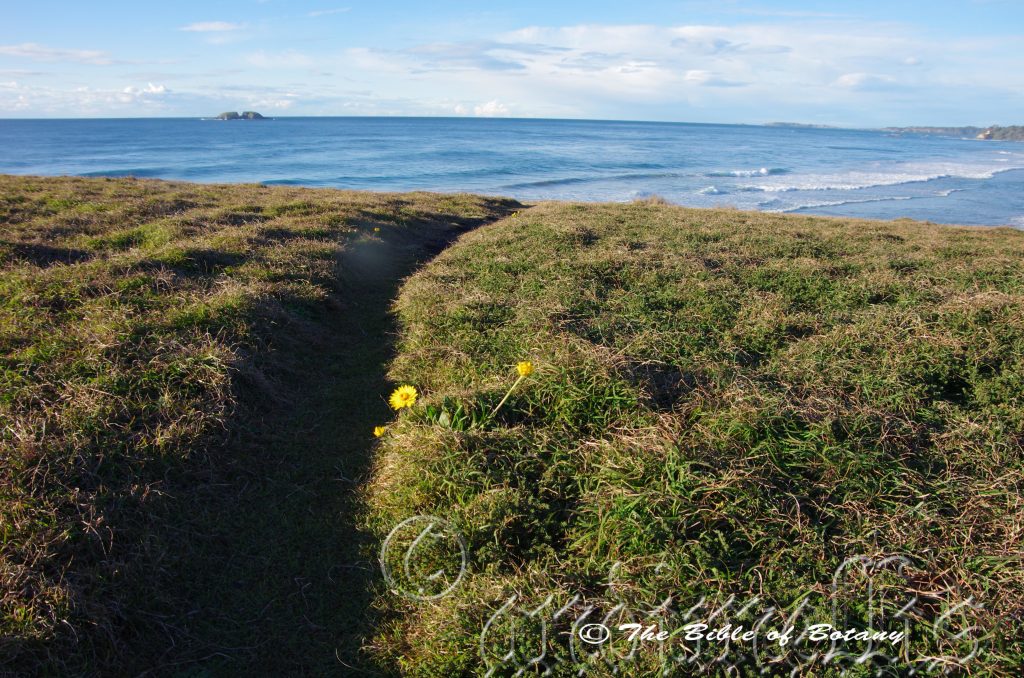
Moonee Headland NSW
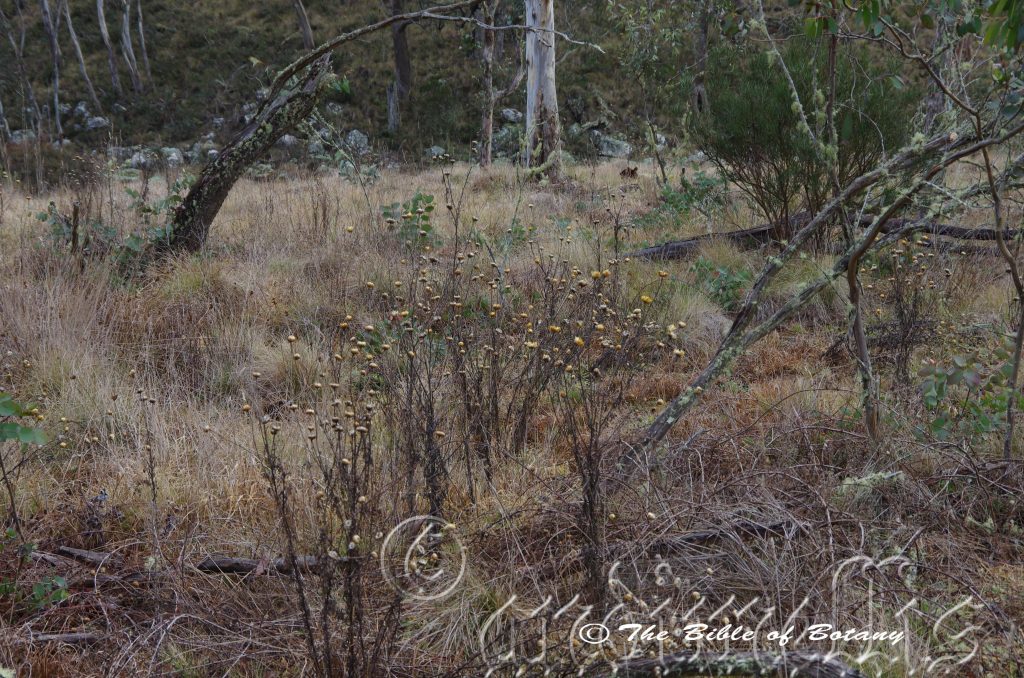
Ebor NSW
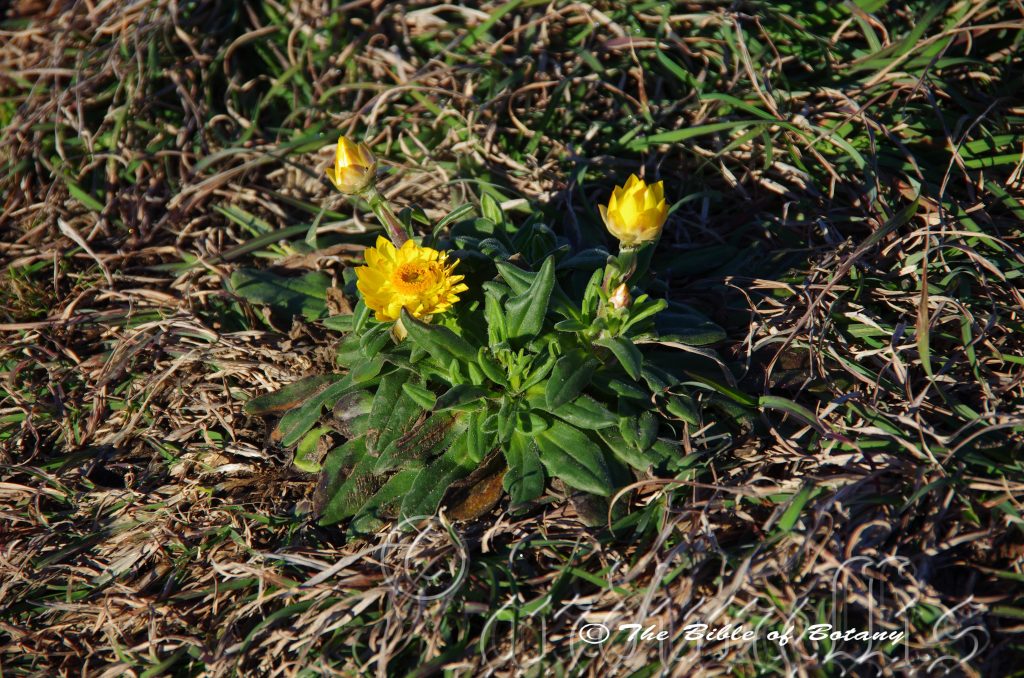
Moonee Headland NSW
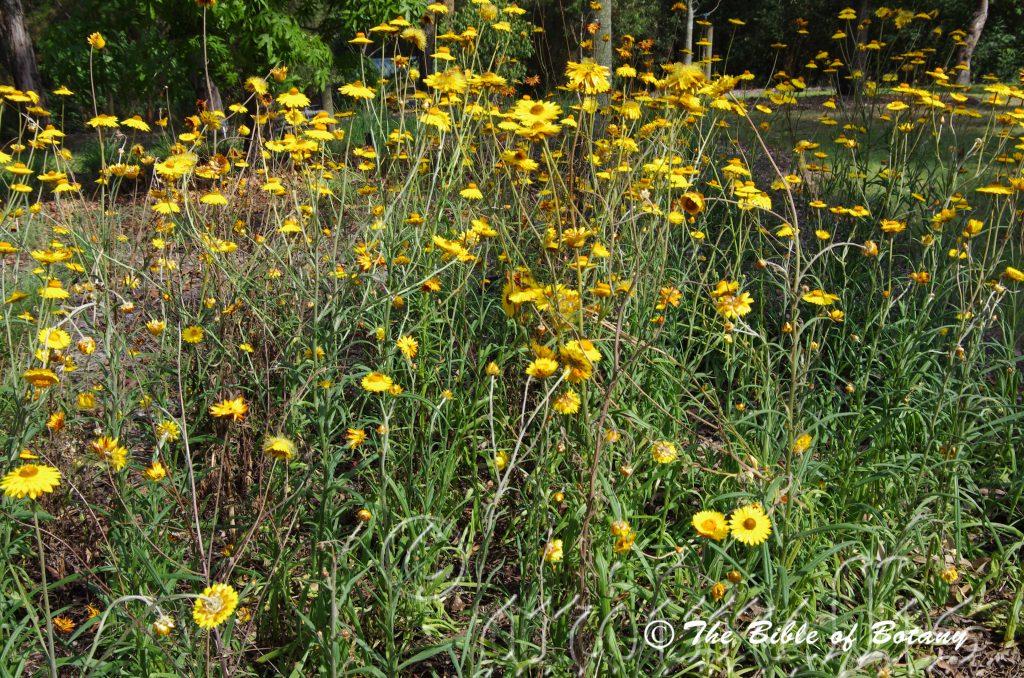
Mount Cootha Botanic Gardens Qld.
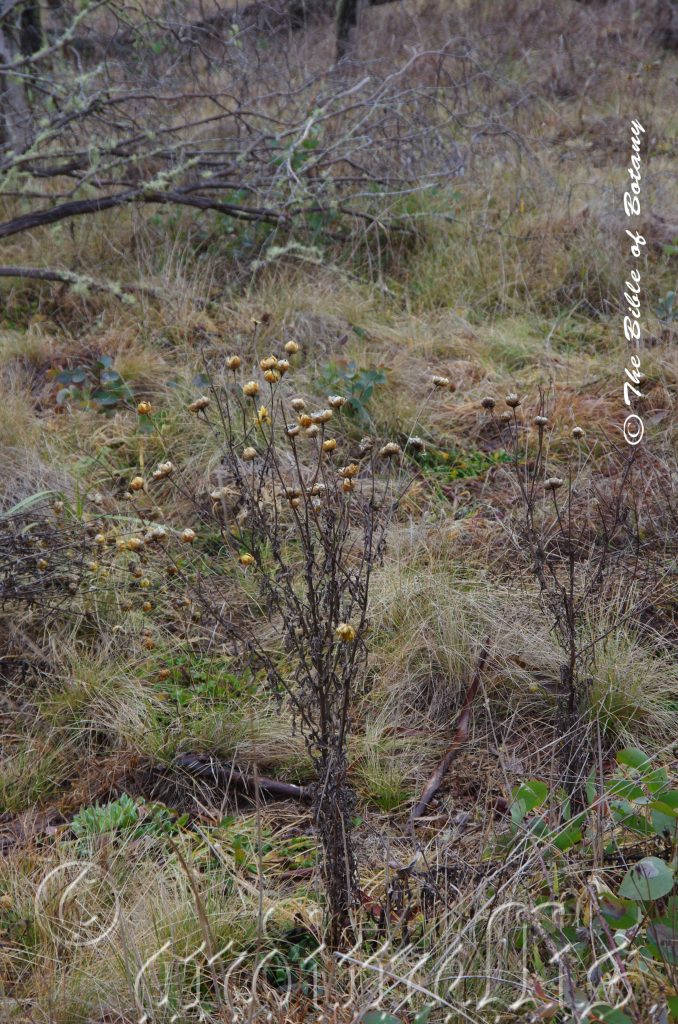
Ebor NSW

Indigiscapes Capalaba Qld.
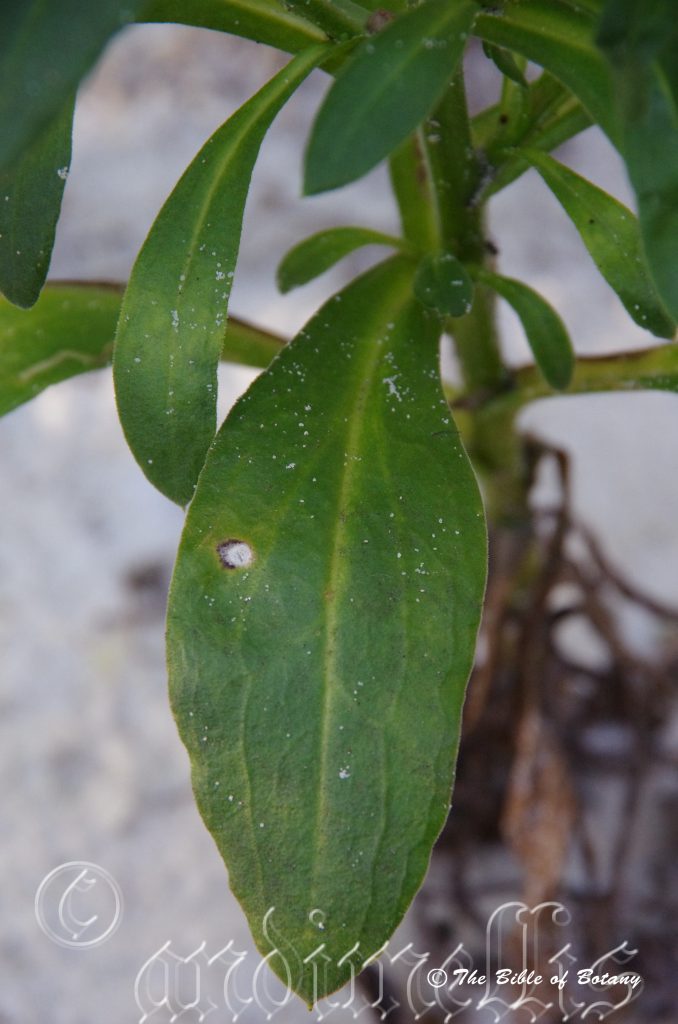
Indigiscapes Capalaba Qld.
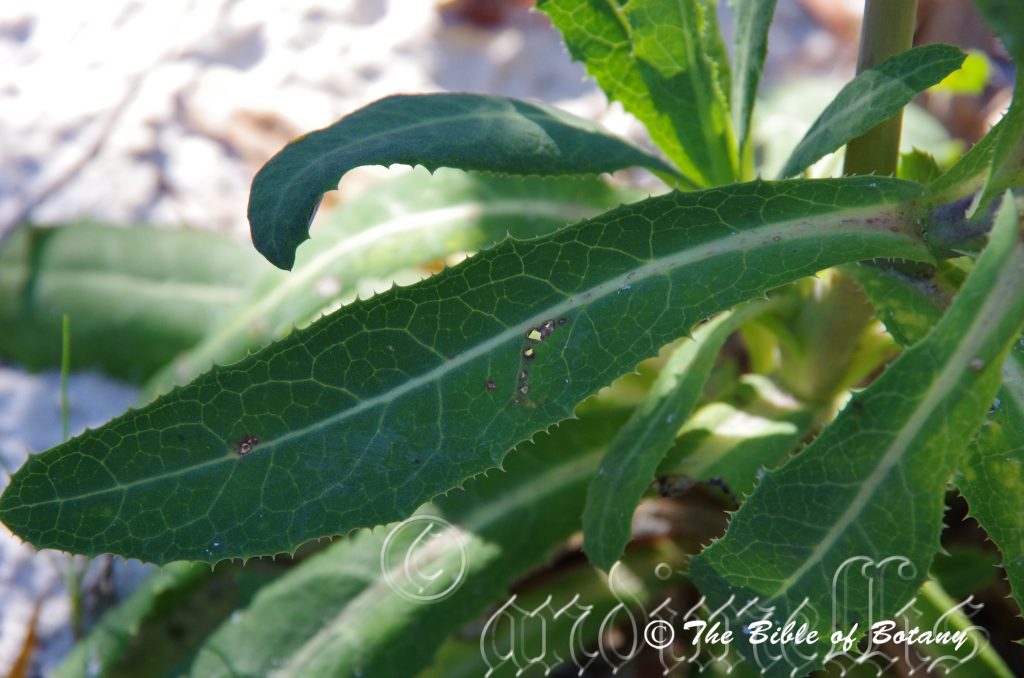
Coffs Harbour Botanic Gardens NSW
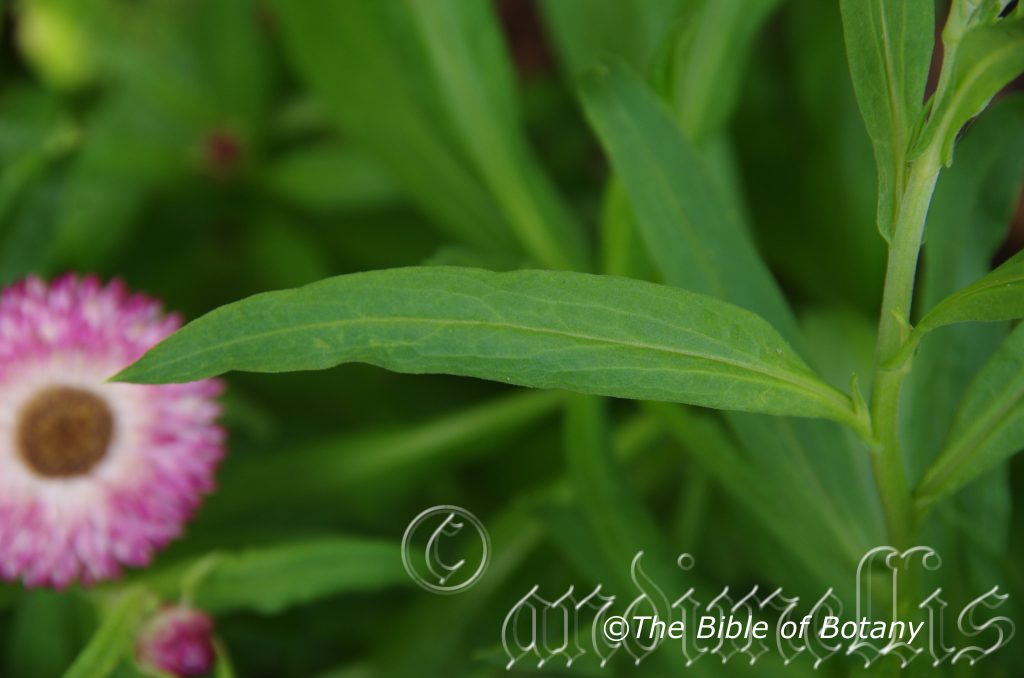
Indigiscapes Capalaba Qld.

Indigiscapes Capalaba Qld.
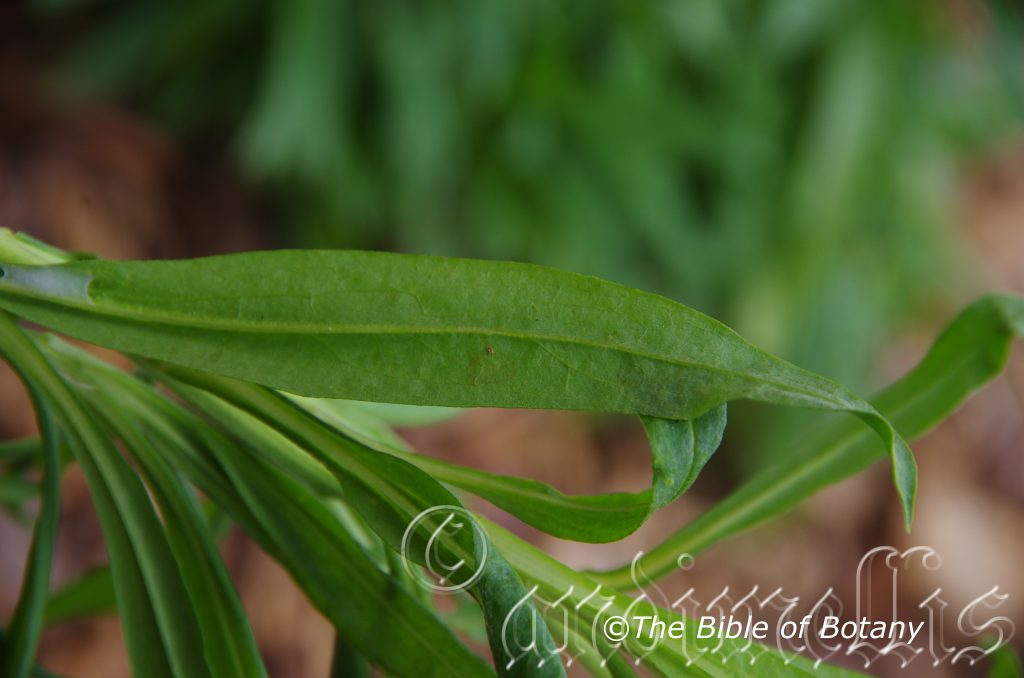
Moonee Headland NSW
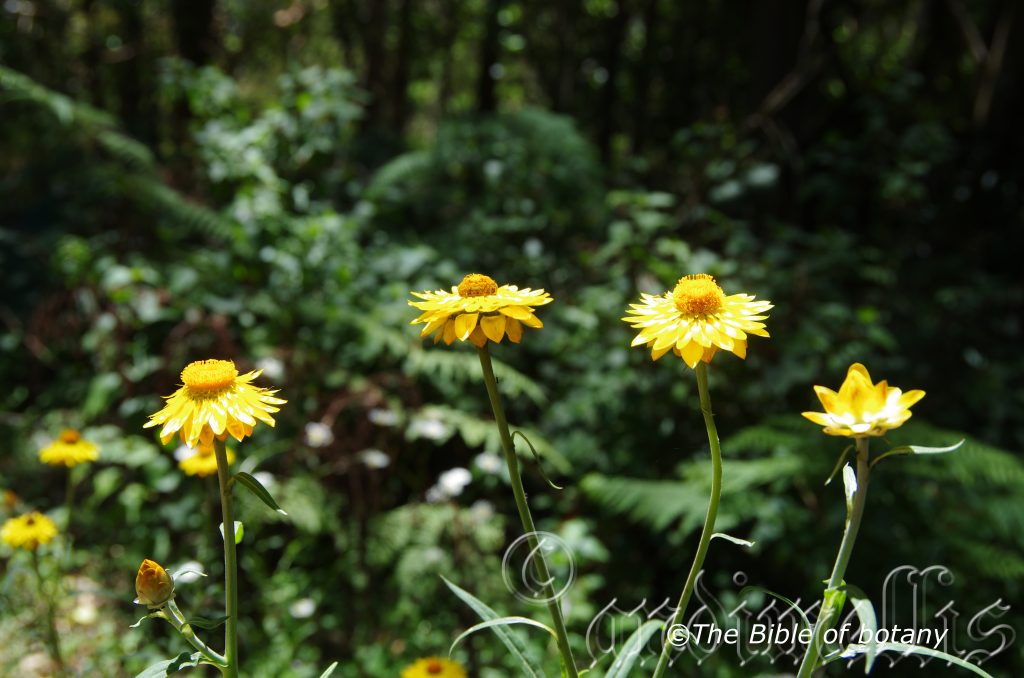
Washpool National Park NSW
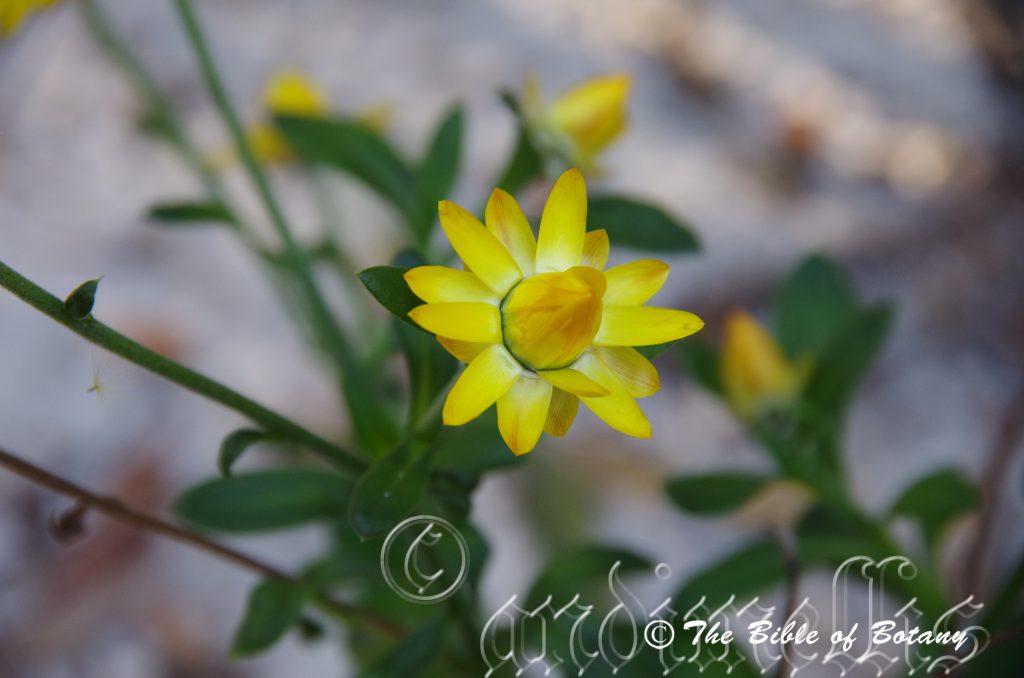
Indigiscapes Capalaba Qld.
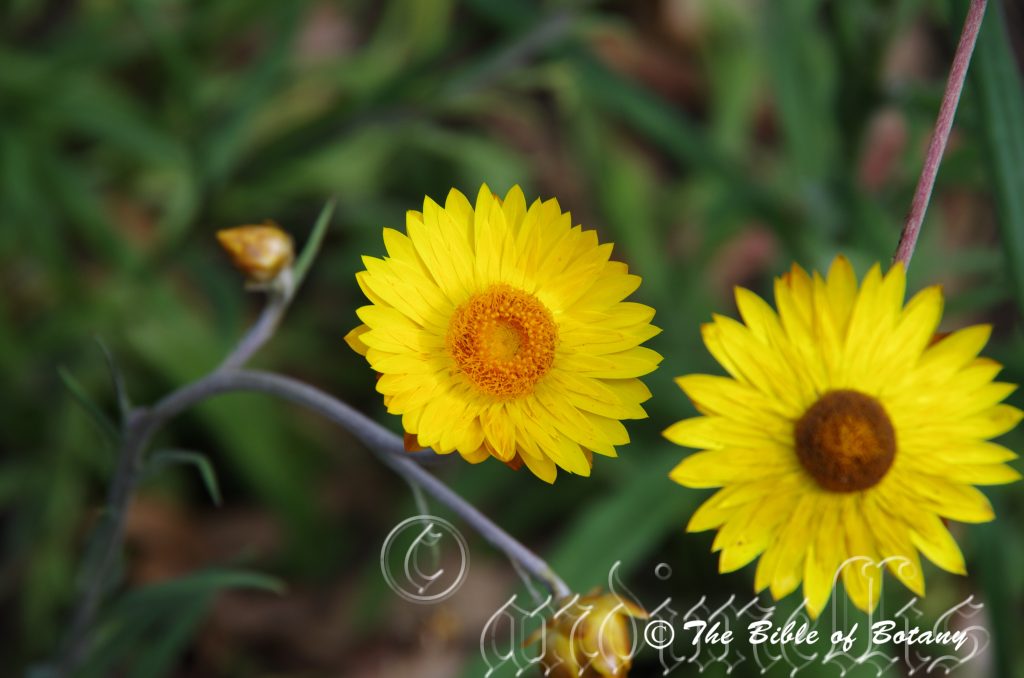
Mount Cootha Botanic Gardens Qld.
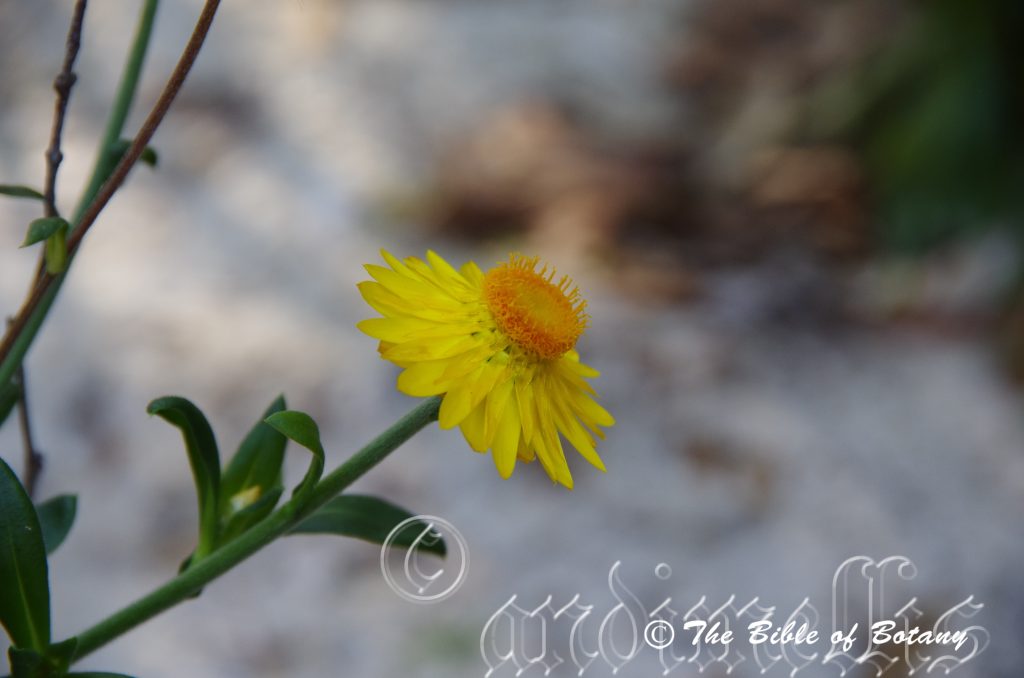
Indigiscapes Capalaba Qld.
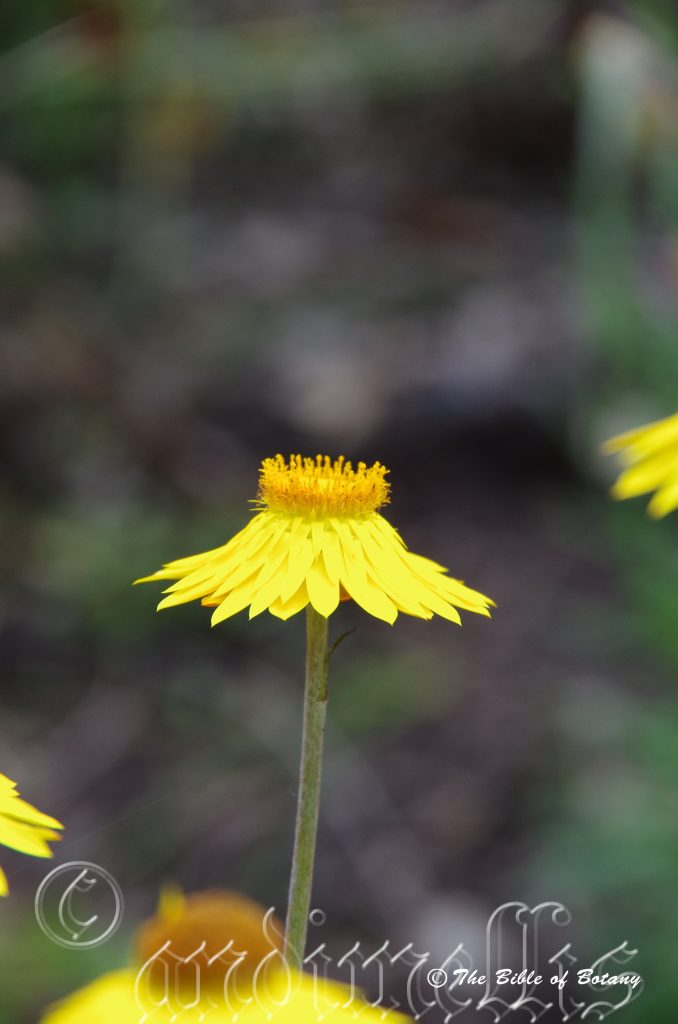
Moonee Beach Headland NSW.
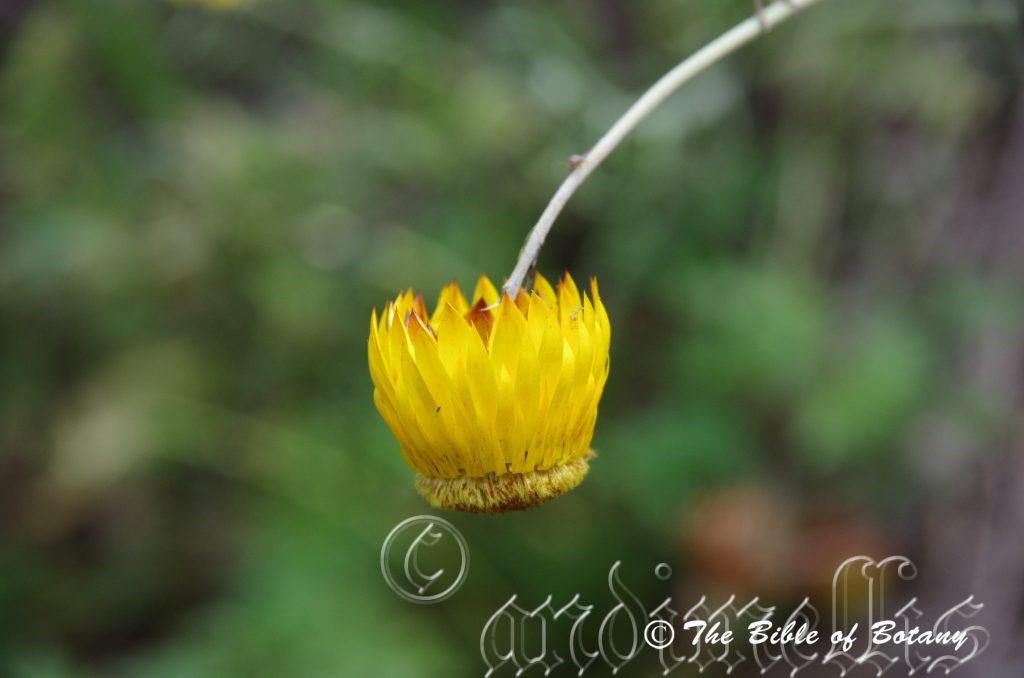
Moonee Beach Headland NSW.
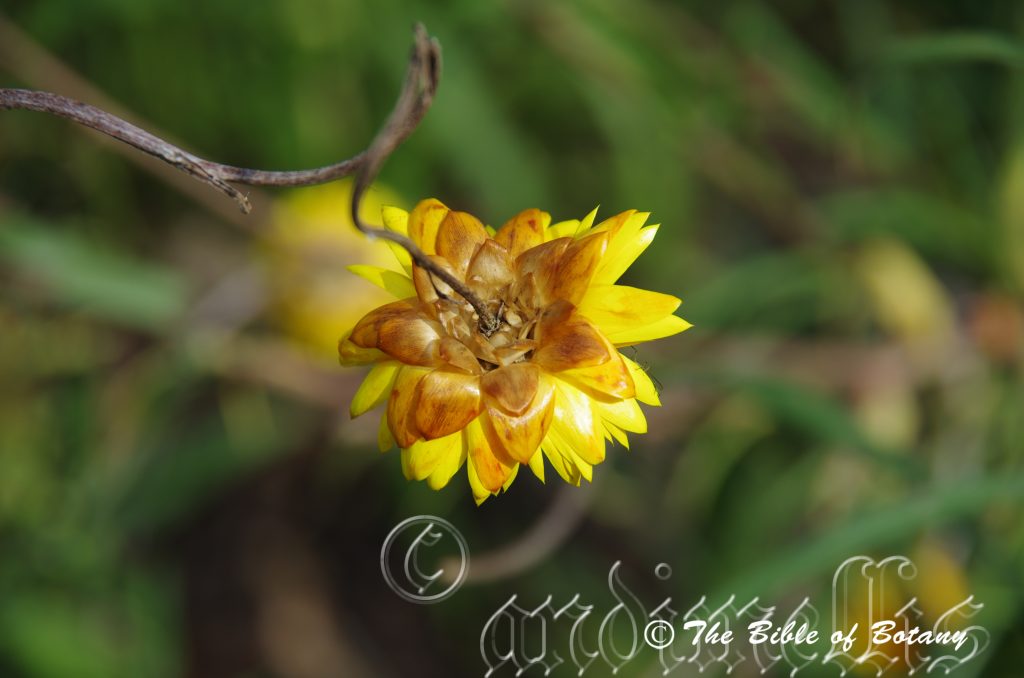
Mount Cootha Botanic Gardens Qld.
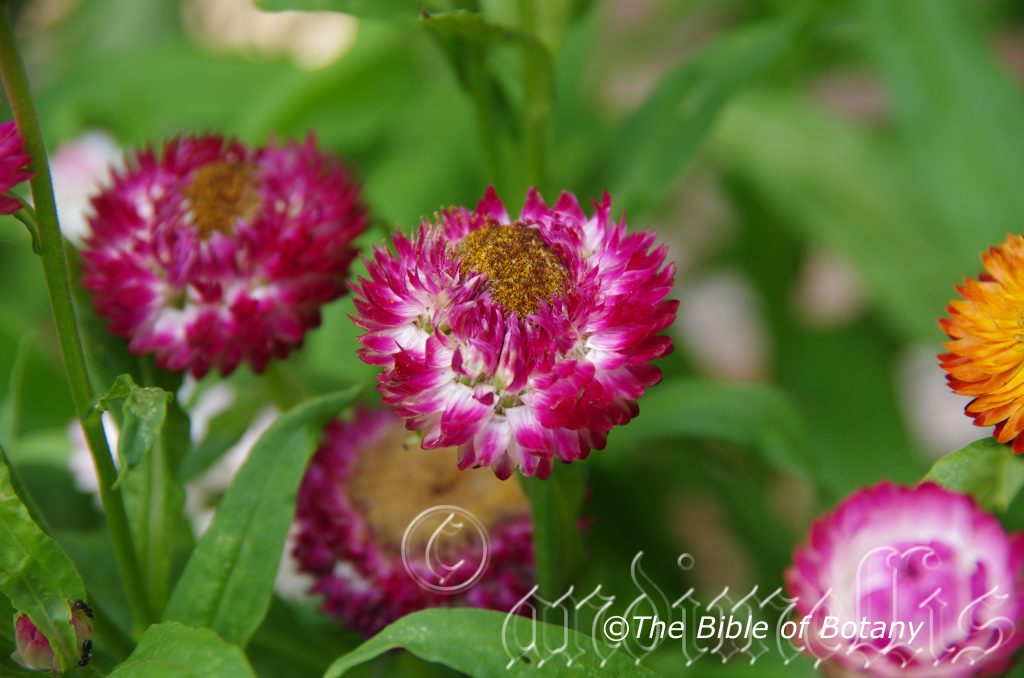
Coffs Harbour Botanic Gardens NSW
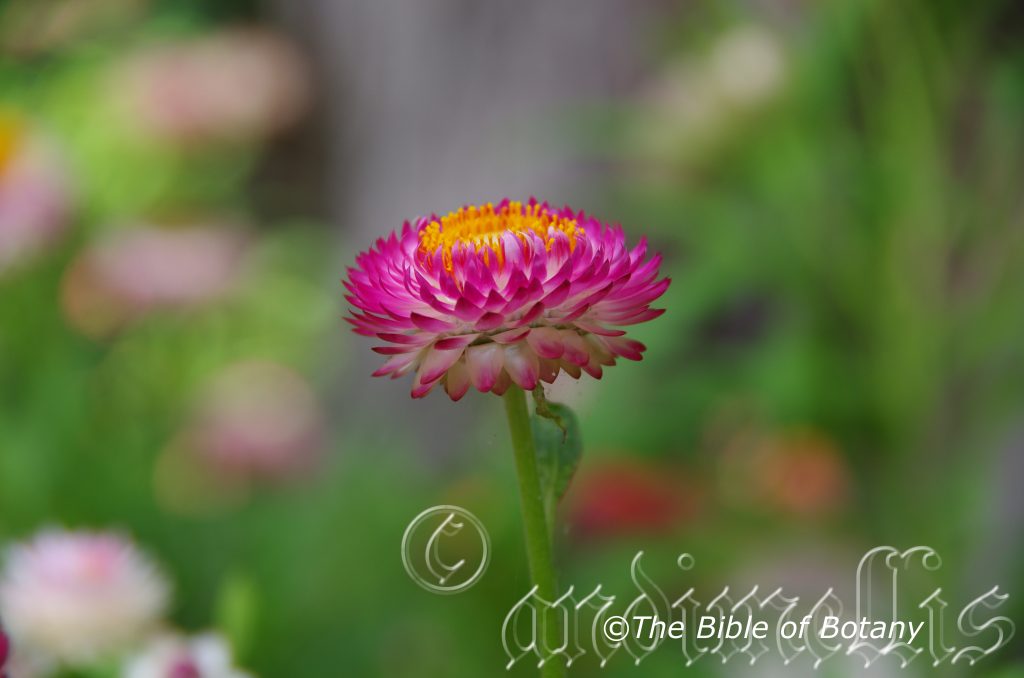
Coffs Harbour Botanic Gardens NSW
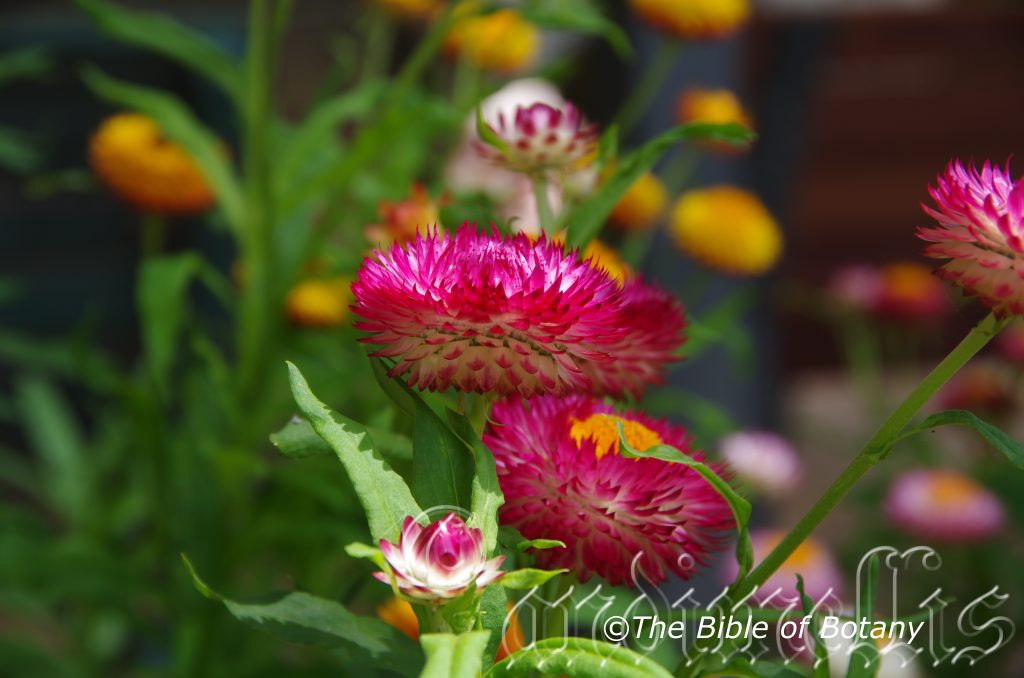
Coffs Harbour Botanic Gardens NSW
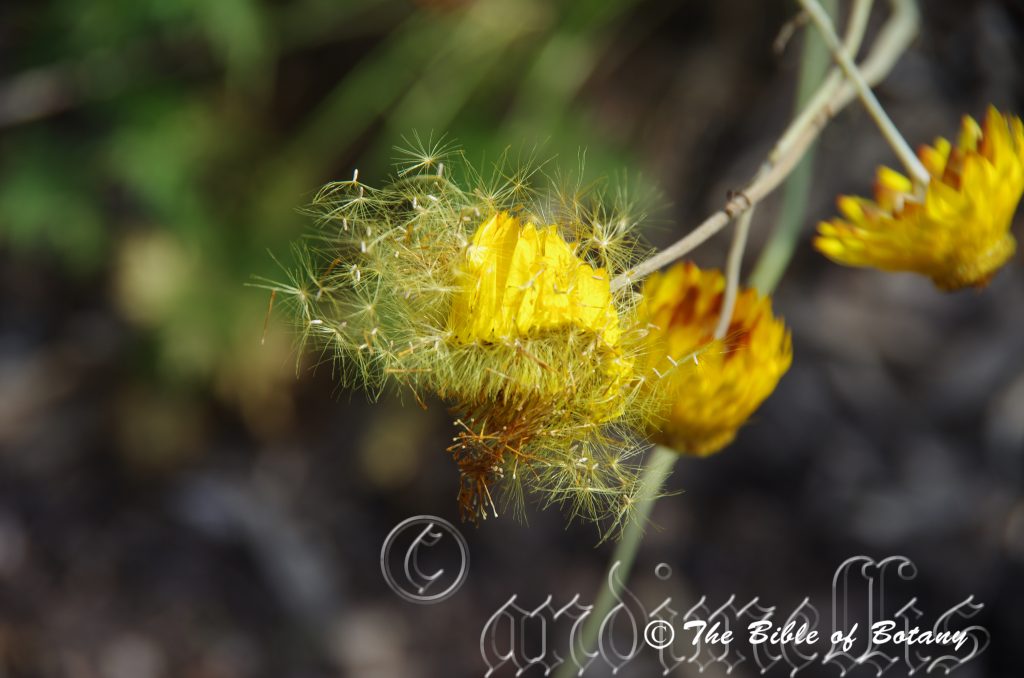
Mount Cootha Botanic Gardens Qld.
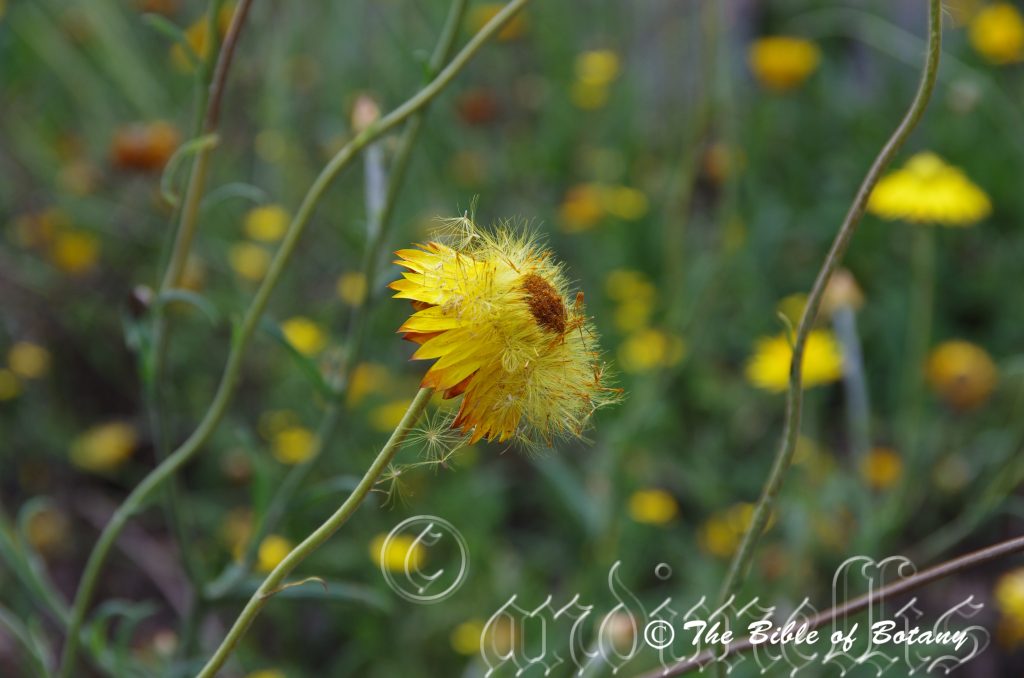
Indigiscapes Capalaba Qld.
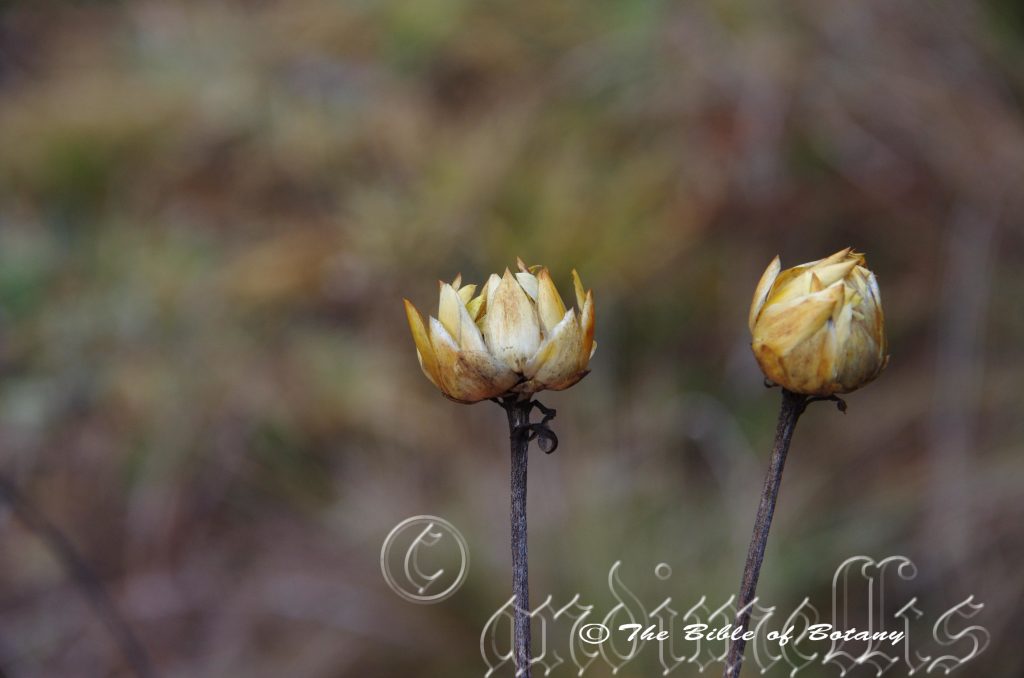
Ebor NSW
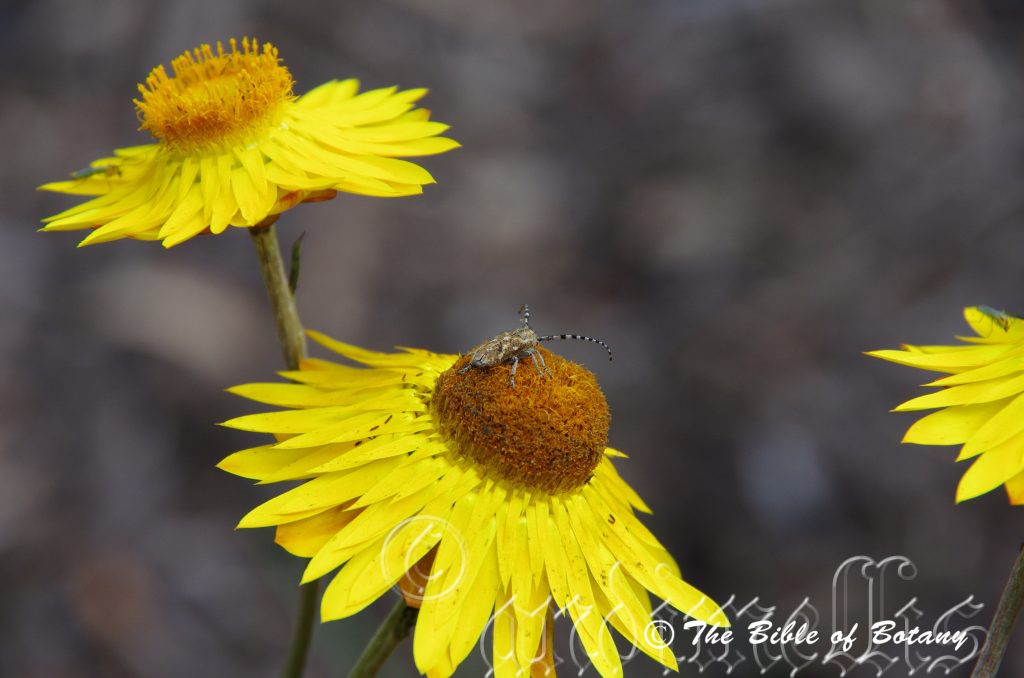
Mount Cootha Botanic Gardens Qld.
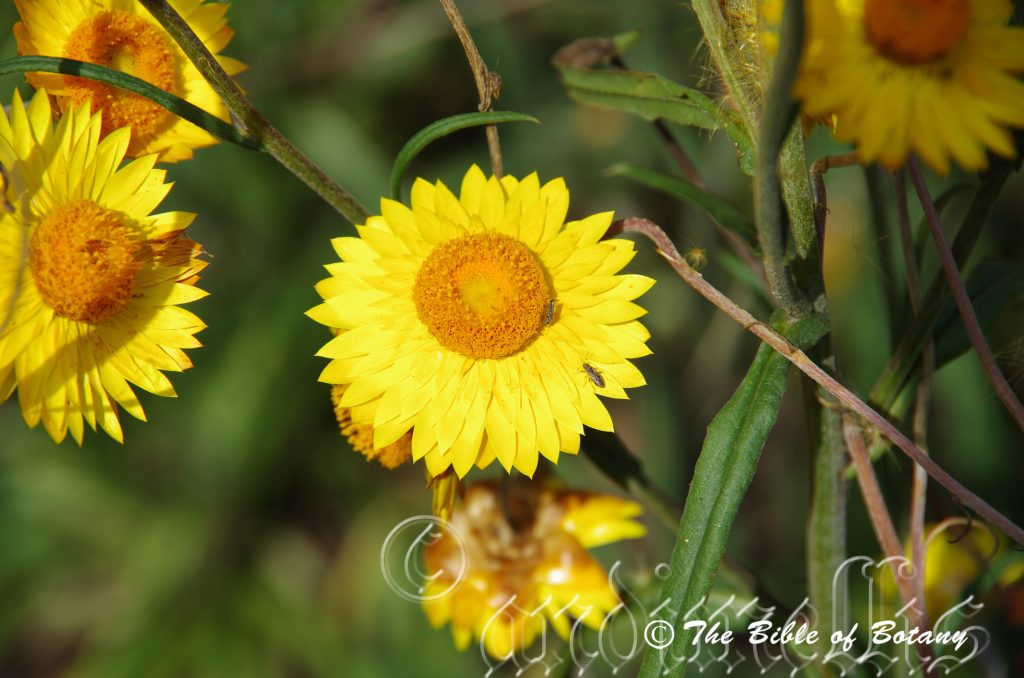
Mount Cootha Botanic Gardens Qld.
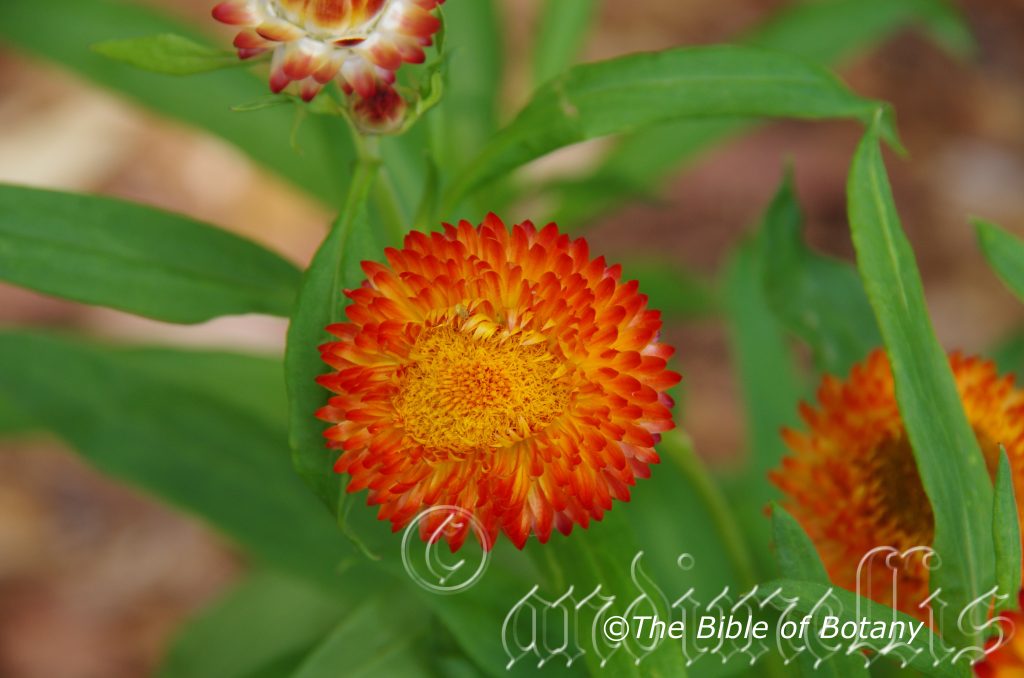
Coffs Harbour Botanic Gardens NSW
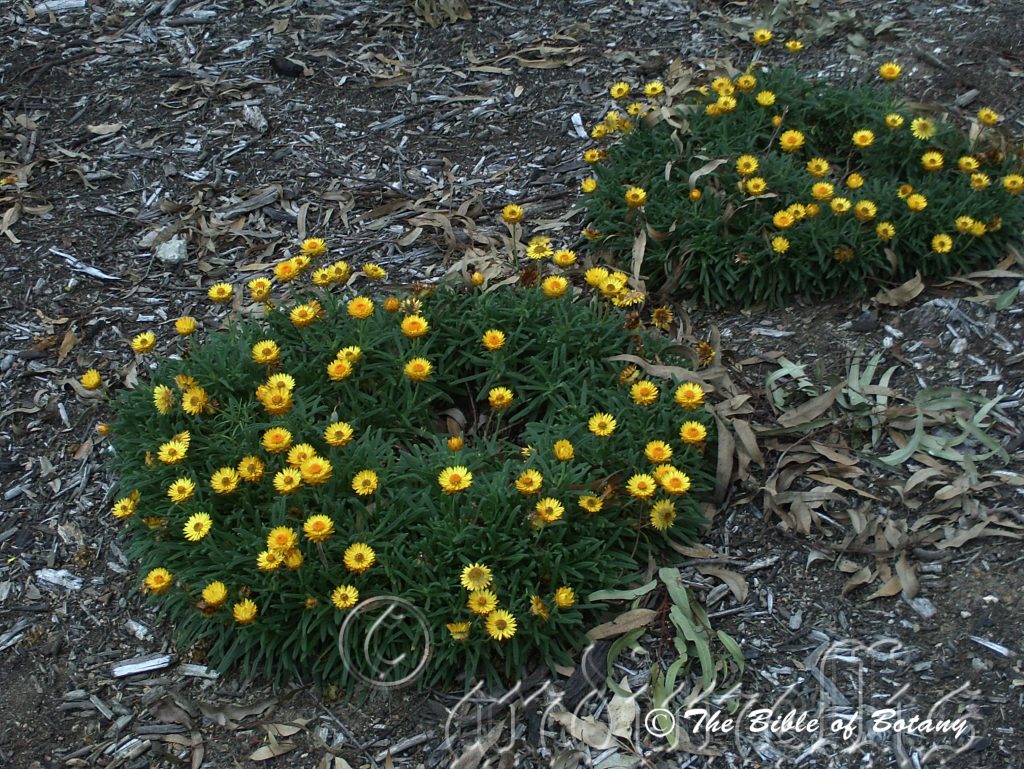
Mount Cootha Botanic Gardens Qld.
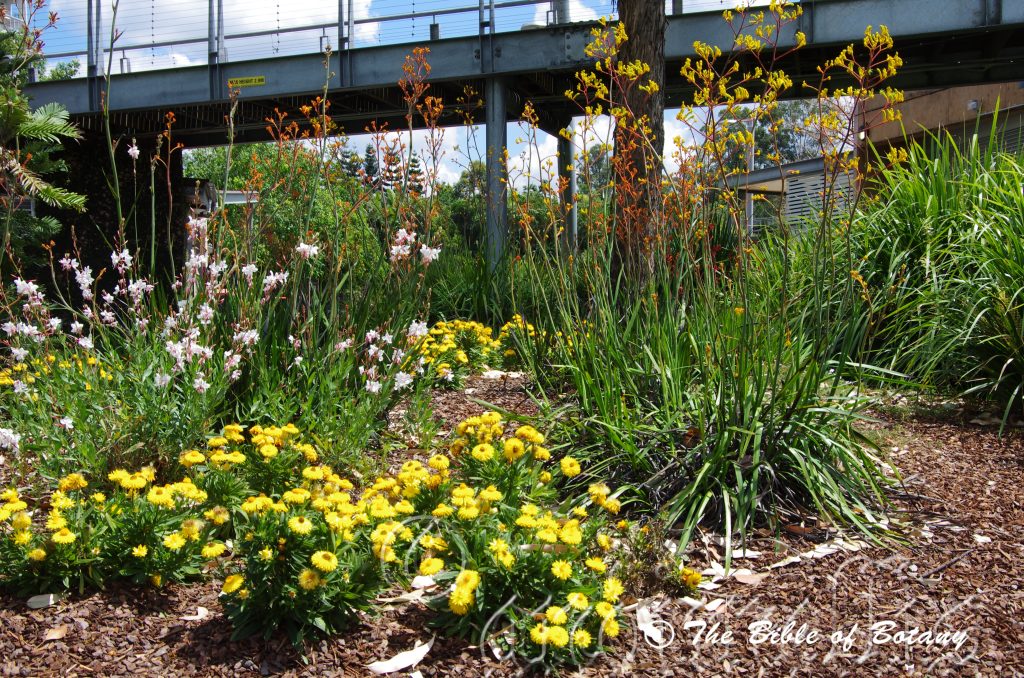
Roma Street Floral Gardens Qld.
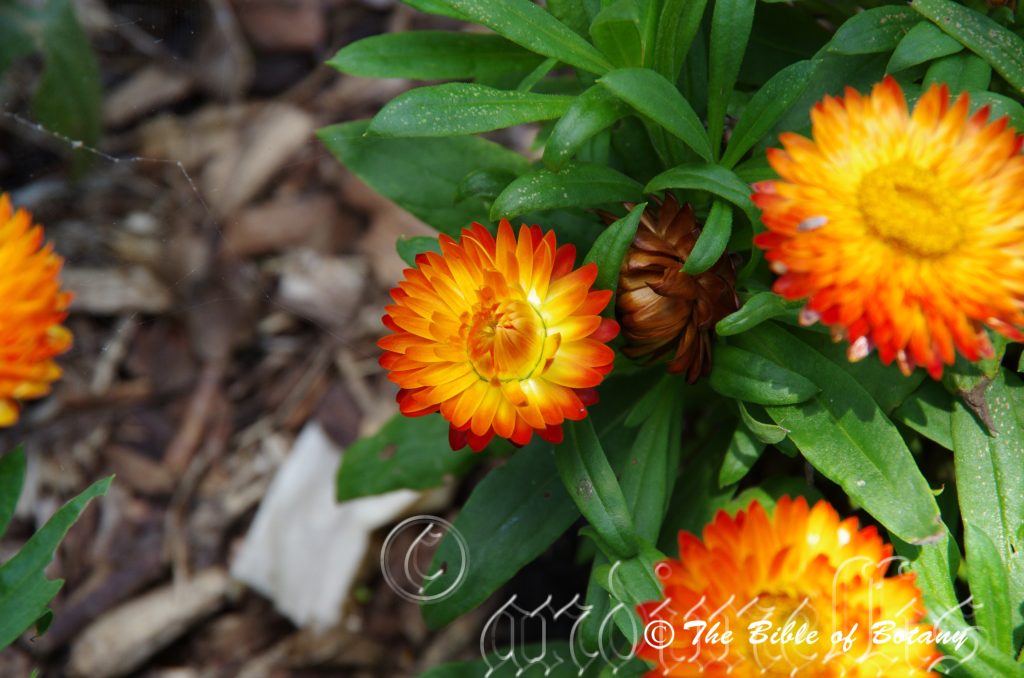
Roma Street Floral Gardens Qld.
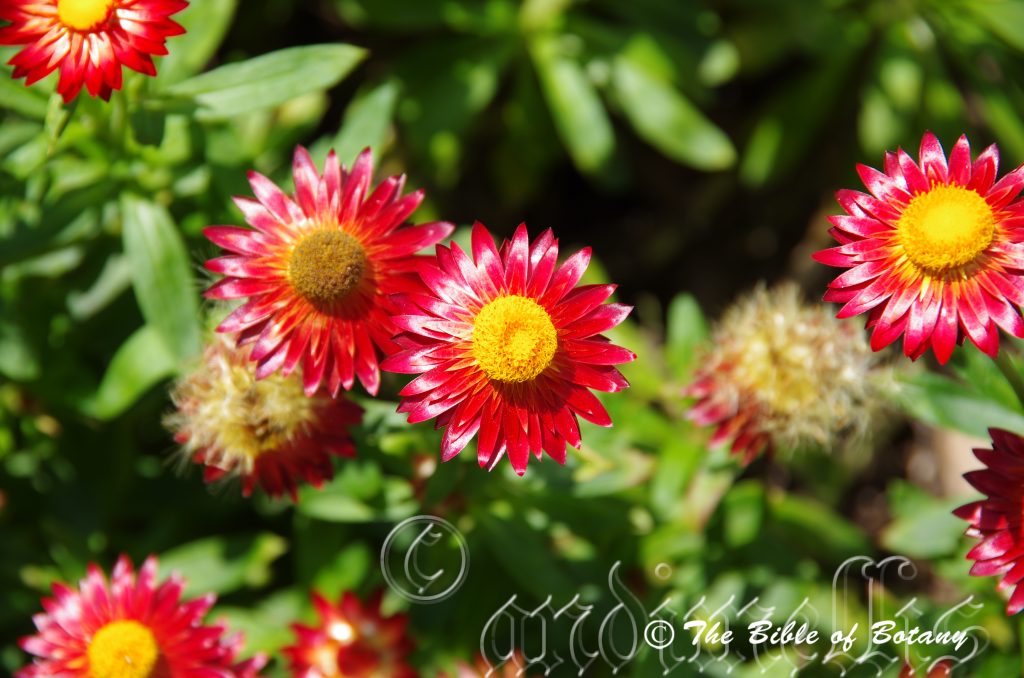
Roma Street Floral Gardens Qld.
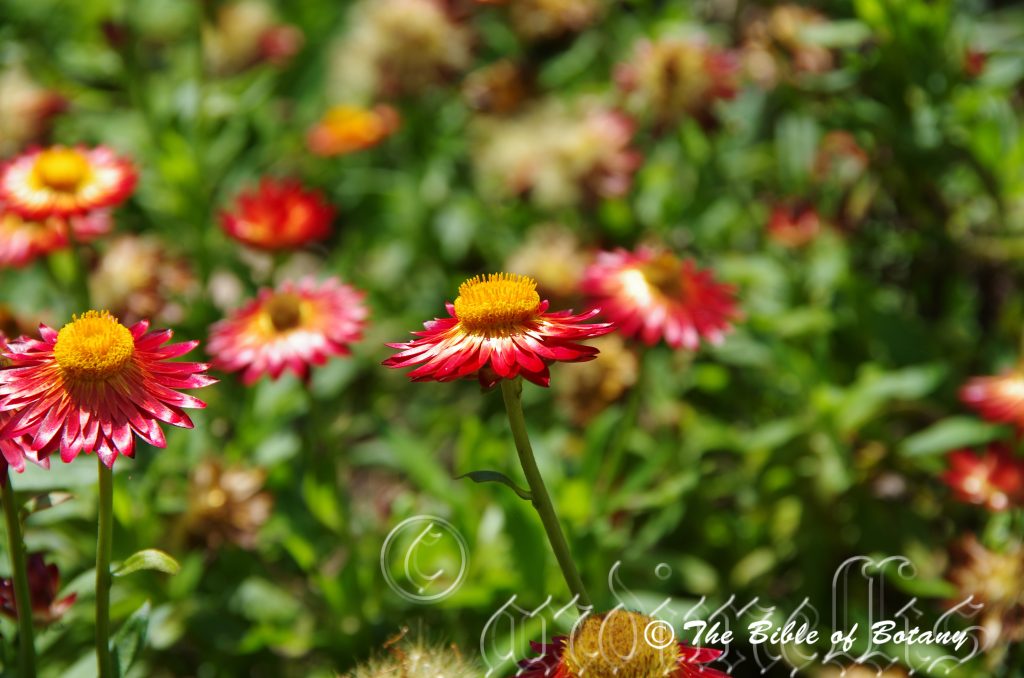
Roma Street Floral Gardens Qld.
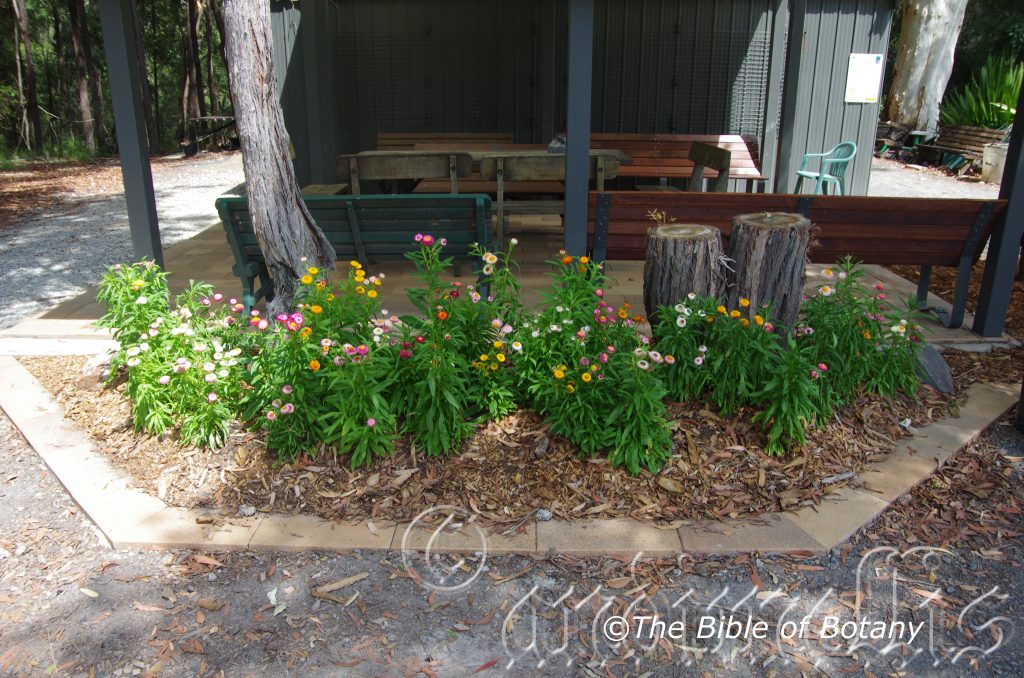
Coffs Harbour Botanic Gardens NSW
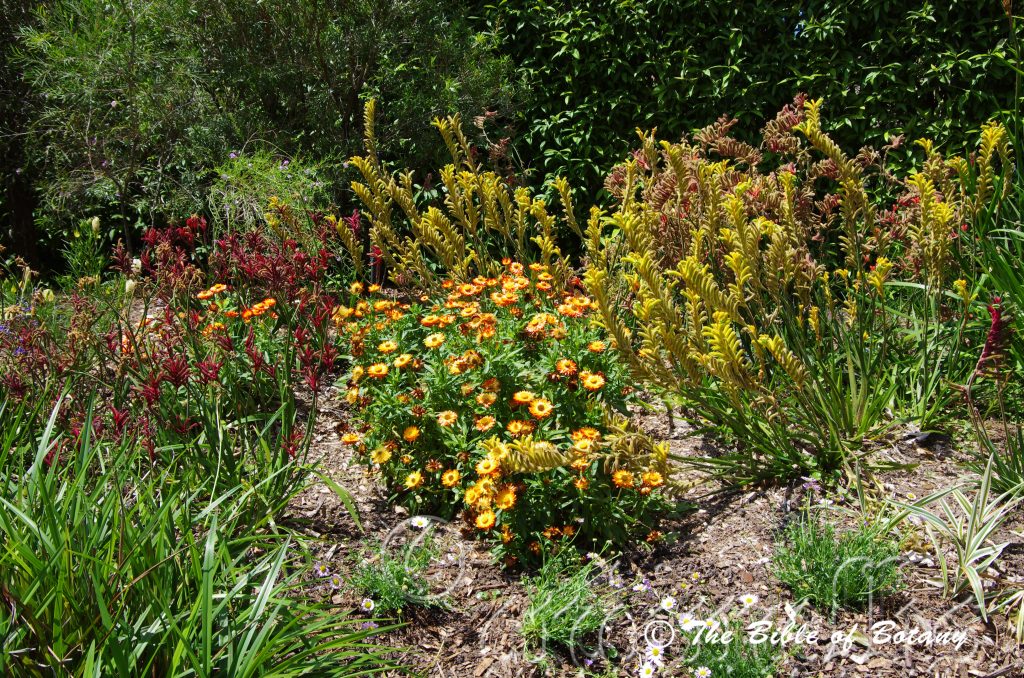
Roma Street Floral Gardens Qld.
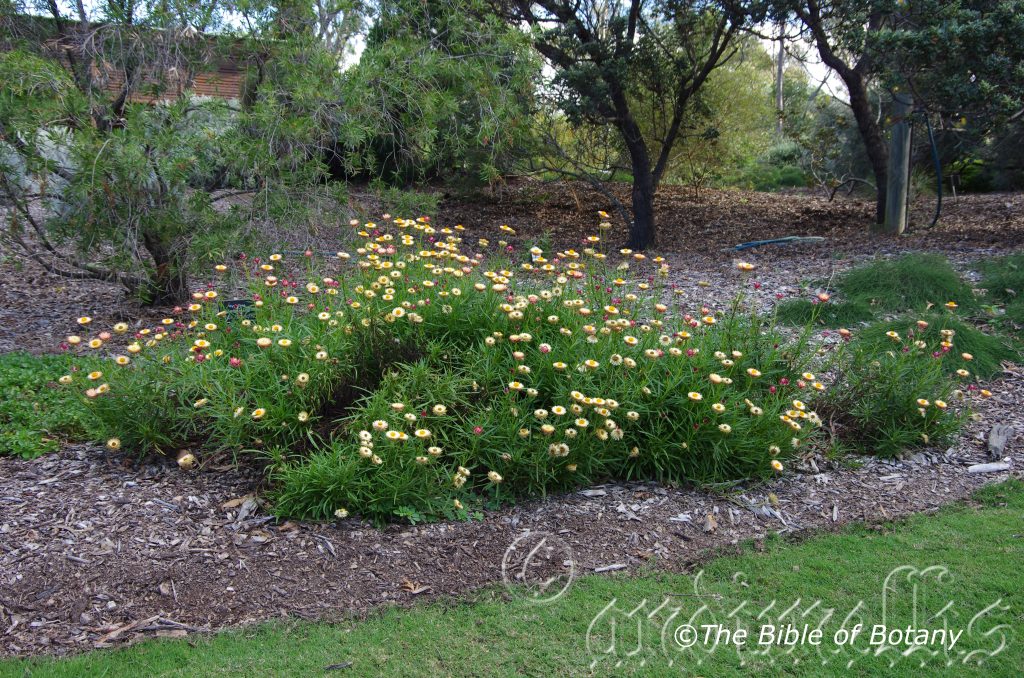
Mount Cootha Botanic Gardens Qld.
Xerochrysum bracteatum
Classification:
Unranked: Eudicots
Unranked: Asterids
Order: Asterales
Family: Asteraceae
Subfamily: Asteroideae
Tribe: Gnaphaliceae
Genus: From Xērós, which is Ancient Greek for dry and Chrysum, which is Ancient Greek for bright, golden-yellow. It refers to flowers, which are bright golden-yellow, have the appearance of chrysanthemums yet have a dry papery texture.
Specie: From Bractea, which is Latin for a thin plate of shiny metal. It refers to special type of leaves which surround the flower or pedicel.
Sub species:
Common Name: Paper Daisy.
Distribution:
Xerochrysum bracteatum is widespread throughout Australia except for the true deserts and very dry arid areas.
https://avh.ala.org.au/occurrences/search?taxa=Xerochrysum+bracteatum#tab_mapView
Habitat Aspect Climate:
Xerochrysum bracteatum prefer light dappled shade to full sun. It can be found growing on headlands, beach fronts, adjacent to littoral rainforests, adjacent to clay pans, sandy river beds, on plains, slopes and drainage channels. These areas are dry ridges and beach fronts in high rainfall areas or tend to be heavier where water congregates for longer periods like along drainage channels, stream and creek riparian zones, shallow depressions or clay pans in lower rainfall areas. The altitude ranges from 10 meters ASL to 1400 meters ASL.
The temperatures range from minus 4 degree in July to 40 degrees in January.
The rainfall ranges from lows of 200mm to an average of 2800mm annually.
Soil Requirements:
Xerochrysum bracteatum prefers growing on a wide variety of soils from skeletal to deep sands over sandstone, calcareous sands on beach fronts to light clays, medium clays, heavy clays or gravelly to stony loams. The soils are usually derived from decomposed brown basalts, black basalts, sandstones, metamorphic rocks, shales, mudstones, laterites, serpentines or granites many of which are over limestone. The soils pH ranges from 4.5pH to 7.5pH. It does not tolerate waterlogged soils however prefers constant moisture throughout their growing season. Non saline soils to very saline soils are tolerated.
Height & Spread:
Wild Plants: 0.3m to 1.2m by 0.3m to 1m.
Characteristics:
Xerochrysum bracteatum’s green or grey green scabrous stems are covered in fawn or white glandular hirsute hairs. Usually simple or branched a few times from the base.
Xerochrysum bracteatum’s adjacent leaves are oblanceolate, narrow elliptical to lanceolate and measure 15mm to 100mm in length by 5mm to 25mm in width. The base is attenuate and clasping while the apex is acute. The concolourous laminas are grass green to deep sea green or olive green and sparsely covered in white, puberulent hairs. The margins are entire and recurve slightly from the mid vein to the margins. The mid veins are prominent on the lower lamina and distinctly visible from above being paler in colour.
The inflorescences of Xerochrysum bracteatum are born on terminal floral branchlets. The peduncles measure 60mm to 150mm. The flower heads measure 10mm to 20mm in length by 25mm to 30mm in diameter. The involucral bracts are scabrous, opaque and oblong with a narrow acuminate apex. The divaricate bracts are slightly reflexed becoming fully reflexed with age after anthesis. The outer bracts are wider than the intermediate bracts. Outer bracts pale yellow and are often streaked with brown or sometimes purple. The bright yellow intermediate bracts are longer, narrower and semi glossy.
The central florets are yellow with deep yellow, orange or kaki anthers. Flowers appear from late September to late December.
Xerochrysum bracteatum’s fruit is a 4 angled, oblong achene. The achenes are 3mm to 4mm in length. The Pappas are golden yellow bristles, more plumose at the base while the apex is covered in golden yellow barbs of different lengths.
Wildlife:
Xerochrysum bracteatum is the host plant for Tebenna micalis moth, the painted lady butterfly (Vanessa kershawi), 5 species of native bees in the Lasioglossum genus and at least 1 specie of Austroplebeia.
Cultivation:
When you find that special flower that holds an enduring spot in your heart it’s hard to put the camera down. Every time I find a head bowered so peacefully, elegantly and beautifully in the field, I must find the best angle to highlight the beauty that has unfolded before me enticing me to come closer. Like a beautiful woman it has exquisite seductiveness that just won’t abate.
Whether it’s a formal setting, informal, a bush garden or a rockery the splendid beauty is enrapturing that you are transfixed in bewilderment or should I say just plain enchantment from the first glance to our last parting ways.
Xerochrysum bracteatum is a beautiful small native annual or perennial herb which is suitable for small gardens to the largest garden. It is an excellent colourful addition for temperate, sub-tropical, semi-arid or arid zones. It can be lightly tip pruned to enhance better flowering. It is fast growing, drought tolerant once established and are cold tolerant to temperatures as low as minus 5 degrees.
As an annual it offers the gardener plenty of quick colour in small areas like around swimming pools, sunny courtyards, rockeries and even bush gardens. New cultivars offer a range of sizes from upright to prostrate plants with a multitude of colours from pale yellow to deep yellows, orange reds, purples and pinks with all the shades in between.
It is particularly striking in desert scenes or mixed up to give formal displays of arranged colours. Xerochrysum bracteatum would make outstanding contribution to a dry heath garden. Here it can be used as the shorter growing planted in small clumps throughout the heath scene. When you design a flat heath garden which Xerochrysum bracteatum is well suited don’t use contours to display the plants as heath lands are almost always flat or have a slight rise. Plants must be planted close together and be short so you can see over the tallest ones with the exception of one or two plants at the most. These will be feature plants. The idea is to achieve a feeling of expansive flatness. This can be achieved with using the Xerochrysum bracteatum’s green or grey linear leaves and having them contrasting with finer pale green or soft grey to glaucous coloured foliages. Use a lot of procumbent plants like Grevillea masonii or Hibbertia specie. Mix them with other smaller shrubs so none of them dominate the scene but blend in to give a mosaic of foliage colours that you oversee. Here I immediately think of Actinotis helianthi or Grevillea thelemanniana for two great contrasting foliages.
Propagation:
Seeds: Xerochrysum bracteatum seeds can be sown directly into a seed raising mix. Cover them with 5mm of fine sand and keep moist not wet. Place the tray in a warm sunny position.
When the seedlings are 20mm to 30mm tall, prick them out and plant them into their permanent position. First prepare the bed a couple of weeks before for best results. Dig in a base using a well-rotted animal manure and cover the ground with a green manure. If done correctly Xerochrysum bracteatum will thrive for many years, self-seeding along the way. After planting give a good watering and keep moist, not wet until the new seedlings have established themselves then let them dry out between watering sessions.
Cuttings: Fortunately Xerochrysum bracteatum cuttings strike rather easy and must be used if a particular colour theme is required. Use 100mm to 200mm long tip cuttings or lateral shoots from the present season’s growth. Take them in warmer months of the year. Remove half the leaves from the bottom section being careful not to tear the bark.
1 Prepare the cutting mix by adding two thirds sharp clean river sand, one third peat or one third perlite. These ingredients must be sterilized,
2 Select good material from non-diseased plants,
3 Select semi green stems for cuttings,
4 Place the cutting on a flat, hard surface, and make a clean cut down one side of the cutting at the base for 10mm with a sharp sterile knife or razor blade. – This scarification of the node will increase the chances of roots emerging from this spot. Now remove all but one or two the leaves, leaving the apex leaves intact. If the leaves are very large in proportion to the stem, cut off the apical halves.
5 Hormones are not required,
6 Use a small dipple stick or old pencil to poke a hole into the soilless potting mix. Ensure the hole is slightly larger than the stem diameter and be careful not to the base when planting,
7 I like to place the tubes in bucket with holes drilled in the bottom to allow excess water to drain out. A plastic bag that fits over the bucket is ideal to help maintain temperature and moisture. Place in a semi shaded, warm position like under 50mm shade cloth.
8 When the cuttings have struck, open the bag to allow air circulation for a few days to a week,
9 Once hardened off remove the cuttings from the bag and allow to further hardening for a few more days to a week,
10 Transplant into a good potting mix to grow on.
Fertilize using seaweed, fish emulsion or organic chicken pellets soaked in water on an alternate basis. Fertilize every two months until the plants are established then twice annually in early September or March to maintain health, vitality and better flowering.
Further Comments from Readers:
“Hi reader, it seems you use The Bible of Botany a lot. That’s great as we have great pleasure in bringing it to you! It’s a little awkward for us to ask, but our first aim is to purchase land approximately 1,600 hectares to link several parcels of N.P. into one at The Pinnacles NSW Australia, but we need your help. We’re not salespeople. We’re amateur botanists who have dedicated over 30 years to saving the environment in a practical way. We depend on donations to reach our goal. If you donate just $5, the price of your coffee this Sunday, We can help to keep the planet alive in a real way and continue to bring you regular updates and features on Australian plants all in one Botanical Bible. Any support is greatly appreciated. Thank you.”
In the spirit of reconciliation we acknowledge the Bundjalung, Gumbaynggirr and Yaegl and all aboriginal nations throughout Australia and their connections to land, sea and community. We pay our respect to their Elders past, present and future for the pleasures we have gained.
Xerochrysum viscosum
Classification:
Unranked: Eudicots
Unranked: Asterids
Order: Asterales
Family: Asteraceae
Subfamily: Asteroideae
Tribe: Gnaphaliceae
Genus: From Xērós, which is Ancient Greek for dry and Chrysum, which is Ancient Greek for bright, golden-yellow. It refers to flowers, which are bright golden-yellow, have the appearance of chrysanthemums yet have a dry papery texture.
Specie: From Visc/Viskus, which is Latin for birdlime made from viscin, which is from the fruits of the Mistletoe. It refers to structures or organs, which are very sticky, glutinous consistency similar to adhesive glues.
Sub species:
Common Name: Sticky Paper Daisy.
Distribution:
Xerochrysum viscosum is widespread throughout the south eastern third of mainland Australia. It is found east from Coomba falls near Nanango in south east Queensland to the Grampians in western Victoria. It is mainly found on the Western Plains, Western Slopes on and east of the Great Dividing Range except for the very.
https://avh.ala.org.au/occurrences/search?taxa=Xerochrysum+viscosum#tab_mapView
Habitat Aspect Climate:
Xerochrysum viscosum prefer light dappled shade to full sun. It can be found growing on undulating plains and flats in open woodlands and dry schlerophyll forests. The altitude ranges from 10 meters ASL to 600 meters ASL.
The temperatures range from minus 4 degree in July to 40 degrees in January.
The rainfall ranges from lows of 300mm to an average of 1000mm annually.
Soil Requirements:
Xerochrysum viscosum prefer coarse sands, fine sands, or light fatty sandy loams. The soils are derived from decomposed sandstones or granites. The soils can be deep or skeletal over the parent rocks. The plants favour soils where water congregates for longer periods like drainage channels, shallow depressions and clay pans in areas which experience lower rainfall. The soils pH ranges from 4.5pH to 7.5pH. It does not tolerate waterlogged soils. Non saline soils to moderately saline soils are tolerated.
Height & Spread:
Wild Plants: 0.3m to 0.8m by 0.3m to 0.6m.
Characteristics:
Xerochrysum viscosum’s mid green to olive green, scabrous stems are covered in fawn or white, stiff, hirsute hairs and minute prickles. It is usually simple or branched many times from the base.
Xerochrysum viscosum’s adjacent leaves are narrow oblanceolate, narrow lanceolate to linear and measure 10mm to 80mm in length by 1mm to 6mm in width. The base is attenuate and clasping while the apex is narrowly acute. The concolourous laminas are grass green to olive green and covered in white, pulverulent hairs. The margins are entire. The mid vein veins are prominent on the lower lamina and distinctly visible from above being shallowly to deeply furrow.
The inflorescences of Xerochrysum viscosum are born on single to 3 terminal floral branchlets. The floral branchlets are scabrous and covered in white viscous pulverulent hairs. The peduncles measure 50mm to 150mm in length. The flower heads measure 10mm to 20mm in length by 25 to 30mm in diameter. The involucral bracts are scarious, opaque and oblong with a mucronate apex or at times they may have a lacerate apex. The divaricate bracts are slightly reflexed becoming fully reflexed with age after anthesis. The outer bracts are wider than the intermediate bracts. Outer bracts pale yellow and are often streaked with brown or sometimes purple. The bright yellow intermediate bracts are longer, narrower and semi glossy.
The central florets are yellow with deep yellow, orange or kaki anthers and pollen. Xerochrysum viscosum flowers appear from late September to early February in favourable seasons.
Xerochrysum viscosum’s fruit is a 4 angled, oblong achene. The achenes are 1.8mm to 2.2mm in length. The pappus is golden yellow barbellate bristles.
Wildlife:
Xerochrysum viscosum is the host plant for many different butterflies and day moths such as Tebenna micalis moth, the painted lady butterfly (Vanessa kershawi). Many species of native bees and sting-less wasps forage the plants while young plants are often attacked by herbaceous slugs and snails particularly in warm moist seasons which in turn attract carnivorous slugs.
Cultivation:
Xerochrysum viscosum is a beautiful small native annual or perennial herb which is suitable for small gardens to the largest garden. Unfortunately Xerochrysum viscosum has not gained the popularity it deserves with gardeners. As an annual it offers the gardener plenty of quick colour in small areas around swimming pools, sunny courtyards and rockeries. In native shrubberies as an understory perennial it is best mass planted in patches with other species of Xerochrysum or Helipterum for brilliant colour.
It is an excellent colourful addition for temperate, sub-tropical, semi-arid or arid zones. It should be pruned immediately after flowering and have spent flowers removed to enhance flowering in the following season. It is fast growing, drought tolerant once established and is cold tolerant to temperatures as low as minus 5 degrees.
It is particularly striking in desert scenes or mixed up to give formal displays of arranged with the various pinks and reds of different Helipterum specie. Xerochrysum viscosum would make outstanding contribution to a dry heath garden. Here they can be used as the shorter growing planted in small clumps throughout the heath scene. When you design a flat heath garden which Xerochrysum viscosum is well suited don’t use contours to display the plants as heath lands are almost always flat or have a slight rise. Plants must be planted close together and be short so you can see over the tallest ones with the exception of one or two plants at the most. These will be feature plants. The idea is to achieve a feeling of expansive flatness. This can be achieved with using the Xerochrysum viscosum’s green or grey linear leaves and having them contrasting with finer pale green or soft grey to glaucous coloured foliages. Use a lot of procumbent plants like Grevillea masonii or Hibbertia species except Hibbertia scandens which would be too aggressive. Helipterum roseum would be particularly well suited to a mixed annual bed. Mix them with other smaller shrubs so none of them dominate the scene but blend in to give a mosaic of foliage colours that you oversee. Here I immediately think of Actinotis helianthi or Grevillea thelemanniana for two great contrasting foliages.
Propagation:
Seeds: Xerochrysum viscosum seeds can be sown directly into a seed raising mix. Cover them with 5mm of fine sand and keep moist not wet. Place the tray in a warm sunny position.
When the seedlings are 20mm to 30mm tall, prick them out and plant them into their permanent position. First prepare the bed a couple of weeks before for best results. Dig in a base using a well-rotted animal manure and cover the ground with a green manure. If done correctly Xerochrysum bracteatum will thrive for many years, self-seeding along the way. After planting give a good watering and keep moist, not wet until the new seedlings have established themselves then let them dry out between watering sessions.
Cuttings: Fortunately Xerochrysum viscosum cuttings strike rather easy and must be used if a particular colour theme is required. Use 100mm to 200mm long tip cuttings or lateral shoots from the present season’s growth. Take them in warmer months of the year. Remove half the leaves from the bottom section being careful not to tear the bark.
1 Prepare the cutting mix by adding two thirds sharp clean river sand, one third peat or one third perlite. These ingredients must be sterilized,
2 Select good material from non-diseased plants,
3 Select semi green stems for cuttings,
4 Place the cutting on a flat, hard surface, and make a clean cut down one side of the cutting at the base for 10mm with a sharp sterile knife or razor blade. – This scarification of the node will increase the chances of roots emerging from this spot. Now remove all but one or two the leaves, leaving the apex leaves intact. If the leaves are very large in proportion to the stem, cut off the apical halves.
5 Hormones are not required,
6 Use a small dipple stick or old pencil to poke a hole into the soilless potting mix. Ensure the hole is slightly larger than the stem diameter and be careful not to the base when planting,
7 I like to place the tubes in bucket with holes drilled in the bottom to allow excess water to drain out. A plastic bag that fits over the bucket is ideal to help maintain temperature and moisture. Place in a semi shaded, warm position like under 50mm shade cloth.
8 When the cuttings have struck, open the bag to allow air circulation for a few days to a week,
9 Once hardened off remove the cuttings from the bag and allow to further hardening for a few more days to a week,
10 Transplant into a good potting mix to grow on.
Fertilize using seaweed, fish emulsion or organic chicken pellets soaked in water on an alternate basis. Fertilize every two months until the plants are established then twice annually in early September or March to maintain health, vitality and better flowering.
Further Comments from Readers:
“Hi reader, it seems you use The Bible of Botany a lot. That’s great as we have great pleasure in bringing it to you! It’s a little awkward for us to ask, but our first aim is to purchase land approximately 1,600 hectares to link several parcels of N.P. into one at The Pinnacles NSW Australia, but we need your help. We’re not salespeople. We’re amateur botanists who have dedicated over 30 years to saving the environment in a practical way. We depend on donations to reach our goal. If you donate just $5, the price of your coffee this Sunday, We can help to keep the planet alive in a real way and continue to bring you regular updates and features on Australian plants all in one Botanical Bible. Any support is greatly appreciated. Thank you.”
In the spirit of reconciliation we acknowledge the Bundjalung, Gumbaynggirr and Yaegl and all aboriginal nations throughout Australia and their connections to land, sea and community. We pay our respect to their Elders past, present and future for the pleasures we have gained.
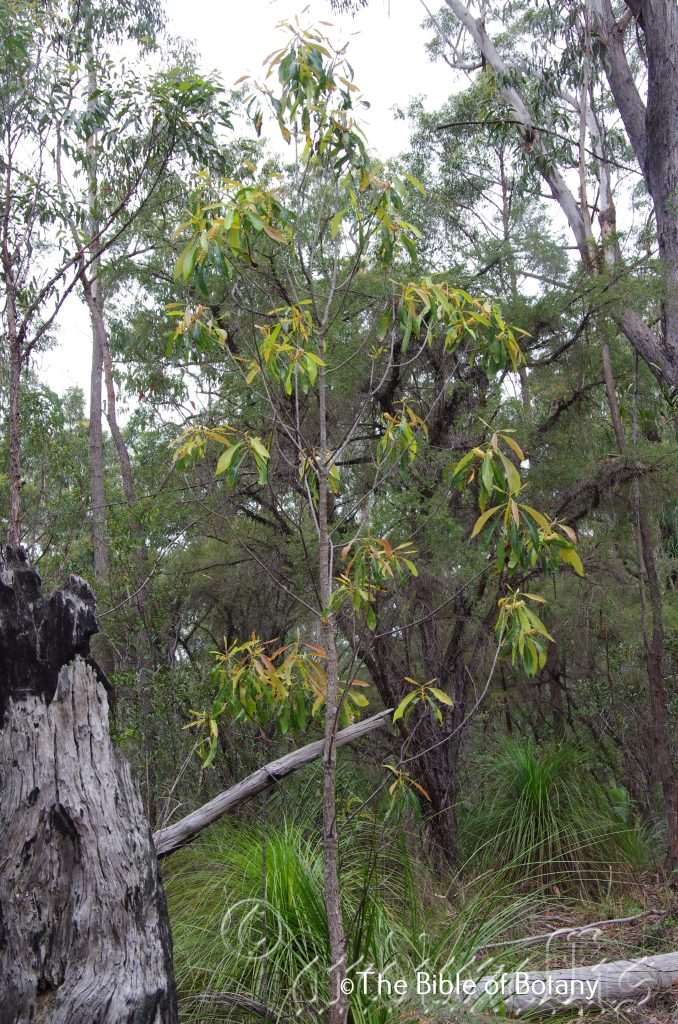
Author’s Garden The Pinnacles NSW
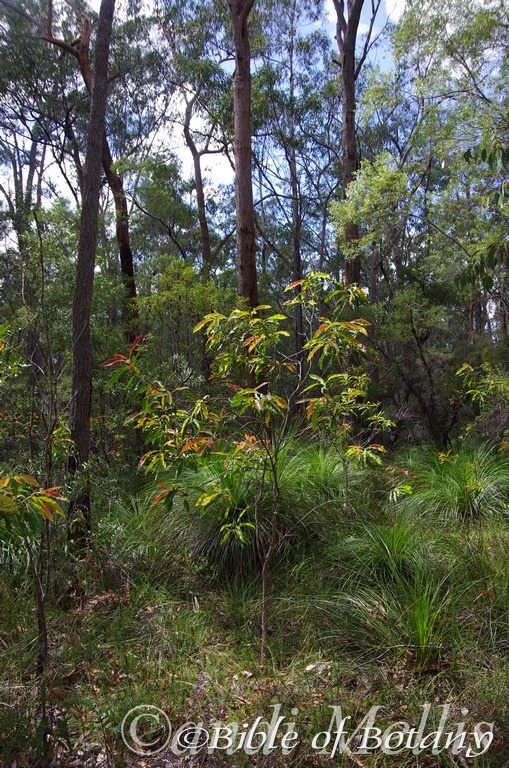
Author’s Garden The Pinnacles NSW
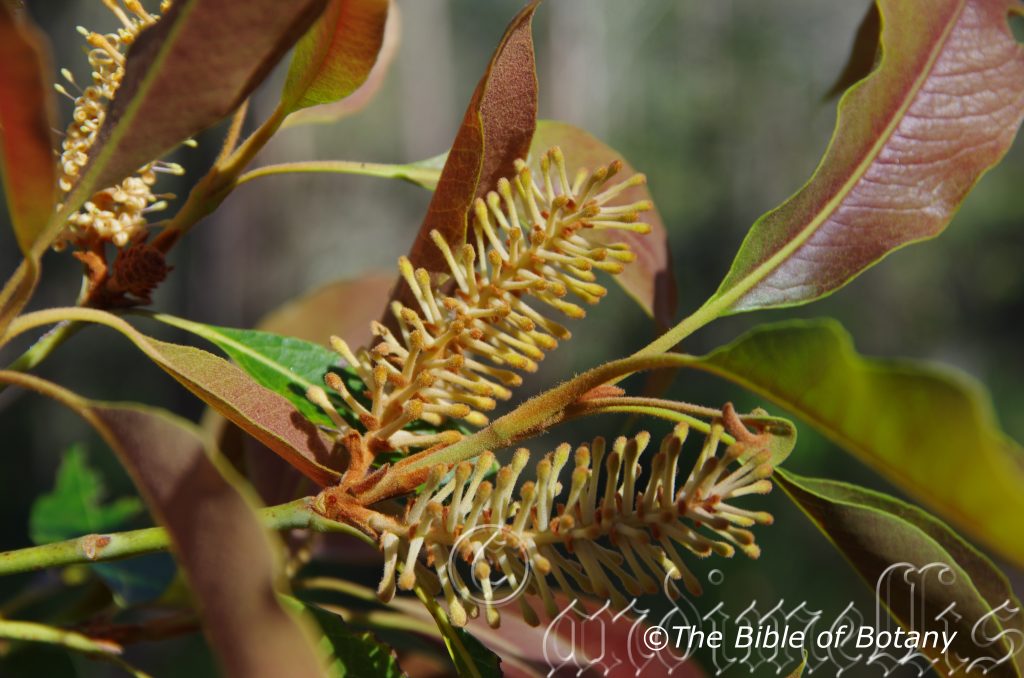
The Pinnacles NSW
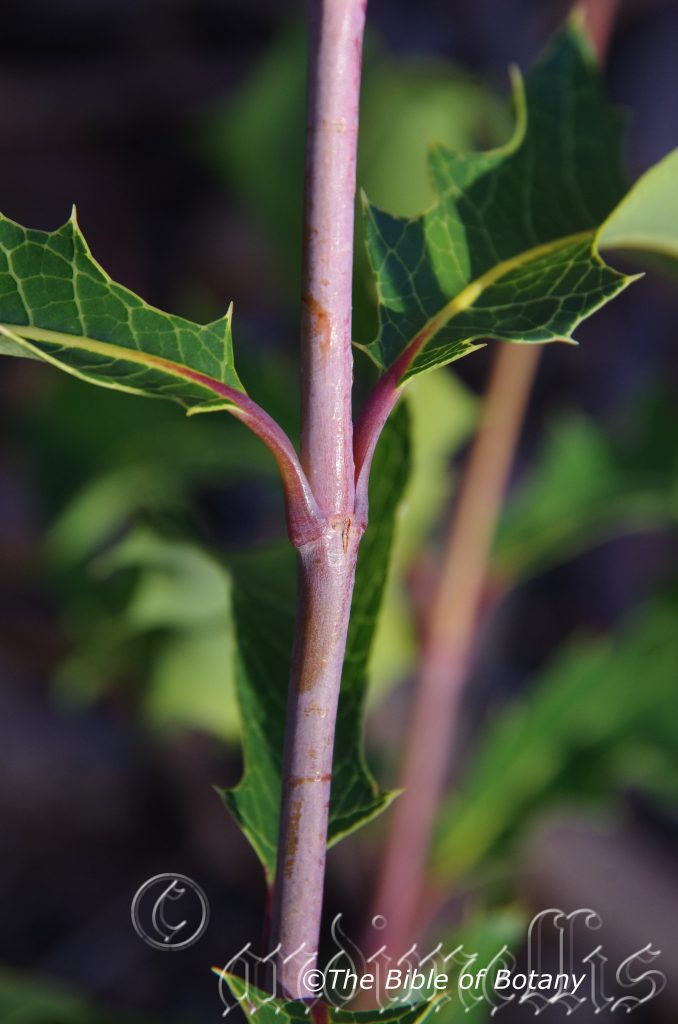
Author’s Garden The Pinnacles NSW
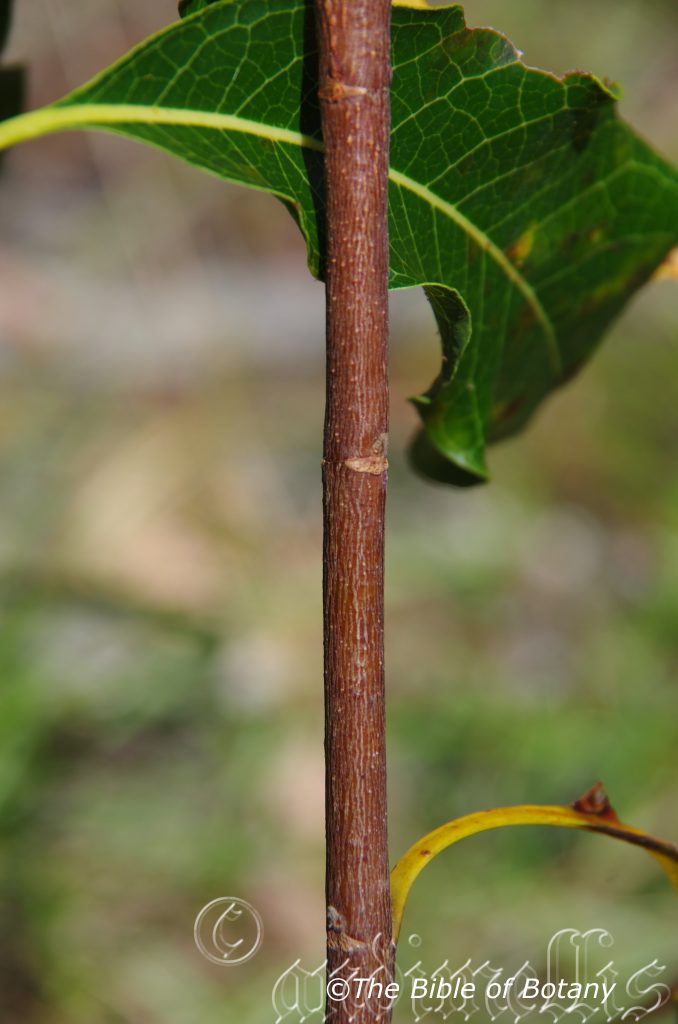
Author’s Garden The Pinnacles NSW
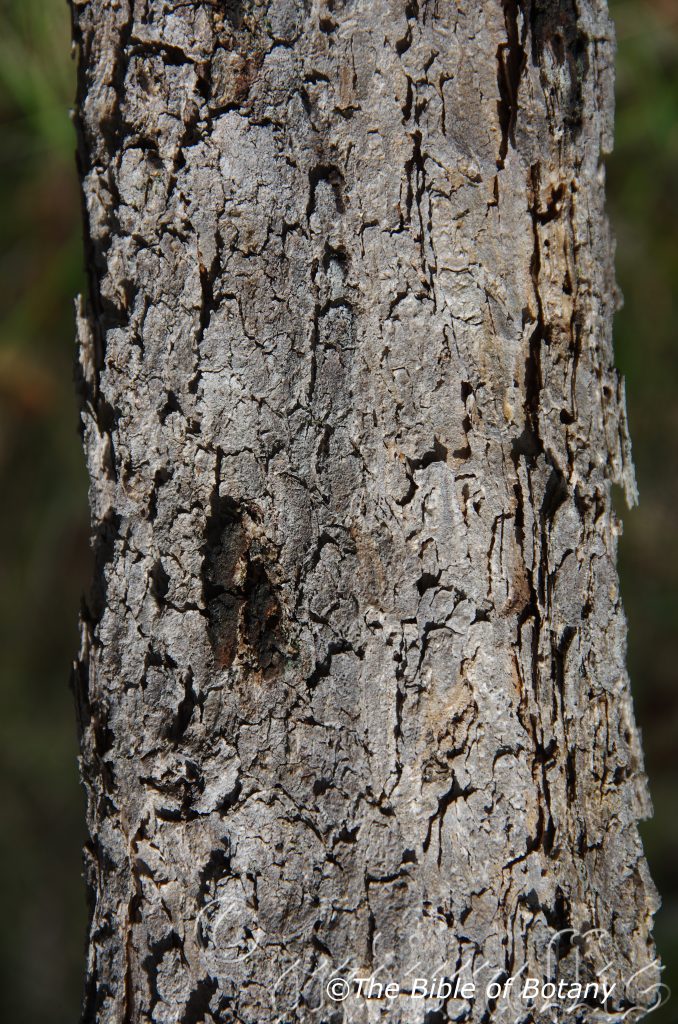
Author’s Garden The Pinnacles NSW
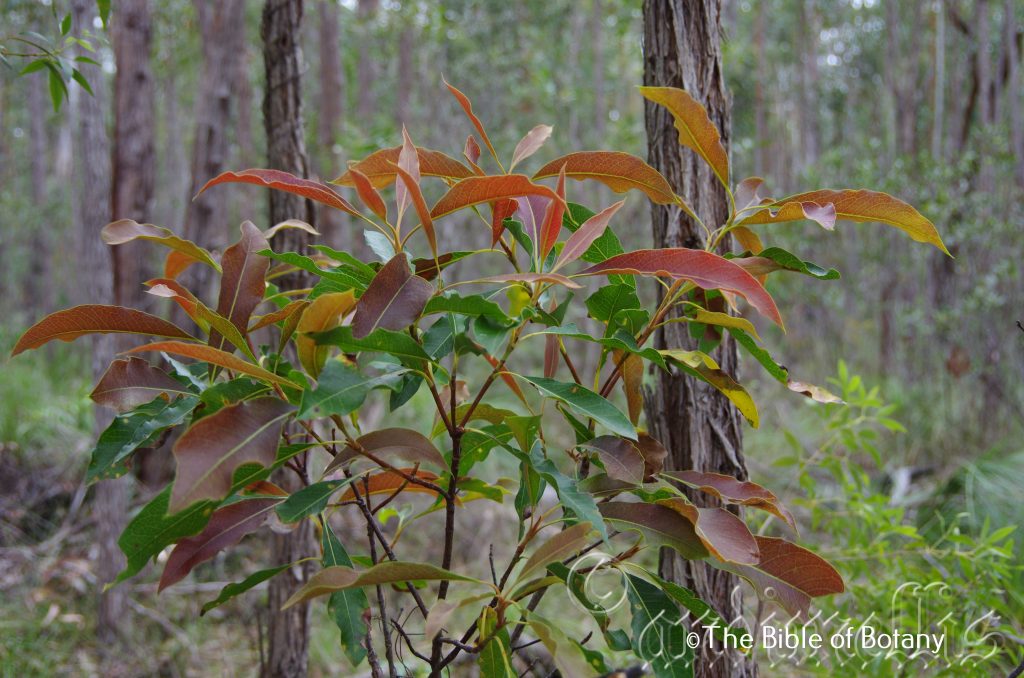
Author’s Garden The Pinnacles NSW
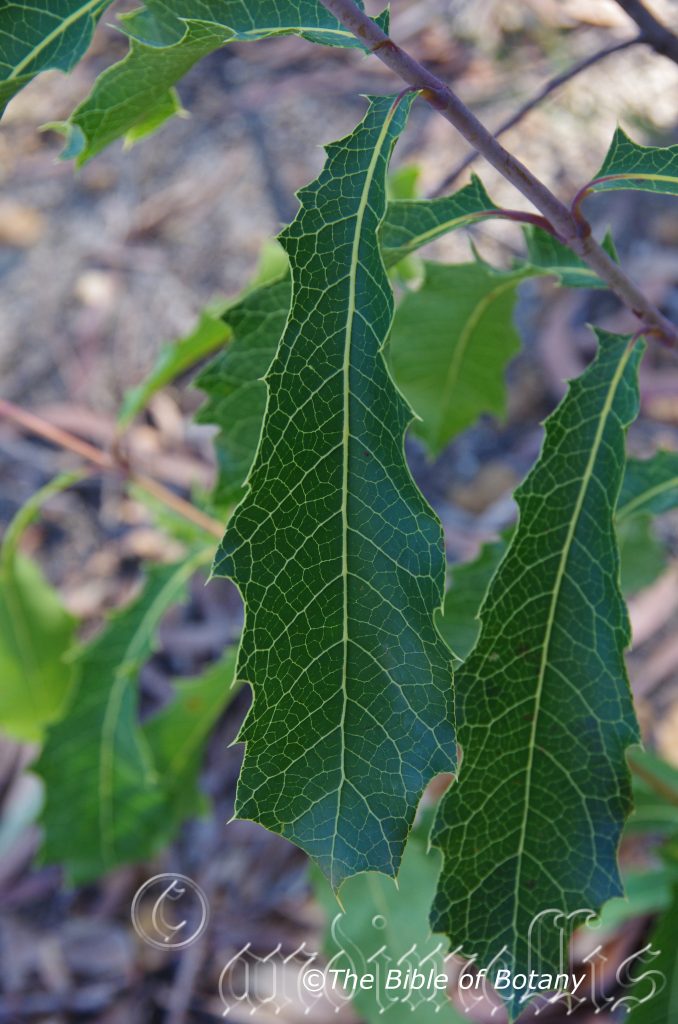
Author’s Garden The Pinnacles NSW
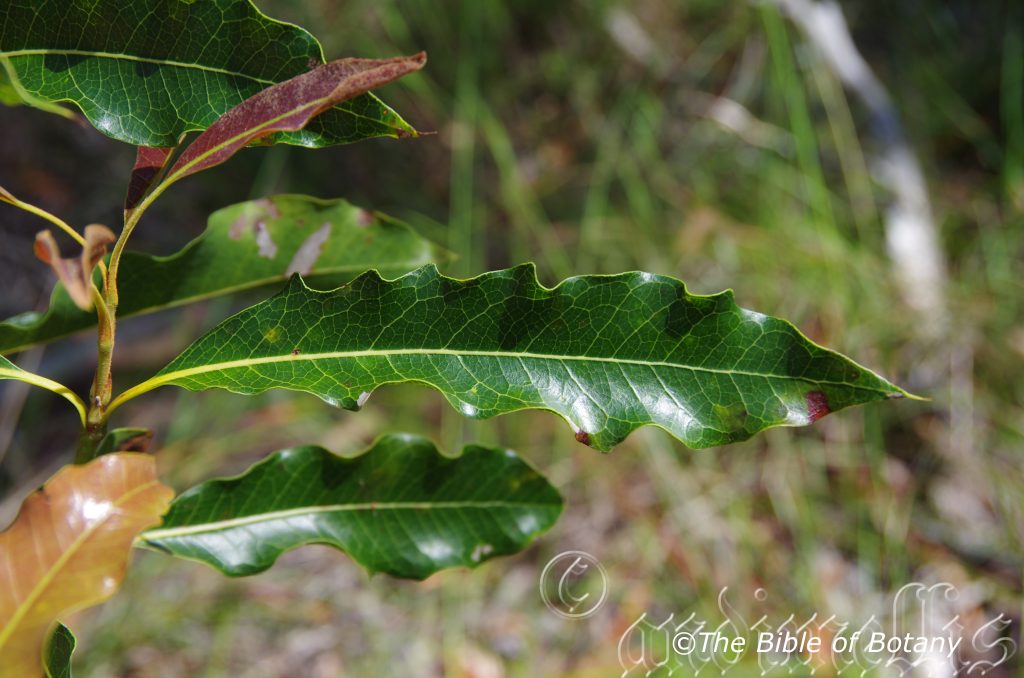
Author’s Garden The Pinnacles NSW
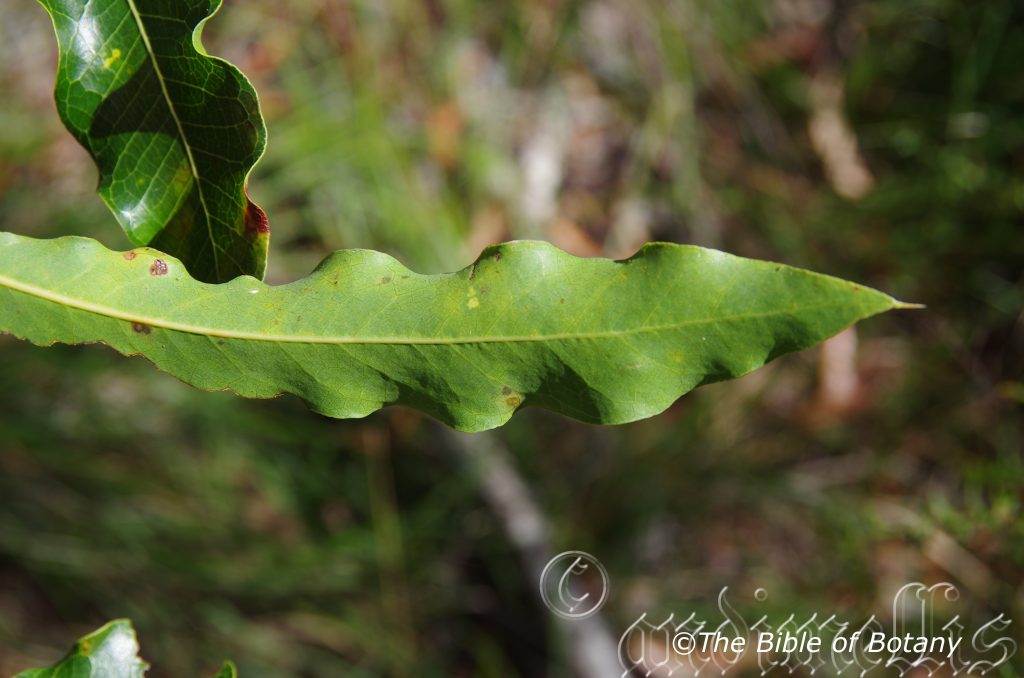
Author’s Garden The Pinnacles NSW
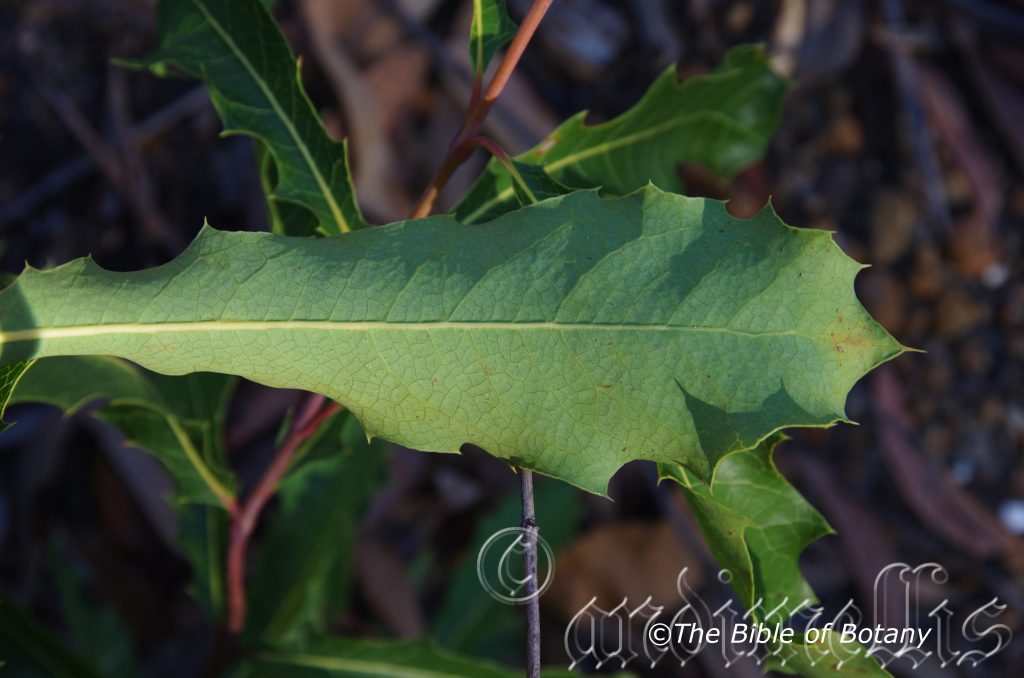
Author’s Garden The Pinnacles NSW
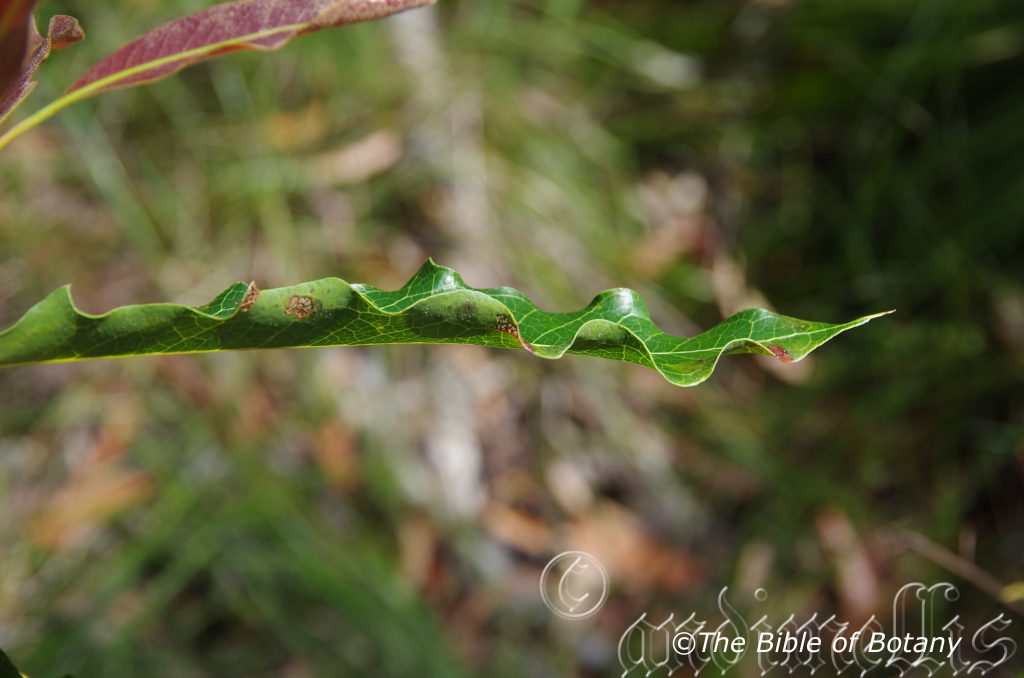
Author’s Garden The Pinnacles NSW
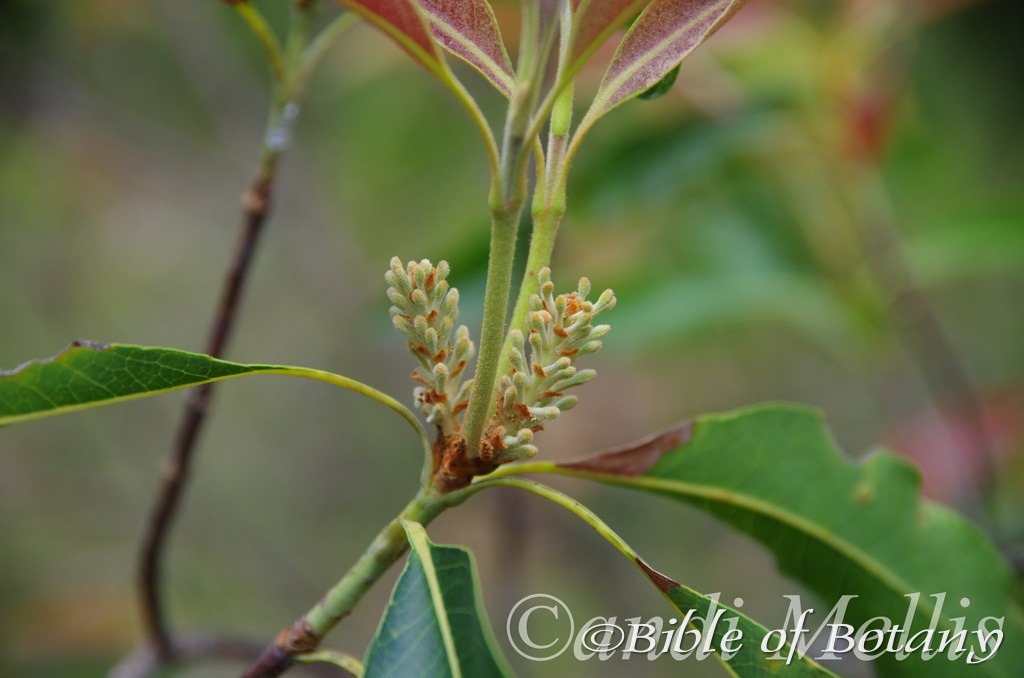
Author’s Garden The Pinnacles NSW
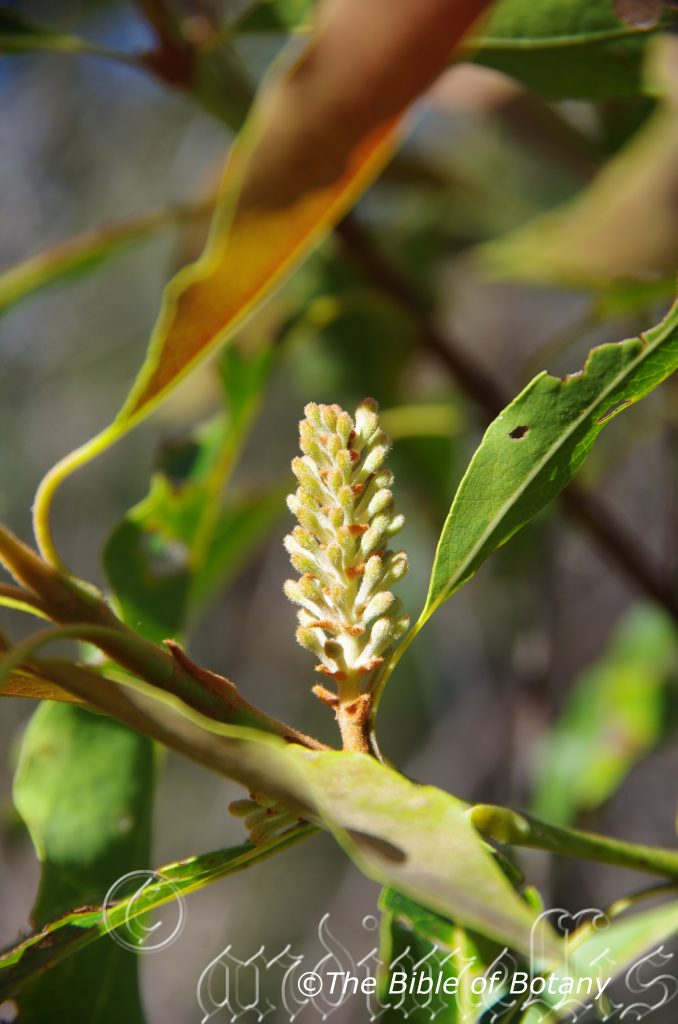
The Pinnacles NSW

Author’s Garden The Pinnacles NSW
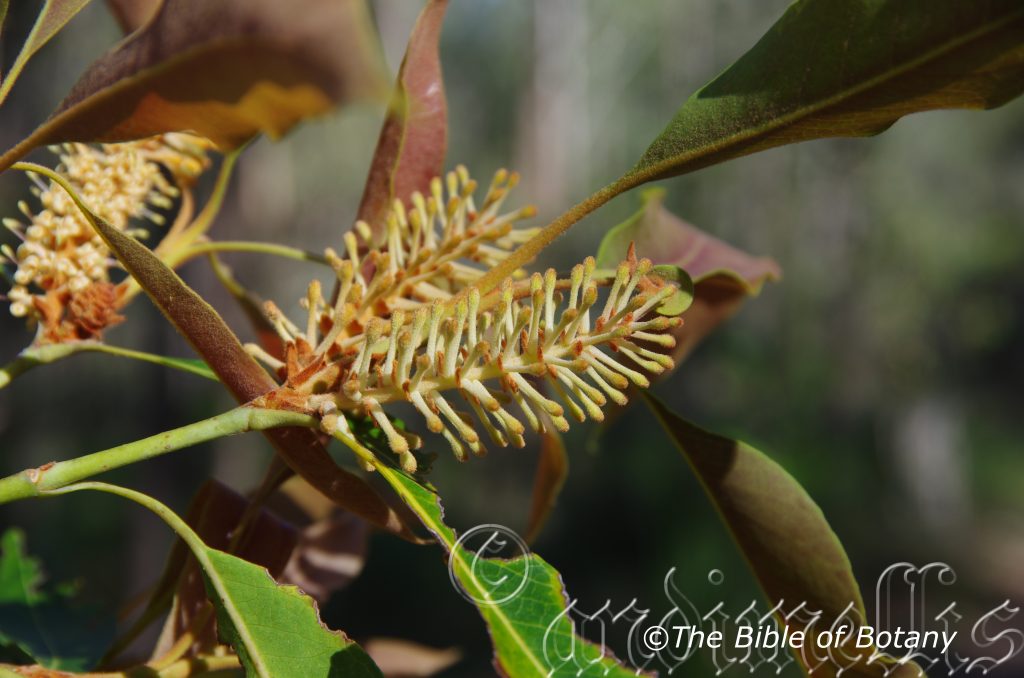
The Pinnacles NSW
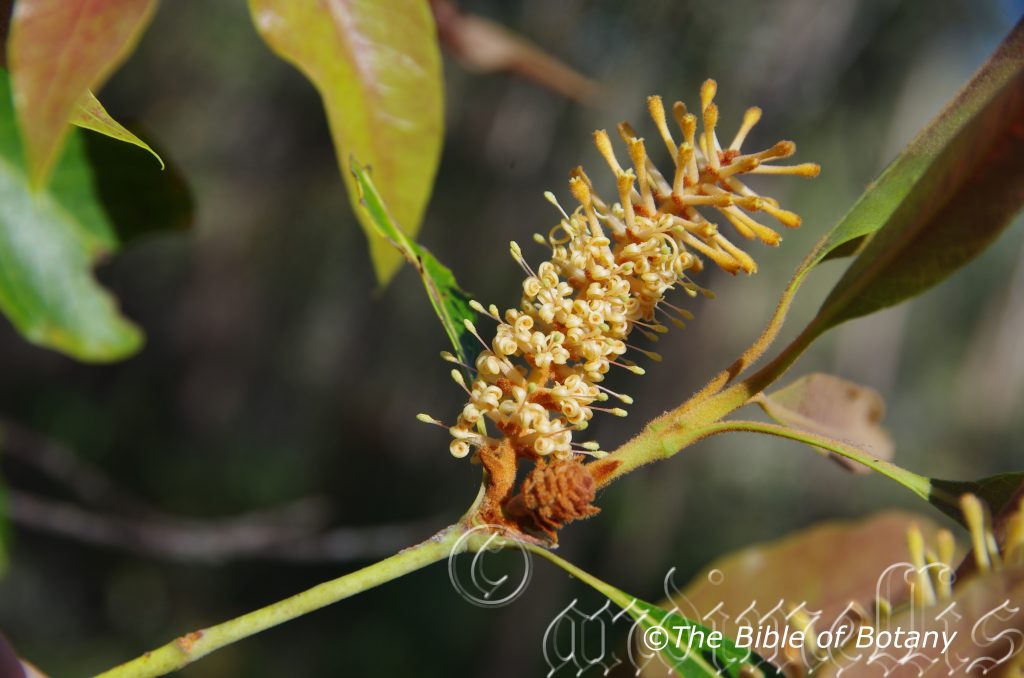
The Pinnacles NSW
Xylomelum pyriforme
Classification:
Unranked: Eudicots
Order: Proteales
Family: Proteaceae
Subfamily: Grevilleoideae
Tribe: Roupaleae
Subtribe: Lambertinnae
Genus: From Xúlon, which is Ancient Greek for wood and Melum, which is Ancient Greek for a tree fruit. It refers to trees, which bear woody fruits.
Specie: From Pyrum, which is Latin for a pear and Morphḗ, which is Ancient Greek or later fōrma, which is Latin for a shape or to take the form of. It refers to woody fruits, which have taken the shape of a pear.
Sub specie:
Common Name: Woody Pear.
Distribution:
Xylomelum pyriforme is found in several disjunct populations south from Mount Playfair Station in south eastern Queensland to The Pinnacles in far north eastern New South Wales then continuously from north brother near Laurieton to big badger near Cooma in south eastern New South Wales.
south from Mount Etna Caves in central coastal Queensland to the Broken Head Nature Reserve in far north eastern coastal New South Wales. It is mainly found on the eastern slopes of the Great Dividing Range to the coast.
https://avh.ala.org.au/occurrences/search?taxa=Xylomelum+pyriforme#tab_mapView
Habitat Aspect Climate:
Xylomelum pyriforme prefers light dappled shade to full sun. It grows in open woodlands and dry schlerophyll forests. The altitude ranges from 20 meters ASL to 800 meters ASL.
The temperatures range from minus 3 degrees in August to 44 degrees in January.
The rainfall ranges from lows of 600mm to 1600mm average per annum.
Soil Requirements:
Xylomelum pyriforme prefers gravelly fatty loams, stony medium clays often among rocks or boulders. The soils are usually derived from partially decomposed to decomposed red sandstones or at times accumulated beach sands. The soils pH ranges from 5pH to 6.5pH. It does not tolerate waterlogged soils. Non saline soils to moderately saline soils are tolerated.
Height & Spread:
Wild Plants: 4m to 6m by 2m to 3.5m.
Characteristics:
Xylomelum pyriforme grows as a single or multi trunk small tree with mid to deep grey bark. The somewhat tessellated bark is flaky. The small branches are rusty brown turning purple before lime-green or lemon-green on the new stems. The stems sparsely covered in rusty-villous hirsute hairs.
The opposite juvenile leaves are bright glossy reddish-brown with a brownish tinge and measure 129mm to 150mm in length by 35mm to 70mm in width. The juvenile leaves are moderately to densely covered in soft, white, cream or rusty coloured hirsute hairs. There are 6 to 11 teeth along each margin of the undulating leaves.
The opposite, oblanceolate to elliptic leaves of Xylomelum pyriforme measure 100mm to 200mm in length by 30mm to 45mm in width. The petioles measure 15mm to 30mm in length. The bases are cuneate, while the apexes are acute with a pungent tip. The coriaceous, discolourous laminas are deep green to sea-green, dull to semi glossy and glabrous on the upper lamina while the lower lamina is paler and dull. The undulating laminas recurve upwards from the midvein to the margins. The yellow-green mid vein is strongly prominent on both laminas, while there are 10 to 15 alternate, prominent lateral veins on the lower lamina and are distinctly visible from the upper lamina, with an equal number of finer lateral veins between the main lateral veins.
The conflorescences of Xylomelum pyriforme are born in short racemes adjacent to the upper leaf axils and measure 40mm to 50mm in length. The is an ovate stipule at the base of each individual flower that are densely covered in rusty brown villous hairs and measure 1.2mm to 1.6mm in length by 3mm to 3.6mm in width. The perianth tube is moderately to densely covered in soft white, cream or pale rusty brown villous hairs and measure 9mm to 12mm in length.
The perianth splits into 3 lobes, which strongly recurve and measure 5mm to 6mm in length. The basifixed, oblong anthers are attached to the inside of the lobes and measure 2mm in length by 1mm in width.
The erect, pale cream style and clavate stigma measure 9mm to 12mm in length and are sparsely covered in soft white or cream villous hairs. The flowers appear from September to early November.
The fruits of Xylomelum pyriforme are woody pear shaped capsules and measure 60mm to 90mm in length by 30mm to 50mm in width. The green capsules turn grey-brown when ripe. The capsules have an acuminate apex. The seeds have a wing and measure 50mm to 70mm in length by 10mm to 18mm in width. There is a prominent vein located 2mm to 3mm in from margin of the wing.
Wildlife:
Xylomelum pyriforme’s wildlife is unknown to the author.
Cultivation:
Xylomelum pyriforme is a small narrow tree with an interesting bark that should be grown more often than it is in small gardens. It is relatively slow growing. In cultivation it grows from 4 meters to 5 meters in height by 2 meters to 3 meters in diameter when grown in the open as a single trunk tree. Because of its natural habit of branching on the basal half of the trunk if mass planted it could make a reasonably good hedge row despite being slow growing.
It grows better on most better quality neutral sandy type soils where deep leaf litter keeps the soil cool and moisture at a more even level. Add to the above, if it is given an adequate supply of water and a little organic native fertilizer on a regular basis the plants will cope with temperatures as low as minus 2 degrees and up to 44 degrees. It is moderately drought resistant once established but performs better where the soils retain some moisture.
Three or more planted back from a bend will become a very strong focal point when in a flush of growth or in flower and will gain a lot of attention. It can be pruned if a large shrub is required beneath or adjacent to smaller Eucalyptus trees. It responds well to pruning recovering quickly and often increasing the number of flowers in the following season but this should be started from an early age. Place it in the midground with large leaf, or fine leaf ground covers and very small shrubs or annuals in front. To the rear, use large leaf taller trees like Eucalyptus miniata, Eucalyptus houseana, Eucalyptus pellita or Corymbia ptycocarpa.
To create a dwarf forest with light shade use it as the main feature tree and use small plants with white, pink, orange, red or purple flowers both in the foreground to give depth and beneath. Smaller plants with bright green foliages mixed with blue grey foliages will compliment the scene. Try using annuals and perennials like the various specoes of native Coleus and Xerochrysum. Here a mixture of Coleus graveolens, Coleus habrophyllum, Coleus torrenticola, Coleus apreptus or Coleus suaveolens with Xerochrysum bracteatum or Xerochrysum viscosum will all add texture with various colours.
Xylomelum pyriforme’s bark contrasts beautifully with Eucalyptus miniata, Corymbia ptycocarpa or the other small trees like Tristaniopsis laurina. Use them below, where there may be septic trenches or drainage channels so that it can gain access to a consistent supply of water.
In drier locations near the coast the trunk would contrast nicely with the versatile Acmena smithii a small leaf Lilly Pilly, Elaeocarpus reticulatus, Myrsine howittiana or Scolopia braunii.
It often reaches its full potential in just 6 to 12 years and flowers from the third or fourth year from seed.
This tree could be used as a bonsai plant as the trees grow with a naturally gnarled trunk along creek beds and should be easy to work.
Propagation:
Seeds: Seeds of Xylomelum pyriforme can be removed easily from the fruits by placing the ripe gum nuts into paper bags for a week.
Sow freshly treated seeds directly into a seed raising mix, keeping them moist not wet. Do not over water as the seeds will rot off before germination takes place. Place the trays in a cool shaded area with 50mm shade cloth in the bush house. When the seedlings are 20mm to 25mm tall, prick them out and plant them into 50mm native tubes using a good organic mix.
As the seedlings roots reach the bottom of the tubes plant them out into their permanent position. Do not delay.
Fertilize using Seaweed, fish emulsion or organic chicken pellets soaked in water and apply the liquid on an alternate basis. Fertilize every 2 months until the plants are well established then on an annual basis in September or March to maintain good health, vigour and better flowering.
Further Comments from Readers:
“Hi reader, it seems you use The Bible of Botany a lot. That’s great as we have great pleasure in bringing it to you! It’s a little awkward for us to ask, but our first aim is to purchase land approximately 1,600 hectares to link several parcels of N.P. into one at The Pinnacles NSW Australia, but we need your help. We’re not salespeople. We’re amateur botanists who have dedicated over 30 years to saving the environment in a practical way. We depend on donations to reach our goal. If you donate just $5, the price of your coffee this Sunday, We can help to keep the planet alive in a real way and continue to bring you regular updates and features on Australian plants all in one Botanical Bible. Any support is greatly appreciated. Thank you.”
In the spirit of reconciliation we acknowledge the Bundjalung, Gumbaynggirr and Yaegl and all aboriginal nations throughout Australia and their connections to land, sea and community. We pay our respect to their Elders past, present and future for the pleasures we have gained.
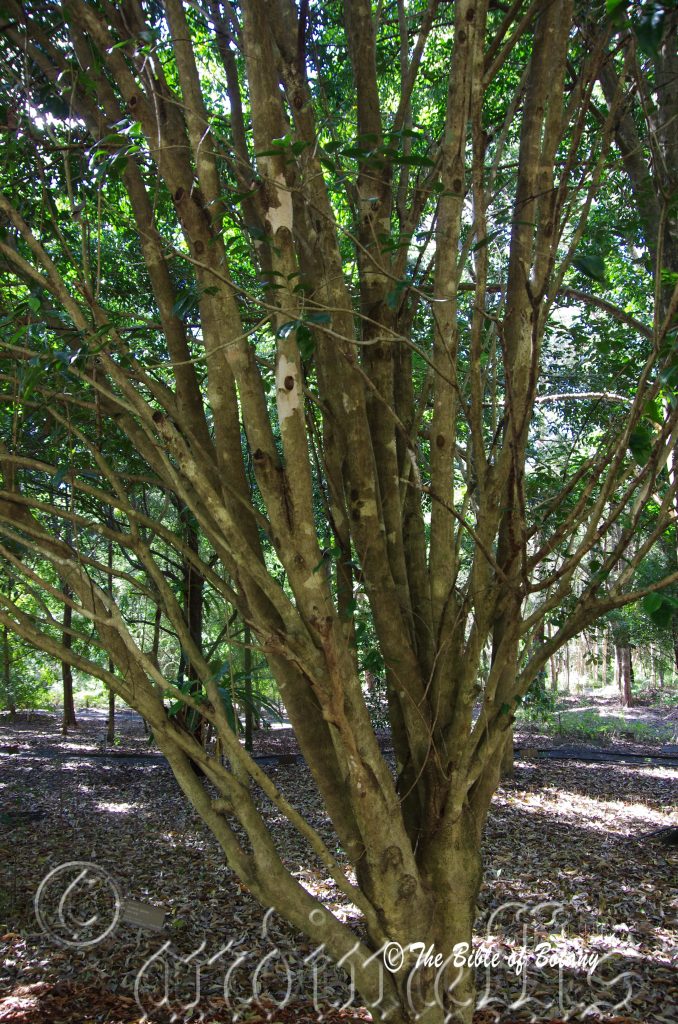
Lismore Botanic Gardens NSW
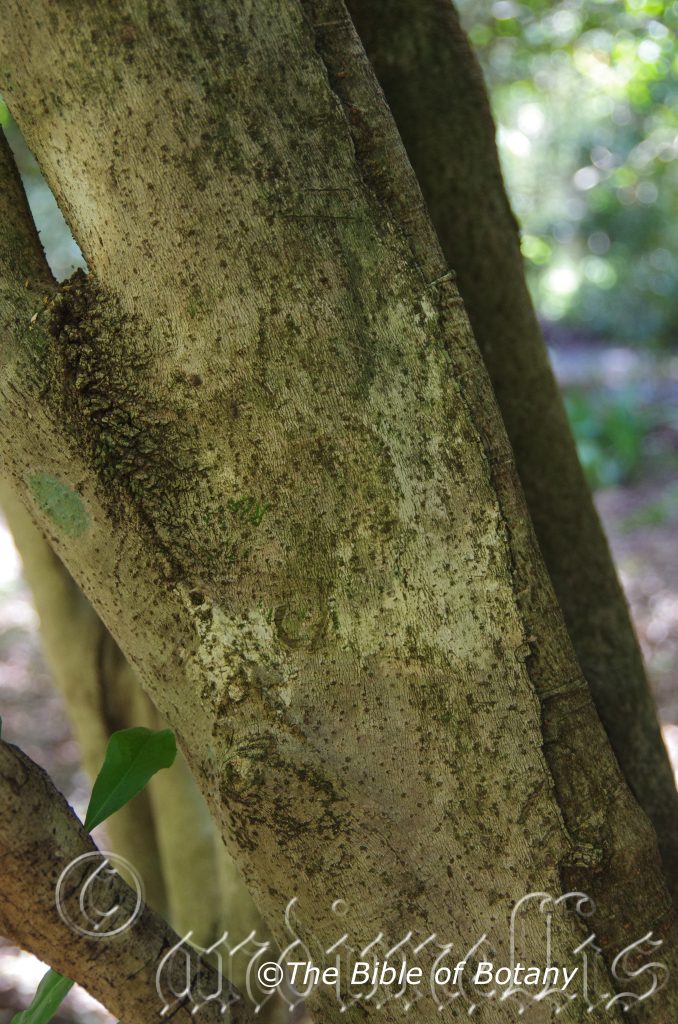
Coffs Harbour Botanic Gardens NSW
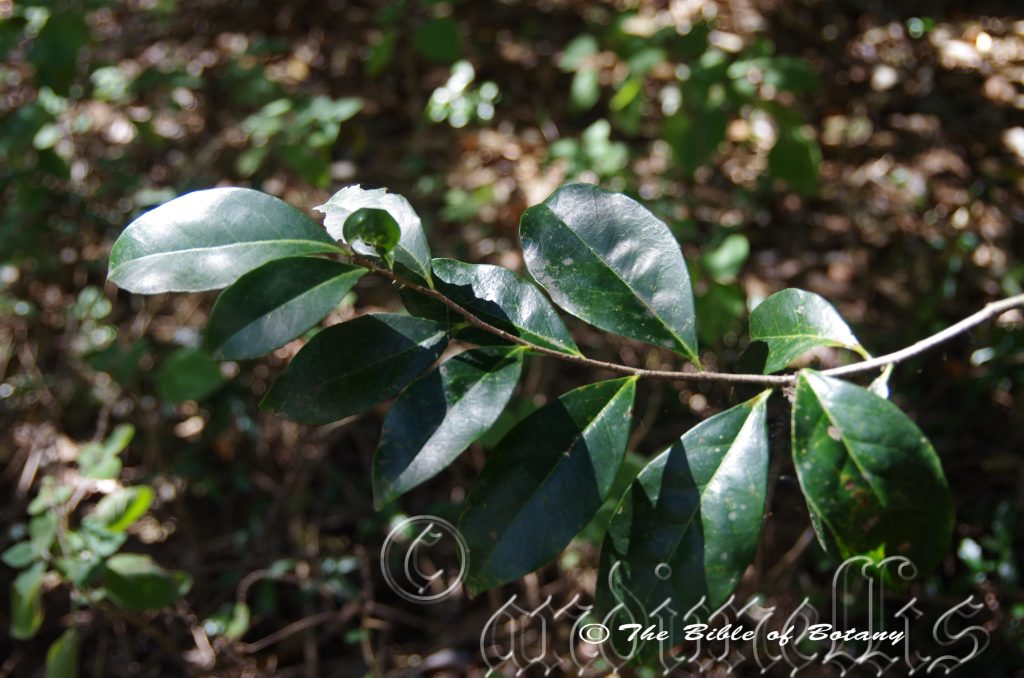
Coffs Harbour Botanic Gardens NSW
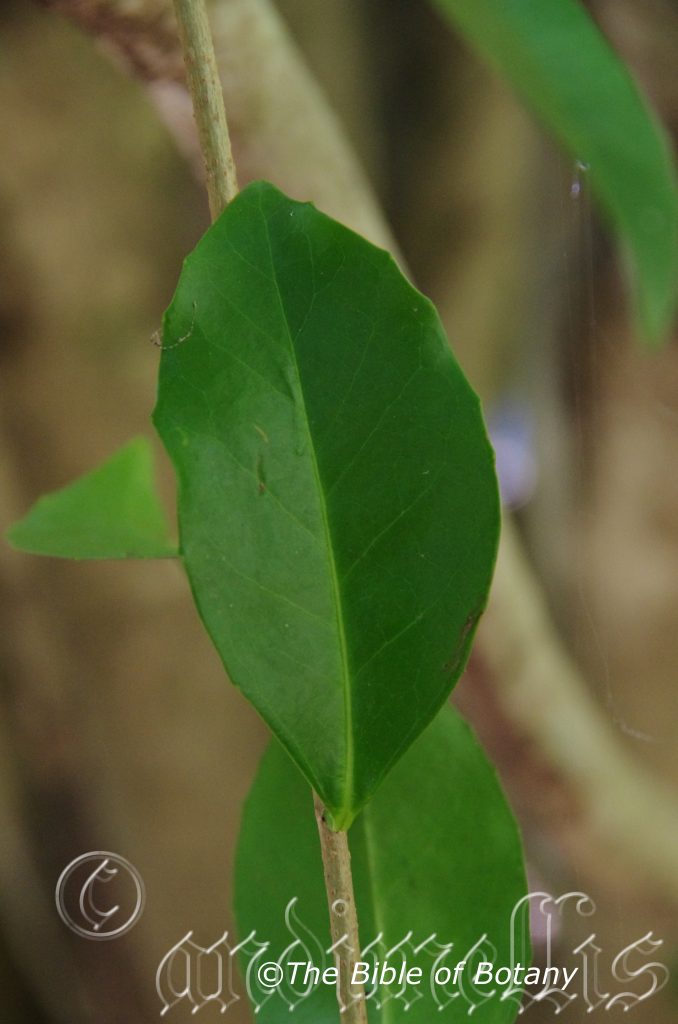
Lismore Botanic Gardens NSW
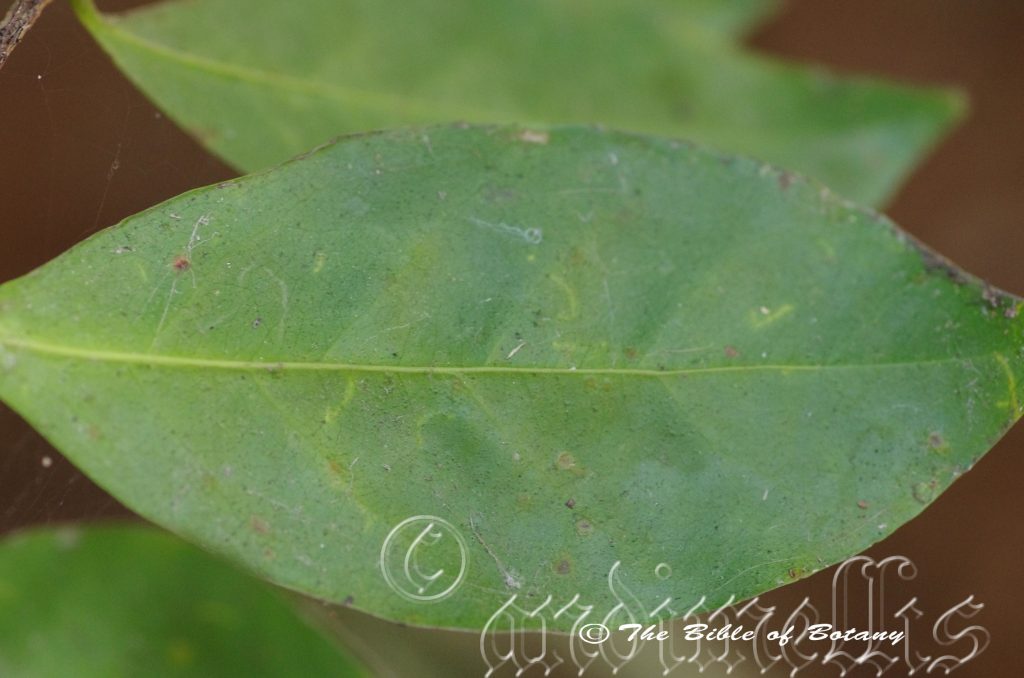
Lismore Botanic Gardens NSW
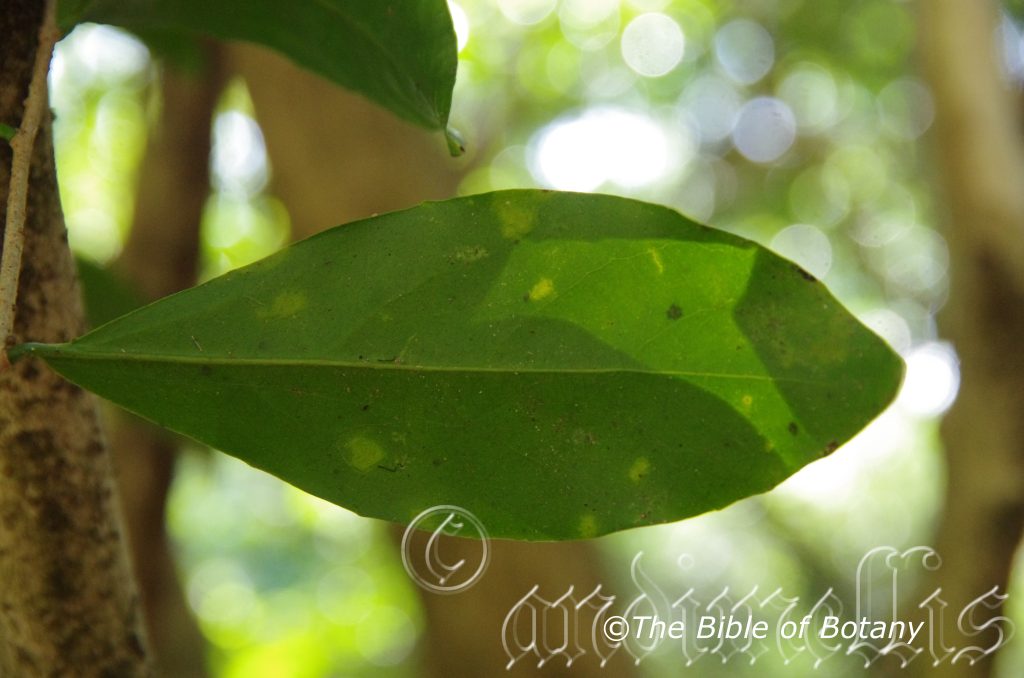
Coffs Harbour Botanic Gardens NSW
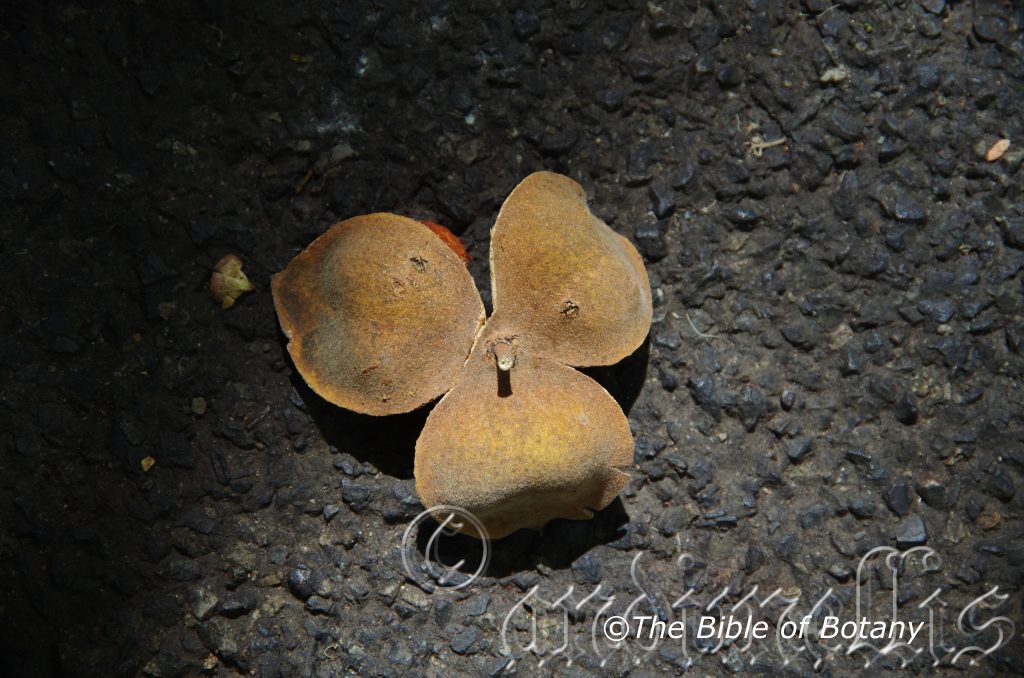
Coffs Harbour Botanic Gardens NSW
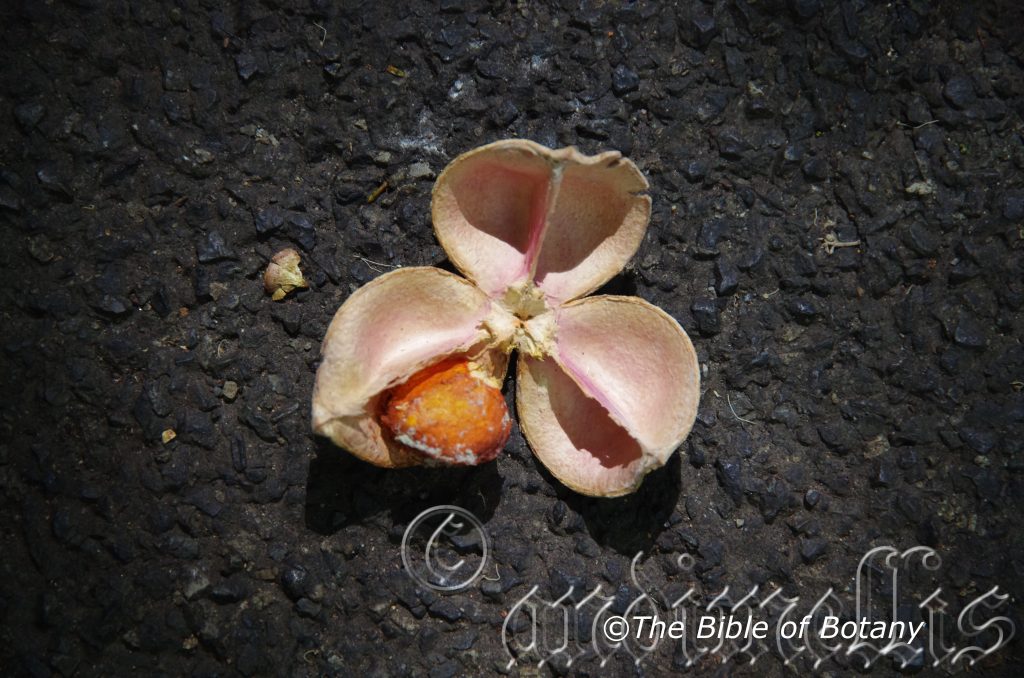
Coffs Harbour Botanic Gardens NSW
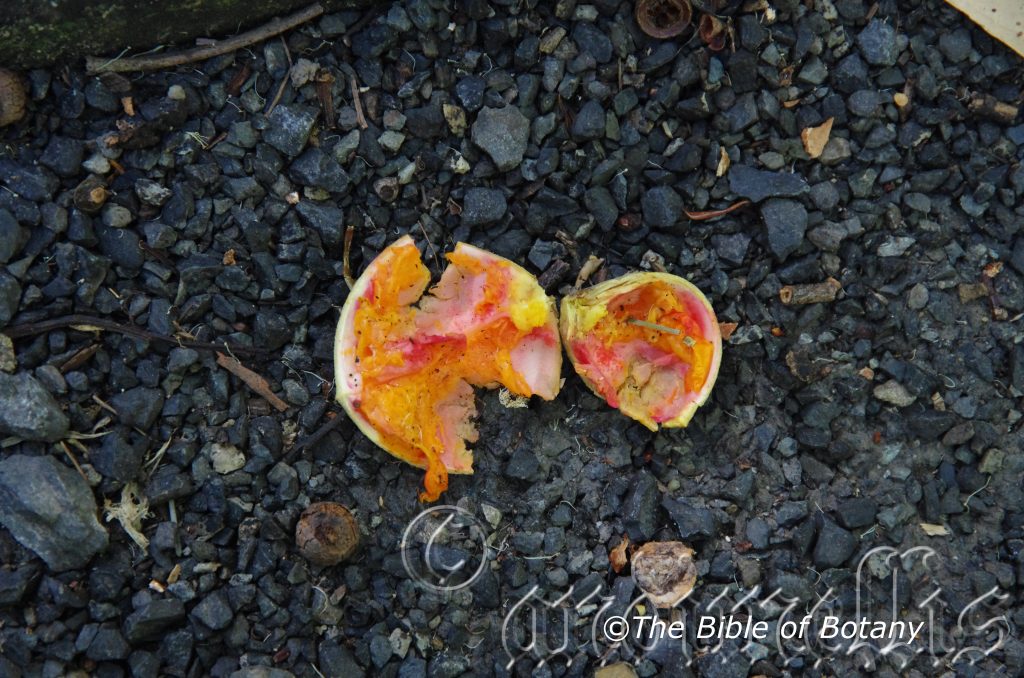
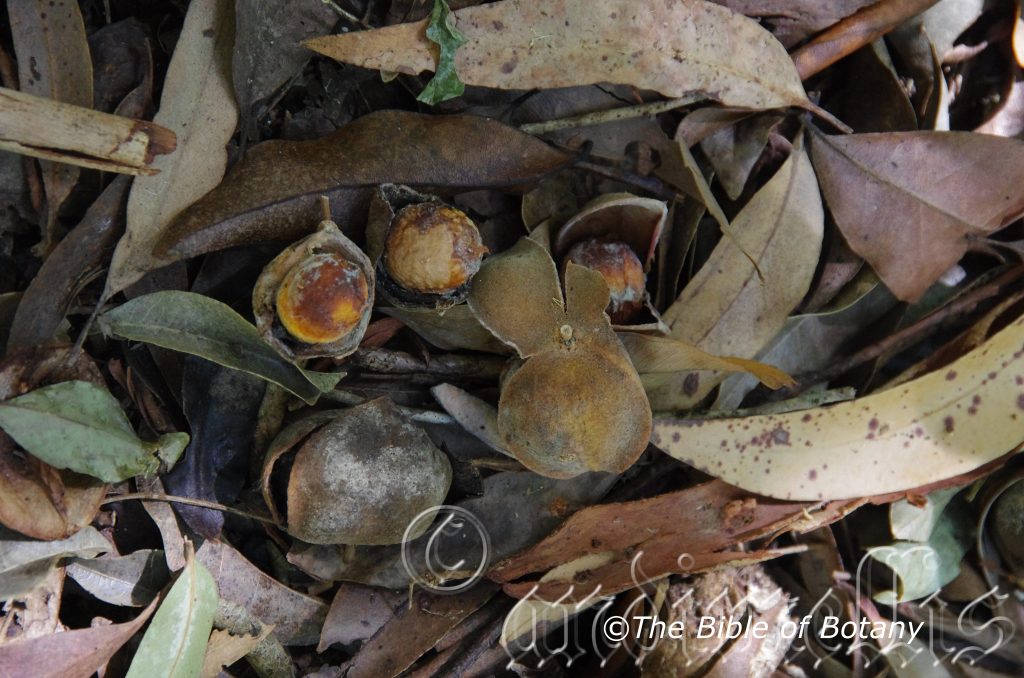
Coffs Harbour Botanic Gardens NSW
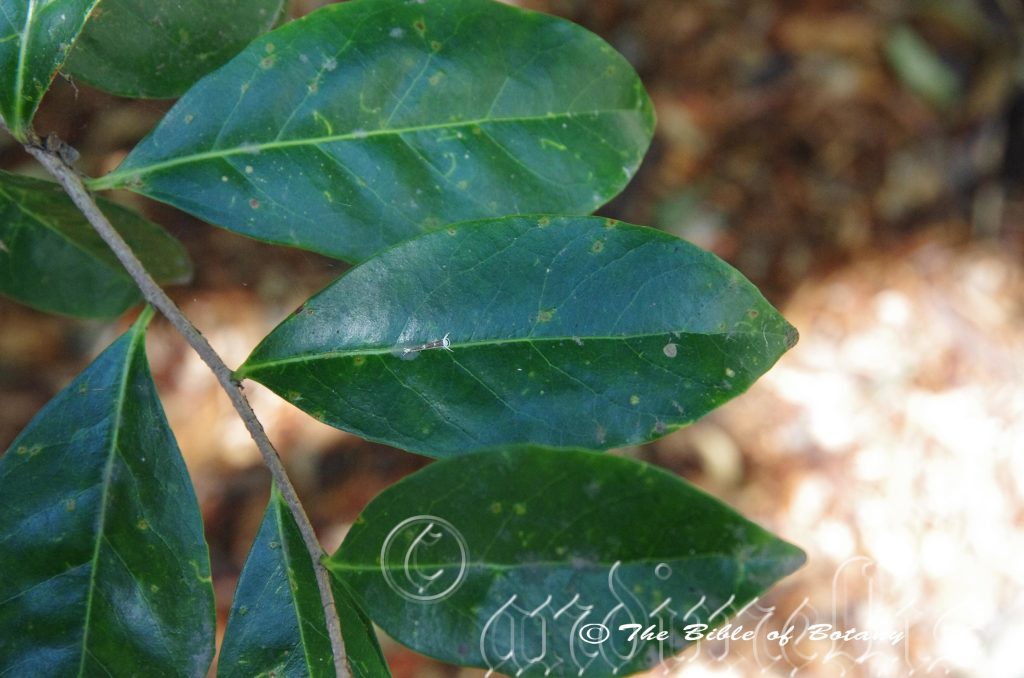
Unknown Larvae Coffs Harbour Botanic Gardens NSW
Xylosma terrae-reginae
Classification:
Unranked: Eudicots
Class: Rosids
Order: Malpighiales
Family: Salicaceae
Tribe: Flacourtieae
Genus: From Xúlon, which is Ancient Greek for wood and Osma, which is Ancient Greek for an odour or fragrance. It refers to wood, which has an aroma or fragrance.
Specie: From Térsomai, which is Ancient Greek for dry land, and Rēginā, which is Latin for a Queen or princess. It refers to plants, which originate in or are mainly found in the drier parts of Queensland.
Sub specie:
Common Name:
Distribution:
Xylosma terrae-reginae is found south from Mount Etna Caves in central coastal Queensland to the Broken Head Nature Reserve in far north eastern coastal New South Wales. It is mainly found on the eastern slopes of the Great Dividing Range to the coast.
https://avh.ala.org.au/occurrences/search?taxa=Xylosma+terrae reginae#tab_mapView
Habitat Aspect Climate:
Xylosma terrae-reginae prefers light dappled shade to full sun. It grows in open woodlands, schlerophyll forests, vine forests or littoral rainforests. The altitude ranges from 5 meters ASL to 250 meters ASL.
The temperatures range from minus 3 degrees in August to 38 degrees in January.
The rainfall ranges from lows of 700mm to 1800mm average per annum.
Soil Requirements:
Xylosma terrae-reginae prefers gravelly fatty loams, stony medium clays often among rocks or boulders. The soils are usually derived from partially decomposed to decomposed red basalts, brown basalts, metamorphic rocks or limestones. The soils pH ranges from 6pH to 7.6pH. It does not tolerate waterlogged soils. Non saline soils to moderately saline soils are tolerated.
Height & Spread:
Wild Plants: 8m to 14m by 2m to 5m.
Characteristics:
Xylosma terrae-reginae grows as a multi trunk, small tree with deep grey bark which is sparsely covered in pale grey patches. The branches are pale grey-brown and are glabrous and sparsely covered in paler lenticels. The mid green, branchlets and new growth are sparsely covered in pale grey, minute, caducous pubescent hairs.
The alternate, elliptic to oblong leaves of Xylosma terrae-reginae are measure 40mm to 105mm in length by 25mm to 50mm in width. The pale yellow-green to paler green petioles are glabrous, thick and bend decisively upwards from near the base to the base of the lamina. The petioles measures 6mm to 14mm in length. The bases are rounded while the apexes are obtuse with a prominent acuminate tip. The coriaceous, discolourous laminas are grass-green to sea-green, dull to semi glossy and glabrous on the upper lamina while the lower lamina is paler and dull. The laminas are flat or slightly areolate between the mid vein and lateral veins and decurve slightly near the margins. The lamina bends decisively on the basal portion, flattens out and decurves strongly again on the apical portion. The leaf margins are regularly serrated. There is a pair of small yellowish-green raised glands near the base on the lamina and 2 to 6 glands scattered along margins. The mid vein is prominent on both surfaces near the base becoming less prominent as it approaches the apex. The 10 to 16 alternate lateral veins are slightly prominent on the lower lamina and are distinctly visible from the upper lamina.
The juvenile leaves are bright glossy grass-green with a brownish tinge and measure 129mm to 150mm in length by 35mm to 70mm in width.
The inflorescences of Xylosma terrae-reginae are born in clusters and or short racemes from the upper leaf axils. The yellow-green to yellow-olive peduncles, rachises and pedicels are glabrous. The peduncles measure 11mm to 26mm in length while the rachises measure 2mm to 10mm in length and the pedicels 4mm to 8mm in length. The hypanthium is covered in minute, yellow-orange oil glands. The 4 or 5 sepals measure 2mm to 4mm in length by 2mm to 4mm in width. The pastel yellow to pastel greenish-yellow petals are orbicular and measure 2mm to 3mm in length measure by 2mm to 3mm in width.
The male flowers are in clusters of 6 to 10 individual flowers. The 28 to 30 exserted stamens are stamens are the most prominent part of the flower and form a ring around the edge of the. The filiform filaments measure 4mm to 7mm in length. The filaments are white while the orbicular, basifixed anthers are pale yellow.
The female flowers are in clusters of 4 to 10 individual flowers. The styles are sparsely covered in white pubescent hairs while the stigma is cream.
The fruits of Xylosma terrae-reginae are globose berries. The berries are glabrous and measure 8mm to 10.5mm in length by 9mm to 11.5mm in diameter. The green capsules turn deep purple and succulent when ripe. The calyx lobes are persistent on the ripe fruit. The 4 to 6 fawn seeds are flattened ellipsoidal.
Wildlife:
Xylosma terraereginae’s wildlife is unknown to the author.
Cultivation:
Xylosma terrae-reginae is a gnarled small tree that should be grown in association with other small shade trees in parks and gardens in sub-tropical and semi-arid areas. It also offers quick growth after the initial years of establishment, and good shade. In cultivation it grows from 5 meters to 9 meters in height by 4 meters to 7 meters in diameter when grown in the open as a single trunk tree. Because of its natural habit of branching at the base of the trunk and coppicing on the trunk near the base it could be pruned to make a large shrub or mass planted to make a hedge row.
It grows exceptionally well on most better quality neutral types of soils where deep leaf litter keeps the soil cool and moisture at an even level. Add to the above, if it is given an adequate supply of water and a little native fertilizer on a regular basis the plants will cope with temperatures as low as 2 degrees and up to 40 degrees. It is moderately drought resistant once established but performs better where the soils retain some moisture.
Two, three or four planted back from a bend will become a very strong focal point when in flower gain a lot of attention whether you are coming or going because of the fresh clean look of the foliage even in the driest of times. It can be pruned if a large shrub is required beneath small other small Eucalyptus trees. It responds well to pruning recovering quickly and often increasing the number of flowers in the following season but this should be started from an early age. Place it in the mid ground with large leaf, or fine leaf ground covers and very small shrubs or annuals in front. To the rear, use large leaf taller like Eucalyptus miniata, Eucalyptus houseana, Eucalyptus pellita or Corymbia ptychocarpa to create a dwarf forest with plenty of shade. Plants with white, pink, orange, red or purple flowers can be used in both the foreground to give depth and variety. Smaller plants with finer foliages in pale green or blue grey foliages will also compliment the scene in the fore ground during periods when there are few flowers in the garden.
Xylosma terrae-reginea’s bark contrasts beautifully with Eucalyptus miniata, Corymbia ptycocarpa or the other trees mentioned above. Use Corymbia ptycocarpa where there may be septic trenches or drainage channels so that it can gain access to a consistent supply of water.
In drier locations near the coast the trunk would contrast nicely with Cupaniopsis anacharioides, Harpullia pendula, Elaeocarpus reticularis or even Corymbia curtissii. A stand of small multi trunk trees would look unusual in a medium size garden. Here I think of Corymbia curtissii, Eucalyptus caesia, Wilkiea huegeliana and Sophora tomentosa subsp. australis.
It often reaches its full potential in just 6 to 12 years and flowers from the third or fourth year from seed.
This tree could be used as a bonsai plant as the trees grow with a naturally gnarled trunk along creek beds and should be easy to work.
Propagation:
Seeds: Seeds of Xylosma terrae-reginae can be removed easily from the fruits by placing the ripe gum nuts into paper bags for a week.
Sow freshly treated seeds directly into a seed raising mix, keeping them moist not wet. Do not over water as the seeds will rot off before germination takes place. Place the trays in a cool shaded area with 50mm shade cloth in the bush house. When the seedlings are 20mm to 25mm tall, prick them out and plant them into 50mm native tubes using a good organic mix.
As the seedlings roots reach the bottom of the tubes plant them out into their permanent position. Do not delay.
Fertilize using Seaweed, fish emulsion or organic chicken pellets soaked in water and apply the liquid on an alternate basis. Fertilize every 2 months until the plants are well established then on an annual basis in September or March to maintain good health, vigour and better flowering.
Further Comments from Readers:
“Hi reader, it seems you use The Bible of Botany a lot. That’s great as we have great pleasure in bringing it to you! It’s a little awkward for us to ask, but our first aim is to purchase land approximately 1,600 hectares to link several parcels of N.P. into one at The Pinnacles NSW Australia, but we need your help. We’re not salespeople. We’re amateur botanists who have dedicated over 30 years to saving the environment in a practical way. We depend on donations to reach our goal. If you donate just $5, the price of your coffee this Sunday, We can help to keep the planet alive in a real way and continue to bring you regular updates and features on Australian plants all in one Botanical Bible. Any support is greatly appreciated. Thank you.”
In the spirit of reconciliation we acknowledge the Bundjalung, Gumbaynggirr and Yaegl and all aboriginal nations throughout Australia and their connections to land, sea and community. We pay our respect to their Elders past, present and future for the pleasures we have gained.
Xyris bracteata
Classification:
Unranked: Monocots
Unranked: Commelinids
Class: Equisetopsida
Order: Poales
Family: Xyridaceae
Genus: Xurón, which is Ancient Greek for sharp edges (of a leaf) and later Xyris, which is Latin for an Iris and used by Dioscorides for Iris foetidissima. It refers to leaf margins, stems, spikes or bracts which have a stiff, narrow wing which resembles the edge on a razor blade.
Specie: From Bractea, which is Latin for a thin plate of shiny metal. It refers to special type of leaves, which surround the flower or pedicel, are further from the flower than petals and bracteoles and are generally larger in this species than other species in the genus.
Sub species:
Common Name: Dwarf Yellow Eye.
Distribution:
Xyris bracteata is restricted to a small area in coastal New South Wales south from Sydney to Jervis Bay with several disjunct populations further north at Kingscliff, the Sarah River and Werrikimbe National Park.
It has also been found along Edith creek near Smithton in north eastern Tasmania.
https://avh.ala.org.au/occurrences/search?taxa=Xyris+bracteata#tab_mapView
Habitat Aspect Climate:
Xyris bracteata prefers light dappled shade to full sun. It grows in moist to dry open woodland heaths. The altitude usually ranges from 5 meters ASL to 500 meters ASL except for the Sarah Creek population which is found at 1300 meters ASL.
The temperatures range from minus 3 degree in July to 38 degrees in January.
The rainfall ranges from lows of 900mm to an average of 1200mm annually.
Soil Requirements:
Xyris bracteata prefers coarse sands, fine sands, or light fatty sandy loams. The soils are usually derived from decomposed sandstones or in the case of the Sarah Creek population decomposed granites. The soils pH ranges from 4.5pH to 6.5pH. It does not tolerate waterlogged soils. Non saline soils to moderately saline soils are tolerated.
Height & Spread:
Wild Plants: 0.1m to 0.2m by 0.2m to 0.3m.
Characteristics:
Xyris bracteata’s grows as a robust erect herb with few to many scapes. The basal sheath is yellowish to reddish-brown and measures 25mm to 55mm in length. The ligule is roughly triangular.
The linear leaves of Xyris bracteata measure 100mm to 300mm in length by 1.5mm to 4.5mm in width. The bases are clasping while the apexes are acute. The concolourous laminas are slightly twisted, mid yellowish-green to deep grass-green and glabrous. The laminas are flat while the margins are entire, thickened and covered in fine papillate lumps.
The inflorescences of Xyris bracteata are born on scape from the basal leaf cluster. The flattened to subterete scape is slightly too moderately twist and measures 300mm to 610mm in length by 0.8mm to 1.5mm in width. There are 7 to 10 individual flowers in the dense apical spike with one flower blooming at a time. The spike measures 8mm to 10mm in length by 5mm to 7mm in diameter. The basal sheath measures 80mm to 150mm length and is appressed to the scape for its whole length or is distally free. The bracts and individual flowers are arranged in an ovoid to obovoid compact spike. The 11 to 20 basal sterile bracts are obovate, keeled, and dorsal and measure 3mm to 8mm in length. The yellowish-brown to reddish-brown, obovate fertile bracts measure 5.5 mm to 7mm in length.
The 3 bright yellow, broad obcordate tepals are pedicillate. The pedicillate measures 1.5mm to 2.5mm in length. The margins are entire while the broad emarginate apex is lacerate. The tepals measure 6mm to 8mm in length by 8mm to 10mm in width.
The golden-yellow staminodes are bifid and measure 2.4mm to 3mm in length including the orange-yellow thick ciliate hairs. The yellow filaments measure 0.7mm to 1mm in length while the basifixed anthers are ovoidal and measure 0.5mm to 0.7mm in length.
The yellow style measure 2mm to 2.2mm in length with 3 arms that measure 2mm to2.2mm in length. The flowers appear throughout the year with peaks from between late July to early September and late February to early May in favourable seasons.
Xyris bracteata’s fruits are enclosed capsules. The capsules measure 3.6mm to 4.6mm in length by 2.4mm to 3mm in width and 1.6mm to 2mm in thickness. The obloidal to ellipsoid seeds measure 1.3mm to 1.4mm in length. There are 12 to 18 longitudinal ridges and 6 to 8 transverse ridges.
Wildlife:
Xyris bracteata’s flowers are the food source of pollen and nectar to many different insects including pollen flies, native colony bees including Tetragonula carbonaria and pollen wasps.
Cultivation:
Xyris bracteata is a beautiful small native annual or perennial herb which is suitable for small gardens to the largest garden. Unfortunately like the other Xyris specie, including Xyris bracteata has not gained the popularity it deserves with gardeners. As an annual it offers the gardener plenty of quick colour in small areas around swimming pools, sunny courtyard and rockeries. In native shrubberies or as understory perennials in the bush gardens it will add colour. It is best mass planted in patches with other annuals like Xerochrysum or Helipterum for brilliant colour or Actinotis helianthi to really highlight the yellow and greys.
It is an excellent colourful addition for temperate, sub-tropical or beach side gardens. The spent flowers should be removed immediately after flowering to encourage more flowering spikes. It is fast growing, drought tolerant once established and is cold tolerant to temperatures as low as minus 2 degrees. Drought conditions will seriously affect flowering.
It is particularly striking in moist heath scenes when mass planted or mixed in with other lilies to give formal displays particularly when arranged with the various pink and red or white coloured flowers. Xyris bracteata would make an outstanding contribution to a dry heath garden as well. Here it can be used as the shorter growing planted in small clumps throughout the heath scene. When you design a flat heath garden which Xyris bracteata is well suited don’t use contours to display the plants as heath lands are almost always flat or have a slight rise. Plants must be planted close together and be short so you can see over the tallest ones with the exception of one or two plants at the most. These will be feature plants. The idea is to achieve a feeling of expansive flatness. This can be achieved with using the Xyris bracteata’s green foliage and striking yellow flowers to contrast with finer soft grey to glaucous coloured foliages. Use a lot of procumbent plants like Scaevola sp. and in particular Helipterum roseum. Mix it with other smaller shrubs so none of them dominate the scene but blend in to give a mosaic of foliage colours that you oversee.
Propagation:
Seeds: The seeds of Xyris bracteata can be sown directly into a seed raising mix. Cover them with 5mm of fine sand and keep moist not wet. Place the tray in a warm sunny position.
When the seedlings are 20mm to 30mm tall, prick them out and plant them into their permanent position or 50mm native tubes. Give them a good watering with our recommended fertilizer on planting out.
Division: Division is an easy way to produce a few new plants cheaply and quickly. First select a healthy plant. Secondly it is best to divide plants just prior to the onset of new growth. Prior to removing the plant from the ground plants should be given a deep watering a few days before removal, then again about 2 hours before removing them from the ground. It is best to soak potted plants in water for a couple of hours prior to removing the plant from the pot.
Use a spade and cut down each side about 50mm to 100mm out from the base of the plant. Dig back on one side so that the spade can be wedged below the plant. Now lift the plant out trying not to damage the roots.
Wash the roots gently but thoroughly to remove most of the soil.
Divide the clumps so that there is a crown or tuff with roots and leaves on each division. This is best done using secateurs or a knife.
Remove any unwanted or dead roots.
Remove half the foliage leaving those leaves that surround the growing point.
Spread the remaining roots outwards and downwards to allow the plants the maximum room to develop new roots.
Water thoroughly but do not fertilize. Place the containers beneath 30mm shade cloth and keep moist. After a fortnight or after the signs of new roots or shoots fertilize with our recommended fertilizer and repeat after about a month.
Once the plants have re-established themselves plant out and fertilize as before.
Further Comments from Readers:
“Hi reader, it seems you use The Bible of Botany a lot. That’s great as we have great pleasure in bringing it to you! It’s a little awkward for us to ask, but our first aim is to purchase land approximately 1,600 hectares to link several parcels of N.P. into one at The Pinnacles NSW Australia, but we need your help. We’re not salespeople. We’re amateur botanists who have dedicated over 30 years to saving the environment in a practical way. We depend on donations to reach our goal. If you donate just $5, the price of your coffee this Sunday, We can help to keep the planet alive in a real way and continue to bring you regular updates and features on Australian plants all in one Botanical Bible. Any support is greatly appreciated. Thank you.”
In the spirit of reconciliation we acknowledge the Bundjalung, Gumbaynggirr and Yaegl and all aboriginal nations throughout Australia and their connections to land, sea and community. We pay our respect to their Elders past, present and future for the pleasures we have gained.
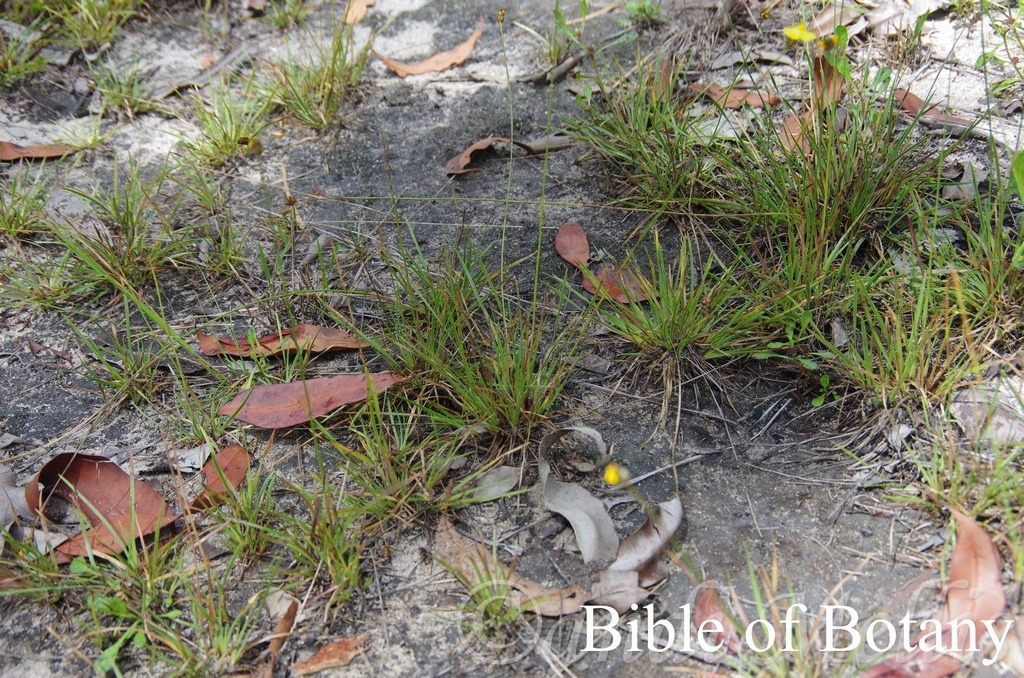
Author’s Garden The Pinnacles NSW
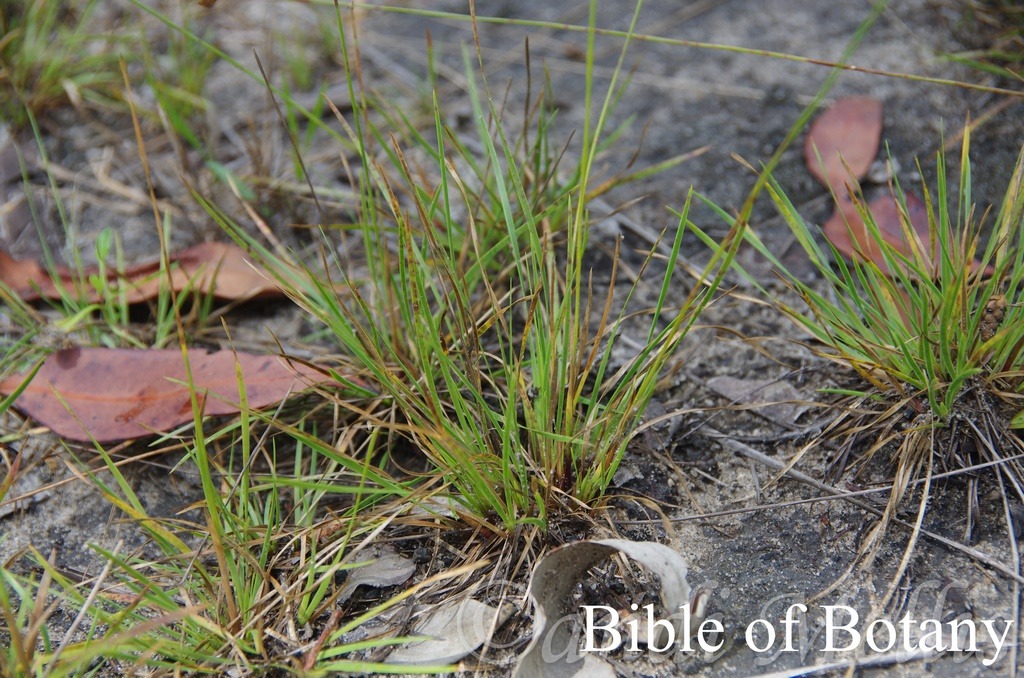
Author’s Garden The Pinnacles NSW
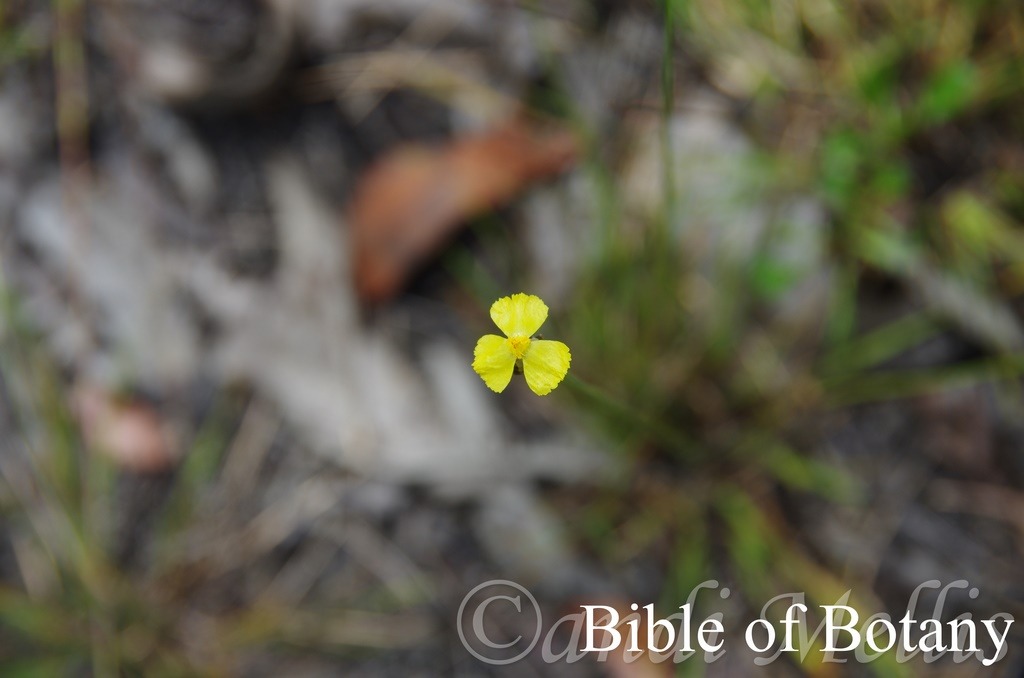
Author’s Garden The Pinnacles NSW
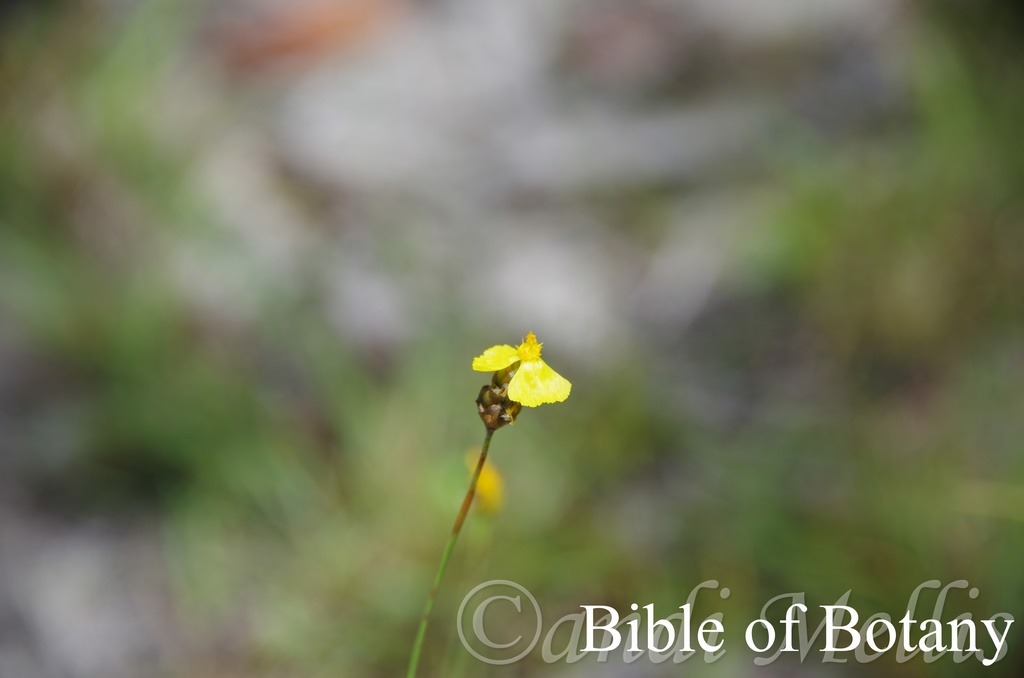
Author’s Garden The Pinnacles NSW
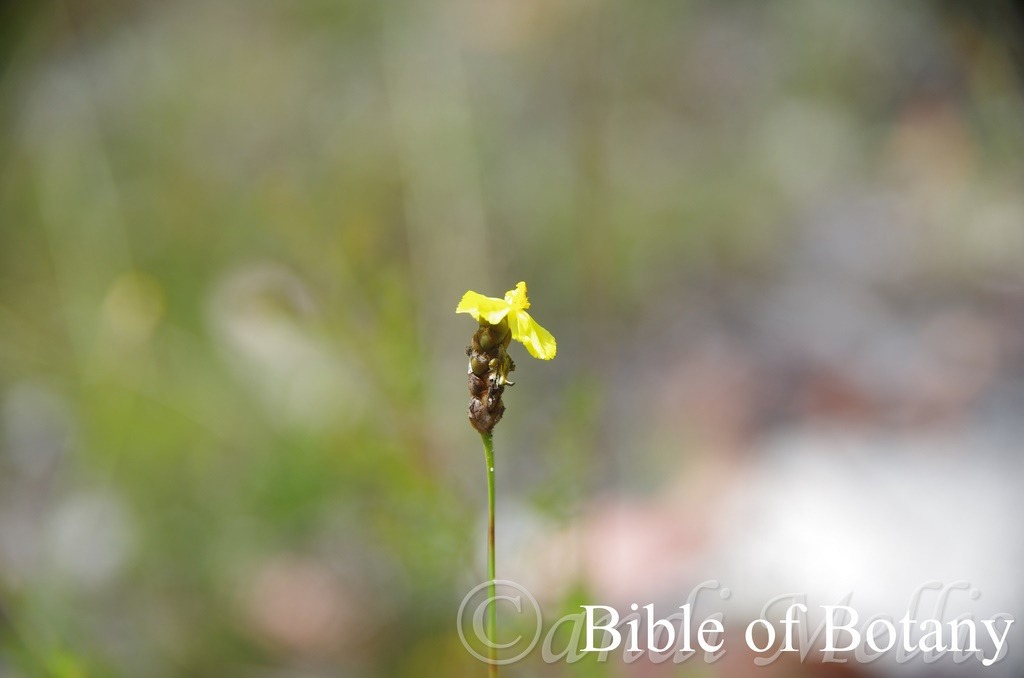
Author’s Garden The Pinnacles NSW
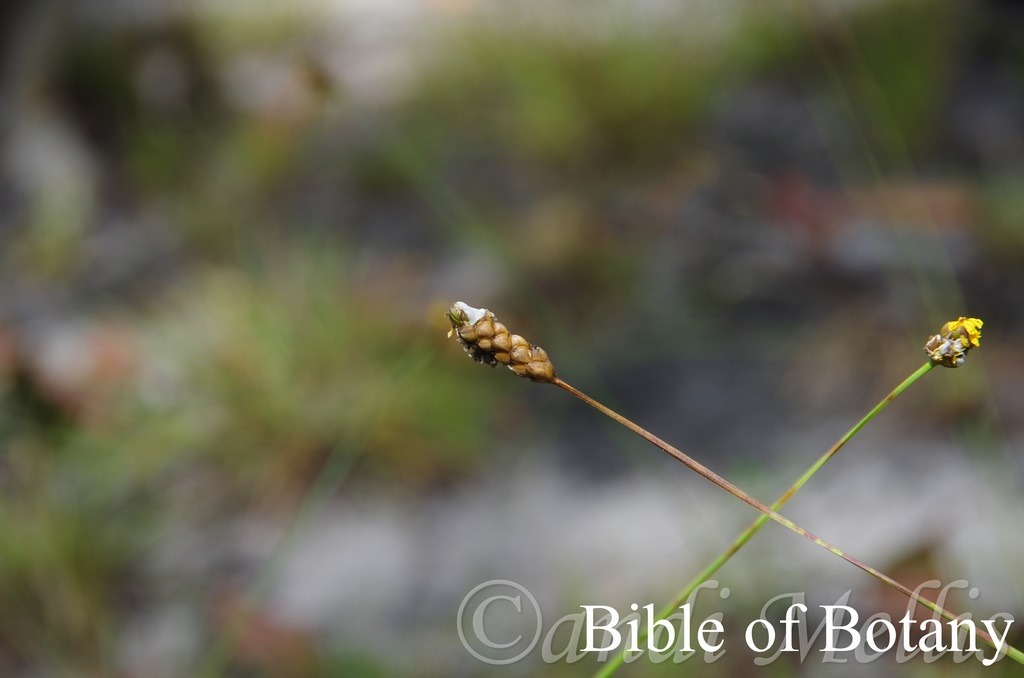
Author’s Garden The Pinnacles NSW
Xyris complanata
Classification:
Unranked: Monocots
Unranked: Commelinids
Class: Equisetopsida
Order: Poales
Family: Xyridaceae
Genus: From Xurón, which is Ancient Greek for sharp edges (of a leaf) and later Xyris, which is Latin for an Iris and used by Dioscorides for Iris foetidissima. It refers to leaf margins, stems, spikes or bracts which have a stiff, narrow wing which resembles the edge on a razor blade.
Specie: From Complanata, which is Latin for flat or to make level. It usually refers to plants, which have flattened stems.
Sub species:
Common Name: Dwarf Yellow Eye.
Distribution: Xyris complanata is found north of a line from Broome in north western coastal Western Australia to Lake Surprise in central Northern Territory to the Robinson River in far north western Queensland then east and north of a line south to Stanthorpe in far south east Queensland then south west to Baradeen, on the Cudgegong River and the coast in central coastal New South Wales.
https://avh.ala.org.au/occurrences/search?taxa=Xyris+complanata#tab_mapView
Habitat Aspect Climate:
Xyris complanata prefers light dappled shade to full sun. It grows in moist to wet open woodland heaths, swamps and wallums or around billabong backwaters where permanent water exists. The altitude ranges from 5 meters ASL to 750 meters ASL.
The temperatures range from minus 3 degree in July to 42 degrees in January.
The rainfall ranges from lows of 300mm to an average of 3200mm annually.
Soil Requirements:
Xyris complanata prefers coarse sands, fine sands, and light fatty clays to gritty medium clays. The soils are usually derived from decomposed sandstones, granites, brown basalts, black basalts, metamorphic rocks, limestones, accumulated peaty beach sands or accumulated coral sands. The soils pH ranges from 4.5pH to 6.5pH. It does not tolerate waterlogged soils. Non saline soils to moderately saline soils are tolerated.
Height & Spread:
Wild Plants: 0.2m to 0.5m by 0.2m to 0.3m when in flower.
Characteristics:
Xyris complanata grows as small erect tufted herb with few to many scapes. The basal sheath is yellowish to reddish-brown, dull and measures 10mm to 30mm in length.
The linear leaves of Xyris complanata measure 350mm to 230mm in length by 1mm to 4mm in width. The bases are clasping while the apexes are acute. The concolourous laminas are slightly twisted, are mid yellowish-green to deep grass-green and glabrous. The laminas are flat while the margins are entire, paler than the lamina and covered in fine tuberculate lumps.
The inflorescences of Xyris complanata are born on scape from the basal leaf cluster. The flattened to subterete scape measures 180mm to 500mm in length by 0.8mm to 1.5mm in width. There are 2 to 4 prominently raised ribs that are covered in fine tuberculate lumps. The bracts and individual flowers are arranged in an ovoid to obovoid compact spike. The ovoid or cylindrical spike measures 6mm to 22mm in length by 4mm to 8mm in diameter. There are 6 to 10 individual flowers in the dense apical spike with one flower blooming at a time.
The 3 bright yellow, trianbicular tepals are pedicellate. The pedicellate measures 1.5mm to 2mm in length. The margins are entire while the broad obtuse apex is lacerate. The tepals measure 5mm to 6mm in length by 6mm to 8mm in width.
The golden-yellow staminodes are bifid and measure 3.5mm to 4.2mm in length including the orange-yellow thick ciliate hairs. The yellow conical filaments measure 1mm to 1.1mm in length while the basifixed anthers are ovoidal and measure 0.5mm to 0.7mm in length.
The yellow style measure 3mm to 4mm in length with 3 arms that measure 0.4mm to 0.5mm in length. The flowers appear from mid-November to early February.
Xyris complanata’s fruits are enclosed capsules. The capsules measure 1.5mm to 2mm in length by1.5mm to 2mm in width. The obloidal to ellipsoid seeds measure 0.3mm to 0.4mm in length.
Wildlife:
Xyris complanata’s flowers are the food source of pollen and nectar to many different insects including pollen flies, native colony bees including Tetragonula carbonaria and pollen wasps.
Cultivation:
Xyris complanata is a beautiful small native annual or perennial herb which is suitable for small gardens to the largest garden. Unfortunately like the other Xyris specie, including Xyris complanata has not gained the popularity it deserves with gardeners. As an annual it offers the gardener plenty of quick colour in small areas around swimming pools, sunny courtyard and rockeries. In native shrubberies or as understory perennials in lightly shaded bush gardens it will add colour. It is best mass planted in patches with other annuals like Xerochrysum specie or Helipterum specie for brilliant colour or Actinotis helianthi to really highlight the yellow greens and greys.
It is an excellent colourful addition for temperate, sub-tropical or beach side gardens. The spent flowers should be removed immediately after flowering to encourage more flowering spikes. It is fast growing, drought tolerant once established and is cold tolerant to temperatures as low as minus 2 degrees. Drought conditions will seriously affect flowering.
It is particularly striking in moist heath scenes when mass planted or mixed in with other lilies to give formal displays particularly when arranged with the various pink and red or white coloured flowers. Xyris complanata would make an outstanding contribution to a dry heath garden as well. Here it can be used as the shorter growing planted in small clumps throughout the heath scene. When you design a flat heath garden which Xyris complanata is well suited don’t use contours to display the plants as heath lands are almost always flat or have a slight rise. Plants must be planted close together and be short so you can see over the tallest ones with the exception of one or two plants at the most. These will be feature plants. The idea is to achieve a feeling of expansive flatness. This can be achieved with using the Xyris complanata’s green foliage and striking yellow flowers to contrast with finer soft grey to glaucous coloured foliages. Use a lot of procumbent plants like Scaevola specie and in particular Helipterum roseum. Mix it with other smaller shrubs so none of them dominate the scene but blend in to give a mosaic of foliage colours that you oversee.
Propagation:
Seeds: The seeds of Xyris complanata can be sown directly into a seed raising mix. Cover them with 5mm of fine sand and keep moist not wet. Place the tray in a warm sunny position.
When the seedlings are 20mm to 30mm tall, prick them out and plant them into their permanent position or 50mm native tubes. Give them a good watering with our recommended fertilizer on planting out.
Division: Division is an easy way to produce a few new plants cheaply and quickly. First select a healthy plant. Secondly it is best to divide plants just prior to the onset of new growth. Prior to removing the plant from the ground plants should be given a deep watering a few days before removal, then again about 2 hours before removing them from the ground. It is best to soak potted plants in water for a couple of hours prior to removing the plant from the pot.
Use a spade and cut down each side about 50mm to 100mm out from the base of the plant. Dig back on one side so that the spade can be wedged below the plant. Now lift the plant out trying not to damage the roots.
Wash the roots gently but thoroughly to remove most of the soil.
Divide the clumps so that there is a crown or tuff with roots and leaves on each division. This is best done using secateurs or a knife.
Remove any unwanted or dead roots.
Remove half the foliage leaving those leaves that surround the growing point.
Spread the remaining roots outwards and downwards to allow the plants the maximum room to develop new roots.
Water thoroughly but do not fertilize. Place the containers beneath 30mm shade cloth and keep moist. After a fortnight or after the signs of new roots or shoots fertilize with our recommended fertilizer and repeat after about a month.
Once the plants have re-established themselves plant out and fertilize as before.
Further Comments from Readers:
“Hi reader, it seems you use The Bible of Botany a lot. That’s great as we have great pleasure in bringing it to you! It’s a little awkward for us to ask, but our first aim is to purchase land approximately 1,600 hectares to link several parcels of N.P. into one at The Pinnacles NSW Australia, but we need your help. We’re not salespeople. We’re amateur botanists who have dedicated over 30 years to saving the environment in a practical way. We depend on donations to reach our goal. If you donate just $5, the price of your coffee this Sunday, We can help to keep the planet alive in a real way and continue to bring you regular updates and features on Australian plants all in one Botanical Bible. Any support is greatly appreciated. Thank you.”
In the spirit of reconciliation we acknowledge the Bundjalung, Gumbaynggirr and Yaegl and all aboriginal nations throughout Australia and their connections to land, sea and community. We pay our respect to their Elders past, present and future for the pleasures we have gained.
Xyris gracilis
Classification:
Unranked: Monocots
Unranked: Commelinids
Class: Equisetopsida
Order: Poales
Family: Xyridaceae
Genus: From Xurón, which is Ancient Greek for sharp edges (of a leaf) and later Xyris, which is Latin for an Iris and used by Dioscorides for Iris foetidissima. It refers to leaf margins, stems, spikes or bracts which have a stiff, narrow wing which resembles the edge on a razor blade.
Specie: From Gracilis, which is Latin for slender and graceful and Us, which is Greek/Latin for the degree. It refers to plants, which are the more graceful and have more slender stems than other species in the genus.
Sub species:
Common Name: Dwarf Yellow Eye.
Distribution:
Xyris gracilis is found south from near Woodgate in southern coastal Queensland to the Glenelg coastal Plain in south western Victoria.
It is also found in the north western corner, the south eastern corner and central Tasmania indicating that it may be more widespread than reported.
https://avh.ala.org.au/occurrences/search?taxa=Xyris+gracilis#tab_mapView
Habitat Aspect Climate:
Xyris gracilis prefers light dappled shade to full sun. It grows in moist to wet open woodland heaths, on the coast and ranges. The altitude usually ranges from 5 meters ASL to 650 meters ASL.
The temperatures range from minus 3 degree in July to 38 degrees in January.
The rainfall ranges from lows of 600mm to an average of 2100mm annually.
Soil Requirements:
Xyris gracilis prefers coarse sands, fine sands, or light fatty sandy loams. The soils are derived from decomposed sandstones, granites or accumulated peaty beach sands. The soils pH ranges from 4.5pH to 6pH. It does not tolerate waterlogged soils but prevails where moisture is retained for long periods or soil capillary action assists in keeping the soil at an even moisture level. Non saline soils to moderately saline soils are tolerated.
Height & Spread:
Wild Plants: 0.1m to 0.2m by 0.2m to 0.3m.
Characteristics:
Xyris gracilis’s grows as a dense erect perennial herb with many scapes. The basal sheaths are golden-brown, reddish-brown or black and measures 25mm to 60mm in length.
The linear leaves of Xyris gracilis measure 60mm to 300mm in length by 1mm to 4.5mm in width. The bases are clasping while the apexes are acute. The concolourous laminas are mid yellowish-green to deep grass-green and glabrous. The laminas are flat while the margins are entire, paler than the lamina and covered in fine tuberculate lumps.
The inflorescences of Xyris gracilis are born on scapes from the basal leaf cluster. The subterete scapes measure 260mm to 650mm in length by 0.8mm to 1.5mm in width. There are 7 to 10 individual flowers in the dense apical spike with one flower blooming at a time. The spike is ellipsoidal to ovoidal and measure 5mm to10mm in length by 2.5mm to 8mm in diameter.
The 3 bright yellow, obcordate tepals are pedicellate. The pedicillate measures 1.5mm to 2.4mm in length. The margins are entire while the deeply cordate apex is slightly lacerate. The tepals measure 7.5mm to 10mm in length by 8mm to 11mm in width.
The golden-yellow staminodes are bifid and measure 2mm to 2.6mm in length including the orange-yellow thick ciliate hairs. The filiform filament measures 1.2mm to 1.6mm in length. The 3 yellow filiform filaments measure 0.8mm to 1mm in length while the basifixed linear anthers measure 0.6mm to 0.8mm in length.
The yellow style measure 5mm to 6mm in length with 3 arms that measure 2mm to 4mm in length. The flowers appear mid-November to mid-January.
Xyris gracilis’s fruits are enclosed capsules. The capsules measure 3.6mm to 4.6mm in length by 2.4mm to 3mm and 1.6mm to 2mm in thickness. The obloidal to ellipsoid seeds measure 1.3mm to 1.5mm in length. There are 12 to 18 longitudinal ridges and 6 to 8 transverse ridges.
Wildlife:
Xyris gracilis’s flowers are the food source of pollen and nectar to many different insects including pollen flies, native colony bees including Tetragonula carbonaria and pollen wasps.
Cultivation:
Xyris gracilis is a beautiful small native annual or perennial herb which is suitable for small gardens to the largest garden. Unfortunately Xyris gracilis has not gained the popularity it deserves with gardeners. As an annual it offer the gardener plenty of quick colour in small areas around swimming pools, sunny courtyard and rockeries. In native shrubberies and as understory perennials in the bush gardens it is best mass planted in patches with other annuals like Xerochrysum specie or Helipterum specie for brilliant colour or Actinotis helianthi to really highlight the yellow and greys.
It is an excellent colourful addition for temperate, sub-tropical or beach side gardens. The spent flowers should be removed immediately after flowering to encourage more flowering spikes. It is fast growing, drought tolerant once established and is cold tolerant to temperatures as low as minus 2 degrees. Drought conditions will seriously affect flowering.
It is particularly striking in moist heath scenes when mass planted or mixed in with other lilies to give formal displays particularly when arranged with the various pink and red or white coloured flowers. Xyris gracilis would make an outstanding contribution to a dry heath garden as well. Here it can be used as the shorter growing planted in small clumps throughout the heath scene. When you design a flat heath garden which Xyris gracilis is well suited don’t use contours to display the plants as heath lands are almost always flat or have a slight rise. Plants must be planted close together and be short so you can see over the tallest ones with the exception of one or two plants at the most. These will be feature plants. The idea is to achieve a feeling of expansive flatness. This can be achieved with using the Xyris gracilis’s green foliage and striking yellow flowers to contrast with finer soft grey to glaucous coloured foliages. Use a lot of procumbent plants like Scaevola specie and in particular Helipterum roseum. Mix it with other smaller shrubs so none of them dominate the scene but blend in to give a mosaic of foliage colours that you oversee.
Propagation:
Seeds: The seeds of Xyris gracilis can be sown directly into a seed raising mix. Cover them with 5mm of fine sand and keep moist not wet. Place the tray in a warm sunny position.
When the seedlings are 20mm to 30mm tall, prick them out and plant them into their permanent position or 50mm native tubes. Give them a good watering with our recommended fertilizer on planting out.
Division: Division is an easy way to produce a few new plants cheaply and quickly. First select a healthy plant. Secondly it is best to divide plants just prior to the onset of new growth. Prior to removing the plant from the ground plants should be given a deep watering a few days before removal, then again about 2 hours before removing them from the ground. It is best to soak potted plants in water for a couple of hours prior to removing the plant from the pot.
Use a spade and cut down each side about 50mm to 100mm out from the base of the plant. Dig back on one side so that the spade can be wedged below the plant. Now lift the plant out trying not to damage the roots.
Wash the roots gently but thoroughly to remove most of the soil.
Divide the clumps so that there is a crown or tuff with roots and leaves on each division. This is best done using secateurs or a knife.
Remove any unwanted or dead roots.
Remove half the foliage leaving those leaves that surround the growing point.
Spread the remaining roots outwards and downwards to allow the plants the maximum room to develop new roots.
Water thoroughly but do not fertilize. Place the containers beneath 30mm shade cloth and keep moist. After a fortnight or after the signs of new roots or shoots fertilize with our recommended fertilizer and repeat after about a month.
Once the plants have re-established themselves plant out and fertilize as before.
Further Comments from Readers:
“Hi reader, it seems you use The Bible of Botany a lot. That’s great as we have great pleasure in bringing it to you! It’s a little awkward for us to ask, but our first aim is to purchase land approximately 1,600 hectares to link several parcels of N.P. into one at The Pinnacles NSW Australia, but we need your help. We’re not salespeople. We’re amateur botanists who have dedicated over 30 years to saving the environment in a practical way. We depend on donations to reach our goal. If you donate just $5, the price of your coffee this Sunday, We can help to keep the planet alive in a real way and continue to bring you regular updates and features on Australian plants all in one Botanical Bible. Any support is greatly appreciated. Thank you.”
In the spirit of reconciliation we acknowledge the Bundjalung, Gumbaynggirr and Yaegl and all aboriginal nations throughout Australia and their connections to land, sea and community. We pay our respect to their Elders past, present and future for the pleasures we have gained.
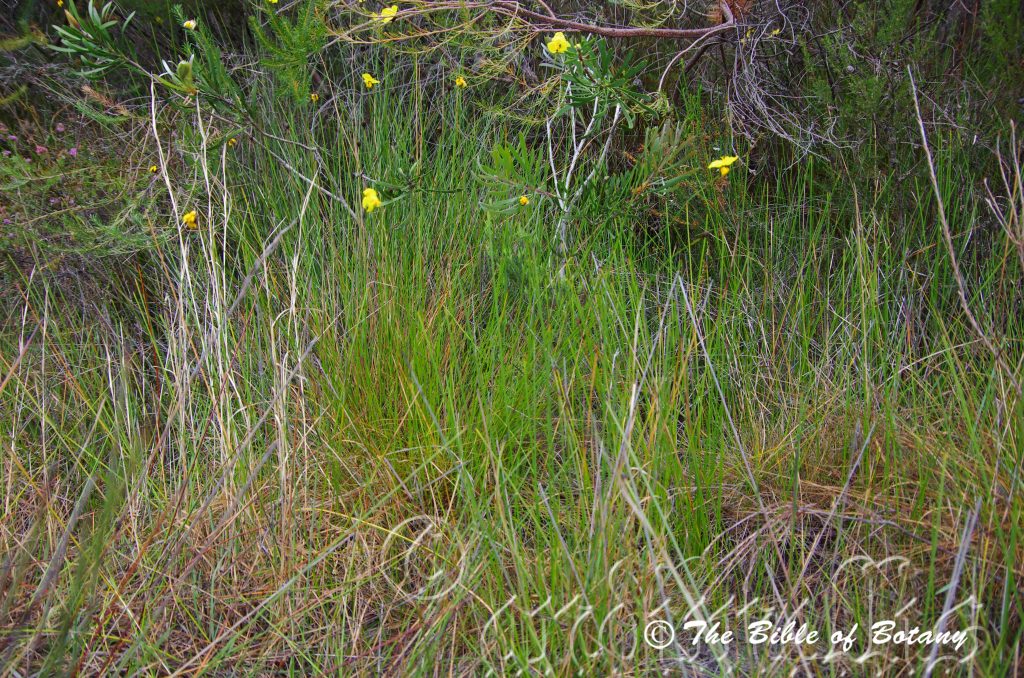
Author’s Garden The Pinnacles NSW
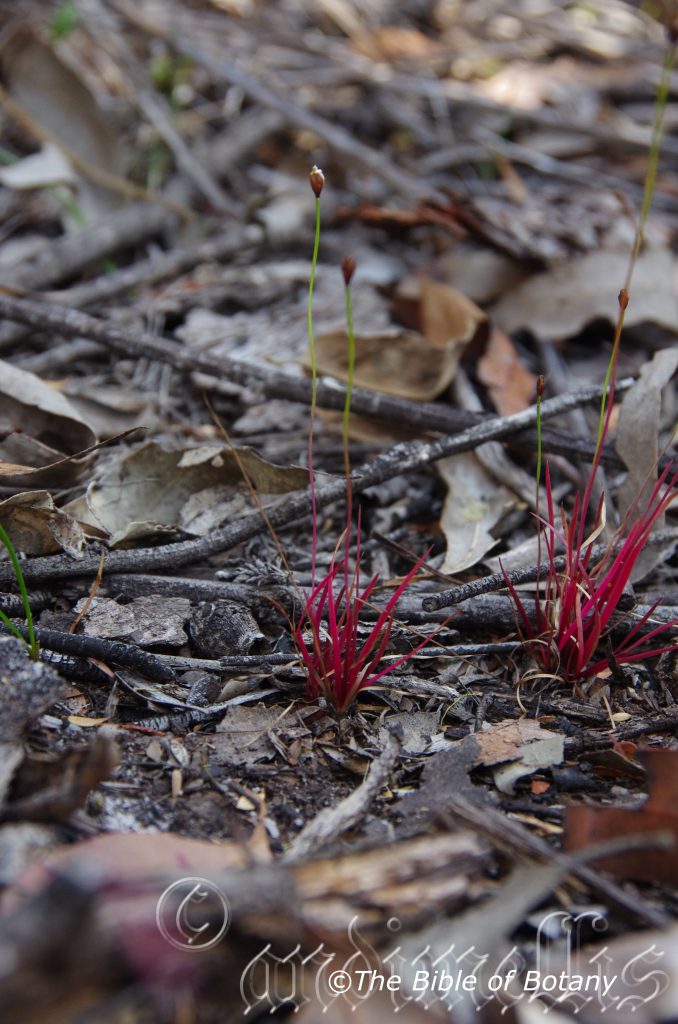
Author’s Garden The Pinnacles NSW
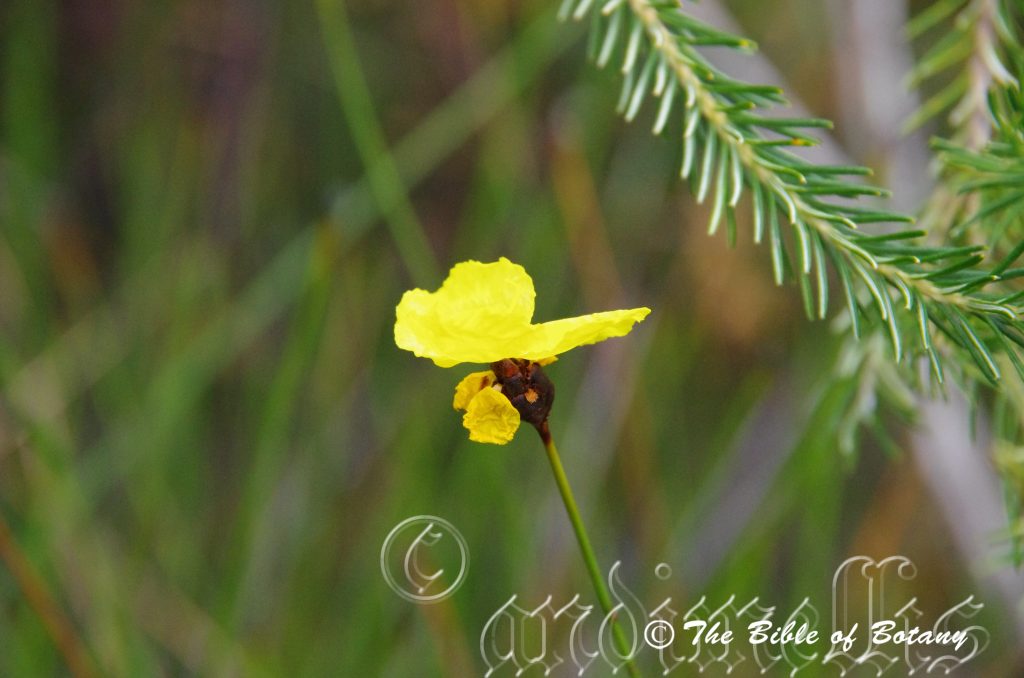
Lake Innes National Park NSW
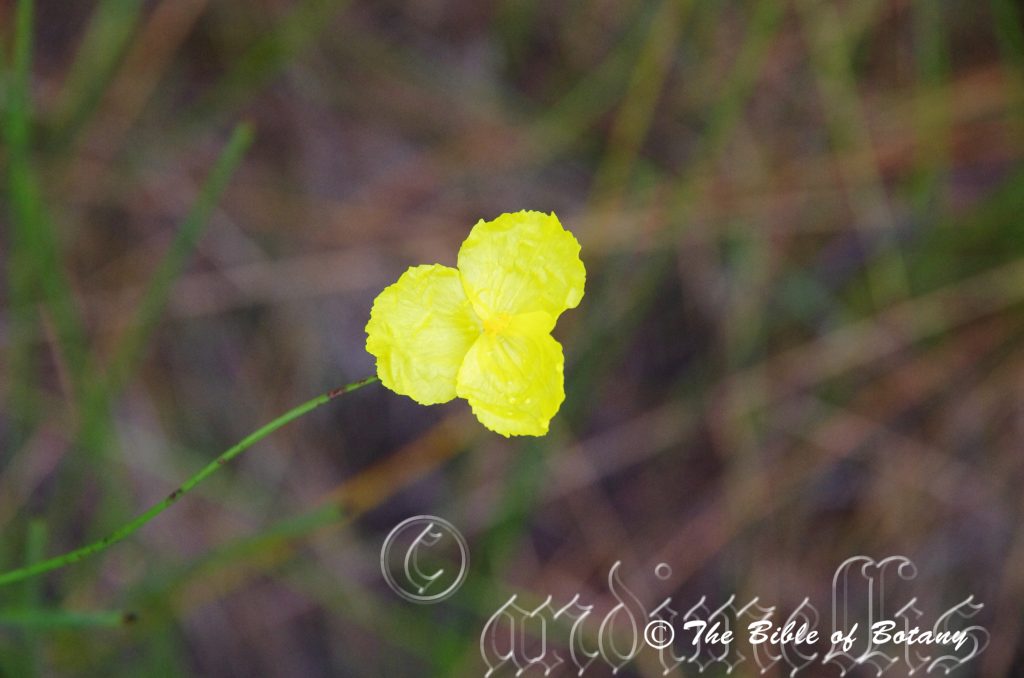
Lake Innes National Park NSW
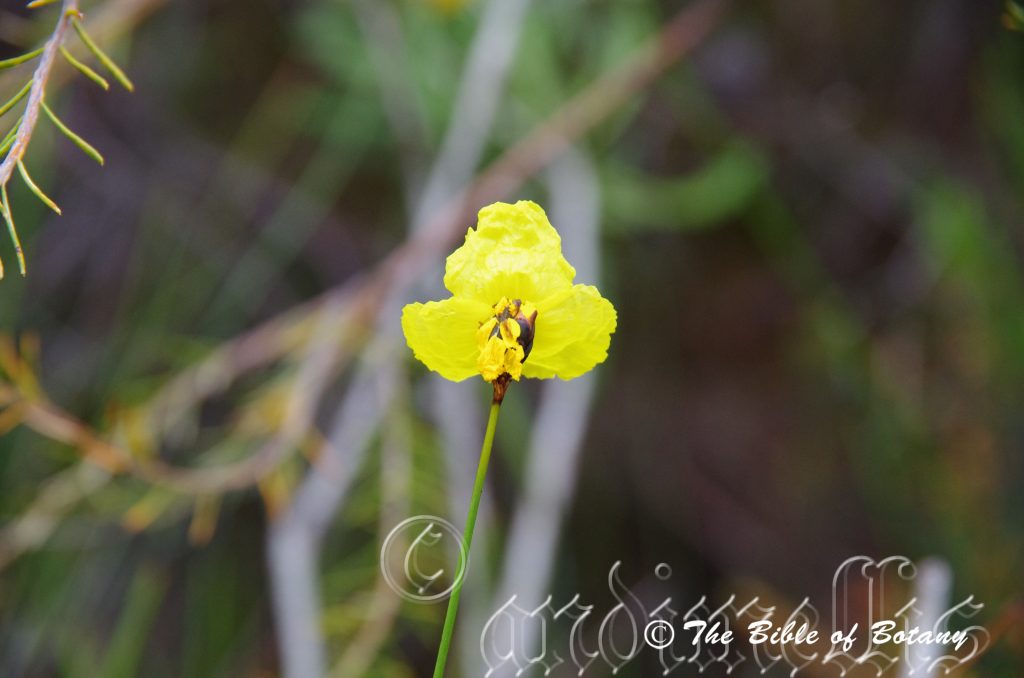
Lake Innes National Park NSW
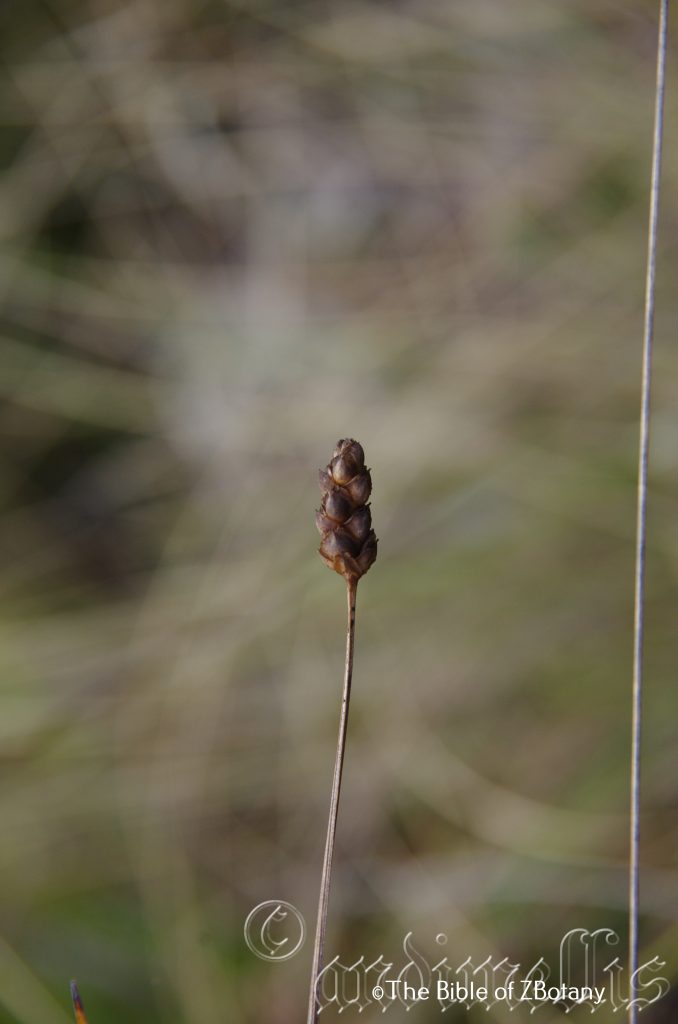
Lake Innes National Park NSW
Xyris juncea
Classification:
Unranked: Monocots
Unranked: Commelinids
Class: Equisetopsida
Order: Poales
Family: Xyridaceae
Genus: From Xurón, which is Ancient Greek for sharp edges (of a leaf) and later Xyris, which is Latin for an Iris and used by Dioscorides for Iris foetidissima. It refers to leaf margins, stems, spikes or bracts which have a stiff, narrow wing which resembles the edge on a razor blade.
Specie: From Juncus, which is Ancient Greek for a rush or Jingere, which is Latin for to tie or bind. It refers to plants, which thrive wet places with reed like foliage which was used for weaving and tie articles together.
Sub species:
Common Name: Dwarf Yellow Eye.
Distribution:
Xyris juncea is found around Darwin and Oenpelli in the Northern Territory.
In the east it is found south from near the Jardine River on Cape York Peninsula to the Maramingo Bog in eastern Victoria.
https://avh.ala.org.au/occurrences/search?taxa=Xyris+juncea#tab_mapView
Habitat Aspect Climate:
Xyris juncea prefer light dappled shade to full sun. It grows in moist to dry open woodland heaths. The altitude usually ranges from 5 meters ASL to 500 meters ASL except for the Sarah Creek population which is found at 1000 meters ASL.
The temperatures range from minus 3 degree in July to 38 degrees in January.
The rainfall ranges from lows of 900mm to an average of 1200mm annually.
Soil Requirements:
Xyris juncea prefer coarse sands, fine sands, or light fatty sandy loams. The soils are usually derived from decomposed sandstones granites or accumulated peaty beach sands. The soils pH ranges from 4.5pH to 6.5pH. It does not tolerate waterlogged soils. Non saline soils to moderately saline soils are tolerated.
Height & Spread:
Wild Plants: 0.1m to 0.2m by 0.2m to 0.3m.
Characteristics:
Xyris juncea grows as robust erect bushy perennial herb with few to many scapes. The basal sheath is dull pinkish-brown to brownish-pink and measures 10mm to 40mm in length.
The linear leaves of Xyris juncea measure 25mm to 300mm in length by 1mm to 1.5mm in width. The bases are clasping while the apexes are acute. The concolourous laminas are mid yellowish-green to deep grass-green and glabrous. The laminas are transversely wrinkled while the margins are entire, are often paler than the lamina and are at times covered in fine tuberculate lumps.
The inflorescences of Xyris juncea are born on scape from the basal leaf cluster. The subterete to terete scape is slightly measures 60mm to 450mm in length by 0.8mm to 1.5mm in width. The scape is glabrous or at times covered fine tuberculate lumps and or finely longitudinally ribbed. There are 5 to 10 individual flowers in the dense apical spike with one flower blooming at a time. The obovoidal spikes measures 5mm to 8mm in length by 4mm to 8mm in diameter.
The 3 bright yellow, trianbicular tepals are pedicellate. The pedicillate measures 0.8mm to 1.2mm in length. The margins are entire while the obtuse apex is finely lacerate. The tepals measure 6mm to 8mm in length by 6mm to 8mm in width.
The golden-yellow staminodes are bifid and measure 4mm to 5mm in length including the orange-yellow thick ciliate hairs. The 3 yellow filaments measure 1.8mm to 2.2mm in length while the yellow basifixed sagittate anthers measure 0.8mm to 1mm in length.
The yellow style measure 2.8mm to 3.3mm in length with 3 arms that measure 0.3mm to 0.4mm in length. The flowers appear from late November to mid-February.
The 3 bright yellow, triangular-orbicular tepals 2 side margins are entire while the apex is lacerate. The tepals measure 6mm to 8mm in length by 6mm to 8mm in width.
Xyris juncea’s fruits are enclosed capsules. The capsules measure 3.6mm to 4.6mm in length by 2.4mm to 3mm and 1.6mm to 2mm in thickness. The ovoidal seeds measure 0.4mm to 0.5mm in length by 0.15mm in diameter. There are 12 to 14 faint longitudinal ridges.
Wildlife:
Xyris juncea’s flowers are the food source of pollen and nectar to many different insects including pollen flies, native colony bees including Tetragonula carbonaria and pollen wasps.
Cultivation:
Xyris juncea is a magnificent l native perennial herb which is suitable for small gardens to the largest garden. Unfortunately Xyris juncea like most Xyris specie have not gained the popularity it deserves with gardeners. As a perennial it offers the gardener plenty of options when it comes to landscaping, colour and texture. In small areas around swimming pools, sunny court yard and rockeries it can aid in making the area look larger.
In native heath gardens it is best grown as an understory perennial. It is best mass planted in patches with other heath growing annuals like red or purple flowering Xerochrysum specie or Helipterum specie for brilliant colour and strongly contrast in foliage texture or Actinotis helianthi to really highlight the yellow and bright green erect strap like leaves.
It is an excellent colourful addition for warm temperate, sub-tropical or beach side gardens. The spent flowers should be removed immediately after flowering to encourage more flowering spikes. It is fast growing, drought tolerant once established and is cold tolerant to temperatures as low as minus 2 degrees. Drought conditions will seriously affect flowering.
It is particularly striking in moist heath scenes when mass planted or mixed in with other lilies to give formal displays particularly when arranged with the various pink and red or white coloured flowers. Xyris juncea would make an outstanding contribution to a dry heath garden as well. Here it can be used as the shorter growing planted in small clumps throughout the heath scene. When you design a flat heath garden which Xyris juncea is well suited don’t use contours to display the plants as heath lands are almost always flat or have a slight rise. Plants must be planted close together and be short so you can see over the tallest ones with the exception of one or two plants at the most. These will be feature plants. The idea is to achieve a feeling of expansive flatness. This can be achieved with using the Xyris juncea’s green foliage and striking yellow flowers to contrast with finer soft grey to glaucous coloured foliages. Use a lot of procumbent plants like Scaevola sp. and in particular Helipterum roseum. Mix it with other smaller shrubs so none of them dominate the scene but blend in to give a mosaic of foliage colours that you oversee.
Propagation:
Seeds: The seeds of Xyris juncea seeds be sown directly into a seed raising mix. Cover them with 5mm of fine sand and keep moist not wet. Place the tray in a warm sunny position.
When the seedlings are 20mm to 30mm tall, prick them out and plant them into their permanent position or 50mm native tubes. Give them a good watering with our recommended fertilizer on planting out.
Division: Division is an easy way to produce a few new plants cheaply and quickly. First select a healthy plant. Secondly it is best to divide plants just prior to the onset of new growth. Prior to removing the plant from the ground plants should be given a deep watering a few days before removal, then again about 2 hours before removing them from the ground. It is best to soak potted plants in water for a couple of hours prior to removing the plant from the pot.
Use a spade and cut down each side about 50mm to 100mm out from the base of the plant. Dig back on one side so that the spade can be wedged below the plant. Now lift the plant out trying not to damage the roots.
Wash the roots gently but thoroughly to remove most of the soil.
Divide the clumps so that there is a crown or tuff with roots and leaves on each division. This is best done using secateurs or a knife.
Remove any unwanted or dead roots.
Remove half the foliage leaving those leaves that surround the growing point.
Spread the remaining roots outwards and downwards to allow the plants the maximum room to develop new roots.
Water thoroughly but do not fertilize. Place the containers beneath 30mm shade cloth and keep moist. After a fortnight or after the signs of new roots or shoots fertilize with our recommended fertilizer and repeat after about a month.
Once the plants have re-established themselves plant out and fertilize as before.
Further Comments from Readers:
“Hi reader, it seems you use The Bible of Botany a lot. That’s great as we have great pleasure in bringing it to you! It’s a little awkward for us to ask, but our first aim is to purchase land approximately 1,600 hectares to link several parcels of N.P. into one at The Pinnacles NSW Australia, but we need your help. We’re not salespeople. We’re amateur botanists who have dedicated over 30 years to saving the environment in a practical way. We depend on donations to reach our goal. If you donate just $5, the price of your coffee this Sunday, We can help to keep the planet alive in a real way and continue to bring you regular updates and features on Australian plants all in one Botanical Bible. Any support is greatly appreciated. Thank you.”
In the spirit of reconciliation we acknowledge the Bundjalung, Gumbaynggirr and Yaegl and all aboriginal nations throughout Australia and their connections to land, sea and community. We pay our respect to their Elders past, present and future for the pleasures we have gained.
Xyris operculata
Classification:
Unranked: Monocots
Unranked: Commelinids
Class: Equisetopsida
Order: Poales
Family: Xyridaceae
Genus: From Xurón, which is Ancient Greek for sharp edges (of a leaf) and later Xyris, which is Latin for an Iris and used by Dioscorides for Iris foetidissima. It refers to leaf margins, stems, spikes or bracts which have a stiff, narrow wing which resembles the edge on a razor blade.
Specie: From Operculum, which is Latin for a cover or lid. It refers to the caps on the buds of certain trees, which cover the petals and sexual organs or the shape of a flower head resembling a cap.
Sub species:
Common Name: Tall yellow Eye.
Distribution:
Xyris operculata is restricted to a narrow band along the coast and on the Great Dividing Range south from near Gladstone in southern coastal Queensland to Kangaroo Island in Southern South Australia.
It is found on the Flinders Island group of Islands and circumnavigates Tasmania.
https://avh.ala.org.au/occurrences/search?taxa=Xyris+operculata#tab_mapView
Habitat Aspect Climate:
Xyris operculata prefers light dappled shade to full sun. It grows on the edges of wallums, marshes, swamps, riparian zones and wet shallow depressions. The altitude usually ranges from 5 meters ASL to 1480 meters ASL.
The temperatures range from minus 3 degree in July to 40 degrees in January.
The rainfall ranges from lows of 400mm to an average of 2100mm annually.
Soil Requirements:
Xyris operculata prefer coarse sands, fine sands, or light fatty sandy loams. The soils are usually derived from accumulated peaty beach sands. The soils pH ranges from 4.5pH to 6.5pH. It does not tolerate waterlogged soils. Non saline soils to moderately saline soils are tolerated.
Height & Spread:
Wild Plants: 0.6m to 0.85m by 0.3m to 1m when in flower.
Characteristics:
Xyris operculata’s grows as an erect herb with few to many scapes. The tightly appressed basal sheath is reddish to deep brown almost black and measures 50mm to 110mm in length.
The linear leaves of Xyris operculata measure 200mm to 800mm in length by 0.5mm to 1.2mm in width. The bases are clasping while the apexes are acute. The terete to subterete, concolourous laminas are mid green to deep grass-green, glabrous and semi glossy. The margins are entire.
The inflorescences of Xyris operculata are born on scape from the basal leaf cluster. The terete scape measures 600mm to 80mm in length by 1mm to 2mm in width. There are 7 to 10 individual flowers in the dense apical spike with one flower blooming at a time. The spike measures 9mm to 13mm in length by 6mm to 10mm in diameter.
The 3 bright yellow, trianbicular tepals are pedicellate. The pedicillate measures 2mm to 3mm in length. The margins are entire while the obtuse apex is finely lacerate. The tepals measure 12mm to 15mm in length by 14mm to 17mm in width.
The staminodes are bifid and measure 2mm to 2.5mm in length including the ciliate hairs. The yellow filaments measure 0.8mm to 1mm in length while the basifixed anthers are ovoidal and measure 0.7mm to 0.8mm in length.
The yellow style measure 4mm to 5.5mm in length with 3 arms that measure 1mm in length. The flowers appear from November to February.
Xyris operculata’s fruits are enclosed capsules. The capsules measure 3.6mm to 4.6mm in length by 2.4mm to 3mm and 1.6mm to 2mm in thickness. The apical cap does not split on the ripe fruit. The obloidal to ellipsoid seeds measure 1.2mm to 1.5mm in length. The seeds are finely tessellated in 12 longitudinal rows.
Wildlife:
Xyris operculata’s flowers are the food source of pollen and nectar to many different insects including pollen flies
Cultivation:
operculata is a beautiful small native annual or perennial herb which is suitable for small gardens to the largest garden. Unfortunately Xyris operculata has not gained the popularity it deserves with gardeners. As a perennial it offers the gardener plenty of opportunities to add colour and texture in small areas around swimming pools, sunny courtyard and rockeries. In native shrubberies and as understory perennials in the bush gardens it is best mass planted in patches with other annuals like the red or purple flowering Xerochrysum species or Helipterum species for brilliant colour or to really highlight the bright green strap like leaves and yellow flowers against the grey foliage and white flowers of Actinotis helianthi.
It is an excellent colourful addition for temperate, sub-tropical or beach side gardens. The spent flowers should be removed immediately after flowering to encourage more flowering spikes. It is fast growing, drought tolerant once established and is cold tolerant to temperatures as low as minus 2 degrees. Drought conditions will seriously affect flowering.
It is particularly striking in moist heath scenes when mass planted or mixed in with other lilies to give formal displays particularly when arranged with the various pink and red or white coloured flowers. Xyris operculata would make outstanding contribution to a dry heath garden as well. Here it can be used as the shorter growing planted in small clumps throughout the heath scene. When you design a flat heath garden which Xyris bracteata is well suited don’t use contours to display the plants as heath lands are almost always flat or have a slight rise. Plants must be planted close together and be short so you can see over the tallest ones with the exception of one or two plants at the most. These will be feature plants. The idea is to achieve a feeling of expansive flatness. This can be achieved with using the bright green foliage and striking yellow flowers to contrast with finer soft grey to glaucous coloured foliages. Use a lot of procumbent plants like Scaevola sp. and in particular Helipterum roseum. Mix it with other smaller shrubs so none of them dominate the scene but blend in to give a mosaic of foliage colours that you oversee.
Propagation:
Seeds: The seeds of Xyris operculata can be sown directly into a seed raising mix. Cover them with 5mm of fine sand and keep moist not wet. Place the tray in a warm sunny position.
When the seedlings are 20mm to 30mm tall, prick them out and plant them into their permanent position or 50mm native tubes. Give them a good watering with our recommended fertilizer on planting out.
Division: Division is an easy way to produce a few new plants cheaply and quickly. First select a healthy plant. Secondly it is best to divide plants just prior to the onset of new growth. Prior to removing the plant from the ground plants should be given a deep watering a few days before removal, then again about 2 hours before removing them from the ground. It is best to soak potted plants in water for a couple of hours prior to removing the plant from the pot.
Use a spade and cut down each side about 50mm to 100mm out from the base of the plant. Dig back on one side so that the spade can be wedged below the plant. Now lift the plant out trying not to damage the roots.
Wash the roots gently but thoroughly to remove most of the soil.
Divide the clumps so that there is a crown or tuff with roots and leaves on each division. This is best done using secateurs or a knife.
Remove any unwanted or dead roots.
Remove half the foliage leaving those leaves that surround the growing point.
Spread the remaining roots outwards and downwards to allow the plants the maximum room to develop new roots.
Water thoroughly but do not fertilize. Place the containers beneath 30mm shade cloth and keep moist. After a fortnight or after the signs of new roots or shoots fertilize with our recommended fertilizer and repeat after about a month.
Once the plants have re-established themselves plant out and fertilize as before.
Further Comments from Readers:
“Hi reader, it seems you use The Bible of Botany a lot. That’s great as we have great pleasure in bringing it to you! It’s a little awkward for us to ask, but our first aim is to purchase land approximately 1,600 hectares to link several parcels of N.P. into one at The Pinnacles NSW Australia, but we need your help. We’re not salespeople. We’re amateur botanists who have dedicated over 30 years to saving the environment in a practical way. We depend on donations to reach our goal. If you donate just $5, the price of your coffee this Sunday, We can help to keep the planet alive in a real way and continue to bring you regular updates and features on Australian plants all in one Botanical Bible. Any support is greatly appreciated. Thank you.”
In the spirit of reconciliation we acknowledge the Bundjalung, Gumbaynggirr and Yaegl and all aboriginal nations throughout Australia and their connections to land, sea and community. We pay our respect to their Elders past, present and future for the pleasures we have gained.